FEATURING 318 Industry-First Reviews of Fiction, Nonfiction, Children’s, and YA Books


BRING KEVIN KWAN ON YOUR SUMMER VACATION
The Crazy Rich Asians author headlines an issue devoted to the pleasures of summer reading
MAY 15, 2024 | VOL. XCII NO. 10

FROM THE EDITOR’S DESK

SUMMER READS, 2024 EDITION
WHAT MAKES FOR a great summer read? For many readers, it’s a novel set in a beach community that supplies plenty of vicarious sun, sand, and leisure— wherever you may find yourself reading it. Elin Hilderbrand long ago locked up the title “Queen of the Beach Reads” with her beloved Nantucket novels tracing the lives and loves of islanders; she says she’s ending the series this year with Swan Song (Little, Brown; June 11). In 2020, Emily Henry brazenly titled her first adult novel Beach Read and has since delivered Happy Place (hint: it’s a cottage in Maine) and People We Meet on Vacation (not just one getaway, but 10 and counting). These are unambiguous summer



reads, both in subject and in spirit.
For many of us, though, the beachy setting is optional: A summer read is simply one that delivers the kind of unalloyed pleasure we want while lolling on a hammock, a floaty, or a couch with the AC cranked up. That’s where I plan to devour Lies and Weddings (Doubleday, May 21), the latest novel by Kevin Kwan, who appears on the cover of this issue in an illustrated portrait by artist Reiko Lauper. Turn to page 12 to read Marion Winik’s interview with the author of the Crazy Rich Asians trilogy; his new book is the second in a planned trilogy (Sex and Vanity was the first). This novel still centers characters of Asian
Frequently Asked Questions: www.kirkusreviews.com/about/faq
Fully Booked Podcast: www.kirkusreviews.com/podcast/
Advertising Opportunities: www.kirkusreviews.com/book-marketing
Submission Guidelines: www.kirkusreviews.com/about/publisher-submission-guidelines
Subscriptions: www.kirkusreviews.com/magazine/subscription
Newsletters: www.kirkusreviews.com
For customer service or subscription questions, please call 1-800-316-9361
descent but finds inspiration in the plots of English classics such as E.M. Forster’s A Room With a View and Anthony Trollope’s Doctor Thorne. For a former English major like myself, the new book promises to be pure catnip. What else is on my summer reading list? Any book by cultural critic Olivia Laing is a must-read, and her latest, The Garden Against Time: In Search of a Common Paradise (Norton, June 25), may not be a beach read in the strictest sense, but at least it will transport me outdoors, from the 18th-century garden that the author restored at her home in Suffolk to the literary plots tended by poets John Milton and John Clare. It’s not all sunshine and roses; Laing also considers the exploitative effects of colonialism and capitalism in bol stering these Edenic sanctuaries, as often as not reserved for the upper class. In a starred review, our critic called it an
“intellectually verdant and emotionally rich narrative journey.”
The cover of Jo Hamya’s new novel, The Hypocrite (Pantheon, Aug. 13), certainly gives off beachy vibes (via the rocky coast of Sicily), but having read the author’s previous novel, Three Rooms , I know better than to expect escapist fluff. That brilliant book offered a trenchant view of millennial life, online and off, in Boris Johnson/ Brexit–era England; the new one probes generational and gender conflict through the story of Sophia, a young playwright who has written a spiky play about a Mediterranean vacation with her novelist father. Now he’ll finally see a production, and it’s doubtful he’ll be pleased with his portrayal. The novel is sure to be fascinating—another fine curtain raiser for this year’s summer reading season.

KIRKUS REVIEWS
BEER
Illustration by Eric Scott Anderson
TOM
OUR FRESH PICK

MAY 15, 2024 1 KIRKUS REVIEWS Contents Interested in reprints, permissions, licensing, or a framed review? Please contact The YGS Group at 800.290.5460 or email Kirkus@theygsgroup.com. KIRKUS REVIEWS (ISSN 1948-7428) is published semimonthly by Kirkus Media LLC, 2600 Via Fortuna, Suite 130, Austin, TX 78746. Subscription prices are: Print and digital subscription (U.S.) 3-month ($49), 12-month ($179) | International subscriptions are $79 quarterly and $229 annually. All other rates on request. Periodicals Postage Paid at Austin, TX 78710 and at additional mailing offices. PURCHASE BOOKS ONLINE AT KIRKUS.COM ON THE COVER: Kevin Kwan, illustration by Reiko Lauper, based on a photograph by Jessica Chou. Background by mrdoomits via iStock. One of the most coveted designations in the book industry, the Kirkus Star marks books of exceptional merit.
A young artist finds kinship in the life and art of eclectic early 1900s painter Florine Stettheimer. Read the review on p. 81. FICTION 4 Editor’s Note 5 Reviews & News 12 On the Cover: Kevin Kwan 34 Q&A: Kaliane Bradley 43 Booklist: Juicy Books for Toting to the Beach 29 On the Podcast: Julia Alvarez NONFICTION 44 Editor’s Note 45 Reviews & News 52 Q&A: Ronald Drabkin 69 Booklist: Nonfiction Books That Read Like Novels CHILDREN’S 80 Editor’s Note 81 Reviews & News 88 Q&A: Andrea Wang 97 Booklist: Picture Books To Give Kids the Giggles YOUNG ADULT 122 Editor’s Note 123 Reviews & News 128 Q&A: Shivaun Plozza 135 Booklist: MindExpanding,
Reads 141 On the Podcast: Darcie Little Badger INDIE 142 Editor’s Note 143 Reviews 161 Best Indie Books of May
GenreBending


Interactive Content

www.laevnotes.com
Paperback ISBN: 978-1-7343635-3-1
Kindle eBook ISBN: 978-1-7343635-4-8


“Rich personal and cultural history of a young woman in Berlin’s Belle Epoque.”
—Publishers Weekly/ BookLife Reviews

“A tender, personalitycentered biography of golden age Berlin.”
—Kirkus Reviews
“A wonderfully composed portrayal that could be considered narrative Art Nouveau.”
—BookTrib
Co-Chairman
HERBERT SIMON
Publisher & CEO
MEG LABORDE KUEHN mkuehn@kirkus.com
Chief Marketing Officer SARAH KALINA skalina@kirkus.com
Publisher Advertising & Promotions
RACHEL WEASE rwease@kirkus.com
Indie Advertising & Promotions
AMY BAIRD abaird@kirkus.com
Author Consultant RY PICKARD rpickard@kirkus.com
Lead Designer KY NOVAK knovak@kirkus.com
Kirkus Editorial Senior Production Editor ROBIN O’DELL rodell@kirkus.com
Kirkus Editorial Senior Production Editor
MARINNA CASTILLEJA mcastilleja@kirkus.com
Kirkus Editorial Production Editor ASHLEY LITTLE alittle@kirkus.com
Copy Editors
ELIZABETH J. ASBORNO BILL SIEVER
Magazine Compositor NIKKI RICHARDSON
Contributing Writers
GREGORY MCNAMEE MICHAEL SCHAUB
Co-Chairman
MARC WINKELMAN
Editor-in-Chief TOM BEER tbeer@kirkus.com
President of Kirkus Indie CHAYA SCHECHNER cschechner@kirkus.com
Nonfiction Editor ERIC LIEBETRAU eliebetrau@kirkus.com
Fiction Editor LAURIE MUCHNICK lmuchnick@kirkus.com
Young Readers’ Editor LAURA SIMEON lsimeon@kirkus.com
Young Readers’ Editor MAHNAZ DAR mdar@kirkus.com
Editor at Large MEGAN LABRISE mlabrise@kirkus.com
Senior Indie Editor
DAVID RAPP drapp@kirkus.com
Indie Editor ARTHUR SMITH asmith@kirkus.com
Editorial Assistant NINA PALATTELLA npalattella@kirkus.com
Indie Editorial Assistant
DAN NOLAN dnolan@kirkus.com
Indie Editorial Assistant SASHA CARNEY scarney@kirkus.com
Mysteries Editor
THOMAS LEITCH
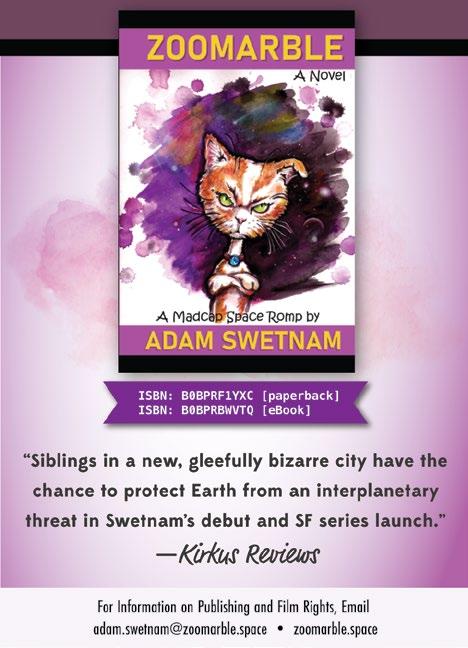
Contributors
Alana Abbott, Colleen Abel, Mahasin Aleem, Brian Alessandro, Paul Allen, Stephanie Anderson, Kent Armstrong, Mark Athitakis, Diego Báez, Audrey Barbakoff, Heather Berg, Amy Boaz, Jessie Bond, Melissa Brinn, Jessica Hoptay Brown, Cliff Burke, Timothy Capehart, Catherine Cardno, Tobias Carroll, Sandie Angulo Chen, Ann Childs, Alec B. Chunn, Amanda Chuong, K.W. Colyard, Rachael Conrad, Emma Corngold, Jeannie Coutant, Devon Crowe, Michael Deagler, Dave DeChristopher, Elise DeGuiseppi, Steve Donoghue, Anna Drake, Jacob Edwards, Tanya Enberg, Chelsea Ennen, Jennifer Evans, Joshua Farrington, Sara Fiore, Katie Flanagan, Mia Franz, Ayn Reyes Frazee, Jenna Friebel, Robbin Friedman, Roberto Friedman, Omar Gallaga, Laurel Gardner, Maura Gaven, Carol Goldman, Amy Goldschlager, Danielle Galván Gomez, Melinda Greenblatt, Christine Gross-Loh, Vicky Gudelot, Tobi Haberstroh, Geoff Hamilton, Sean Hammer, Silvia Lin Hanick, Alec Harvey, Lynne Heffley, Zoe Holland, Abigail Hsu, Julie Hubble, Ariana Hussain, Kathleen T. Isaacs, Darlene Ivy, Wesley Jacques, Danielle Jones, Jayashree Kamblé, Maya Kassutto, Colleen King, Katherine King, Lyneea Kmail, Andrea Kreidler, Megan Dowd Lambert, Chelsea Langford, Christopher Lassen, Tom Lavoie, Hanna Lee, Judith Leitch, Maya Lekach, Maureen Liebenson, Elsbeth Lindner, Coeur de Lion, Melissa Locker, Barbara London, Karen Long, Patricia Lothrop, Mikaela W. Luke, Wendy Lukehart, Joan Malewitz, Thomas Maluck, Collin Marchiando, Gabriela Martins, Matthew May, J. Alejandro Mazariegos, Breanna McDaniel, Dale McGarrigle, Sierra McKenzie, Zoe McLaughlin, Kathie Meizner, Carol Memmott, J. Elizabeth Mills, Rebecca Moore, Andrea Moran, Molly Muldoon, Jennifer Nabers, Mike Newirth, Randall Nichols, Therese Purcell Nielsen, Brandon Nolta, Sarah Norris, Katrina Nye, Erin O’Brien, Tori Ann Ogawa, Mike Oppenheim, Andrea Page, Derek Parker, John Edward Peters, Justin Pham, Jim Piechota, William E. Pike, Shira Pilarski, Margaret Quamme, Kristy Raffensberger, Kristen Rasmussen, Matt Rauscher, Amy B. Reyes, Nancy Thalia Reynolds, Jasmine Riel, Alyssa Rivera, Kelly Roberts, Amy Robinson, Lizzie Rogers, Gia Ruiz, Lloyd Sachs, Bob Sanchez, Caitlin Savage, Meredith Schorr, E.F. Schraeder, Hal Schrieve, Sadaf Siddique, Karyn N. Silverman, Linda Simon, Laurie Skinner, Wendy Smith, Margot E. Spangenberg, Allison Staley, Allie Stevens, Mathangi Subramanian, Jennifer Sweeney, Deborah D. Taylor, Paul Teed, Renee Ting, Lenora Todaro, Bijal Vachharajani, Jenna Varden, Katie Vermilyea, Christina Vortia, Francesca Vultaggio, Angela Wiley, Amelia Williams, Wilda Williams, Vanessa Willoughby, Kerry Winfrey, Marion Winik, Bean Yogi
MAY 15, 2024 3 KIRKUS REVIEWS

GOOD BOOKS FOR SUMMER DAYS (AND NIGHTS)
WHAT COULD BE better than a lazy summer day with nothing to do but read a great book? Here are eight recommendations for your literary pleasure.
Isabel and the Rogue by Liana De la Rosa (Berkley, June 4): In 1865, Isabel Luna is in England trying to drum up support for Mexico in its fight against the French invasion—and gather intelligence at balls and parties. Captain Sirius Dawson is doing secret work for the English home office. Their paths cross and fireworks


erupt. Our starred review says this book will delight fans of historical romance; if you’re not one already, this is a fine place to start.
Blue Ruin by Hari Kunzru (Knopf, May 14): Kunzru takes two old friends/rivals from art school in London, places them on an estate in upstate New York during the early days of Covid-19, and explores what our starred review calls “the complications of art, money, and identity.…A dark, smart, provocative tale of the perils of art making.”
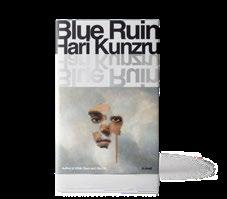



You Like It Darker by Stephen King (Scribner, May 21): Could it be that King’s short stories are even better than his novels? In these 12 tales, “King gives the reader a host of things to fear,” according to our starred review. “Deadly snakes, ghoulish ghosts of longdead children, man-eating alligators, stealthy serial killers, plummeting airplanes, mad scientists.” You’ll need a bright sunny day to read this one.
The Stardust Grail by Yume Kitasei (Flatiron, June 11): Maya Hoshimoto, a reformed interplanetary thief, has settled down in Princeton until she discovers a notebook that could help her save the nodes connecting Earth to other planets. “This is a luminous work, vacillating between the highs and lows of human experience,” according to our starred review. “Wondrous, new, and altogether alien.”
The Memo by Rachel Dodes and Lauren Mechling (Harper Perennial, June 18): Have you ever thought you were the only one who didn’t get the memo? This razorsharp novel—in which a 35-year-old woman gets a do-over, with instructions— will have you thanking your lucky stars.
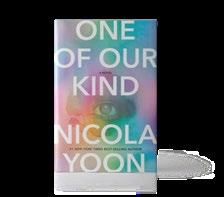
Lies and Weddings by Kevin Kwan (Doubleday,
May 21): This time around, the author of Crazy Rich Asians combines impoverished English aristocrats, a Scandinavian royal wedding, a volcano, and true love that never did run smooth. “Still more brilliant escapism,” according to our starred review.
Sandwich by Catherine Newman (Harper, June 18): Sandwich describes a town in Cape Cod, the lunches Rocky makes every day during her family’s beach vacation, and the way she feels smushed (in a mostly good way) between her parents and new-adult kids. Expect lots of sun and sand in this “moving, hilarious reminder that parenthood, just like life, means constant change,” as our reviewer observes.
One of Our Kind by Nicola Yoon (Knopf, June 11): Yoon’s first novel for adults is a doozy: When Jasmyn Williams moves with her family to a community for affluent Black people near L.A., she discovers that something strange is going on. It’s a trope that runs from Rosemary’s Baby to The Stepford Wives to Get Out, and Yoon puts her own stamp on it in what our starred review calls “an artful page-turning thriller.”
Laurie Muchnick is the fiction editor.
LAURIE MUCHNICK
Illustration by Eric Scott Anderson
KIRKUS REVIEWS 4 MAY 15, 2024
EDITOR’S PICK
Many years after her older brother, Bear, went missing, Barbara Van Laar vanishes from the same sleepaway camp he did, leading to dark, bitter truths about her wealthy family.
One morning in 1975 at Camp Emerson—an Adirondacks summer camp owned by her family—it’s discovered that 13-year-old Barbara isn’t in her bed. A problem case whose unhappily married parents disdain her goth appearance and “stormy” temperament, Barbara is secretly known by one bunkmate to have slipped out every night after bedtime. But no one has a clue where’s she permanently disappeared to, firing speculation that she was taken by a local serial killer known as Slitter. As
Jacob Sluiter, he was convicted of 11 murders in the 1960s and recently broke out of prison. He’s the one, people say, who should have been prosecuted for Bear’s abduction, not a gardener who was framed. Leave it to the young and unproven assistant investigator, Judy Luptack, to press forward in uncovering the truth, unswayed by her bullying father and male colleagues who question whether women are “cut out for this work.” An unsavory group portrait of the Van Laars emerges in which the children’s father cruelly abuses their submissive mother, who is so traumatized by the loss of Bear—and the possible role she played in it—that she has no love left for her
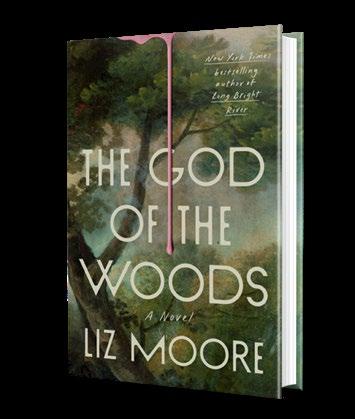
The God of the Woods Moore, Liz | Riverhead | 496 pp. $30.00 | July 2, 2024 | 9780593418918
daughter. Picking up on the themes of families in search of themselves she explored in Long Bright River (2020), Moore draws sympathy to characters who have been subjected to spousal, parental, psychological, and physical abuse. As rich in background detail and secondary mysteries as it is, this
ever-expansive, intricate, emotionally engaging novel never seems overplotted. Every piece falls skillfully into place and every character, major and minor, leaves an imprint. “Don’t go into the woods” takes on unsettling new meaning in Moore’s blend of domestic drama and crime novel.
These Titles Earned the Kirkus Star
6 Trust Her By Flynn Berry 6 The Glassmaker By Tracy Chevalier 8 Hey, Zoey By Sarah Crossan 9 The Memo By Rachel Dodes & Lauren Mechling 9 Pitch Dark By Paul Doiron 10 What Fire Brings By Rachel Howzell Hall 15 Shanghai By Joseph Kanon 16 Joe Hustle By Richard Lange 16 Once More From the Top By Emily Layden 17 The Final Act of Juliette Willoughby By Ellery Lloyd 17 How the Light Gets In By Joyce Maynard 18 Someone Like Us By Dinaw Mengestu 5 The God of the Woods By Liz Moore 24 Hombrecito By Santiago Jose Sanchez 26 State of Paradise By Laura van den Berg 27 Concerning the Future of Souls By Joy Williams 32 Death in the Air By Ram Murali 39 The Wings Upon Her Back By Samantha Mills 39 Mirrored Heavens By Rebecca Roanhorse 40 Wake Me Most Wickedly By Felicia Grossman MAY 15, 2024 5 KIRKUS REVIEWS FICTION
Kirkus Star
Trust Her
Berry, Flynn | Viking (304 pp.) | $30.00 June 25, 2024 | 9780593490327

Three years after the events of Northern Spy (2021), former MI5 informants Tessa and Marian Daly learn that you can never really walk away from the IRA.
In the years since she and sister Marian barely escaped Northern Ireland with their lives, Tessa has settled into the exhausting, beautiful routine of motherhood. Finn, at 4, is capricious and loving and curious, and while she misses him when he’s with his father, Tessa values the mundane stability of their lives. Of course, if she double locks her doors at night, who can blame her? Even with a new identity and a new home in Dublin, Tessa knows the IRA never forgets a betrayal. When her car is rear-ended and she’s confronted by an acquaintance from her childhood, it feels like an inevitable nightmare. Eoin Royce, recently released from prison, wants Tessa to help him turn her former MI5 handler. Soon, Tessa is back to walking the tightrope with new mom Marian’s help as she feeds choice bits of information to Royce and other bits to her MI5 handler, Eamonn. She will learn about deeply buried family secrets as she fights an intense attraction to Eamonn—even as she lies to him to keep herself, and her child, safe. Berry once again provides an engaging character in Tessa, who is fierce, desperate, and clever. In a lot of ways, though, this is Marian’s fight, and Tessa, while willing to do whatever she can to protect her sister, ends up being more reactive than in control. The author continues to interrogate the lasting, and live, impact of centuries of colonialism and violence on contemporary lives. For readers who don’t live with this constant fear, it’s a reminder that old
History flows like molten glass in this stunning novel that borders on fantasy.
THE GLASSMAKER
wounds in a country bleed long and deep. A meditation on generational trauma—along with well-scripted action and suspense.
The Novices of Lerna
Bonomini, Ángel | Trans. by Jordan Landsman Transit Books (160 pp.) | $17.95 paper May 7, 2024 | 9781945492853
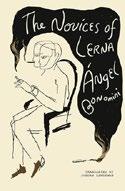
These surreal stories reckon with identity, perception, and existence. Born in Buenos Aires in 1929, Bonomini—a contemporary of Adolfo Bioy Casares, Silvina Ocampo, and Jorge Luis Borges—has never been translated into English before. Much like his peers, Bonomini reckoned with both grand philosophical questions and the foibles of individual behavior. The title novella, which takes up much of this volume, focuses on an academic summoned to a strange institute of higher learning where all his fellow scholars—though hailing from different nations—look exactly alike. The men are given a series of rules that seem designed to further eradicate their individual identities, and by the time an epidemic begins thinning their ranks, it’s not clear if it’s an ironic coincidence or part of some plan. In the stories that follow, there’s a similar ambiguity, sometimes elevated to a metafictional level. After “The Model” appears to end, the story’s narrator chimes in to tell readers, “I have only been truthful about one thing.” The identities of
characters in “The Bengal Tiger,” which opens with a series of potentially unrelated sentences about a woman and a tiger, blur as the story continues, eventually transforming the narrative into a dreamlike triangle in which a man, a woman, and a tiger alternate roles of love, death, and betrayal. In “Aromatic Herbs,” the narrator moves the story in and out of dreams, including one that ends with his own death. These tales are often heady, abounding with unlikely revelations and sudden moments of violence. Their arrival in English, translated by Landsman, is a welcome development.
A beguiling blend of the cerebral and the visceral.
Kirkus Star
The Glassmaker
Chevalier, Tracy | Viking (416 pp.) $32.00 | June 18, 2024 | 9780525558279
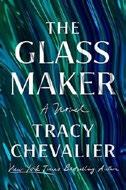
“Time passes differently” in this centuries-spanning story set on the Island of Glass. This impressive novel about family, art, and tradition takes place on Murano, just off the coast of Venice, Italy, where generations of artisans have created beautiful glassware. Chevalier centers this engaging story on Orsola Rosso, who, as the novel opens in 1486, watches with envy as the men in her family turn molten glass into goblets, platters, and bowls using techniques passed from father to son. Tradition can’t stop Orsola, who learns how to
KIRKUS REVIEWS 6 MAY 15, 2024 FICTION
make glass beads that can be used to create exquisite jewelry. The money Orsola earns from her creations will save her family many times over the course of the novel as the world changes and Murano’s fortunes rise and fall. Chevalier cleverly warps the time continuum on Murano—decades can pass, but the people age only a few years. She situates us in the real world, though, where—like swirls of color that appear to flow through translucent glass—history moves forward from the Italian Renaissance through plagues, the Napoleonic era, and world wars up to the 21st century and Covid-19. Time barely ages the Muranese, but their lives are impacted by the outer world’s changes and upheavals. Between fascinating descriptions of artisans at work and the glassware they create, Chevalier embeds a love story that transcends time as Orsola, across 500 years, holds on to the love she carries for a man she knew in her youth. With colorful narrative and dialogue, Chevalier—author of Girl With a Pearl Earring (1999)—lets time roll forward through independent women who are determined to shape glass into works of art and frame life paths of their own design. History flows like molten glass in this stunning novel that borders on fantasy.
Real Life and Other Fictions
Coll, Susan | Harper Muse (352 pp.) | $17.99 paper May 21, 2024 | 9781400234141
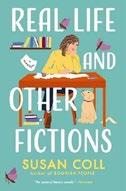
A writing professor haunted by mysteries in her past—and by moths, bridges, unfinished student stories, and her husband’s lover’s nightguard—returns to the scene of her parents’ deaths. This book, which centers on uncanny coincidences and a fatal bridge collapse, enters the world in the immediate wake of the collapse of Baltimore’s Francis Scott Key Bridge, adding a poignant
depth charge to the sophisticated dark comedy this author is known for. Coll, who successfully mined her career as a bookstore events planner in Bookish People (2022), now gives us Cassie Klein, an endearing woman who teaches fiction at a community college and finds herself losing sleep over the predicaments never resolved in student work: “Sometimes I wonder if I am anyone at all, or just a composite of the people I know and the stories I’ve read.” But Cassie is also carrying around a few stories of her own: the very public mistakes of her Richard Gere–lookalike weatherman husband, whose relationship with their supposed family friend is revealed when the woman’s dental apparatus shows up on Cassie’s nightstand, and the enigma of her parents’ deaths in a (real) 1967 West Virginia bridge collapse when she was just 2, the same one that inspired the 2002 movie The Mothman Prophecies, starring Richard Gere as a weatherman. As the book opens, a few days before Christmas, Cassie is heading over the Chesapeake Bay Bridge to spend the holiday Jewish style (i.e., eating Chinese food) with the aunt and uncle who raised her, the former a beloved NPR personality. A moth in her car causes some problems on the way, and then, as usual, her aunt and uncle won’t answer a single question about what happened to her parents. But this time, Cassie tears out in her ancient Audi for West Virginia, where she will find everything she’s looking for, and then some. Coll’s deadpan narrative voice, once it hits you, is like when a stand-up comic finds your funny bone and you just can’t stop laughing. And yet the laughter never fails to somehow encompass the obduracy of loss and other woes of this mortal coil.
A kooky treasure, rooted in the deeply literary, slightly askew interior world that makes this author’s work so fine.

Broiler
Cranor, Eli | Soho Crime (336 pp.)
$27.95 | July 2, 2024 | 9781641295901
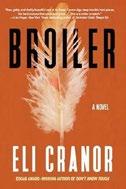
A kidnapping throws the lives of several people attached to an Arkansas chicken-rendering plant wildly out of control, even as it echoes the brutalizing rhythms of their ordinary lives.
For more by Susan Coll, visit Kirkus online.
Ever since her parents brought her into the country from Mexico, Gabriela Menchaca’s never had it easy. Her job as a chicken plucker at Detmer Foods is physically grueling and emotionally draining. She and her partner, Edwin Saucedo, are three months behind in their trailer-park rent. The two of them have worked so many overtime shifts that Detmer Foods now owes them $50,000 Gabby never expects to see. And her inability to take bathroom breaks at work forced her to deprive herself of the water that would have kept her pregnancy years ago from turning tragic. When Edwin arrives two minutes late for work one morning and is summarily fired by Luke Jackson, he seizes Tucker, the plant manager’s 6-month-old baby, and flees, demanding a ransom of $50,000 for his return. Jackson doesn’t go to the police because he’s afraid to jeopardize his imminent promotion to executive officer of poultry. But he does rise far enough above his belief that “secrets were the secret to a happy marriage” to tell his wife, Mimi, that he’s convinced that the man he just fired is behind the abduction and that he’s taken an appropriate revenge. Although the mounting complications eventually stall, leaving all the leading characters flailing dangerously about, one dominant pattern emerges: Mimi, who’s just discovered her husband’s infidelity, perversely bonds with Gabby as the two women struggle to reckon with the ways they’ve been victimized by the men they love.
The string of felonies can’t compete with the chicken-plucking background for intensity and horror.
MAY 15, 2024 7 KIRKUS REVIEWS FICTION
Kirkus Star
Hey, Zoey
Crossan, Sarah | Little, Brown (320 pp.) $29.00 | June 25, 2024 | 9780316428606

When London schoolteacher
Dolores O’Shea finds her husband’s sex doll in the garage, a neatly organized life begins to crumble. It takes a long time to realize this book is not really a comedy, because Crossan is a wonderfully funny writer. In the narrator’s first interaction with Tessa Winters, a troubled student whose problems escalate throughout the novel, we learn that Tessa’s cousin Neil, now in prison, buried his girlfriend alive in a big suitcase, but forgot to take off her Apple watch—so she called her mom from the grave. A few pages later, a childhood recollection: Dolores (nicknamed Doughy and, even more worrisomely, Dolly) and her sister, Jacinta, fought so hard over a doll that they pulled her head off, then played separately with the two parts until their mother reattached the head, saying, “You can forget about a hamster.” And while Zoey the sex doll does provide plenty of absurd humor—Crossan has imagined her AI responses so brilliantly it hurts—she plays a much more profound role in what is ultimately a moving, troubling, even heartbreaking book. After Dolores confronts her anesthesiologist (of course he is!) husband about the doll, and he responds by packing up and moving out without a word, Zoey becomes Dolores’ best friend. She buys her fancy size 4 espadrilles, gives her magazines to read and vegan cooking shows to watch, and struggles to leave her behind when she goes to visit her troubled sister in New York. Every part of this book is brilliantly constructed to reflect a different aspect of the central problem, which is numbness, and also something that happened in the girls’ childhood that takes the
whole novel to emerge. Crossan is well known both here and across the Atlantic as a YA writer, and her second adult novel firmly places her in a group with Sally Rooney, Caroline O’Donoghue, Doireann Ní Ghríofa, and Eimear McBride, millennial Irish women writers we love. Extremely easy to read and equally hard to forget.
Burning Sky
Darnton, John | Arcade (408 pp.)
$26.99 | May 14, 2024 | 9781648210242

A speculative thriller about the effects of global warming. Terrestrial temperatures will soon reach the point of no return, and authorities come up with a cockamamie scheme: Populate the stratosphere with sulfur particles to filter out much of the sunlight and cool things off. It’s called the Cocoon and covers the Northern Hemisphere, which is all the powers that be care about. The result is an utter societal and ecological disaster beginning with the Great Cull in 2039, with rising oceans and the deaths of millions of people and countless trees and animals. Social media collapses. No one can see the sun, the moon and stars, or the sky. And if that isn’t crazy enough, authorities ban the color blue so people will forget what they’re missing. A Color Guard tries to kill all birds with blue feathers and universally prohibits the display of Color X, as the 470-nanometer wavelength is officially called. Even the American flag is forbidden. The leader of this police state is a man named Messian, an obvious hint at “messianic”. Meanwhile, a young man named Yon travels to South America and learns, among other things, that shadows exist. The story spans decades as people try to figure out how to deal with the hot mess they’ve made of the world, and then they make it worse. The Cocoon “was supposed to save everything,” but clearly it’s one big screw-up. Now people
wonder, “What was it like before they stole the sky?” Some plot elements seem straight out of a thriller writer’s handbook: a scientist’s suspicious death down an icy moulin, requisite bad guys, a Resistance with an unexpected connection to the Power. It’s a justifiably bleak novel and a rather preachy one: Stop polluting now, folks, or this is what you could be in for. And there’s an attempted execution by hanging that— gotta say it —is quite a stretch. The ideas of launching sulfur-laden rockets to Save Us All and of banning blue seem implausible, but they are entertaining. Meanwhile, the question remains: What will we do when Earth heats beyond its tipping point?
An enjoyable novel that should spark important discussion.
A Daughter of Fair Verona
Dodd, Christina | John Scognamiglio Books/Kensington (304 pp.) | $27.00 June 25, 2024 | 9781496750167
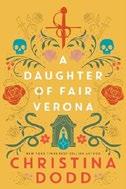
Dodd’s series launch turns a Shakespearean tragedy into a rom-com mystery.
“My name is Rosie, Rosaline if I’m in trouble, and I’m the daughter of Romeo and Juliet.” In Dodd’s entertaining retelling of Shakespeare’s play, the tragic lovers survived their suicide attempts to marry and produce seven spirited children, headed by practical, level-headed Rosie. Despite the best efforts of her parents to marry off their eldest daughter, the clever Rosie has successfully fended off her potential suitors with a little matchmaking involving two younger sisters. Now almost 20, she’s content to remain a spinster and manage the Montague household, but alas her father receives a proposal he cannot turn down from the loathsome Duke Leir Stephano of the house of Creppa. Despite Rosie’s objections that the duke just buried his third wife, a betrothal ball is quickly organized.
KIRKUS REVIEWS 8 MAY 15, 2024 FICTION
Extremely easy to read and equally hard to forget.
HEY, ZOEY
There the reluctant bride-to-be meet-cutes with an uninvited guest, the dazzlingly handsome Lysander, and stumbles upon the body of Duke Stephano with a dagger plunged into his chest. Suspicion falls on Rosie, even though Escalus, the brooding Prince of Verona, tries to protect her, and she must identify the killer before she becomes a victim. Dodd peppers her novel with plenty of Shakespearean references, making this more fan fiction than a true historical. The deliberate anachronisms (“I smiled a Mona Lisa smile”) will drive purists crazy, but most readers won’t care. Dodd’s Verona is a mythical, timeless city where a spunky, independent young woman can enchant two different men. There is some YA appeal in Rosie’s character that will remind some readers of Karen Cushman’s Catherine, Called Birdy, but one of the protagonists takes an unbelievable 180-degree dark turn that will disappoint readers.
An open-ended conclusion leaves the door ajar for more mystery and romance.
Kirkus Star
The Memo
Dodes, Rachel & Lauren Mechling
Harper Perennial/HarperCollins (336 pp.) $17.99 paper | June 18, 2024 | 9780063319356
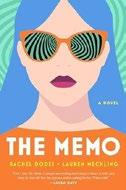
What if “the memo” wasn’t a metaphor, and you really didn’t get it?
At 35, Jenny Green is happy-ish. She lives in Pittsburgh— not exactly the center of the universe—with Hal, an
unambitious but super-hot guy she met nine years ago on a beach in Costa Rica. She works for a philanthropy that supports girls and women, which sounds good on paper, but it’s really a vanity project for a wealthy nightmare of a woman who only wants Jenny to get her coverage in the national media. Oh, and it turns out Hal is having an affair. Jenny has no desire to go to her 15-year college reunion, but she skipped the last one and her (more successful) friends are persistent. What she doesn’t expect, once on campus, is to run into Desiree LeBlanc, the pushy career counselor whose advice she spurned just before graduation—and who’s now offering her another chance. It turns out Desiree had been planning to give her the Memo—the “actual, tangible, Upper-Case-Letter thing”—and the fact that Jenny has spent her life floundering can be attributed to her having walked away. But Jenny isn’t just going to be following the Memo’s advice going forward; Desiree and her Consortium have discovered a way to send her back to crucial moments in the past with explicit instructions on what she should be doing to turn herself into a self-actualized superwoman. What could go wrong? Dodes and Mechling have come up with a great concept—the elevator pitch writes itself!—and filled it with insight, wit, and perfectly chosen details of life among a segment of the population that might once have looked at Sheryl Sandberg’s Lean In as a guide. They explore issues of love, work, friendship, ambition, and fulfillment that feel timeless yet particularly pertinent in the social media era, when it’s so hard to see past the surface of other people’s high-powered facades. So sharp, so funny. You might feel better or worse about your own life, but you’ll definitely be laughing.
Kirkus Star
Pitch Dark
Doiron, Paul | Minotaur (304 pp.)
$29.00 | June 25, 2024 | 9781250864420

While he waits to learn whether he’s about to become a father, Maine Warden Service investigator Mike Bowditch goes on the hunt for another fatherchild pair who aren’t exactly role models.
Somebody calling himself Hammond Pratt has been nosing around the Seboomook Farm hunting lodge asking questions about Mark Redmond, a builder from Alaska, before vanishing, presumably on the trail of Redmond and Cady, his 12-year-old daughter. Since Redmond’s latest client is bush pilot Josie Jonson, the unofficial godmother of Mike’s maybe-pregnant wife, Stacey, Mike thinks it would be a good idea if he followed Pratt’s trail himself. And he’s right, but not for the reasons he thinks. Redmond, when Mike catches up with him, has little patience for his warnings, his questions, or his expressions of concern, and Cady, whose arms show signs of self-harm, is beyond Mike’s power to reach. After a startlingly unexpected reversal of fortune, Mike heads off alone and unarmed into Maine’s North Woods hoping to catch Redmond and Cady, or maybe Pratt, before they cross the border to Quebec. Along the way, he’ll deal with the usual daunting natural obstacles, cross paths with several other people who are no more sure than he is whether they’re his friends or foes, almost lose track of the rising body count, and commit so many crimes himself, from illegal border crossing to bringing guns (after he’s managed to arm himself again) into Canada, that he wearily tells the cops who take him in after a bloody final showdown: “Just arrest me already.”
A perfect beach read that will make you hug yourself in pleasure and excitement and search for a little more warmth.
MAY 15, 2024 9 KIRKUS REVIEWS FICTION
Mouth
Ghosh, Puloma | Astra House (224 pp.)
$26.00 | June 11, 2024 | 9781662602474
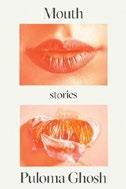
The mundane and the extraordinary mesh into new and fascinating shapes in this debut story collection. Ghosh mixes ordinary events with fantastical and ominous realities. In “Desiccation,” a young figure skater has a flirtation with a vampire on the rink while her mother struggles with her job in a government that disappears young men who reach a certain age. A woman decides to get back on dating apps now that the time war has ended and winds up going through a tear in space and time on a first date in “Anomaly.” Life in Ghosh’s stories runs the gamut from odd but close to normal, as in “Natalya,” which takes the form of an autopsy report performed by the dead woman’s ex-partner, to the fantastical, as in “Persimmons,” in which a young girl comes to terms with her fate as the future sacrifice of her small community of space colonists. Each story is tinged with queer themes, most of the protagonists either lesbian or bisexual, and many feature the protagonists’ Indian heritage, as in “The Fig Tree,” in which a woman travels to India with her father to spread her mother’s ashes. Ghosh’s tales push at the limits of comfort, as what seems understandable suddenly morphs into the bizarre. There’s a sensuality to them all that usually works though sometimes feels added simply for the sake of it. As they run the gamut from slightly strange to almost metaphysical, not all the stories will necessarily connect with readers, but when one hits, it will linger. Ghosh shows incredible range, imagination, and depth of feeling with this first collection. A unique set of stories that show the promise of a bold new voice.
The Summer Pact
Giffin, Emily | Ballantine (352 pp.)
$27.00 | July 9, 2024 | 9780593600290

The suicide of a friend creates a lifelong bond among three college classmates.
The latest from the author of Something Borrowed opens at the University of Virginia, where four freshmen are about to find the connection that will sustain them through the next four years. They are Lainey, an aspiring actor from California; Tyson, a Black man with law in his future; Summer, a star scholar and varsity athlete; and Hannah, whose conservative Southern mother is going to be very disappointed that she’d rather hang with these three than pledge a sorority. Shortly before their graduation, the unthinkable happens: For reasons no one will ever fully understand, Summer takes her own life. This leads to the eponymous pact: The trio of survivors agree never to take “drastic steps” before reaching out. They are in their early 30s when the first reach-out occurs: Hannah has walked in on her fiance screwing the local Instagram influencer in the bed she just bought for their future marital home. Lainey, now a Hollywood actor on her way up, drops everything and jets in from California to extricate Hannah and exact revenge. Tyson shows up, too, though he has to quit his job and ditch his girlfriend to get there. Once that mess is cleaned up, the three leave on a fantasy getaway on which each gets to pick a stop. The rest of the story unfolds mostly on Capri, always a desirable setting in fiction, where our protagonists hit places like “that beach club [from]
TikTok,” La Fontelina. (Do Google it.) Though shocking life changes befall each member of the trio during their Italian sojourn, none are much of a surprise to the reader, who will likely notice the exact moment each plot twist became inevitable. Be quiet and drink your Aperol Spritz.
The time-honored post-breakup trip—“Eat, Shop, Party”—has life-changing results you needn’t believe to enjoy.
Kirkus Star
What Fire Brings
Hall, Rachel Howzell | Thomas & Mercer (384 pp.) | $28.99
June 11, 2024 | 9781662504174

A novice Los Angeles investigator searches for a missing woman. Bailey Meadows is not her real name. But the false identity and backstory created by her mentor, Avery Turner, win her an invitation to live as writer-in-residence at the palatial Topanga Canyon estate of Jack Beckham—the son of famously unpleasant and successful author J.D. Beckham—while she helps him write a thriller. Shortly before, Avery’s partner, Sam Morris, who’d recently suffered some weird fugue episodes, vanished in Topanga Canyon while searching for a missing woman on behalf of their nonprofit organization, The Way Home, and Avery will spare no effort to find her—including getting Bailey inserted into the Beckham home. Jack, meanwhile, is upfront about using
A unique set of stories that show the promise of a bold new voice. MOUTH
KIRKUS REVIEWS 10 MAY 15, 2024 FICTION
Bailey’s perspective as a Black woman to give his book a slant no white man could achieve. The lack of steady Wi-Fi becomes a problem as Bailey strains to do her research for the book and keep Avery informed about her search for Sam. The security guard who helped her find Jack’s estate seems to be watching her, an old woman sneaks in from the woods, and there’s constant danger from wildfires. All this feeds Bailey’s paranoia about a job she feels ill-equipped to handle. So does the time Jack spends familiarizing her with the area where a serial killer’s lurked for many years and revealing that both his mother and wife disappeared without a trace. As evidence piles up about missing women, Bailey continues to doubt herself, and when a wildfire approaches, she fears that she’ll die before she can find the truth. Nothing is what it seems in this tour de force.
Between This World and the Next
Herat, Praveen | Restless Books (368 pp.) $28.00 | June 11, 2024 | 9781632063670
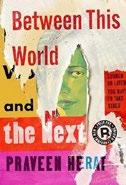
A world of hurt envelopes veteran war photographer Joseph “Fearless” Nightingale and a brutalized young Cambodian woman, Song, as both seek to overcome tragedy.
It’s the late 1990s. Fearless, a Black Londoner who passes for white, has flown to Cambodia to deal with ghosts. He’s reeling from the murder of his father, a revolutionary-minded professor, who was shot at the end of a visit with Pol Pot, and from the death of Fearless’ romantic partner and unborn child in a car crash. Song, 18, a product of poverty and negligence, has been enslaved by a sadistic brute in an apartment from which she has not been allowed to step outside for three years. Shocked to learn that her twin sister, Sovanna, from whom she was separated years ago, is alive and being
held in a nearby building, Song stages an escape and attempts to rescue her, armed with Molotov cocktails—only to have her sister vanish behind the flames. Having had his self-pity doused and his empathy awakened by his brief encounters with the courageous Song, Fearless finds her and joins her in a search for Sovanna that takes them through a criminal underground that springs bad surprises. A Russian expatriate who Fearless thought was a friend turns out to be a ruthless arms trader who was involved in the horrific abuse and murder of trafficked children. Herat recalls Robert Stone with his themes of morality, redemption, and uncrossable cultural boundaries. The dizzying narrative, which for long stretches circles around basic plot elements, sometimes loses focus. But in capturing a place and state of mind in which corruption is viewed as “the only breach against chaos,” the London-based, Sri Lanka–rooted author has given us a book that won’t be easy to forget. A dogged thriller with political bite.
The Same Bright Stars
Joella, Ethan | Scribner (304 pp.) $28.00 | July 2, 2024 | 9781668024607
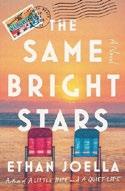
A lonely man can’t imagine life after selling his family’s historic beach restaurant to a corporate chain…and he doesn’t know the half of it.
Peppering his third novel with snatches from a (fictional) guidebook to the town of Rehoboth Beach, Delaware, Joella again unfolds a story that illuminates the connections among people who have been in each other’s lives for a long time, even as newcomers wander in to upset the apple cart—or, in this case, the crab cart. Jack Schmidt finds that perhaps he’s just burned out enough to accept an offer from local behemoth the DelDine group, especially as it’s delivered by a high-energy, charismatic, and somewhat
weird woman named Nicole Pratt, a ballsy, low-boundaries-type character Joella has great fun with. Though Jack feels obligated to his devoted staff members, it seems one of them is stealing from him and another has a druggie son who has gone dangerously off the rails. Meanwhile, Jack’s old girlfriend Kitty is in town to take care of her ailing mother and has a secret to share that will first break Jack’s heart and then change his life. There’s so much to love about this gentle domestic drama—the fraught bustle of restaurant life; the rhythms of a seaside resort town; the quiet importance of male (and feline) friendship; the often challenging relationships between middle-aged adults and their dying/difficult senior parents, particularly when they have dementia. For example, when Jack picks up his BFF Deacon from a visit to his mom in the care facility, he finds him unusually depressed. “I’m your son ,” Deacon tried to assure her when she said she was afraid of him. Her reply: “I hope not .” Shardlike moments like this are what keep this book, so full of sentiment, from being sentimental. Both Joella and his protagonist show that nice guys sometimes finish first. About as dear as a novel can be. See you in Rehoboth.
Flashback
Johansen, Iris & Roy Johansen | Grand Central Publishing (336 pp.) | $30.00 June 25, 2024 | 9781538726266
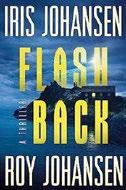
It looks as if the Bayside Strangler is back in business— and his nefarious designs are by no means limited to strangling. Fifteen years ago, San Diego PD Detectives Todd Williams and Paula Chase’s search for Alyssa Morgan, a paraplegic single mother who’d gone missing, ended with the discovery of her hanging in Tecolote National Park. As it turned out, Alyssa would be the second of five young women the Bayside Strangler
>>>
MAY 15, 2024 11 KIRKUS REVIEWS FICTION
KEVIN KWAN
The Crazy Rich Asians author delivers another juicy tale of the superrich—right on time for summer reading season.
BY MARION WINIK
DESIGN CONSULTANT Kevin Kwan was not yet 40 when he started writing Crazy Rich Asians (2013), the runaway bestseller that changed his life entirely and was followed by further adventures of the Singapore-based clan in China Rich Girlfriend (2015) and Rich People Problems (2017). By the time the Crazy Rich Asians movie hit theaters in 2018, his second trilogy was underway, each book, as he explains, exploring the lives of Asian characters outside of Asia and inspired by a classic novel. Sex and Vanity (2020) was an homage to E.M. Forster’s A Room With a View, and now Lies and Weddings (Doubleday, May 21) takes on Anthony Trollope’s Doctor Thorne, offering, as our reviewer puts it, “still more brilliant escapism among Kwan’s 1 percenters. Too much is never enough.”
We caught up with him over Zoom from his home in West Hollywood, California, to talk about his career and the new book and even got a glimpse of what lies beyond. Our conversation has been edited for length and clarity.
Let’s start with what I see as one of the great mysteries of your oeuvre. How do you make wealth porn so entertaining? Actually, I don’t believe in status symbols. Even in high school, when kids were wearing Ralph Lauren shirts, I thought there was something absurd about it. My influences were my dad and my grandfather—such unassuming people. They believed in character and integrity, judging people not on success or achievement, or what they had, but on who you were as a person. I hope that
I don’t believe in status symbols. …There’s so much comedy in snobbery.

12 MAY 15, 2024 ON THE COVER
comes through in all my books; that is the ultimate message.
Where I geek out with regard to material objects is from the perspective of aesthetics and design—the power of a beautiful jewel or an amazingly designed sofa.
So it’s not about status, it’s about beauty? Well, for some of the characters it’s definitely status, and I love to satirize that. Like Lady Arabella in the new book, how concerned she is at all times with her appearance and her house. There’s so much comedy in snobbery.
Right—she’s a former Hong Kong supermodel, now married to the Earl of Greshamsbury, living in his ancestral manor, trying to restore the family fortune by marrying off her kids to major generational wealth. What made you decide to set a book in rural England?
As an immigrant myself, I’m fascinated by global international culture. I moved to Texas from Singapore when I was a kid; many of my cousins moved to England and to Australia. We all had different intersections and collisions with the West, and the experience of not really belonging anywhere. I wanted to examine that. This trilogy is like what you see on a Chanel bottle: New York, London, Paris. Sex and Vanity was about a Chinese American girl in WASPy New York. In Lies and Weddings the Asian girl is in England, among the snootiest of the aristocracy.
So, wait…are we going to Paris in the next one? Via the reimagined plot of a Victorian novel?
You certainly might guess that. Born in a former British colony myself, I’ve been steeped in that literature my whole life. My grandfather had a library full of the Brontë sisters, Jane Austen, all the volumes of Churchill’s autobiography, Evelyn Waugh—growing up, this was so much a part of my life. It’s embedded in everything I write. In this trilogy, I take a Victorian novel and turn it on its head. I take all the classic tropes about the most privileged British Caucasian people, drop an Asian family in the middle of it, and see what happens.
Which is actually really happening all over the world.
So here we have Eden Tong, who has been in the village of Greshamsbury since she was 5. For all intents and purposes, she’s a native of this place. As we follow her journey, we see that most of the racism she encounters is from the only other Asian in that entire darn village.
Lady Arabella!
Right. I saw this myself growing up. When I arrived in Houston at the age of 11, the kids who were meanest to me were the Asian American kids. Well, here they’ve been trying to assimilate since birth and I show up and put a spotlight on their difference. They don’t want anything to do with this nerdy, strange little Asian with a quasiBritish accent who comes to school with his hair sticking up. For Lady Arabella, it’s similar. Here is this girl who is a daily reminder that she is the Chinese Hong Kong lady in the middle of an English village.
I wonder who will play them all in the movie. Are there more movies in the works?
Sex and Vanity starts filming this summer! We have the most unbelievable cast, two Oscar winners so far, and some amazing hot young actor discoveries.
Always plenty of hot people in your books. Speaking of which, is the character of Lady Arabella’s son Rufus, who takes the world by storm when he’s photographed at prep school ironing a shirt, based on a real person?
Me, of course. Just kidding. So, so, not. Actually Rufus, like many of my characters, is an amalgamation of several people. And there really was a photograph like that.
Of a hot boy ironing?
Well, you might guess that. Whenever you spot an Asian or a half Asian in a British magazine that’s full of Prince William and Plum Sykes, you’re like, Who is that?
What other research did you do?
I went to Hawaii over Christmas and New Year’s of 2021. All through the fall I’d been sketching away at my novel, trying to write it, getting nowhere. Then I
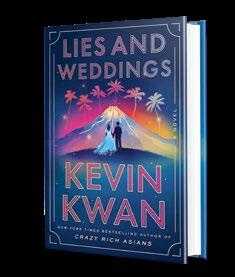
Lies and Weddings
Kwan, Kevin Doubleday | 448 pp. | $29.00 May 21, 2024 | 9780385546294
landed in Hawaii and suddenly began to see my characters. There are so many different types of Asians there—the Japanese descendant immigrants, the Chinese immigrants, the intermarried Hawaiian Japanese.
And being on the Big Island with an active volcano, well, there’s something very activating about that. If you believe that kind of stuff. Suddenly I started writing a chapter a day. Oh, my God, I thought. I have an intro! This is happening! I ended up staying six weeks. While I was there, as the book was coming alive to me, I went to Volcanoes National Park, I went whale watching, I visited all these different hotels. I met with a top wedding planner, who told me the craziest stories of what people want and expect, and what actually happens, at a destination wedding. When you bring family and friends together to a spot that’s out of their comfort zone and it doesn’t feel like anything is really real—it becomes an option for people to go absolutely bonkers. As they do in my books.
Do you have a plan for after this trilogy? I have the next trilogy sort of mapped out already. It’s another sprawling family saga like Crazy Rich Asians, but they might not be crazy rich anymore. We might be delving into a whole new territory. Because, at a certain point, how much wealth porn can you bring into the world?
Marion Winik hosts the NPR podcast The Weekly Reader.
Kevin Kwan MAY 15, 2024 13 KIRKUS REVIEWS FICTION
had killed before mysteriously stopping his work. Now Chloe and Sloane Morgan, the two daughters who’d dedicated their lives to finding out who made them orphans, have vanished as well. There’s no way that Kendra Michaels, a music therapist who was once blind and is now hypersensitive, will walk away from an appeal to join the hunt for them. The road to answers is strewn with both obstacles and distractions, from Kendra’s continuing romantic pursuit by freelance negotiator Adam Lynch to the murder of Paula Chase, whose retirement doesn’t keep her safe from an intruder looking for clues the Morgan sisters have dug up, to the return of the strangler, who seems determined to outdo his earlier tally in the present day. The authors reveal the killer’s identity early on, link his criminal enterprise to the shadowy Dayton Group—which has attracted the attention of the former attorney general in Washington—and give him a personal vendetta against Kendra. None of this imparts the slightest heft or urgency to this generic serial-killer-with-highly-placed-government-connections saga.
Such a shame that all those women died to so little effect. Pass the salt.
Annika Rose
Johnson, Cheri | Red Hen Press (264 pp.) | $18.95 paper May 21, 2024 | 9781636281209
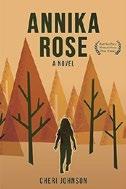
A coming-of-age tale combined with a pastoral horror story.
Annika Rose Rogers graduates from high school with no real prospects for the future other than working alongside her father on their tiny plot of land in northern Minnesota. Though Annika was once content with the quiet, parsimonious existence she found living in the family trailer in the wake of her mother’s death, her life is upended when a young couple moves into the once-abandoned house down
Mysterious guests overstay their welcome in this fresh take on the haunted house trope.
the road. The new neighbors, Tina and Jesse, have moved to this remote town so Jesse can focus on his music, but something is off about the couple and their eerie house. They welcome Annika and her father into their lives, but soon Tina’s strange combination of worldliness, helplessness, and isolation kicks off a strange rivalry between father and daughter. When the school principal, himself a fish out of water, starts coming around to Tina and Jesse’s house, tensions among all parties start to rise, particularly when an itinerant woman who lives in the woods accuses him of some dark behavior. A surprise pregnancy throws the whole not-entirely-likable cast of characters into an uproar. Annika’s naïveté means readers are left seeking answers after the unsettling ending, but she sees enough of the truth to recognize that adulthood may be far different than she previously imagined. The result is a story that feels as if Rosemary’s Baby was set against the desolate landscape of Truman Capote’s In Cold Blood. Coming-of-age stories are common, but this book’s off-putting characters and discomfiting conclusion offer a unique twist.
Grown Women
Johnson, Sarai | Harper/HarperCollins (400 pp.)
$30.00 | July 9, 2024 | 9780063294431

Four generations of Black American women navigate the peril and love of the motherdaughter bond. This absorbing debut begins in a Tennessee delivery
room and ends with a funeral. At the start, a teenage mother, recently fled from a posh Atlanta home, watches her newborn wail but doesn’t comfort her.
“‘It will get easier,’ the nurse said, but Charlotte knew that it wouldn’t.” Already cynical, Charlotte isn’t wrong—she has a cocaine habit by page 10—but she isn’t completely right, either. The story takes a lively tour of the complexities of family and most especially the sins of Charlotte’s mother, a frosty academic, Dr. Evelyn Gwendolyn Jackson. She makes her first appearance in the life of her unaware granddaughter, Corrina, as a TV talking head. Charlotte drinks, fights, dwells in poverty, ever determined to bury the tie. But when Corrina, still in high school, gives birth to her own daughter, Camille, the baby represents a chance to do better for three generations of tough, traumatized women. This is not a subtle book—“Corinna’s shoulders dropped so heavily with relief that Charlotte thought her arms might dislocate and fall right to the floor”—but it moves briskly. It is wise to class markers and human contradiction. The women are awash in alcohol, but function; pummeled by violence, but still rise. The men are peripheral, and more surprisingly, so is church. Called to restart yet again, Charlotte reflects, “That’s something people liked to say. ‘We owe it to our ancestors.’ But perhaps she owed it just as much, if not more, to her descendants.”
A vivid line of women inches toward a place where it isn’t always the mother’s fault.

For more family stories, visit Kirkus online.
KIRKUS REVIEWS 14 MAY 15, 2024 FICTION
WE USED TO LIVE HERE
The Lion Women of Tehran
Kamali, Marjan | Gallery Books/ Simon & Schuster (336 pp.) | $28.99
July 2, 2024 | 9781668036587
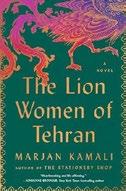
A lifetime of friendship endures many upheavals.
Ellie and Homa, two young girls growing up in Tehran, meet at school in the early 1950s. Though their families are very different, they become close friends. After the death of Ellie’s father, she and her difficult mother must adapt to their reduced circumstances. Homa’s more warm and loving family lives a more financially constrained life, and her father, a communist, is politically active—to his own detriment and that of his family’s welfare. When Ellie’s mother remarries and she and Ellie relocate to a more exclusive part of the city, the girls become separated. They reunite years later when Homa is admitted to Ellie’s elite high school. Now a political firebrand with aspirations to become a judge and improve the rights of women in her factionalized homeland, Homa works toward scholastic success and begins practicing political activism. Ellie follows a course, plotted originally by her mother, toward marriage. The tortuous path of the girls’ adult friendship over the following decades is played out against regime change, political persecution, and devastating loss. Ellie’s well-intentioned but naïve approach stands in stark contrast to Homa’s commitment to human rights, particularly for women, and her willingness to risk personal safety to secure those rights. As narrated by Ellie, the girls’ story incorporates frequent references to Iranian food, customs, and beliefs common in the years of tumult and reforms accompanying the Iranian Revolution. Themes of jealousy—even in close friendships—and the role of the shir zan, the courageous “lion women” of Iran who effect change, recur through the narrative. The heartaches associated with emigration are explored along with
issues of personal sacrifice for the sake of the greater good (no matter how remote it may seem).
A touching portrait of courage and friendship.
Kirkus Star
Shanghai
Kanon, Joseph | Scribner (304 pp.)
$28.00 | June 25, 2024 | 9781668006429

In the aftermath of Kristallnacht, German resistance fighter Daniel Lohr escapes to Shanghai only to be surrounded by a different brand of violence.
Daniel, who’s half-Jewish, is among a shipload of European Jews who jump at the chance to relocate to Shanghai, even if it means surrendering all their money and worldly goods to the Nazis. As unlikely a destination as it is, it’s the only port that doesn’t require an entrance visa. Daniel, whose Jewish father was killed by the Nazis, goes to work for his uncle Nathan, who runs a successful casino in a dangerous part of Shanghai in advance of the anticipated Japanese occupation. Daniel is quickly indoctrinated into the Chinese gang warfare being waged over control of the clubs when Nathan is shot and wounded. Soon enough, Daniel is as enmeshed in the killing culture as anyone, committing bad acts when not diplomatically making nice to bad sorts—chief among them Colonel Yamada, slimy head of Kempeitai, the Japanese gestapo. When Daniel sees Leah, his shipboard romance, in the forced company of Yamada, you know a violent reckoning awaits. As in his spy novels (The Berlin Exchange, 2022; Istanbul Passage, 2012), Kanon demonstrates a mastery of closed-in drama. Such is the jabbing understatement of the dialogue—what’s withheld matters more than what’s said—that it holds you in suspense as much as any action scene. Though the author’s use of the
Holocaust as a mere backdrop to the story may leave some readers uneasy, the contrast between his impeccable control and the nightmarish chaos of this time and place gives things a powerful edge. Kanon goes to China with stirring results.
We Used To Live Here
Kliewer, Marcus | Emily Bestler/ Atria (320 pp.) | $27.99
June 18, 2024 | 9781982198787
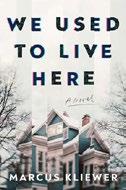
Mysterious guests overstay their welcome in this fresh take on the haunted house trope. Eve Palmer makes the biggest mistake of her life when there’s a knock on the door from a man who says he grew up in her house. Against her better instincts she invites him and his family inside, but a 15-minute look around turns into a world of trouble when she can’t get them to leave. First the Faust family’s young daughter disappears in the basement; then a storm hits and the roads are blocked, giving them no choice but to spend the night. Soon rooms appear altered, strange odors waft through the house, and a toy chimp from Eve’s childhood seems to be sending her a warning: “Once they’re in, they never leave.” Kliewer’s original and extremely scary story gathers elements inspired by authors like Shirley Jackson and classic horror films including Invasion of the Body Snatchers . He’s created a can’t-look-away imaginary world in which people and places aren’t what they appear. Readers will be as shaken as Eve, who fears she’s suffering from delusions when an apparition warns her that the Fausts—and even her partner, Charlie—aren’t who they say they are. Inserted between the book’s chapters are “documents” that lay out evidence collected by conspiracy theorists who believe what’s happening to Eve has nothing to do with delusions. This alternate storyline, written in the style of Reddit—Kliewer’s novel grew out of a novella he posted there—feels
MAY 15, 2024 15 KIRKUS REVIEWS FICTION
jarring at times, as we’re reluctantly pulled away from Eve’s gripping tale. The conspiracy theorists’ creepy posts aren’t quite as hypnotic, but they solidify the plot’s premise and neatly tie up Eve’s predicament. Fans of the surging horror genre will think twice about opening the door when somebody knocks. A frighteningly good debut.
Kirkus Star
Joe Hustle
Lange, Richard | Mulholland Books/ Little, Brown (272 pp.) | $29.00 June 25, 2024 | 9780316568470
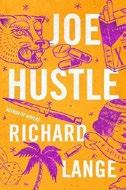
An Iraq veteran who served time for grand theft auto finds escape from a life of pickup jobs in Los Angeles with a younger woman with perplexing mood swings.
Joe Hustle, as the heavily tattooed protagonist is nicknamed, has done a pretty fair job of dealing with a wretched upbringing. His father, who fatally shot his own brother while 6-year-old Joe waited in the car, was stabbed to death before his sentencing. And Joe’s mother has never had anything but verbal abuse for him. But at 41, he’s in a rut that no amount of drinking and dope smoking can lift him out of. Along comes Emily, whom he meets while working on her sister’s house. A would-be filmmaker who carts around a copy of Anna Karenina (watch for her own encounter with a train), she shows him the kind of affection he’s never known. But between his anger management problems and her apparent bipolar disorder, their romance keeps hitting the rails during a cross-country drive to Texas through Las Vegas and the Grand Canyon to see her 8-year-old daughter. Where they are headed as a couple is anyone’s guess: “It seems like every time he comes up with a plan to get back on track lately, a bomb goes off.” Lange is best known for cuttingly funny novels about killers, dealers, and con men like This Wicked World (2009). Here,
though not without an assortment of bad deaths, he returns to the romantic mode of The Smack (2017), with a beautifully toned-down story about a pair of mismatched characters who win our sympathy not in spite of their doing and saying dumb things, but because they just can’t help it. It’s a real pleasure to read. The latest novel by a first-rate storyteller refusing to be pigeonholed.
Kirkus Star
Once More From the Top
Layden, Emily | Mariner Books (400 pp.)
$28.00 | Sept 10, 2024 | 9780063315099

While a singer-songwriter is striving to produce an authentic-sounding album, her best friend from high school is found at the bottom of a lake—dredging up the tragedy behind the music.
Dylan Read is a mega-selling, Grammy Award–winning singer-songwriter whose country roots have evolved into a sort of “bedroom pop” that fans love for its personal and—although she doesn’t like the word—confessional nature. But despite her best efforts, the media accuse her of being fake. In a news article about the cold case of a girl who went missing 15 years ago, the headline gives the detail that Kelsey Copestenke was a classmate of Dylan’s, seemingly milking the flimsy connection between the two for the sake of getting more page views. But what Dylan hasn’t told the press—or even her publicist—is that she owes her career to Kelsey. Beneath the veneer of her success are the people who know Dylan’s secrets:
the high school classmates; Kelsey’s brother, Matt; and the boyfriend she hides from the world for fear it’ll wreck their relationship and her career. But one secret is a mystery: what happened to Kelsey. As Dylan goes through each album of her catalog, she flashes back to her high school years in upstate New York with her lost friend, who was forming a musical duo with Dylan when she went missing. “Country music is about relatability,” Dylan says. “Just three chords and the truth, as the saying goes. Pop, on the other hand, traffics in fantasy.” In the story, there’s a balance of both. The flashbacks are entertaining and filled with cringey high school drama. On the less relatable end, Dylan still frets about what the press says about her. But what makes her most interesting is Layden’s respect for the craft of making music, from Dylan’s “fear that tortilla chips might scratch my vocal cords” to Kelsey’s early guitar lessons: “We’re gonna learn four chords and six strumming patterns and you’re gonna have to trust me when I tell you that’s all you need to know.”
A juicy mystery filled with gossip— and music you can almost hear.
Daughter of Calamity
Lin, Rosalie M. | St. Martin’s (352 pp.)
$29.00 | June 18, 2024 | 9781250287380

A talented young cabaret dancer finds herself entangled with gangsters, socialites, and practitioners of ancient magic. Set in Shanghai during the early 1900s—a time and place full of old magic—this novel tells the story of
A juicy mystery filled with gossip—and music you can almost hear.
ONCE MORE FROM THE TOP
KIRKUS REVIEWS 16 MAY 15, 2024 FICTION
Jingwen, a skilled showgirl at the Paramount looking to get a leg up on her fellow dancers. When several of the women are attacked in public and their stolen faces begin to appear on the foreigners who watch them perform, Jingwen finds herself torn between the life of wealth and revelry that she yearns for and the city she calls home. Soon enough, a convoluted web of back-alley politics and ancient gods reveals itself to Jingwen, and the spectacular mirage that is Shanghai’s nightlife comes crumbling down. Jingwen is abrasive, despite the loyalty and love she shows to those she holds dear, and often downright frustrating in her flatness. She’s present during several shocking acts of violence—early on, one of her fellow performers has her lips cut off while she’s with a patron—and has very little reaction; although shaken, she quickly moves on and the story progresses. Though her lack of affect might be an act of self-preservation or a result of her upbringing running money for her grandmother, it deprives the story of gravity or emotional depth. Similarly, the magic that Jingwen is exposed to lacks an explanation that would make it feel like a tangible part of the world—it is, in the end, thin as the smoke it often appears as. The author’s love for Shanghai is clear from the early pages, and her descriptions of the Jazz Age and its effects on the city unfold in gorgeous, vivid detail. The early 20th century was a formative time for both music and dance, and they play important roles in Jingwen’s life. With that in mind, this novel would perhaps be more appealing to readers looking for a lovingly detailed work of historical fiction than a fantasy novel. A fascinating time period and intriguing cast of characters, but the story lacks depth and development.

Kirkus Star
The Final Act of Juliette Willoughby
Lloyd, Ellery | Harper/ HarperCollins (320 pp.) | $29.99 June 11, 2024 | 9780063323001

Captivated by a lost surrealist painting, a young woman begs, borrows, and steals to bring it—and its artist—to light.
section, but for those readers with the patience to peel back the layers, the novel will not disappoint. A must for fans of Kate Morton.
A delightful puzzle box of a novel.
Kirkus Star
How the Light Gets In
Maynard, Joyce | Morrow/ HarperCollins (432 pp.) | $32.00 June 25, 2024 | 9780062398307
For another novel set during the Jazz Age, visit Kirkus online.
In 1938, a young British expatriate, Juliette Willoughby, exhibited her only painting at the famous International Surrealist Exhibition in Paris for a single night, stirring much interest before mysteriously withdrawing it from the exhibit; when she and her artist lover perished in a fire shortly thereafter, the painting and its secrets were presumed lost. In 1991, Caroline Cooper, a young art history student at Cambridge, decides to write her master’s thesis on sphinxes in surrealist art; at the urging of her mentor, she agrees to include Juliette Willoughby’s “Self-Portrait as Sphinx”—if she can find enough material to explore, considering that the painting was presumably lost in the fire that also killed its artist. In the present day, Caroline, now a world-famous expert on Juliette Willoughby’s painting, is on stage in Dubai to authenticate that same lost painting, recently auctioned for 42 million pounds. Lloyd’s novel interweaves the stories of these three distinct time periods to create an elegant tapestry—and a novel of love, suspense, family secrets, Egyptology, surrealism, and corruption. Above all, it is a novel of women. At the heart of Juliette’s story, and of Caroline’s story, lie some pointed questions: Why is it only the men who are remembered as great artists, as great academics? What would it look like to center a woman’s story within the typically masculine worlds of art and auction? Some may be put off by the constant switching among timelines and narrators, and the somewhat sensational sideline of the Dubai
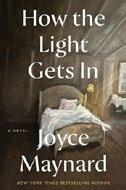
The long second act of a New England writer’s life, rich in family, laced with troubles personal and public.
Maynard’s 18th book is a stirring, satisfying sequel to Count the Ways (2021), continuing the story of New England children’s book author Eleanor through the years 2010 to 2024, including the Trump election, Covid-19, the Jan. 6 insurrection, school shootings, and lots and lots of great American music playing in the background. The book’s title comes from a Leonard Cohen song, and John Prine, who died of Covid in 2020, presides over the story. As the author puts it in a note, “I never met him, but in these pages, I honor his musical legacy of humor, wisdom, passion, and tenderness.” As in all Maynard’s best work, those qualities are in evidence throughout. A prologue recaps an event central to the first book—an accident that resulted in a brain injury to Eleanor’s youngest child, in the wake of which Eleanor’s marriage to Cam slowly but surely crumbled. In Part 1, called The Death of Cam, the babysitter he left her for is history, and when Cam falls ill, none of their other children is available to care for him and their brain-damaged brother, so Eleanor moves back from Brookline to the family farm to do the job. Oldest child Al lives on the West Coast and is now fully transitioned, married to a woman, enjoying career success, and hoping to adopt. Middle child Ursula is a mother of three, lives in
MAY 15, 2024 17 KIRKUS REVIEWS FICTION
Vermont, and is married to a high school friend named Jake who morphs into a scary Proud Boy–type in the Trump years. Ursula is deeply estranged from her mother and treats her cruelly; one of the numerous plot threads traces the evolution of this painful situation. Others follow Eleanor’s jet-setting romance with a famous climate change warrior; various projects to commercialize and Hollywood-ize her books; a sexual abuse scandal; and most centrally, this question: “A good mother. Who even knows what that is?” This ample narrative is arranged into tasty vignettes with appealing, sometimes funny subtitles, making it a pleasure to digest. Everything this great American author’s fans are looking for.
Deep Beneath Us
McPherson, Catriona | Severn House (288 pp.)
$29.99 | June 4, 2024 | 9781448312078
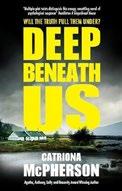
The murder of her cousin moves a Scottish woman to explore her past.
When her husband divorced her, Tabitha Lawson lost not only her marriage but her job, since he anonymously told her employer about a schizophrenia diagnosis she hadn’t revealed to them. Her son chose to live with his father; Tabitha moved in with her mother, Zelda, whose dark paintings give her nightmares. So do the dark waters of the loch she’s lived nearby most of her life. Her cousin Davey Muir, a coder and collector, and his friend Gordo spend a lot of time with Barrett, a divorced gardener with two teen girls, picking up litter near the loch. It’s all very routine until Gordo reports a mysterious underwater explosion at the loch, which is set to be drained and turned into parkland. When Davey doesn’t answer his door, Tabitha gets the police to investigate just as Barrett and Gordo arrive to find Davey dead. Although he’s left what looks like a suicide note, his friends can’t believe he’d kill himself. Neither can Tabitha, who’s inherited
everything he owned. When she, Barrett, and Gordo clean out his house, which is packed to the rafters with junk, they start uncovering long-hidden family secrets.
Tabitha and her sister, Jocasta, and Davey and his brother, Johnny, all grew up together, children of a pair of brothers who both died by suicide. The marriage of Jo and Johnny puts even more pressure on the turbulent family dynamics.
Tabitha, Davey’s friends, and their teenage children launch an investigation that will reveal that everything Tabitha thought she knew about her childhood is based on false memories.
A tense, beautifully written page-turner with a truly unsettling denouement.
Kirkus Star
Someone Like Us
Mengestu, Dinaw | Knopf (272 pp.)
$28.00 | July 30, 2024 | 9780385350006

Family secrets surface and are hidden away again in Mengestu’s atmospheric story.
Mamush, Mengestu’s protagonist, is a world-traveling journalist who has made a name for himself reporting on the worst of humanity: war, genocide, and “longsimmering border conflicts and the refugee crises that grew out of them.”
Home and a wife and child in Paris call to him. But so does his family in the Washington suburbs, including a man, newly deceased, who is Mamush’s father—or is he? The first sign that something isn’t quite right in Mamush’s world is that he reroutes the subsequent emergency trip across the Atlantic to Chicago, where he once concocted an alter ego, a hidden life that fulfills a wise comment by a college friend: “You’re like a donut. There’s a hole in the middle, where something solid should be.” But Samuel, his father, harbored a secret life, too, that Mamush is determined to ferret out, including time spent behind bars. As Mengestu’s story unfolds, Mamush
emerges as a young man not entirely at home in his own skin, even as Samuel takes shape as a well-meaning dreamer with a headful of business schemes and a taxicab full of neglected traffic citations, occasioning more than one interaction with racist cops. Samuel is a man of strong opinions as well, convinced that everyone is out to get him, especially Ethiopians who choose to speak English rather than Amharic. In Mengestu’s skillful hands Mamush is anything but a reliable narrator, but Samuel’s homespun wisdom, born of struggles that we can only guess at, is the real takeaway, his voice from beyond the grave insisting, “Go home to your family, Mamush. Right now. As fast as you can, and once there, do everything you can not to leave.”
A beguiling tale, fluently told and closely observed, that conceals as much as it reveals.
The Coast Road
Murrin, Alan | HarperVia (320 pp.)
$28.00 | June 4, 2024 | 9780063336520
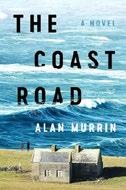
In Ardglas, a small Irish town, women are struggling with their marriages and their choices in the mid-1990s. Three wives in particular are the focus of Murrin’s debut, which looks empathetically on the women’s cramped lives and options. Izzy Keaveney has been fighting, off and on, with her husband, James, for more than 20 years and suffers periods of depression. Frustrated that James gave away the lease to her florist business and now refuses to buy it back, she’s recently found a more simpatico male presence in the form of parish priest Father Brian Dempsey. Dolores Mullen, mother of three and pregnant again, has long endured the cruelty and promiscuity of her husband, Donal, who constantly demeans and criticizes her. Poet Colette Crowley took the unusual step of leaving her husband, Shaun, and their three sons to have an affair in Dublin. But now she’s back, regretful, short of
KIRKUS REVIEWS 18 MAY 15, 2024 FICTION
A beguiling tale, fluently told and closely observed.
SOMEONE LIKE US
cash, and keen to make amends with the children. (The unavailability of divorce in Ireland during the main part of the book is intrinsic to the story.) The friendship that forms between Izzy and Colette also becomes a vehicle for Colette to spend time secretly with her youngest child, but when Shaun finds out, he strikes back. Meanwhile, Donal is sleeping with Colette, and James, threatened by the intimacy between Izzy and Brian, uses his heft as a politician to have the priest removed from the parish. The wives are the fuller characters in Murrin’s gloomy depiction of a stifling, gossipy, traditional community, whereas the men, Brian excepted, emerge badly and more thinly. Colette, falling apart, and Izzy, taking a stand, personify the extremes of their options, one ultimately tragic, the other more accommodating, in a downbeat story, closely observed but shaded with a heavy hand. Overstatement detracts from this compassionate depiction of hard times.
Misrecognition
Newbound, Madison | Simon & Schuster (272 pp.) | $27.99 | July 2, 2024 | 9781668025109
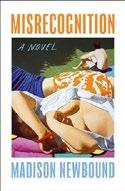
A depressed young woman attempts to form her identity through parasocial relationships, one of which she manifests into existence. Elsa has been dumped by a chic older couple, her bosses and lovers of a year and a half. Heartbroken and out of a job, she moves back in with her parents in her sleepy hometown. The family watches an unnamed film together, which the discerning reader will quickly identify as Call Me by Your
Name (2018), and Elsa finds that “she had been moved,” deeply, by the performance of the young actor—which would be, you guessed it, Timothée Chalamet. Elsa becomes obsessed with Chalamet, who’s referred to only as “the actor-character,” and in an extraordinary coincidence, she sees him at her town’s local coffee shop days later. He’s starring in a play in the town’s annual theater festival, and Elsa devotes herself to meek attempts at grabbing his attention from outside his retinue of haute creatives and hangers-on. Her life becomes a blur of hostessing at the local restaurant, stalking “the man and the woman” and various influencers on social media, smoking on the roof outside her childhood bedroom, and—briefly and unspectacularly—encountering the actor. Over time, her interests shift from the actor to one of his companions: a dark-haired person named Sam. When Sam finally notices her, Elsa must reckon with who she is, and who she could become, after hitting rock bottom. This debut is realistic in its portrayal of a listless young woman lacking direction, and some readers will find many moments to relate to. The endless repetition of actions and thought patterns that fill the first two-thirds of the book mirror the monotony of Elsa’s days, but they quickly begin to drag. We move through Elsa’s life as she does, sleepily, watching her emotions instead of feeling them. The style is formal and detached, which can feel stilted at times, but there are lines that shine with wisdom: “She wondered if progress or ‘healing’…was merely a flattening out, a ridding of affect so that one might remain placid in the face of almost anything, a pebble worn down to its impenetrable core.”
Another slightly edgy “sad girl” novel, distinct in its inclusion of a nonbinary love interest and a celebrity cameo.
You Are Here
Nicholls, David | Harper/ HarperCollins (368 pp.) | $30.00 June 18, 2024 | 9780063394056
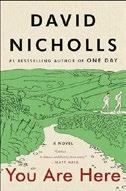
Two solitary adults take the plunge into postpandemic socialization to quell their growing discomfort from loneliness.
Marnie Walsh, a 38-year-old London copy editor, embraces the fact that she has more control over her time than her friends with spouses and children do—but she starts to question the appeal of her lifestyle when an autogenerated year-in-review photo compilation reveals only “her oven light-bulb, a recipe for hearty lentil soup, a close-up of an ingrowing hair…all accompanied by Carole King’s ‘You’ve Got a Friend.’” Marnie’s most steadfast friend, Cleo Fraser, is eager to capitalize on Marnie’s recent self-awareness and invites her on a trip to the northern countryside. This is much to the dismay of Cleo’s colleague, geography teacher Michael Bradshaw, who had planned this walk across northern England from west coast to east as a solo undertaking. Michael is just as lonely as Marnie but even more depressed. While Marnie’s coping mechanism is a Bridget Jonesian style of self-deprecating humor, Michael’s is to walk the countryside until numbness sets in. Cleo’s intention is to bring a group of singleton friends together, but given Michael’s recent, painful separation from his wife, “trying to picture himself on a date now was like trying to imagine himself bungee-jumping, theoretically possible but under what circumstances?” As Michael and Marnie walk together, they begin to banter, and the fresh air and copious pints at trailside pubs revive long-buried versions of themselves. Like their arduous walk, this love story isn’t glamorous or fast-paced but it’s worth the mileage. Given the witty dialogue and sublime natural settings (think Wordsworth and Brontë), it’s not hard to imagine this as another of
>>>
MAY 15, 2024 19 KIRKUS REVIEWS FICTION
AWARDS
International Booker Prize Finalists Are Revealed
Six books are in contention for the annual award for fiction translated into English.
The shortlist for the International Booker Prize has been revealed, with six books in contention for the U.K. award recognizing outstanding fiction translated into English.
German author Jenny Erpenbeck and translator Michael Hofmann were named finalists for Kairos , a novel set in the final days of East Germany. South Korean writer Hwang Sok-yong and translators Sora Kim-Russell and Youngjae Josephine Bae made the shortlist for Mater 2-10 ; Erpenbeck, Hwang, and Kim-Russell have all been longlisted for the prize before.
Not a River, written by Argentine author Selva Almada and translated by Annie McDermott, made the shortlist, alongside The Details , written by Swedish novelist Ia Genberg and translated by Kira Josefsson.
The other books named finalists were What I’d Rather Not

Think About , written by Dutch author Jente Posthuma and translated by Sarah Timmer Harvey, and Crooked Plow, written by Brazilian novelist Itamar Vieira Junior and translated by Johnny Lorenz. Eleanor Wachtel, the chair of judges for this year’s prize, said in a statement, “Our shortlist opens onto vast geographies of the mind, often showing lives lived against the backdrop of history or, more precisely, interweaving the intimate and the political in radically original ways.”
The winner of this year’s prize will be announced at a ceremony in London on May 21. —MICHAEL SCHAUB

For more literary awards news, visit Kirkus online.
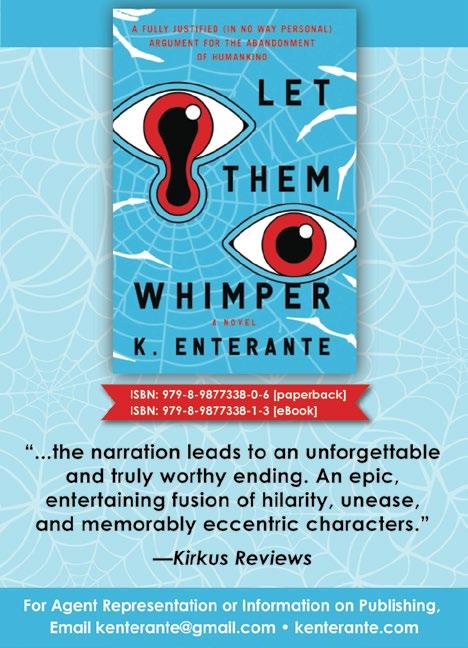
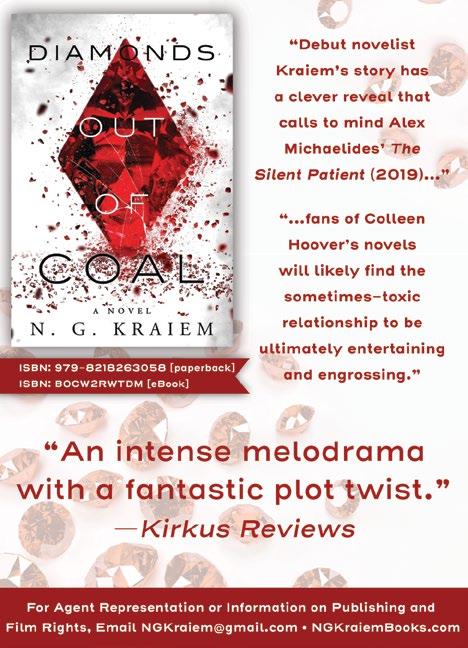
FICTION // AWARDS
KIRKUS REVIEWS 20 MAY 15, 2024 Booker Prize Foundation
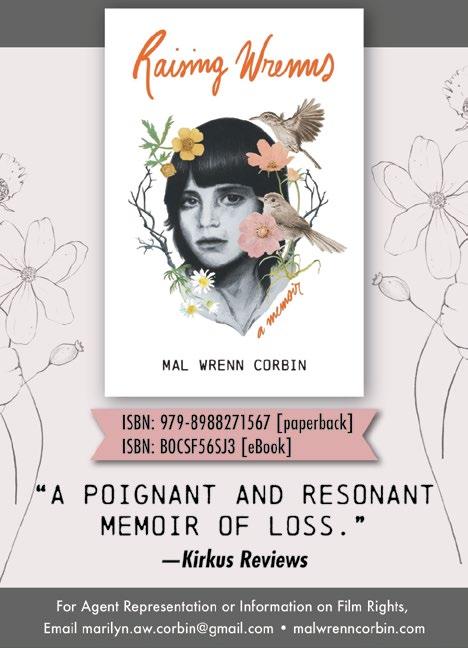
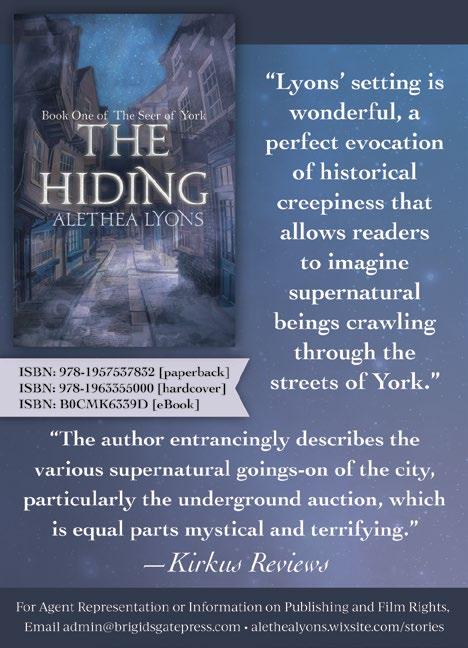

New Novel by Liane Moriarty Coming This Summer
The Australian author’s Here One Moment will be published by Crown in September.
A new novel by popular Australian author Liane Moriarty is coming later this year.
Crown will publish Moriarty’s Here One Moment this summer, the press announced in a news release. It calls the novel “a deft rumination on free will and destiny and our innate need for certainty in an uncertain world.”
Moriarty made her literary debut in 2004 with the novel Three Wishes and followed that up a year later with The Last Anniversary. In 2013, her book The Husband’s Secret became a bestseller, as did her next four novels: Big Little Lies, Truly Madly Guilty, Nine Perfect Strangers, and Apples Never Fall.

SEEN AND HEARD
Her books have proved popular with Hollywood. Big Little Lies was adapted into an Emmy winning television series starring Nicole Kidman and Reese Witherspoon, while Nine Perfect Strangers formed the basis of a Hulu show with Kidman, Melissa McCarthy, and Regina Hall. Apples Never Fall was adapted into a miniseries starring Annette Bening and Sam Neill that premiered this year.
Here One Moment follows passengers on a domestic flight who are unsettled when an older woman predicts when and how some of her fellow travelers will die. “Most are able to convince themselves this encounter was nothing more than the ravings of an unwell woman—that is until her predictions start coming to pass,” Crown says. Here One Moment is scheduled for publication on Sept. 10.—M.S.
 Liane Moriarty
Liane Moriarty
KIRKUS REVIEWS über photography SEEN AND HEARD // FICTION
For more books by Liane Moriarty, visit Kirkus online.
Nicholls’ big-screen adaptations, like One Day (2009).
A relatable and satisfyingly realistic love story to cure any lingering lockdown blues.
The Curators
Nye, Maggie | Curbstone Press/ Northwestern Univ. (296 pp.) | $24.00 paper June 15, 2024 | 9780810147324
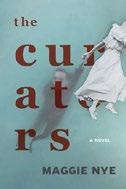
The historic and folkloric combine with menacing results in this retelling of a disturbing episode in America’s past. In 1915, the Felicitous Five—a (fictional) group of teenage Jewish girls living in Atlanta— become obsessed with the (unfortunately nonfictional) case of Leo Frank, a local Jewish businessman convicted of murdering a 13-year-old factory worker, Mary Phagan, two years earlier. Dedicated to preserving every bit of reportage and memorabilia about Frank they can, the girls draw up a set of ground rules for their curatorial endeavors, stressing mutuality and sharing of information. After Frank’s sentence is commuted, he’s kidnapped and lynched by an incensed local mob; the girls then advance their project and construct a golem in Frank’s likeness, eventually coming to wrestle with their expectations for the creature once it becomes (somewhat) sentient. The youngest of the girls, precocious but naïve Ana Wulff, takes the project most to heart and risks alienation from the group (and her personal safety) when her experiences with the golem mutate from mere homage to Leo Frank into a more transcendent exploration of the nature of universal truth, the acquisition of language, and the role of language in the formation of consciousness. Based on extensive research by Nye, the narrative weaves together themes of mysticism from both the Jewish and voodoo traditions as it examines the angst of adolescence, the tyranny of mobs, and bigoted populism. Intermittent passages in the communal voice of four members of the Felicitous Five telegraph
A frothy, fun, and well-paced cozy mystery—in which no murders take place.
HOW TO AGE DISGRACEFULLY
Ana’s eventual status vis-à-vis the group. Nye’s narrative poetically and darkly conveys the uncertainties and anxieties experienced by the girls as they mature to womanhood while struggling to understand the horrific circumstances of Phagan’s murder and Frank’s lynching. Part Southern Gothic, part Frankenstein, all thought-provoking.
Daughter of the Merciful Deep
Penelope, Leslye | Redhook/ Orbit (400 pp.) | $19.99 paper June 4, 2024 | 9780316378222

Can forces beneath the river save a town from the relentless gears of development?
Jane Edwards has lived in Awenasa, an all-Black town, ever since violence displaced her and her family from their home down the river. Though Jane’s past still haunts her, leaving her reluctant to take risks and unable to speak above a whisper, she is focused on the future, until the return of her sister, who all but disappeared 10 years ago, disrupts the balance Jane has created for herself. Worse, white government men have come to town, intent on flooding it out to build a dam. Following them is a man with a face from Jane’s past and a present shrouded in mystery and, seemingly, magic. To save her town, Jane must remember stories and beliefs from her ancestors, discover the secrets beneath the river, and use this knowledge to unite her community. As magic entwines with the Black American experience in the early 20th century, an
ode to Black communities and the way memories can last generations emerges. Later plot developments regarding Jane’s disability are sometimes disappointing, but the ways she makes space to be a member of her community on her terms are positive. Awenasa also shines as a living, breathing town, full of squabbles and secrets as well as heart and love. Unflinching portrayals of racism and violence are paired with agency as Jane and her friends and family make their own choices about how to live their lives and when to make a stand. Miracles can happen—if we remember.
How To Age Disgracefully
Pooley, Clare | Pamela Dorman/ Viking (320 pp.) | $29.00 June 11, 2024 | 9780593831496
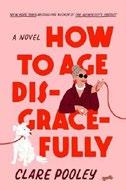
Young and old work together to save a community center at risk of closure in Hammersmith, London.
After hiding in her apartment for 15 years, Daphne starts to feel like she doesn’t want to be invisible anymore. On her 70th birthday, she decides that she’ll find a way to step outside for longer than it takes to buy groceries a couple of times a week. It’s time to make friends and, perhaps, find a partner. She joins a senior citizens’ club that’s starting up at the local community center, and her growing circle soon includes Lydia, 53, a one-time stay-at-home mother who’s trying to fill the empty hours of her day now that her girls are at university; Art, 75, a one-time bit-part actor who has a house but no savings, no jobs, no money
KIRKUS REVIEWS 22 MAY 15, 2024 FICTION
to pay for heat, and a shoplifting addiction; Art’s best friend, William, a family man and retired paparazzo; Ziggy, a 17-year-old single dad living on a council estate with his mom, trying to finish school and take care of his 8-month-old daughter, Kylie, while avoiding being sucked into seedy dealings; and a host of others—including an aged mutt dubbed Maggie Thatcher. Fans of Richard Osman’s Thursday Murder Club series will enjoy this delightful romp that on its surface is about senior citizens—whom everyone tends to discount—and others coming together to save the local community center but really is about so much more: aging, love, crime, friendship, making mistakes and living through them, and life’s complicated emotions and choices. A frothy, fun, and well-paced cozy mystery—in which no murders take place.
The Murderer Inside the Mirror
Rayne, Sarah | Severn House (288 pp.)
$29.99 | June 4, 2024 | 9781448310951
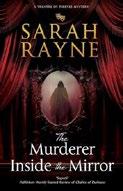
The missing piece of a masterful stage play spawns an abundance of mayhem, both mortal and supernatural. Rayne’s intricate triple-decker thriller begins in 1908 with the sprawling Fitzglen clan, whose members are equally adept at theatrical production and sublime thievery. Colorful old Great Uncle Montague has recently died, and a family meeting focuses on both funeral arrangements and future felonious plans. Together, these drive a search of Montague’s stately but run-down home
in Notting Hill, where his heirs find the manuscript of an unproduced play written by renowned Irish dramatist Phelan Rafferty. Could Montague’s apparent relationship with the late playwright be leveraged for a major financial score? A snag in the plan comes in the person of Rafferty’s daughter, Ethne, who likes to avoid the limelight. The plot literally thickens with the discovery that the play has a missing or “hidden scene.” When news of the play gets out, Ethne is besieged with offers to produce. Complementing and fueling this jaunty plot are two others with roots in different centuries. Back in the 1700s, Seamus Rafferty, Phelan’s ancestor and something of a literary detective, discovers letters from yet two centuries earlier that are the source of the play in question: a darker tale of forbidden love, murder, and a desperate coverup. Rayne’s large, engaging cast of charismatic charlatans seems poised to reach beyond this second installment in the Theatre of Thieves series for still more suspenseful adventures. A playful puzzle with an elegant veneer and abundant twists.
The Out-of-Town Lawyer
Rotstein, Robert | Blackstone (350 pp.)
$25.99 | June 25, 2024 | 9798200954506
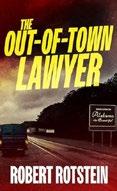
An attorney returns to his hometown of Cole’s Crossing, Alabama, on behalf of a client who looks as if she hasn’t got a prayer of acquittal.
Destiny Grace Harper was pregnant with daughters afflicted by rare twin-to-twin transfusion syndrome that condemned them to likely death unless their mother
A playful puzzle with an elegant veneer and abundant twists.
underwent fetoscopic laser surgery, a procedure she rejected at the behest of Rev. Jeremiah Tipple, the pastor of the Church of Our Lord’s Rapture. Now that she’s fled her home and delivered two babies, one stillborn, the other dead within minutes, the state of Alabama has put her on trial for capital murder. Her mother, LeAnn Harper, whom the good pastor excommunicated after her cancer surgery, offers little help beyond urging her to replace public defender Aruna Patel Higgins with someone more effective; Rev. Tipple refuses to testify about Destiny’s motives; and Judge Merle Barraclough purges the jury pool of anyone who supports abortion. So Elvis Henderson, the former local boy turned attorney whose boss in Laredo takes on the case pro bono, has his work cut out for him. “My client is being tried for felony pregnancy,” he maintains, and it would be hard to disagree with him in a more sympathetic venue. As the story unfolds, Elvis’ attempt to prove that his client acted out of religious convictions that no one close to her is willing to document gets increasingly tangled with his own checkered past in Cole’s Crossing, a past that’s won him more than his share of enemies. Even though the case revolves around whydunit, not whodunit, Rotstein does an admirable job keeping up the tension en route to a series of surprising surprises. A highly original courtroom drama ripped from the headlines and then some.
Please Stop Trying To Leave Me
Saab, Alana | Vintage (416 pp.) | $18.00 paper June 25, 2024 | 9780593686782
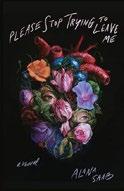
After a mental health crisis, a young woman seeks treatment in an attempt to reinhabit the outside world, and herself, again. Norma is 27 years old, unhappy, anxious, desperate to break up with her girlfriend, and not totally convinced that the world around her is real. But what
MAY 15, 2024 23 KIRKUS REVIEWS FICTION
THE MURDERER INSIDE THE MIRROR
Marks the emergence of an exciting new voice in American fiction.
HOMBRECITO
she really needs, she insists to her new therapist, is to finish her manuscript. Norma’s refrain continues as she meets with her therapist twice a week, panicking about climate change, skewering famous billionaires, and occasionally revealing a glimpse of her childhood. Interspersed with their therapy sessions are Norma’s stories, which she emphasizes are fiction. Although the stories are nearly identical to her life, this distinction is crucial to Norma. To Norma, life is a story, everyone is a character, and reality is a concept that cannot be defined by something as flimsy as genre. “When I was stuck in oblivion,” she tells her therapist, “my head used the second person a lot. As if the author was whispering secrets to the character, and the author and the character had the same voice so it was hard to distinguish one from the other.” As Norma navigates her relationship, her mental health crisis, and her manuscript, she works toward believing her therapist’s words: “You Can Get Better.” This portrait of mundanity is scattered with memento mori that plead to be noticed. There are times when Saab leans too heavily on her narrative devices, and the meta nods and storytelling stunts struggle to support the work as a whole. Still, Norma is acerbic, tenderhearted, and clever. The majority of the novel takes place in her mind, and it’s as fascinating a setting as any other.
A well-crafted spiral of a story with hope at its center.

Kirkus Star
Hombrecito
Sanchez, Santiago Jose Riverhead (336 pp.) | $29.00
June 25, 2024 | 9780593542187

A boy moves with his family from Colombia to the U.S., only to embark on his own journey of self-discovery. This intense and tender debut novel follows the plight of a young boy, Santiago, as he navigates childhood and young adulthood across two continents, from Colombia to Miami to New York and back again. In Ibagué, Santiago’s father departs for extended stretches, ostensibly working in Tierra Caliente, Mexico. The boy’s mother also disappears, though her whereabouts are less certain, leaving Santiago and his older brother, Manuel, to cope and fend for themselves: “We, the boys, will bathe in the rivers....We will be revolutionaries.” In the novel’s opening section, Sanchez employs the definitive article to impose a jarring distance between “the mother,” “the father,” “the brother,” and “the boy” before pivoting to a more conventional first-person perspective. Eventually, the brothers move with their mother to Miami, and then Santiago strikes out on his own for New York, where he can fully explore his burgeoning queer identity. Part family saga, part coming-of-age story, the novel reckons with issues of abandonment, migration, and gay identity, as Santiago confronts the ripple effects
of trauma and separation on his family. When Santiago returns to Colombia to visit, Sanchez pivots point of view again to focus on the mother. Throughout, the author’s close attention to tiny details yields a finely rendered material and emotional landscape, whether it’s a discarded plastic sofa cover, a dress removed by the mother for inspection (like “the hide of an animal, symmetrically filleted”), or postcoital perspiration from one of Santiago’s older partners: “three lines of sweat running down his pecs.” In its depiction of brotherly bonds, Latin American men, and gay sexuality, the novel is comparable to We the Animals by Justin Torres and marks the emergence of an exciting new voice in American fiction.
Heart-wrenching in its realism, this novel captures the recklessness of young lust and the enduring pain of familial love.
People Will Talk
Scott, Kieran | Gallery Books/Simon & Schuster (320 pp.) | $17.99 paper July 30, 2024 | 9781668038109
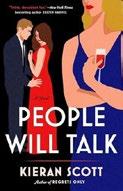
Three women linked to the same man attend his wedding, then try to figure out who’s framing them for his new bride’s murder.
Maya Romero, estranged daughter of a mobster, is a tennis star who’s just won Wimbledon. She hasn’t spoken to her boyfriend, Peter Frank, in a week, but she’s been invited to a party at his parents’ house. What she doesn’t know is that it’s a wedding between her boyfriend and another woman, Tilly Dansforth. Catherine Farr has also been invited to the party. She broke up with Peter 12 years earlier when he cheated on her with another woman, Monica, but she knows they’re destined to be together, so whenever he’s needed her, she’s come running. Monica’s sister, Leanne
KIRKUS REVIEWS 24 MAY 15, 2024 FICTION
For another work of metafiction, visit Kirkus online.
Gladstone, is tied to Peter because of the child Monica and Peter had as a result of their affair. When Monica died in a car accident, Leanne and her husband took in Hudson, now 11. Hours before her surprise wedding, Tilly calls all three women to Peter’s room and tells them to back off—he will no longer be in their lives. When Tilly turns up dead the next morning, all three are left scrambling, trying to figure out why there’s incriminating evidence pointing to them. Peter’s ability to string all three women along with his lies—that he loves Maya and Catherine, that he will be granting Leanne full custody of Hudson—begins to unravel as they confer with one another and realize his playboy ways. Of course, there’s a satisfying twist at the end as all is revealed. Love, betrayal, and the choices that women are willing to make to protect the people they love are deliciously unpacked.
A fun little murderous romp.
The Paris Vendetta
Serafin, Shan | Mysterious Press (280 pp.) $26.95 | June 25, 2024 | 9781613165270
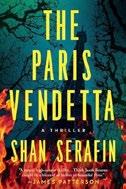
What could go wrong with a financial conference in the romantic City of Lights? As it turns out, just about everything.
American investment banker Adam Macias first appears playfully unpacking a plan to foil a vaguely “Eastern bloc” thug who’s brandishing some sort of weapon. Can he flip his chair and escape? Put a pin in that one for later. Serafin’s lively debut novel unspools as a series of such energetically described set pieces, long on banter and narrow escapes, short on reality. Adam’s adventure as a wanted man is ignited, literally, when he witnesses Evan Goldman, the CEO of his company, Euro Bank, being burned alive. Before that flashpoint, the adventure begins innocently enough, as Adam spars with co-worker and love interest Jennifer
Graham at a business conference about some murkily described corporate problem. In short order, there’s a suspicious interaction with a mystery woman, multiple interrogations by the police, Adam’s unexpected termination, and, after he stabs an intruder who claims to be a cop, his transformation into the proverbial fugitive trying to unravel a nefarious plot and clear his name. Was this a genuine gendarme? Whom can Adam trust? Every co-worker suddenly seems suspicious, and Jenn’s disappearance adds to his distress. Adam’s madcap odyssey takes him through a sex shop, an encounter with an elderly thug who threatens him with a gun, and an ominous rowboat ride. The road to a solution is twisty and sometimes confusing, but Serafin’s brisk pacing and crisp character portraits and Adam’s puckish attitude make it consistently entertaining.
A high-spirited hair-raiser, presented with panache and sprightly humor.
Brat
Smith, Gabriel | Penguin Press (320 pp.) $28.00 | June 4, 2024 | 9780593656877
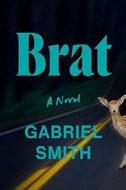
A man loses his skin, and possibly his sanity, in this bizarre debut.
Gabriel, the narrator of Smith’s novel, is having a rough time. As the book opens, the London man is in a doctor’s office; he thinks he might have a concussion after having been hit by his teenage nephew. The doctor gives him the all-clear for his head but notes he might have eczema. As it turns out, it’s something much weirder and much worse: Large pieces of skin begin to peel from his body. That’s not the only setback he’s facing—his girlfriend has abruptly moved out of their shared flat, and his father recently died, which Gabriel isn’t handling well. (It doesn’t help that he calls one of the mourners at the funeral a “stupid purple bitch.”)
Gabriel moves to the house his parents shared—his mother is in a nursing home—in order to prep it for sale, but he doesn’t get much done except drink, smoke weed, and read mysteriously changing manuscripts left behind by his parents. He also encounters a mysterious boy and girl who he thinks might have a connection to his parents’ stories, along with a mysterious man with a deer face mask. This is a bizarre novel, but not in a self-conscious way—Smith genuinely seems to care about his characters, especially the can’t-winfor-losing Gabriel, and it’s not quirky for quirk’s sake. While his prose can be unadorned to a fault at times, his dialogue shines, and there’s an undercurrent of humor throughout that leavens the book’s darkness. (In one section, Gabriel says that he slicks his hair back “like a movie Italian.”) This novel isn’t for everyone, but readers who appreciate the morbidly funny and the just plain morbid will find a lot to love in these pages.
A weird and darkly funny novel from a writer to watch.
Jackie
Tripp, Dawn | Random House (496 pp.) $30.00 | June 18, 2024 | 9780812997217

An ethereal novel imagines the interior life of Jackie Kennedy from the time she met Jack, her husband-to-be, to her death. After beginning with the horrifying scene of President Kennedy’s assassination in 1963, the novel backtracks to 1951, when Jack is a congressman from Massachusetts and Jackie is about to spend a summer in Europe with her sister before taking a job at Vogue . It follows them year by year, homing in on significant scenes from each, moving through their complicated courtship, early marriage, the birth of two children and the loss of two
MAY 15, 2024 25 KIRKUS REVIEWS FICTION
others, the presidency, the assassination and its aftermath, Jackie’s marriage to Aristotle Onassis, her work as an editor in New York, and her cancer diagnosis. The novel is mostly narrated in the present tense by Jackie, with occasional interludes reflecting Jack’s thoughts about her and their relationship, which is perpetually roiled by his affairs. Tripp, who appends an extensive bibliography, has clearly done her research and integrates it seamlessly into the novel, which comes across as sympathetic to Jackie but not cloyingly so. The presidential years are the least compelling with Jackie as the protagonist; it’s hard for thoughts about refurnishing the White House to compete with the drama of the space race and the Cuban missile crisis. For better or worse, she comes into her own after the death of the president, as she makes an escape from the role of icon to her messy marriage to Onassis and a satisfying life as an editor. If the novel sometimes drifts into cliche—Jackie dreamily sees Jack as “six feet of casual stardust,” for instance—it’s redeemed by the close, intelligent, and not always generous attention that Jackie, often forced into the role of passive observer, pays to those around her. An elegiac and meticulously crafted ode to a still somewhat mysterious figure.
Kirkus Star
State of Paradise
van den Berg, Laura | Farrar, Straus and Giroux (224 pp.)
$27.00 | July 9, 2024 | 9780374612207

A woman returns to the Florida of her childhood and is destabilized by the collision of her present and her past.
“How did we end up here, shipwrecked at my mother’s house?” This is the
If speculative autofiction wasn’t a thing, it is now; van den Berg is a pioneer.
STATE OF PARADISE
question the narrator of van den Berg’s new novel asks herself. On a literal level, the narrator and her husband—a historian working on a book about medieval pilgrimages— has moved back in with her mother in northern Florida to care for her dying father and then stayed on as the pandemic struck. (To complicate the dynamics, the narrator’s sister and her small family live right next door.) But this shipwrecking is as much emotional as geographical. Living in Florida means being surrounded by ghosts—the ghost of the narrator’s dead father, her niece’s “pet ghost,” her own job as a ghostwriter for a famous thriller author, and, most of all, “all [her] former selves for company.” These haunts eradicate the boundaries the narrator has put up between her current life and her younger years, some of which were spent institutionalized after a suicide attempt. Surrounding everything is the “equal parts danger and magic” of Florida, both agonizingly real—its politics, its weather, its wildlife— and speculative, as people in the narrator’s area begin to go missing and the rest of the population is transfixed by a sophisticated virtual reality technology called MIND’S EYE. Readers who aren’t sure how a science fiction plot will meld with writing that sometimes reads almost like memoir needn’t worry. This is van den Berg, whose Lynchian sensibility and cool yet impassioned eye are somehow the perfect choice to examine what might be America’s most eccentric state and the ways that “we are called back to the things we most want to flee.”
If speculative autofiction wasn’t a thing, it is now; van den Berg is a pioneer.
Husbands & Lovers
Williams, Beatriz | Ballantine (368 pp.)
$30.00 | June 25, 2024 | 9780593724224

The stories of two women separated by time and circumstance but connected through DNA. Mallory Dunne’s life is complicated. Her 13-year-old son, Sam, is on dialysis after eating a poisoned mushroom at summer camp when he was 10. Her mom died a couple of years before that when hiking on Machu Picchu, leaving Mallory a mysterious and beautiful cobra-shaped bracelet that Mallory wears every day. Oh, and Sam is secretly the son of Monk Adams, a famous musician with whom Mallory was madly in love throughout high school and college. Mallory left Monk the day before the two planned to travel the country together, never telling him that he’s a father. But her sister, Paige, who believes Monk could be a kidney match for Sam, is pressuring her to tell Monk the truth. When Paige convinces Mallory to go to the fictional Winthrop Island in Long Island Sound where Monk is staying—he’s there planning his wedding to vapid Instagram influencer Lennox Lassiter—Sam’s parents reunite, and Mallory must come to terms with her past. The sisters also recently found out that their mother was adopted, so Paige goes on a genealogical journey to find out where they came from. Mallory’s story alternates with that of the sisters’ biological
KIRKUS REVIEWS 26 MAY 15, 2024 FICTION
grandmother, Hannah, who lives in post–World War II Egypt and whose story is slowly revealed. While there are certainly sweet, sexy, and even poignant moments, particularly in Mallory and Monk’s early years, the book tries to pack in way too much. Hannah’s entire plot, while clearly well researched, feels underdeveloped, and Williams would’ve been better served using that time to add more depth to Mallory and Monk’s relationship. Beach read meets maudlin historical fiction.
Kirkus Star
Concerning the Future of Souls
Williams, Joy | Tin House (240 pp.)
$22.95 | July 2, 2024 | 9781959030591

The angel of death, Washoe the chimp, and T.S. Eliot share the stage in Williams’ enchanting collection of 99 short-short stories.
“The older dog’s death”: This is one complete entry in Williams’ lyrical set of 99 stories about death, its number nicely echoing Dante’s Divine Comedy. Dante turns up, to be sure. Williams’ tales, though, more often concern Azrael, the archangel who escorts souls to meet God, and the devil, with whom Azrael has some pointed exchanges: “Death and I are not the same,” Azrael insists, to which the devil replies, “A difference without distinction.” On occasion they agree—for instance, that crows and ravens “are marvelous,” belonging to the same genus just as, by the devil’s
calculus, do spirit and soul. More often, the devil thwarts Azrael, an innocently guileless psychopomp who asks in all seriousness, remembering the song “Ghost Riders in the Sky,” whether the devil’s “stupendous and tireless herd were entirely red...and what did yippie i oh yippie i ay mean anyway?” Even when the two aren’t present in Williams’ glimmering stories, they’re close by as her characters maneuver toward death, one woman expressing the wish to be buried with her horse, and Vladimir Nabokov approaching the end with tears in his eyes in the knowledge that he’ll no longer be able to chase butterflies. The sensitive reader will likely come away from Williams’ little book having shed a few tears, too, sharing with the writer the sad realization that the world is coming to an end in careless human hands, their victims such blameless creatures as snakes, whose “existence underground kept the earth from falling apart,” and manatees. Happily, in Williams’ telling, the souls of animals go to greet God, too, thanks to Azrael’s devoted service.
Elegantly poetic—and often archly funny—meditations on death by a superb writer.
Beautiful Days
Williams, Zach | Doubleday (240 pp.)
$28.00 | June 11, 2024 | 9780385550147
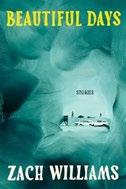
A clutch of eerie domestic tales, infused with contemporary paranoia. Most of the stories in Williams’ bracing debut are narrated by
Elegantly poetic meditations on death by a superb writer.
mild-mannered men witnessing the world shift and warp around them. In “Trial Run,” a man finds a co-worker sunk in antisemitic conspiracy-mongering about the boss. In “A New Toe,” a father finds that his infant son has sprung exactly that. An especially effective (and hallucinatory) story, “Lucca Castle,” takes its narrator from gentle anxiety over the well-being of his daughter to odd coincidences involving his girlfriend, late wife, and an apocalyptic theorist. Much like George Saunders, Williams develops setups rooted in equal parts absurdity and peril: “Return to Crashaw” is narrated by a tour guide at a peculiar desert site filled with megaliths of unknown origin; “Wood Sorrel House” and “Ghost Image” both turn on fathers whose families fragment in post-apocalyptic scenarios. But unlike Saunders, Williams doesn’t mine his setups for humor, cultivating a horror story vibe. In “Mousetraps,” a man’s hunt for a humane trap takes him into the depths of a hardware store, a mazelike symbol for humanity’s own constrictions, and “Red Light” takes what should be an erotic kinky online hookup and makes it a minefield of uncertainty. Some stories, like “Ghost Image,” push narrative cohesion to the breaking point, recalling Barthelme at his most out-there. But throughout, Williams is determined to metaphorically work through the fear and feelings of disassociation from modern life. We’re much like the narrator of “Golf Cart,” who in the middle of the night is summoned by his brother to confront some unnamed and unseen dangers: As the story intensifies, the narrator’s brother muses, “There’s no way life is real.” Williams persuades you that the guy might have a point.
Lyrical, well-crafted, offbeat yarns.

For more short story collections, visit Kirkus online.
MAY 15, 2024 27 KIRKUS REVIEWS FICTION
CONCERNING THE FUTURE OF SOULS

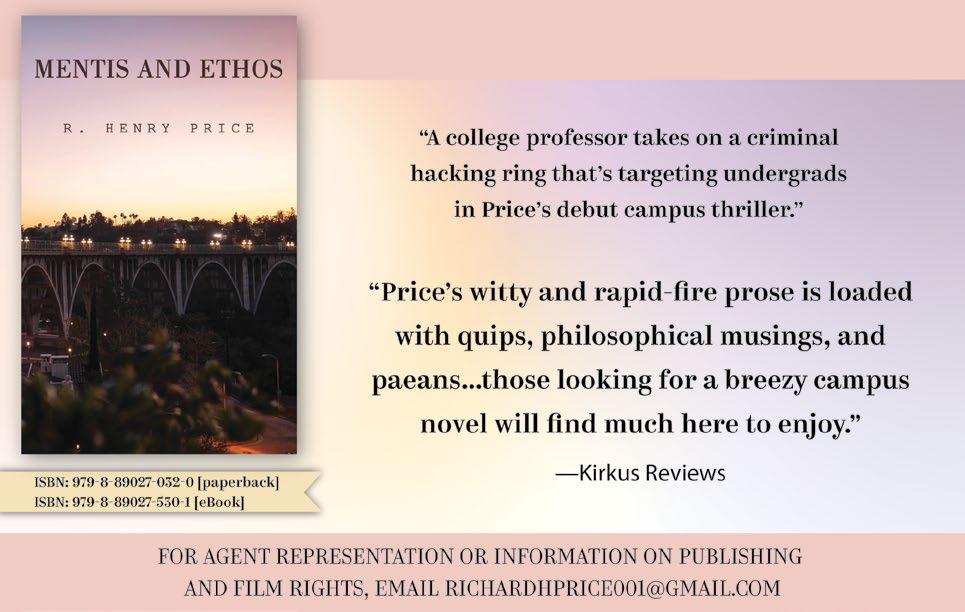


EDITORS’ PICKS:
Just Another Story: A Graphic Migration Account by Ernesto Saade (Graphic Universe)
Terrible Horses by Raymond Antrobus, illus. by Ken WilsonMax (Candlewick)
Real Americans by Rachel Khong (Knopf)
THANKS TO OUR SPONSORS:
Desperate Endeavor by G.W. Olson
Frame Story by Domenic Migliore
The Reluctant Conductor by Tim Turner & Moisey Gorbaty
Finally Quiet: Four Plays From Bucharest to Washington, D.C by Cristina A. Bejan
The Kitchen and the Studio by Mallory M. & John A. O’Connor
Fully Booked is produced by Cabel Adkins Audio and Megan Labrise.

Fully Booked
Dormant stories get their due in Julia Alvarez’s stunning new novel. BY MEGAN LABRISE
EPISODE 366: JULIA ALVAREZ
On this episode of the Fully Booked podcast, Julia Alvarez discusses Cemetery of Untold Stories (Algon quin, April 2). Alvarez has built a career telling varied, vivid stories of the Dominican American experience. She is the author of How the García Girls Lost Their Accents (1991) and In the Time of Butterflies (1994), among many others; I had the pleasure of speaking with her about her exquisite novel Afterlife for a print feature in 2020.


The Cemetery of Untold Stories is about a novelist and professor named Alma Cruz. On the cusp of retirement, she inherits a property in her family’s homeland, the Dominican Republic, and uses it to build a cemetery for all her unfinished stories. “As those separate plots touch and interweave,” Kirkus writes in a starred review, “a rich and moving saga of Dominican history emerges, embodied in the lives of irresistible characters. Alvarez returns to many of her familiar subjects: family and especially the relationships among sisters, immigrants’ experiences, the empowerment of women. Her gifts for glowing prose and powerful narrative are still strong. Buried stories find their way to the light in this finely crafted novel.”
Alvarez and I begin with what’s going on with Alma Cruz at the beginning of The Cemetery of Untold Stories. We then ponder whether it is greater to be the storyteller or the listener. We talk about the questions authors receive from readers—the more-of-a-comment questions, the truly outlandish—and how varied reactions to one’s writing can be;

The Cemetery of Untold Stories Alvarez, Julia Algonquin | 256 pp. | $28.00 April 2, 2024 | 9781643753843
the careful interweaving of stories to build up a narrative; the popularity of advice columns, and how we love to hear about the extremities of human experience; and how, in a small community, these stories are playing out right under one’s nose. Alvarez describes the cemetery Alma commissions and discloses whether she expresses herself in other artistic mediums. We discuss the surprising impact of sudden illness or injury on creative people, the fun of playing with idiom in multiple languages, and her relationship with longtime publisher Algonquin.
Then editors Laura Simeon, Mahnaz Dar, and Laurie Muchnick share their top picks in books for April.
Editor-at-large Megan Labrise hosts the Fully Booked podcast.
PODCAST // FICTION
MAY 15, 2024 29 KIRKUS REVIEWS
Todd Balfour for Middlebury College
To listen to the episode, visit Kirkus online.
A Lethal Lady
Afia, Nekesa | Berkley (304 pp.)
$18.00 paper | July 30, 2024 | 9780593548806

A woman of the Harlem Renaissance uses detecting skills she’s honed back home to solve a baffling murder in Paris.
After 10 months in the City of Lights, Louise Lloyd has settled into a stimulating routine: working at the parfumerie Allaire’s by day, hanging out with a group of artists at Le Chat Noir in the early evening, and dancing ecstatically until closing time at Aquarius. Her neighbor is the prickly playwright Ciarán Dunne. Refreshingly, Louise encounters far less racism in Paris than in New York. Still, she misses her beloved Zodiac in Harlem, the site of two previous sleuthing adventures. News of her triumphs has apparently crossed the ocean, because when talented painter Iris Wright, a “temperamental” member of the Le Chat Noir group, goes missing, her sister appeals to Louise to investigate, an offer she can’t resist. Her eagerness to solve the mystery is amped up when she meets Iris’ husband, Philip, an elitist jerk. Afia’s ebullient portrait of 1928 Paris is highly entertaining, but the novel is stuffed with characters and subplots that threaten to swamp the mystery. Besides separate, albeit sometimes overlapping, groups of characters at the parfumerie, Le Chat Noir, and the Aquarius, there are intermittent
letters from Harlem updating Louise on the lives of her friends Rosa Maria and Rafael. Louise’s interest in photography puts her in touch with a group of female artists, she drifts into an affair with Ciarán, and she still manages to solve the mystery. Whew! A busy, bubbly Jazz Age romp capped by a mystery.
An Art Lover’s Guide to Paris and Murder
Freeman, Dianne | Kensington (304 pp.)
$27.00 | June 25, 2024 | 9781496745118
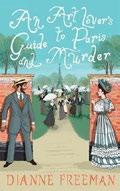
A request for help from a relative sends Frances, the former Countess of Harleigh, and her second husband, George Hazleton, to Paris, where they encounter a series of mysteries. Since she hasn’t yet had a honeymoon, Frances thinks a trip to the 1900 World Exposition in Paris would be perfect. Plus George has received a letter from his aunt Julia, who lives in Paris, requesting some help. George is hesitant to involve Frances because Julia’s been lying to the family about her life for years. Julia wants George to look into the death of the famous artist Paul Ducasse, which she’s convinced was murder. At a show of his work, Frances and George see a portrait of Julia that leaves them wondering about her relationship to the painter. At dinner with the couple, Julia is happy to talk
A charming period background adds verisimilitude to a mystery awash in red herrings.
about her home and perfumery in Chartres and the studio she shares with several other artists but insists they wait till the following day to discuss business. She’s clearly hiding many secrets, so when she dies in a footbridge collapse at the exposition and later turns out to have been stabbed, the sleuthing duo have much to discover, beginning with the fact that Julia had a child by Ducasse. After an interview with the police, they travel to Chartres, where Julia’s daughter, Lissette, and her companion, Christine Granger, express both suspicions of them and an eagerness to join in the hunt for Julia’s killer. The four of them return together to Paris, where much more will be revealed. A charming period background adds verisimilitude to a mystery awash in red herrings.
A Lurking Primrose
Hill, Suzette A. | Severn House (224 pp.) $29.99 | July 2, 2024 | 9781448311842
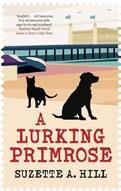
A curious British spinster with something to hide can’t resist dabbling in detection. Only Primrose Oughterard, a well-known artist in Sussex, and her friend Nicholas Ingaza know that her brother, Rev. Francis Oughterard, murdered a parishioner before he later became a hero, dying while rescuing another. Loyal dog Bouncer and clever cat Maurice, the pets he bequeathed to Primrose, have aided her in several investigations of mysterious deaths. Now the staff at the local prep school where Primrose is a trustee are all in a dither over the death of Miss Memling, the assistant matron. Although she was found dead, and dead drunk, in a Brighton hotel, and her death may have been by suicide or accident, Primrose’s nose for murder nudges her to
AN ART LOVER’S GUIDE TO PARIS AND MURDER KIRKUS REVIEWS 30 MAY 15, 2024 FICTION // MYSTERY
investigate. In the meantime, Primrose meets her new neighbors, who have two dogs, oversize mastiff Petal and tiny poodle Tarzan, who will join her animals in solving the mystery of why someone murdered the quiet matron, whose last drink contained more than just booze. Well aware that their mistress is on another hunt that’s bound to get her in trouble, Bouncer and Maurice do a little investigating of their own while Primrose uses her many contacts at the school to find out more about the dead woman. Perhaps Miss Memling’s past in South Africa can provide a clue to her death, but Primrose finds information about her earlier life hard to come by.
A rollicking tale presented from the highly varied viewpoints of Primrose and all those animals.
A Deceptive Composition
Huber, Anna Lee | Berkley (384 pp.)
$18.00 paper | June 18, 2024 | 9780593639412

A family of inquiry agents receives a plea for help from estranged relatives.
Although the birth of his granddaughter has improved Lord Gage’s rocky relationship with his son, Sebastian, and daughter-in-law, Kiera, a letter from his aunt Amelia revives unpleasant memories of more family trauma involving Gage’s youth in Cornwall and the Roscarrock relatives he remembers as rogues and smugglers. Drafted at age 11 into their activities, he was arrested and his best friend killed. His grandfather bought him a commission in the navy to keep him out of prison, setting him on the path to wealth and respectability. Now Aunt Amelia claims that Gage’s uncle Branok was murdered and wants him to investigate. He’s loath to do so until Sebastian and
A rollicking tale presented from the highly varied viewpoints of Primrose and all those animals.
A LURKING
PRIMROSE
Kiera convince him—but when they all arrive at Roscarrock House, their greeting is not entirely warm. Branok reportedly fell from a cliff, but Kiera’s observations at the site and talk with the local doctor leave her so unsatisfied that she wonders how the coroner could have ruled the death an accident. Branok’s grandson, Meryasek, who’s inherited the estate, has a reputation as a lazy womanizer. Then Lord Gage meets an old friend who claims she saw Branok after he was supposed to have died. However wholeheartedly they deny it, the local families are still involved in smuggling, and Lord Gage doubts their word about everything. The real reason they asked Gage to investigate comes as a shock that puts his whole family in a precarious position.
A bit of history and a stunning Cornish backdrop add value to a complex mystery.
A Murder for the Sages
Lillard, Amy | Kensington (304 pp.) | $8.99 paper June 25, 2024 | 9781496733498

A suspicious death sets a town buzzing. Was it accident or murder?
Sissy Yoder’s been working in her aunt Bethel’s cafe in the mostly Amish town of Yoder, Kansas, while Bethel recovers from a broken leg. She enjoys being away from her mother, who moved the family to Tulsa after leaving the Amish community,
and who constantly complains that Sissy’s not using her journalism degree and compares Sissy to her brother, a medical student. In fact, Sissy has some secrets of her own. She does very well financially, writing an anonymous agony aunt column for the local paper. And her best friend, geeky reporter Gavin Wainwright, may have a romantic interest in her. Since her arrival in the tiny house she shares with her dog, Duke, Sissy’s been involved in solving so many murders that it’s only natural she wonders how herb farmer Ginger Reed could’ve been run over by her own tractor. Several locals suspect Randy Williams, who just got out of prison, but the incompetent deputy sheriff Earl Berry is quick to pronounce it an accident. Unable to ignore Ginger’s death, Sissy starts sleuthing with some surprising help from her aunt and Ginger’s friend Naomi. Ginger had been fighting with her neighbor over a land disagreement and with her own brother over money. Could either of these disputes have provided a motive for murder? With Gavin by her side, Sissy continues to investigate, putting them all in danger from a desperate killer. Plenty to enjoy here, though family angst and romance overshadow the mystery.

MAY 15, 2024 31 KIRKUS REVIEWS MYSTERY // FICTION
For more by Amy Lillard, visit Kirkus online.
A fascinating genre mashup for the discerning—and reflective—mystery reader.
DEATH IN THE AIR
Murder at the White Palace
Montclair, Allison | Minotaur (320 pp.)
$28.00 | July 30, 2024 | 9781250854216
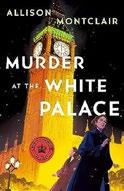
As Britain slowly recovers from the World War II years of horror and deprivation, a spunky pair of women find new reasons to mourn and quest. The Right Sort Marriage Bureau is the brainchild of former spy Iris Sparks and war widow Gwendolyn Bainbridge, who’s recently been declared sane by the courts after her husband’s aristocratic family tried to wrest control of her life and her son from her. Inspired by their success in matching clients looking for love, Gwen comes up with the idea of a New Year’s Eve dance that will bring customers together in a romantic setting. But finding a venue proves difficult until Iris’ current swain, Archie Spelling—whose many business enterprises are mostly on the wrong side of the law—suggests a nightclub he’s renovating. When they visit the club, they see that a brick wall is being removed from the basement. Its collapse nearly flattens Gwen and reveals a mummified man wearing an unusual ring that later vanishes. Unfortunately, the police officer sent to the scene is Iris’ former fiance, DS Mike Kinsey, who has no love for Archie and has been involved in several other murder cases involving Iris and Gwen. Gwen tries out dating Rodman
Hilliard, a brash young man she beat at snooker, and Iris invites Archie to meet her prickly mother, a Member of Parliament. When Archie is shot and his recovery looks uncertain, Iris and Gwen resolve to find out who did it.
A page-turning mystery full of local color and angst-filled romances.
Kirkus Star
Death in the Air
Murali, Ram | Harper/ HarperCollins (368 pp.) | $30.00 June 18, 2024 | 9780063319301
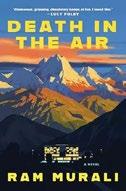
A young Indian American man finds himself playing detective when a murder interrupts his relaxing vacation. In some possibly extraneous backstory, Ro Krishna attends a pair of birthday parties in Bermuda and in London, where we learn that he and his friends are highly educated, affluent, glamorous jet-setters. Ro is trying to recover from a mysterious traumatic experience at his most recent job, so he decides to take some time off and spend the Christmas holidays at Samsara, a luxury Ayurvedic spa in India, surrounded by friends both old and new. When a guest is murdered, Ro finds himself helping the local inspector, the hotel’s eccentric owner, and an embedded CIA agent solve the crime, as well as the subsequent ones that follow. There are tongue-in-cheek references to Agatha Christie, who may have provided inspiration for the cozy
surroundings and frequent musings about class, wealth, and race, but the dialogue is fully contemporary, as is Ro. The novel takes a while to get going; the story would have benefited from a tighter, faster beginning that plunged straight into the action at Samsara. The moments of foreshadowing leading to the murder feel somewhat heavy-handed. But the easy rapport of the people at the spa creates a lovely foundation for the psychological intrigue of the mystery. One minute someone can be making off-color jokes about death, and the next Ro is dealing with very real grief. Though he often claims to feel alone, Ro’s involvement with the rest of the characters creates sympathy, humor, and complexity, and it’s the interactions within the different pairs and groups that make the narrative flow—as well as some well-timed twists.
A fascinating genre mashup for the discerning—and reflective—mystery reader.
Dog Day Afternoon
Rosenfelt, David | Minotaur (304 pp.)
$28.00 | July 2, 2024 | 9781250324474

A favor for his friend and associate Marcus Clark lands Paterson, New Jersey, attorney Andy Carpenter back in the courtroom for another impossible defense.
A man shows up at the offices of Moore Law and uses six bullets to kill six people, leaving only attorney Sally Montrose and paralegal Laura Schauble alive to identify him from his tattoo and distinctive footgear as handyman Nick Williams. Even a tyro would realize that the murders are the work of a professional hit man, but lead prosecutor Richard Wallace is no tyro, and when the cops find the murder weapon in a trash bin a few blocks from Nick’s home with Nick’s fingerprint on it, he seems
KIRKUS REVIEWS 32 MAY 15, 2024 FICTION // MYSTERY
done for. Along the way, though, Marcus, who’s served as an informal mentor to Nick and his friend Rafe Duran, asks Andy to defend him. Much as he hates the practice of law, Andy can’t say no to Marcus, and he’s soon gathering evidence that will link the six killings—more will follow, since Andy has a habit of warning suspicious characters that they have only a day or so to fess up before he turns them in—to a complex series of insurance frauds whose basis turns out to be beautifully simple. Andy jokes less than usual (a definite minus), presumably because the evidence against his client is overwhelming, but the international intrigue behind so many of his recent cases is mercifully absent here (a definite plus).
Solid legal thrills from a master of the light touch. And the dog you’d forgotten about turns up to brighten the final scene.
Dog Days
Staub, Wendy Corsi | Severn House (224 pp.) $29.99 | July 2, 2024 | 9781448312481

The manager of the guest house in a town of spiritualists may fit in better when her dead husband reaches out to her. On the way back from her former mother-inlaw’s wedding in Chicago, Bella Jordan swears she sees Sam, her dead husband. Is she overtired and overwhelmed, or is there something more at play? Seeing someone who’s passed away might be normal in Lily Dale, where Bella’s adopted neighbors and friends are spiritualists and mediums all connected to the supernatural through a phenomenon the citizens call Spirit rather than ghosts or apparitions. But Bella isn’t part of Lily Dale’s history. And though she still feels a strong connection to Sam, especially through their young son, Max, she has no history of seeing the dead. She returns
Demands a careful reading and knowledge of the Victorian lady detective’s history.
A RUSE OF SHADOWS
to Lily Dale unsure what to make of her sighting but too distracted by what’s been going on in her absence to dwell on it. Bella’s love interest, local vet Dr. Drew Bailey, has been taking care of the Valley View guest house in her absence as well as a new litter of puppies Max has been asking to keep as pets along with Chance and Spidey, their cats. As she explains that the guest house can have only so many pets, Bella also tries to help her hippie neighbor Misty Starr navigate a separation from Misty’s nonspiritual husband and ponders how to explain it all to Misty’s son, Jiffy, a troublemaker and a smart one. No sooner does she feel as if she’s got everything under control than Sam texts her, apparently from beyond the grave, and Bella has to figure out whether she’s finally seeing the dead or something more nefarious is in play.
Lots to dig into, though the mysteries take second place to the comings and goings of the townsfolk.
A Ruse of Shadows
Thomas, Sherry | Berkley (352 pp.) | $18.00 paper June 25, 2024 | 9780593640432

A mystery that unwinds in reverse adds new twists to Thomas’ Sherlock Holmes–inspired series.
The new Charlotte Holmes novel continues the tense chess game that the gender-flipped Sherlock is playing with Moriarty and an incarcerated acquaintance turned villain. The
events are narrated as a series of flashbacks interspersed with an interrogation in which Charlotte is under suspicion of murder. While her friend Inspector Treadles nervously observes, a senior policeman grills the unflappable detective about her recent movements. Even as she gives him a bland account of why she’s crisscrossed the English Channel in recent weeks, readers get drips of information about what she and her family and friends have been up to, all building to a reveal. Two other seemingly unrelated mystery subplots enter the picture, but it’s evident that new events and characters are connected to familiar ones from the past. With allusions to previous novels in the Lady Sherlock series and hat tips to Arthur Conan Doyle’s “The Final Problem” and the Guy Ritchie movie Sherlock Holmes: A Game of Shadows , the plot can be hard to follow, especially for new readers. The consistently well-drawn characters serve as an anchor, and the occasional glimpse of Charlotte’s love for her family and her lover, Lord Ingram Ashburton, adds a needed touch of warmth to the clever but clinical jigsaw structure of the mystery.
Demands a careful reading and knowledge of the Victorian lady detective’s history.

MAY 15, 2024 33 KIRKUS REVIEWS MYSTERY // FICTION
For more by Sherry Thomas, visit Kirkus online.
THE KIRKUS Q&A: KALIANE BRADLEY
What began as a lockdown pastime has become one of the hottest debut novels of the summer.
BY AMY REITER
KALIANE BRADLEY’S DEBUT novel, The Ministry of Time (Avid Reader Press, May 7) , about a Victorian polar explorer transported to the 21st century and the British civil servant working as a “bridge” to help him adjust, started out as a lark.
During lockdown in April 2021—soon after starting a new job, yet to meet her colleagues, and feeling anxious and isolated—Bradley began watching The Terror , an AMC TV series about Sir John Franklin’s lost expedition to the Arctic in 1845, in which 129 men vanished.
“The characters were mostly white men wearing greatcoats, with mutton chops and accents similar to mine. It was difficult to tell them apart,” the British Cambodian writer, 35, recalls over Zoom from her London home. Seeking clarity, she sought out a fan wiki online. There, she saw the name of Commander Graham Gore, a naval officer who was a minor character in the drama, and found her way to his Wikipedia page.
It was love at first click, or, as she puts it, “eyes across a crowded textbox.” Bradley was captivated by a daguerreotype of Lt. Gore—depicting a dashing man with curly hair, fetching features, and confidently crossed arms—and by the flattering descriptions of him in letters from the time.
“I was like, This man sounds so competent. I bet he would be handling lockdown really well. He has sailed all over the world, fought in these wars. I bet he wouldn’t be crying because he can’t get the VPN to work ,” she says.
Bradley developed an instant, intense interest in Gore—some might call it a crush—and his expeditions. She found an online community of amateur polar exploration buffs and began writing a character sketch to amuse herself and them. “I wanted to offer them a silly piece of writing. What would it be like if your favorite polar explorer was your housemate?” she says.
Bradley spoke to Kirkus about how those initial jottings turned into the novel that our critic, in a starred review, calls a “breathtakingly sexy…rip-roaring romp.” Our conversation has been edited for length and clarity.


Your Gore research was the impetus, but then did you give yourself license to go wherever you wanted? Total license. I originally wrote the book as a literary parlor game, to entertain my friends. I wasn’t thinking about developing a fictional character; I was thinking about making them laugh. I have no textual evidence that Gore chain smoked; there is a mention of him smoking a cigar. I went mad with the extrapolations. I was having so much fun creating this character, Graham Gore, that I wanted to have a conversation with him, but the only way I could was to write his half of the conversation.
How much of you is in the book’s other characters? There’s quite a lot of me in the sister who wants to be a writer. At first the bridge
wasn’t British Cambodian. I was writing a different book, which was to be my serious book about Cambodia, the Cambodian diaspora, and the British Cambodian community. It wasn’t working. But there was a character similar to the bridge in it, someone who has a complicated relationship to power, is ambitious and interested in exploiting the way she is perceived for her own gain without understanding how this makes her vulnerable. I just plucked her up and put her in this .
Were you concerned we wouldn’t sympathize with Gore?
I was. This romantic lead is an imperialist, who believed in the empire and the right of Britain to kick in other people’s doors and stamp bloody shoes all
FICTION // Q&A
KIRKUS REVIEWS 34 MAY 15, 2024 Robin Christian
over. I wanted some reckoning with that, something that says these people were dangerous to the Inuit communities, [that] they shouldn’t have been there. I sometimes found writing Graham frustrating because he’s a man who doesn’t want to answer questions, to give too much away. I wanted there to be a reason why he’s like that.
Were you also trying to explore what it means to be a refugee?
I’m glad you called that out. In the early version, I was thinking about this idea of being pulled from a place and time and let loose in a culture you don’t understand. As I developed the bridge and she became British Cambodian, it became a hugely important part of
the book. In this novel, time travel represents a kind of explosive immigrant and refugee experience, being pulled from one place into another and having to assimilate, being told the only way you can continue to exist and be welcome is to become a perfect 21st century British person.
What was the hardest part of writing the book? There’s a lot of playful genre crossover—spy thriller, workplace comedy, romance, which I think is the core of the book. I was inspired by bureaucratic spy thrillers, John le Carré. The Ministry of Fear by Graham Greene inspired the title. Trying to get that balance right was difficult.
Were you worried about losing the joy
I sometimes found writing Graham frustrating because he’s a man who doesn’t want to answer questions, to give too much away.
and humor that drove you in the beginning? It was an act of protecting that joy. Rewriting is so much trouble. This is the ninth draft of the book. I got to a point where I was like, no one’s going to care about this. I was so exhausted. I had to think, OK, imagine I’m just writing for these friends again . It had to be for them. I couldn’t imagine this terrifying, invisible, mass audience.
How much fun did you have looking at today’s world through the perspective of the time-traveling expats? That was the most fun thing. Originally the book wasn’t so much a spy thriller. There were lots more fish out of water comedy scenes. There was a whole thing with washing machines and going for a
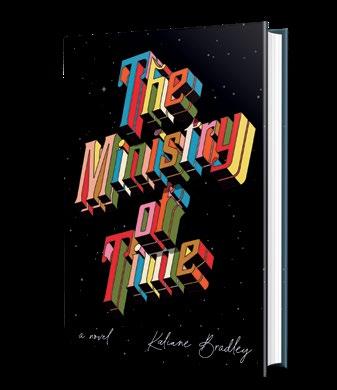
jog, which just baffles the expats. One thing that obsessed me, which didn’t get into the book, was thinking about what people throughout history would have made of traffic lights— they’re quite weird, right? Everyone has to agree that red, orange, green mean the same thing. I zoned out at a lot of crossings.
What about the sex scenes? They’re steamy. They are among the few scenes that remain almost entirely intact from the first version. It’s embarrassing to admit this. They were the easiest bits to write. Very sorry to historical figure Graham Gore. My dad has read the book; he said he skipped over those sections.
What do you hope people will take away from the book? Graham Gore and the bridge are flawed people. They make mistakes. They have traumas they are reacting to and don’t understand. But at the end, the bridge is willing to admit to mistakes and open to doing things differently. I hope that’s true of everyone. I hope we can come away from decisions we’ve made that have harmed people and think, I don’t have to keep doing this, I don’t have to keep being that person, I can be someone new. And as a broader community, we don’t have to say, Well, we’re on the path of climate crisis. There’s nothing we can do about it. We can work together; we can change the future. It’s not set in stone.
Amy Reiter is a writer in Brooklyn.
Q&A // FICTION
The
Bradley, Kaliane Avid Reader Press | 352 pp. | $28.99 May 7, 2024 | 9781668045145
Ministry of Time
MAY 15, 2024 35 KIRKUS REVIEWS

ISBN: 978-1-7361733-3-6 (Paperback)
ISBN: 978-1-7361733-2-9 (Hardcover)

— and why more women in government could be the solution.
“The broad range of scien1fic grounding that Evans brings to his specula1ons makes for a very compelling reading experience.” — Kirkus Reviews [ WhyMenMakeWar.com ]


Book to Screen

New Bridget Jones Film in the Works
Renée Zellweger will star in the adaptation of Helen Fielding’s Bridget Jones: Mad About the Boy.
Bridget Jones is headed back to the big screen.
Universal Pictures and Working Title are developing a
film adaptation of Helen Fielding’s Bridget Jones: Mad About the Boy, Deadline reports. It will be the fourth movie to feature Fielding’s iconic character, a single London woman who tries, with mixed results, to eliminate her bad habits and find love.
Fielding’s novel, published in 2013 by Knopf, follows Jones, now a 51 year old single mother, as she dates a man 20 years younger than her. A critic for Kirkus wrote of the book, “Not as rich as Fielding’s first two Bridget Jones books. Bridget’s fans will want it anyway. When Fielding is funny, she’s very funny.”

Renée Zellweger, who earned an Oscar nomination for playing Jones in the 2001 film adaptation of Bridget Jones’s Diary, the first novel in Fielding’s series, will return for the new movie. Hugh Grant, who starred in the first two Bridget Jones films, will also appear in the film, as will Emma Thompson, who starred in the third Jones movie, Bridget Jones’s Baby Also cast in the Mad About the Boy film are Chiwetel Ejiofor (12 Years a Slave, The

Martian) and Leo Woodall (The White Lotus, One Day). Michael Morris, known for his work on television series including 13 Reasons Why and Better Call Saul, will direct.—M.S.

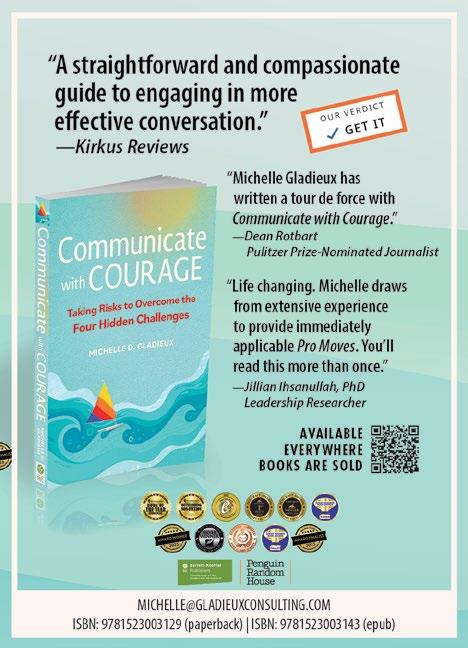
BOOK TO SCREEN // FICTION
Dimitrios Kambouris/Getty Images
For a review of Bridget Jones: Mad About the Boy, visit Kirkus online.
MAY 15, 2024 37 KIRKUS REVIEWS
Renée Zellweger
Echo of Worlds
Carey, M.R. | Orbit (496 pp.) | $19.99 paper June 25, 2024 | 9780316504690

In the conclusion to the Pandominion duology (following Infinity Gate, 2023), two multiversal empires hurtle toward mutual annihilation. Since neither the organic Pandominion nor the machine hegemony recognizes the other as sentient beings, negotiation is impossible: There can be only complete destruction of the other side to remove the inconvenience. The potential for reconciliation is slim indeed, lying in a small and desperate band consisting of Topaz, a young woman evolved from a rabbit; her best friend, Dulcie, a former member of the machine hegemony; Essien and Moon, two mentally unstable, renegade Pandominion soldiers; a digital copy of Hadiz Tambuwal, a dead physicist; and Rupshe, a liberated AI. Rupshe believes that they must appeal to the Mother Mass, a planet-size intelligence who may have the power to halt this looming apocalypse. Of course, the location of the Mother Mass is one of the Pandominion’s closely held secrets, and trying to uncover it will attract unwanted attention to our fugitive heroes. Cue plenty of desperate situations from which the protagonists make hairbreadth escapes; but even though literally billions of background characters die, there never seems to be much doubt that they will ultimately triumph (especially since the story is narrated from a time period after these events). But in the midst of that breakneck action, Carey wants to give the reader a lot to think about, beginning with the central Aesop: Xenophobia is bad, and we must respect sentient beings regardless of how alien they look, think, or behave. Related to that, we have the classic SF warning that it’s unwise to hand over your infrastructure to a complex machine, because it’s eventually going to become self-aware and start having opinions. There’s also
something in there about the dangers of an oversize, autocratic bureaucracy filled with workers focused more on personal advancement than helping people. But if the author is offering a message about manifest destiny and environmental conservation, it’s decidedly mixed: While Carey vividly depicts polluted, devastated landscapes, the story strongly suggests that since there seems to be an infinite amount of resources, there’s always another unspoiled world to escape to whenever things get too bad. A wild if somewhat predictable ride; slightly unwieldy but reasonably entertaining.
The Stars Too Fondly
Hamilton, Emily | Harper Voyager (336 pp.) | $18.99 paper June 11, 2024 | 9780063320819

When a group of friends sneak into an abandoned spaceship, it inexplicably roars to life and takes them on a journey to another solar system.
It’s the year 2061. Cleo McQueary, Abe Yang, Kaleisha Reid, and Ros Wheeler are now young adults, but they were children at the time of the infamous Providence I disaster. The Providence I was a feat of human engineering, featuring the top-secret dark matter engine that would take a group of 203 colonists to another solar system. But when the dark matter engine fired up for the first time, every last one of them vanished. The corporation that built Providence I never discovered what happened to them, and the world was so traumatized by the mass disappearance that they left the spaceship to sit on the launchpad, fully abandoned. Cleo and her friends, all trained scientists with various specialties, sneak onto the neglected ship with the goal of finding evidence that might help explain the colonists’ disappearance. But simply touching the dark matter engine brings it to life, and soon they’re soaring
through space on their way to a far-off planet, with no hope of rescue. The mystery of the Providence I colonists is a tantalizing start to what soon becomes more of a romance and friendship-focused story than an SF mystery. If some readers find that change a little disappointing, they still have a compelling SF action plot to look forward to, as well as an engaging discussion of artificial intelligence from the surprising form taken by the onboard computer. Love finds you in the least expected places, even in other galaxies.
Escape Velocity
Manibo, Victor | Erewhon (368 pp.)
$28.00 | May 21, 2024 | 9781645660842
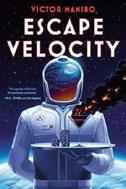
A space cruise takes a dangerous turn as a handful of old school chums reunite after 25 years apart. Hobnobbing is the name of the game aboard the Prestige-Class Space Habitat Altaire, but the stakes are higher for some people than for others. Husbands Henry and Nick Gallagher yearn for life in the brand-new civilian colonies on Mars but need to earn more MERIT points—a sociopolitical currency of sorts—than their straight peers to get their hands on a piece of the pie; being wealthy and attractive can’t help them overcome the “gay penalty,” which punishes infertile couples with lower MERIT scores. Mirroring the men’s plight, the Altaire’s majority-Filipino staff find themselves catering to people who, though undeserving of their status, enjoy a higher caliber of living solely by virtue of their birth. The cast list soon swells, with a broad conglomerate of wealthy characters rehashing a friend’s death some 25 years on. Unfortunately, the novel swiftly begins to lose focus, making it impossible to distinguish between important characters and extraneous ones. Whose story is this, really, and
KIRKUS REVIEWS 38 MAY 15, 2024 FICTION // SCIENCE FICTION AND FANTASY
why does that question grow increasingly difficult to answer? While this collection of red herrings might have made for an intriguing premise, Manibo jumps from one character to the next too quickly for the reader to forge any sort of lasting interest in them. The dialogue is sometimes stilted, and the exposition almost always reads like a dry recitation of events, further dampening what might have been an exciting tale of near-space intrigue. A forgettable novel of high-stakes interpersonal conflicts.
Kirkus Star
The Wings Upon Her Back
Mills, Samantha | Tachyon (336 pp.) | $18.95 paper April 23, 2024 | 9781616964146

The debut novel from Hugo and Nebula Awards–winner Mills is a nonlinear science-fantasy following one woman’s redemptive journey after a devastating loss of faith.
Growing up in the blessed city of Radezhda—a towering metropolis that was built to reach the heavens and the portals leading to the five sleeping gods—young Zenya dreams of one day becoming a Winged warrior. But Zenya’s parents are scholars, and in a strictly stratified society whose populace is divided into five sectors—fighters, farmers, engineers, scholars, and workers, with each sect worshipping a different god—her future is all but predestined. With tensions between sect leaders a virtual powder keg and a civil war looming, Zenya follows her dream and eventually makes it through torturous training to become Winged—a warrior with mechanical wings that connect to ports surgically opened in her back. With a fanatical and demanding leader named Vodaya
A wild if somewhat predictable ride; slightly unwieldy but reasonably entertaining.
ECHO OF WORLDS
pushing her to her limits, Zenya (now named Zemolai) begins to see the world from a different perspective. Where she once saw honor and freedom among the Winged warriors, she now sees treachery, lies, and the underpinnings of a fascist state. When an error in judgment gets her exiled, a now wingless Zemolai begins a perilous journey to uncover the truth—revelations that will literally shake the towers of Radezhda and the very heavens themselves. Mills more than compensates for slightly two-dimensional supporting characters with masterful worldbuilding, brisk pacing, and stand-up-and-applaud action sequences, but the real power here is in her exploration of finding one’s true path, the dangers of blind faith, and weaponized zealotry. All these elements combine in a narrative that is virtually impossible to put down. An absolute must-read—to paraphrase a line from the novel, fantasy fans will find themselves in literary heaven.
Kirkus Star
Mirrored Heavens
Roanhorse, Rebecca | Saga/ Simon & Schuster (608 pp.) | $29.99 June 4, 2024 | 9781534437708 Series: Between Earth and Sky, 3
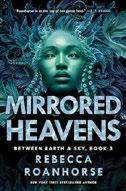
Serapio’s newly won rule over the city of Tova is threatened from all sides in the third installment of Roanhorse’s Between Earth and Sky trilogy.
Serapio, now the Carrion King, has triumphed over Tova. As he’s an avatar of the crow god, his new kingdom is engulfed in a permanent eclipse. But his fight isn’t over yet. The powerful clan matrons conspire to assassinate him, and outside of Tova, the bloodthirsty Lord Balam is gathering a terrible force to destroy him. When a strange old woman tells Serapio that the coyote god has a prophecy that will show him how to defeat his enemies, Serapio is eager to hear it. But the prophecy is contradictory and confusing and finishes with the promise that “in winning he would lose everything.” Meanwhile, Xiala is home on the mysterious, matriarchal island nation of Teek. As she struggles to channel her strange ocean powers, Teek is invaded by Lord Tuun, who wants to force the women of Teek to build a navy for Balam’s war against Serapio. Xiala must find a way to outsmart Tuun, save what remains of her homeland, and make it back to Tova to find Serapio before Balam’s forces overtake him. Even as Roanhorse brings her epic story to a close, there are no simple answers here. Serapio is both a victim of the plot that bound him to the crow god without his consent and a brutal strategist when it comes to furthering his goals. Everyone from the goodhearted Xiala to the villainous Balam must contend with sacrificing pieces of themselves—and the lives of others—to achieve their ends.
Roanhorse’s fans won’t be surprised to hear that she’s crafted a complex, suspenseful, and ultimately satisfying ending to her masterful trilogy. A strong ending and a new classic of the fantasy genre.
MAY 15, 2024 39 KIRKUS REVIEWS
SCIENCE FICTION AND FANTASY // FICTION
The Villain Edit
Devore, Laurie | Avon/Harper
Collins (336 pp.) | $28.00
July 2, 2024 | 9780063337602

A struggling author gets in way over her head when she becomes a contestant on a dating show. Jacqueline Matthis has never been good at love…not even when she’s the one writing the story. Her career as a romance novelist stalled out after her series got canceled, but she has the perfect plan to increase book sales: Become a contestant on a Bachelor-esque reality show called the 1. She doesn’t have to win the show, or the heart of the bachelor himself, Marcus Bellamy—she just needs to get enough airtime and attention to convince people to buy her books. But right before the show starts, Jac makes the mistake of having a one-night stand with a handsome stranger who ends up being Henry, a producer on the 1. She feels an undeniable pull to Henry, but she can’t tell if he actually cares for her or is simply manipulating her to get good TV. And then there’s Marcus, who inexplicably thinks Jac is amazing, even if the other women on the show hate her for her brutal honesty and refusal to play the game. Jac finds herself cast as the villain of the season, and she doesn’t know if she can trust Henry, Marcus, or anyone on the show. There’s no shortage of romance novels about reality TV, but Devore’s adult debut stands out by focusing on Jac’s sometimes caustic nature and her genuine cynicism about love—her writing career is flailing because she didn’t understand the cardinal rule of romance novels: The characters have to end up together. Jac is a deeply human character who wants to be loved even as she keeps making mistakes. Devore keeps the stakes high, and a few twists make the story feel almost as propulsive as a thriller. A darkly fun romance that will make readers question what they think they know about reality television.
Hot Summer
Everhart, Elle | Putnam
(400 pp.) | $19.00 paper
June 25, 2024 | 9780593545126

All’s fair in love and reality TV when Cas Morgan lands a role on a popular dating competition show. For Cas, dating is a full-time job. She works for a popular dating app called Friday, where she hosts singles mixers and club events for those seeking a relationship. But after five years, all Cas really wants is something, well, boring for a change—a stable 9-to-5 with an actual desk and no more drunken work nights. But when Cas is called into her boss’ office with the promise of a promotion, she’s surprised to learn that her professional life is about to get even wilder. Cas must compete on the popular dating program Hot Summer and gain the audience’s trust without letting the rest of the cast reveal Friday’s ultimate goal—to create a lucrative brand partnership with the show. All Cas has to do is lounge around in a bikini and maintain a surface-level amount of charm to get her to the finale, and then she’ll become the head of Friday’s newest marketing integration team. But once Cas arrives at the beautiful Cyprus villa she’ll call home for the next two months, she meets Ada Hall and her plans of avoiding any romantic connections crumble. Gorgeous redhead Ada is an instant fan favorite while Cas finds herself teetering on the verge of elimination each week. And yet, the only time Cas can truly be herself on the show is with Ada, a fact that makes her more and more likable to both the audience and Ada herself. Will Cas be able to win the hearts of Ada and Hot Summer fans, or will her secret leave her burned? Everhart’s romance is made of reality TV dreams: juicy gossip, hot hookups, and drama, drama, drama. Cas and Ada are the fan-made stars of Hot Summer ’s very own Hot Gay Summer, and their
chemistry is both refreshing and steaming off the pages. With reality TV theatrics and a heartfelt queer romance, this is a can’t-miss book. Love Island meets its match in this steamy summer romance.
Kirkus Star
Wake Me Most Wickedly
Grossman, Felicia | Forever (368 pp.) | $8.99 paper
April 9, 2024 | 9781538722565
Series: Once Upon the East End, 2

A woman living on the margins of London’s Jewish community in the 1830s finds love with a younger man. This is the second in Grossman’s series of gender-swapped fairy tales that began with Marry Me by Midnight (2023). Hannah Moses’ parents died under shameful and tragic circumstances years earlier, leaving her no choice but to run the family business, a low-end pawn shop. Hannah is furious at the way the gentiles who use her shop prey on her vulnerability and insult her identity, and she’s heartbroken about the way the Jewish community has turned its back on her and her younger sister, treating them as outcasts. Hannah hopes to save enough for her sister’s dowry so she can reenter the community, even though it’s too late for Hannah. One night, she saves Solomon Weiss from a group of thugs who cornered him in an alley near her shop. Sol and Hannah are fascinated by each other, but each has their own reason for being wary. Hannah is older than Sol and knows her past misdeeds and notoriety will compromise him. Sol doesn’t care about Hannah’s reputation, but his older brother has been baptized and is courting a gentile, and he pleads with Sol to be as circumspect and respectable as possible. The novel is unusual in that the relationship between Hannah and Sol develops quickly and with little
KIRKUS REVIEWS 40 MAY 15, 2024 FICTION // ROMANCE
Will make readers question what they think they know about reality television.
THE VILLAIN EDIT
drama. They have great chemistry and agree to only a brief affair, but fate and their feelings keep bringing them together. The fairy-tale subplot—with Sol in the role of Snow White, in danger from a loved one—takes longer to unfold, but it’s also the most thematically interesting part of the book, touching on the ravages of antisemitism, on individuals and communities, and on the healing nature of love.
A beautifully romantic exploration of love, family, and community.
Everyone I Kissed Since You Got Famous
Marvel, Mae | St. Martin’s Griffin (368 pp.) | $18.00 paper June 11, 2024 | 9781250894687
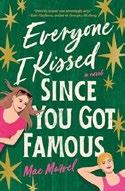
A movie star returns to her hometown and realizes her feelings for her high school friend are more romantic than platonic.
At 31, Katie Price has won every acting award Hollywood has to offer and is looking to make her move into directing. Desperate for some downtime to work on a script she’s adapting, she heads home to Green Bay, Wisconsin, to spend Christmas with her parents. While there, she sees her high school best friend, Wil Greene. Wil deferred law school and stayed in Green Bay after her father’s death, and instead of returning to academia, she’s found satisfying work as an insurance adjuster. In the past year, she’s become famous for a TikTok channel where she kisses strangers, a sexy and insightful
exploration of intimacy in the age of social media. When Wil and Katie see each other at a Christmas party, they instantly fall back into their old friendship like no time has passed, even resuming their teenage investigation into the personal life of their least favorite teacher. Wil and Katie slowly realize that their strong bond was actually romantic attraction, and they inch toward declaring their love for each other. The novel is beautifully written, exploring Wil and Katie’s evolution from friends to lovers as twin journeys of self-awareness. Katie’s reputation has been tainted and smeared in the press by an abusive ex-boyfriend for the past decade, and she’s wary of pulling Wil into the media maelstrom that is her life. Wil realizes she’s been hiding in Green Bay, afraid to take emotional risks after losing her dad. They’ve been friends for a lifetime, but only now do they know themselves well enough to understand they were in love all along. A methodically told story of longing and belonging.
A Gamble at Sunset
Riley, Vanessa | Zebra (336 pp.) | $17.95 paper May 21, 2024 | 9781420154856

A composer finds his muse on the other side of the Thames. Georgina Wilcox, second-eldest daughter of a wealthy coal magnate, has gotten herself in a bit of trouble. In an impulsive moment, she kissed a man she barely knows in a garden that wasn’t as private as she thought, and now she’s in danger of
being ruined. This isn’t as troubling for the man she kissed, Lord Mark Sebastian, a marquess’ “spare’s spare.” His primary passion and struggle in life have always been composing music, and after Georgie inspires him in more ways than one, he wonders if she could be his muse. Despite this, he doesn’t want her to be forced into marriage, so both agree to a convoluted plan to pretend to be engaged while he serves as her music teacher and then allows her to throw him over for a more advantageous match. Though the plan is proposed by the Duke of Torrance—who has a mysterious history with Georgie’s widowed sister, Lady Hampton—it can’t fully protect her from the gossip mill. Rumors start spreading about Georgie and Mark, most focused on the fact that Mark is a white nobleman and Georgie is a “Blackamoor woman” whose father was a man of trade, not title. When their fake betrothal starts to lead to complicated romantic feelings for both of them, the threats intimated by the rumors start to feel all too real. The first in a new series from Riley builds on her reputation for depicting authentic diversity in the Regency era, including depictions of sickle cell anemia and its devastating impact, as well as the complicated experience of Black Russians in London society. Though Georgie and Mark have chemistry, their encounters are relatively chaste, which combined with a traditional writing style gives the story a pleasingly retro feel even as it broadens representation in the genre. The early chapters are a jumble and the plot feels disjointed at times, but when the book hits its stride, it’s a satisfying story that also lays out a promising setting for future entries.
A strong historical romance that combines diverse experiences with classic storytelling.

MAY 15, 2024 41 KIRKUS REVIEWS
ROMANCE // FICTION
For more by Vanessa Riley, visit Kirkus online.

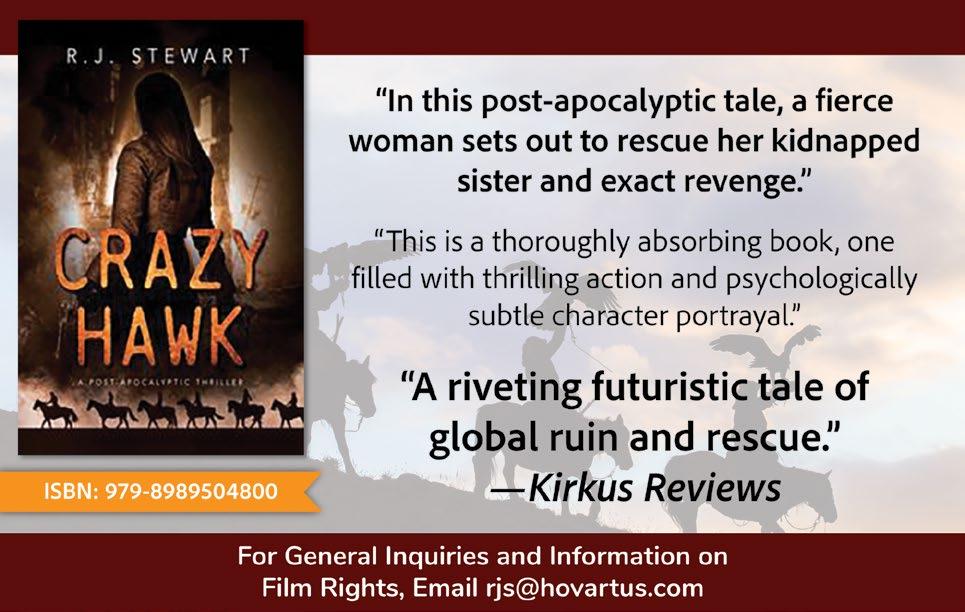
5 Juicy Books for Toting to the Beach

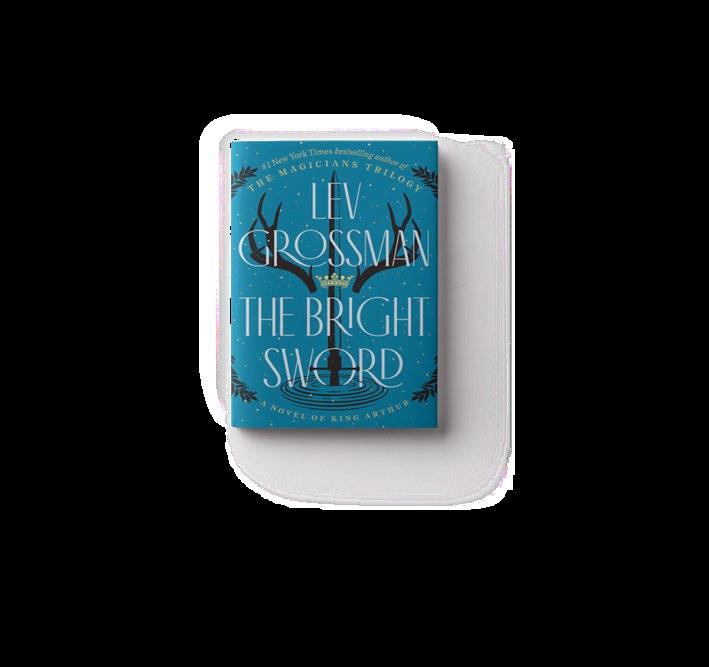


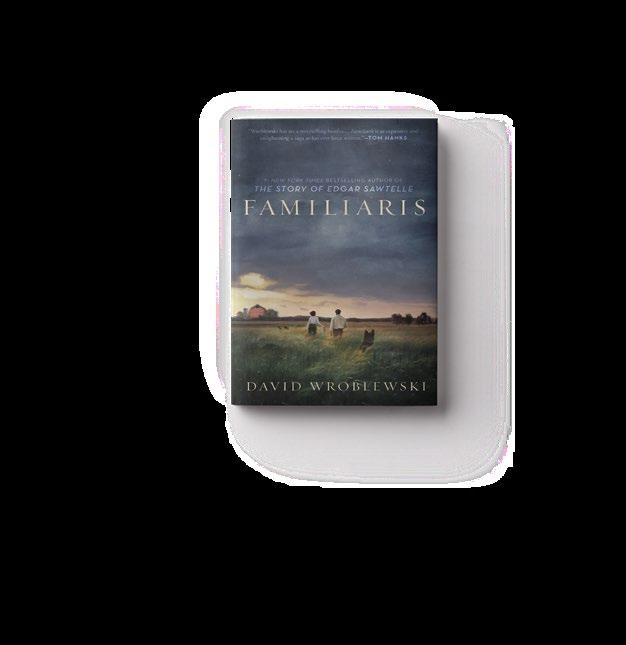

BOOKLIST // FICTION
human—the pain and the love. 3 Margo’s Got Money Troubles By
Terrific characters, rich worldbuilding, deep thoughts about fiction and morality, a love story, and a happy ending. 4 1 4 God Bless You, Otis Spunkmeyer By Joseph Earl Thomas Just stunning. 5 Familiaris By David Wroblewski For all the eons it may take to read it, this colossus of a book will own you. 2 3 5 MAY 15, 2024 43 KIRKUS REVIEWS
Rufi Thorpe
Nonfiction
 ERIC LIEBETRAU
ERIC LIEBETRAU
ENRICHING SUMMER CROWD PLEASERS
WELCOME TO THE annual Summer Reads issue, where we focus our attention on diverting (but not frivolous) books to while away the hours on the beach or by the pool. These four titles offer a range of unique perspectives and intriguing subjects to appeal to an array of reading tastes.
My first two recommendations deal with beauty and body image. In T-Shirt Swim Club: Stories From Being Fat in a World of Thin People (Harmony, June 11), the brother-and-sister writing team of Ian and Alisa Karmel present “a comic and philosophical exploration suffused with hard-won wisdom and charming wit,” according to our starred review. As he recounts, Ian has struggled with body image issues throughout his life, but his comedic approach is both enter taining and refreshingly candid. While Ian used comedy to work through his issues, Alisa, who has also battled weight problems, earned a doctorate in psychology to help others in similar circumstances. As our reviewer notes, “the book could have easily turned
into a clumsy plea for sympathy or a bad-tempered rant, but Ian and Alisa tell their interlocking stories with grace and humor. Ultimately, the book is about resilience and growth; for this reason, it has something to say to everyone.”
As a former senior editor at Allure, Sable Yong is well situated to examine the full spectrum of topics related to beauty and fashion. In a starred review of Die Hot With a Vengeance: Essays on Vanity (Dey Street/HarperCollins, July 9), our critic notes that Yong displays a “clever, self-deprecating sense of humor, and she recounts her career as a procession of stumbles, steps forward and back, and lucky breaks.”
While it is certainly serious, the narrative is never heavy-handed or too dark, as Yong laces the text with page-turning anecdotes and laughs. She is a capable, critical guide through the thickets of the fashion industry, resulting in an essay collection that is “revealing, playful, and heartfelt.”
Next up is the latest book from the consummate multihyphenate, Questlove. Hip-Hop Is History (AUWA/ MCD, June 11) is, as our starred review notes, “a memorable, masterful history of the first 50 years of an indelible American art form,” the ideal follow-up to the broader Music Is History. Anyone interested in hip-hop—from any era of its half-century in existence—is going to devour this riveting book, written with Ben Greenman. Also impressive is the author’s ability to create a narrative that will appeal to seasoned veterans


and newbies alike. Indeed, “Questlove’s instincts as a superfan and artist take this history beyond the hype to something very special.”
Finally, what is a summer reading list without some nature? Adventures in Volcanoland: What Volcanoes Tell Us About the World and Ourselves (Hanover Square Press, June 18) by Tamsin Mather introduces readers to these fascinating yet poorly understood features of the natural world. The author “first became interested in volcanoes during a childhood encounter with Mount Vesuvius,” notes our reviewer, and she keeps us captivated throughout this exciting armchair journey. “Mather combines a personal story with an era-spanning scope, turning esoteric information into a colorful, engaging account.”
Eric Liebetrau is the nonfiction editor.


KIRKUS REVIEWS 44 MAY 15, 2024
A searching history of a time, not so long ago, when the social contract went out the window and Hobbesian war beset America.
As Ganz, the creator of the Substack newsletter Unpopular Front , writes, the early 1990s was a time when social Darwinism pitted the state against the poor, gang wars broke out in big cities, and companies stopped making things and starting dealing in the abstractions of finance. The author credits George H.W. Bush with being “competent within small bounds and small groups,” a fundamentally decent fellow whose clubby Republican Party began to slip into the shadows under the influence of the neo-Nazi David Duke and the Christian nationalist
Patrick Buchanan. Both men set a tone that would grow ever more insistent and extremist, eventually culminating in the rise of Trump. “Duke’s entire career would be characterized by attempts to simultaneously gain mainstream recognition and respect and be the predominant leader of the fringe, subcultural world of the Klan and neo-Nazism,” writes the author, a notion that speaks to the current political landscape in the U.S. Yet those two didn’t act alone: Ganz also pins the rise of Trumpism to the neo-Confederate injections of white supremacist writer and editor Sam Francis and New Rightists who insisted that their conservatism was in fact radicalism, just the sort of reimagined

When the Clock Broke: Con Men, Conspiracists, and How America Cracked Up in the Early 1990s
Ganz, John | Farrar, Straus and Giroux | 432 pp.
$30.00 | June 18, 2024 | 9780374605445
Leninism that Steve Bannon would go on to proclaim a few decades later. All of these characters, writes the author, “looked for inspiration among the ideological ruins of earlier times: nationalism, populism, racism, antisemitism, and even fascism.” From the proto-QAnon-ism of Ruby
Ridge and Waco to the wacky white-shirt populism of Ross Perot, Ganz makes a convincing, well-documented case that everything old is indeed new again.
A significant, provocative work that joins an ugly past to an uglier present in American democracy’s continued decline.
46 Pixel Flesh By Ellen Atlanta 49 Heavyweight By Solomon J. Brager 57 The Bookshop By Evan Friss 45 When The Clock Broke By John Ganz 64 The Island By Nicholas Jenkins 75 What Does Israel Fear From Palestine? By Raja Shehadeh 76 Midnight in Moscow By John J. Sullivan 77 World Class By Grant Wahl 79 Private Revolutions By Yuan Yang These Titles Earned the Kirkus Star
EDITOR’S PICK
MAY 15, 2024 45 KIRKUS REVIEWS NONFICTION
Race for a Remedy: The Science and Scientists Behind the Next LifeSaving Cancer Medicine
Ahmed, Makhdum | Prometheus/ Globe Pequot (242 pp.) | $29.95 July 16, 2024 | 9781633889521
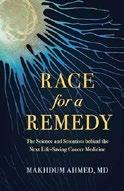
How new cancer medications are invented and marketed.
Ahmed, executive director of AstraZeneca’s research and development in blood cancers, explores “the promise and the perils of drugs and their development adventures.” He offers a general overview of the pharmaceutical industry and its recent history, along with a behind-thescenes perspective on the scientific, economic, and political dynamics of cancer drug development. The author educates readers about how scientists transform molecules into lifesaving or life-extending medicines, the complicated process of FDA approval for new cancer medicines, the intense competition among pharmaceutical companies in the pursuit of technical breakthroughs and the possible massive profits involved, and the prospects for next-generation cancer treatments such as cell therapy and modified antibodies. Several case studies illustrate Ahmed’s claims about how the drug industry operates, and detailed summations of his own experiences in drug development provide a keen sense of the industry’s complexities. Particularly well developed are sections covering the requirements of drug trials and the controversies they sometimes generate. Ahmed’s commentary on the pharmaceutical industry’s ethical character seems balanced overall, and he rightly dismisses conspiracy theories suggesting that companies have cynically suppressed treatments that might cure cancer in favor of marketing lucrative long-term therapies. The author could have written more about the merits of particular national health care policies, as well as where reforms are needed. In a long section discussing the
impact of the Covid-19 pandemic on drug development, for instance, Ahmed is curiously silent about the reasons behind the nation’s failure to respond effectively. A somewhat meandering style and loose organization of topics sometimes compromise the force of the narrative, but the author presents an intriguing insider’s account of his primary subject that should appeal to a fairly wide audience. A revealing survey of the processes of drug approval and the future of cancer treatments.
Pixel Flesh: How Toxic Beauty Culture Harms Women
Atlanta, Ellen | St. Martin’s (384 pp.)
$30.00 | Aug. 6, 2024 | 9781250286222
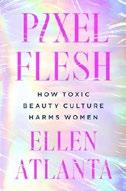
When an expert in the beauty business surveys the field, she finds a bleak and frightening landscape. Atlanta, who has long been a figure in the beauty industry as a writer, editor, and brand consultant, deftly gauges and examines the pressure on young women to be constantly beautiful, fresh, and fashionable. She is brave enough to recount her firsthand experience with beauty culture and supplements her investigation with interviews with influencers, researchers, and young women who religiously follow the trends. She even spent time with Kylie Jenner, the source code for much of the modern beauty business, who in person turned out to be much more ambiguous and uncertain than her social media profile suggests. For many young women, beauty has become an obsession, and they spend much of their life (and money) on skin care routines, diets, and surgical enhancements. Atlanta acknowledges that beauty has always had a commercial aspect, but social media has taken it to a new, ultracompetitive level. Filters and software apps mean that a digital image
can be endlessly improved and perfected, to the point that reality has become detached from what is presented on the screen. The result of all this is stress, depression, and heartache for millions of women worldwide. Far from freeing women, beauty has become another tool of manipulation, and Atlanta concludes that the cycle must end. In the closing chapter, she offers useful advice on breaking the addiction, and it begins with true self-awareness.
“You do not owe anyone perfect, and you don’t owe anyone pretty,” she writes. “Remove the glossy filter that smooths out any negativity, resist the feminine urge to lighten the mood, or to make others comfortable [and] practice radical honesty with yourself and others.”
This book is courageous, revealing, and occasionally painful, and Atlanta writes with verve and authority.
Nobody Cares About Your Career: Why Failure Is Good, the Great Ones Play Hurt, and Other Hard Truths
Ayers Badan, Erika | St. Martin’s (336 pp.) $30.00 | June 11, 2024 | 9781250320582

A former sports media CEO delivers a salty, bracing welcome to the world of work for the aspirationally minded. Nobody cares about your career, indeed. “People may think you’re crazy and have no idea what the fuck you’re doing, and that’s okay,” writes Badan, the former CEO of Barstool Sports, but you should still work out a game plan. The author is forgiving of those who take time to figure it out. As she writes at the beginning of this book, which is as useful to young career-makers as Madeline Pendleton’s I Survived Capitalism and All I Got Was This Lousy T-Shirt, she’s bounced around in jobs that may not have immediately fit in a logical resume-building trajectory. The difference is, when you wander into work that you’re not exactly right for on
Kirkus Star
KIRKUS REVIEWS 46 MAY 15, 2024 NONFICTION
A passionate, engaging combination of history and memoir.
ROOTED
the face of it, find a way to make yourself right for it, leveraging your strengths, learning constantly, and being adaptable. Some of Badan’s advice comes secondhand: She borrows from the time-honored military slogan “embrace the suck,” cops the “hope is not a strategy” business mantra, and shoehorns the Emily Post–ish reminder to write thank-you notes into the middle of a job-seeking pep talk. But there’s plenty of good stuff, including, yes, the reminder that you’re indeed responsible for your own career and therefore must “own your shit,” that work is “the tuition you also get paid for,” and that most limitations are self-imposed and thus candidates for being swept aside. Above all, she gladly makes room for the lessons to be learned from failure: “My goal is to show you that you can be yourself and be successful, that you can fuck up and it will be okay.”
A refreshingly foul-mouthed, smart guide to making it in the business world.
Rooted: The American Legacy of Land Theft and the Modern Movement for Black Land Ownership
Baker, Brea | One World/ Random House (320 pp.) | $28.00 June 18, 2024 | 9780593447376
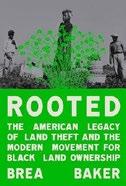
A well-documented study of land ownership among Black Americans and the accompanying land theft. Land ownership in America has long been associated with trauma, going back to the early days of settler colonialism, slavery, and genocide. Baker asks,
“What does it mean to reclaim that tainted history and desecrated land, land rightfully associated with trauma, to become not only a home but also a vehicle for equity?” The author chronicles her grandparents’ early stewardship of land in North Carolina before they were compelled to move north (to New Jersey) with the Great Migration. Seeking to return to their roots, however, Baker’s family eventually came back to North Carolina in 2012, when she was a teenager, and bought 86 acres. The author examines this trend within a broader historical context, beginning with the enormous strides in Black land ownership after the Civil War, when one in five Black heads of household had become property owners, a number that grew “exponentially” from 1870 to 1890. However, with Black ownership came the inevitable “whitewash.” Baker describes the (re)rise of white supremacy in places like Wilmington, where, in 1898, violence broke out, leading to voter intimidation and destruction of Black businesses. The violence forced Black citizens to flee, relinquishing ownership of land to whites. The author notes that the chaos in Wilmington created a “blueprint” for seizing Black property in subsequent riots in Tulsa and Atlanta. The Great Migration lured Black Americans northward to escape, yet by leaving the land, they grew increasingly impoverished. Baker investigates the “complicity” of the Department of Agriculture in allowing Black land theft, and she considers how Black and Indigenous groups have shared land trauma and worked together; the issue of reparations; and Hazel Johnson and the rise of the environmental justice movement. A passionate, engaging combination of history, memoir, and examination of income inequality.
Three Kings: Race, Class, and the Barrier-Breaking Rivals Who Redefined Sports and Launched the Modern Olympic Age
Balf, Todd | Blackstone (350 pp.)
$27.99 | July 2, 2024 | 9798874714178

A sprawling, well-researched account of diverse proto-superstars who popularized swimming in the early 20th century. Balf, author of The Darkest Jungle and The Last River, reconnected with swimming while recuperating from cancer, and his enthusiasm led him to “the origin stories of several of the best swimmers of that time—Americans Duke Kahanamoku and Johnny Weissmuller, and Japan’s Katsuo Takaishi.” The author chronicles the dramatic contests at the 1924 Summer Olympics in Paris, meandering through multiple societies and a generous time frame. “Anything was possible in the record-setting age,” he writes, “and pools were where some of it happened.” Balf convincingly argues that the Jazz Age suited the “emergence of a sport that produced larger-than-life creatures who embodied innovation, physical perfection, and, above all, speed.” At the same time, due to debates regarding speed and technique, “the clash between white and nonwhite athletes was surprisingly prevalent.” The taciturn yet “quietly fierce” Ka ha na mo ku serves as the narrative’s moral core. Startling early accomplishments made him a vessel for Hawaiian cultural fascination, as such athletes “were aware that their athleticism was prized, but not their heritage.” Meanwhile, “Chicago golden boy” Weissmuller was presented as a “great white hope,” even as he concealed his birth in Hungary. As Olympic teammates, “Weissmuller and Kahanamoku were increasingly characterized as championship prizefighters,” and they both performed impressively during the 1924 Games, while “Takaishi led his team to do what
MAY 15, 2024 47 KIRKUS REVIEWS NONFICTION
no Asian swimmers had done before: perform competitively at the Olympics.” Balf’s storytelling highlights the racist absurdities and media frenzies of the age, and he ably captures the urban details and antic competitive spirit. The detailed focus on individual sporting contests, and the evolution of crawls and strokes, may seem repetitive to readers without a prior interest in the mechanics of swimming. A worthwhile re-creation of a fast-fading athletic epoch.
Back Roads and Better Angels: A Journey Into the Heart of American Democracy
Barry, Francis S. | Steerforth (560 pp.)
$35.00 | June 4, 2024 | 9781586423889
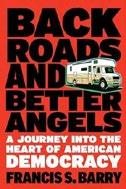
A journey down a forgotten transcontinental route in search of “the character of the country.”
“The Lincoln Highway has always been more a vision than a road,” writes Barry, a Bloomberg opinion columnist and member of the editorial board covering national affairs.
“And like the Mississippi River it crosses, its path was never fixed. It shifted various times in the years following its inception, and it has continued to adapt to the changing landscape around it.” The author decided to chase down that vision in 2020, “as Donald Trump’s presidential candidacy enthralled conservatives, enraged liberals, and sent both into delirium.” Piloting a 25-foot Winnebago, the author and his wife found people with much to say, some defying the expectations of both Democrats and Republicans, some speaking to “the beauty and the brutality of our shared heritage.” Though the author is occasionally short on travelogue-standard description, he is a capable reporter and digester of history, with an eye for sidelong stories. For example, he turns up an incident, in which
A literary biography of Judy Blume argues for her lasting impact.
THE GENIUS OF JUDY
Confederate sympathizers set fire to a Manhattan hotel to avenge Sherman’s torching of Atlanta, with an alarmed theater audience shushed by Edwin Booth, the noted Shakespearean actor, whose brother John Wilkes happened to be on hand. Barry found Philip K. Dick’s grave in a tiny prairie town, talked to gun rights advocates and eyewitnesses to murder, and, abandoning the Lincoln Highway for a southern route home, looked at the Mexican border and visited the family of the model for pancake icon Aunt Jemima. Tom Zoellner’s The National Road does much the same work more fluently and economically, but this is a readable, well-considered work of enterprise journalism all the same.
Fans of road trips, blue highways, and backwater Americana will enjoy traveling vicariously with the author.
The Genius of Judy: How Judy Blume Rewrote Childhood for All of Us
Bergstein, Rachelle | One Signal/ Atria (288 pp.) | $28.99 July 16, 2024 | 9781668010907

A literary biography of Judy Blume argues for her lasting impact.
“What’s the secret ingredient that makes Judy Blume’s work so potent?” So asks Bergstein, author of Women From the Ankle Down , in her introduction to this book, revealing her personal admiration for the groundbreaking author and her thematic mission. Braiding together cultural context,
Blume’s biography, and literary analysis, Bergstein answers her own question book by book. Of Are You There God? It’s Me, Margaret (1970), Bergstein argues that what makes the protagonist “special” is that “she isn’t remarkable—but she is real.” The author’s exegesis of arguably Blume’s most famous book draws on elements of her subject’s adolescent years and the debate over sex education that roiled the U.S. in the late 1960s, as well as a close reading of the title itself. It’s an effective treatment, which Bergstein carries into her discussions of Blume’s later books. Her examination of Forever (1975) which “young readers were smuggling…around their social circles like contraband,” touches on such cultural landmarks as the adoption of tampon use by teenagers and the 1972 Supreme Court case that legalized access to contraception for unmarried people. In addition to Blume’s papers and published accounts, Bergstein draws on interviews with librarians, educators, and others. These yield insights into, among other topics, Blume’s relationship with her legendary editor, Dick Jackson, and book banning, both the 1980s wave that found Blume’s books in the crosshairs and the present-day one. Bergstein occasionally digresses, devoting more time to kindred spirit Norma Klein’s work than feels necessary, and she sidesteps opportunities to defend Blume’s writing against critics who complain about low literary quality. Nevertheless, readers can’t help but come away with a renewed appreciation for Blume and her legacy.
A timely appreciation of an author who indeed “represent[ed] something much bigger than herself”—and still does.
KIRKUS REVIEWS 48 MAY 15, 2024 NONFICTION
The Movement: How Women’s Liberation Transformed America 1963-1973
Bingham, Clara | One Signal/Atria (592 pp.) $32.50 | July 30, 2024 | 9781982144210

Historical study of “when women…found the freedom to be who they needed and wanted to be.”
Journalist Bingham, author of Witness to the Revolution , draws on abundant interviews and oral history archives to create a brisk, firsthand account of the women’s movement, beginning with the publication of Betty Friedan’s The Feminine Mystique, encompassing the founding of the National Organization of Women and Ms . magazine, and ending with the Supreme Court’s legalization of abortion in 1973. Among those bearing witness to the crucial decade are Pauli Murray, Eleanor Holmes Norton, Shirley Chisholm, Ruth Bader Ginsburg, Margo Jefferson, Vivian Gornick, Billie Jean King, and Gloria Steinem. All relate their frustration in confronting the legal, political, medical, and economic limitations on women’s lives. As Bobbi Gibb, the first woman to run in the Boston Marathon, put it, women repeatedly got one message: “You’re in this box. Here’s the box. Here are the bars. I’m sorry, that’s as far as you can go.” Several women bring up the confluence of the women’s movement, the Civil Rights Movement, and the anti-war movement. Others testify to the “anxiety-ridden secret lives” of women who had abortions—including Gornick, who found a medical resident who performed the abortion, gave her antibiotics, and checked in with her every day for the next week. “It was as good as it could be,” she recalls, “but it was illegal and it was frightening.” Nora Ephron, among others, recounts discrimination in employment. When she applied for a job at Newsweek, she
was hired as a mail girl, while men with the same qualifications were hired as reporters. “It was a given in those days,” she said, “that if you were a woman and you wanted to do certain things, you were going to have to be the exception to the rule.”
A vivid contribution to women’s history.
Kirkus Star
Heavyweight: A Graphic Memoir
Brager, Solomon J. | Morrow/ HarperCollins (336 pp.) | $25.99 paper June 25, 2024 | 9780063205956

A cartoonist and writer reflects on intergenerational trauma and its relationship to modern colonial violence.
Family stories about heroic escapes during the Holocaust mesmerized Brager almost as much as those about their greatgrandfather Erich, mythologized as the man who beat Joseph Goebbels in a boxing match. However, as Brager shows, those stories—along with the unarticulated events that led to the formation of their transgender identity—also haunted the author. Unable to speak directly about the trauma surrounding their transition, Brager wrote about family Holocaust stories instead, which graduate school history professors rejected as too personal. In this debut, the author uses their formidable skills as an artist to transform that research journey into a unique comic book–style narrative that interweaves tales of their inherited past with their own imperfect recollections. Grounding the narrative in work by psychiatrists, historians, and Holocaust survivors like Primo Levi, Brager achieves not only critical distance from their own work, but also the ability to see how other legacies of oppression subtly intersected both the Holocaust and their own life. In considering a gold bracelet inherited from their mother, for example, Brager was able to visualize their connections to the
original owner, their great-grandmother, Ilse, and the bracelet’s giver, Erich, and link a historical artifact to a real event—in this case, Ilse’s escape from Germany. Brager shows readers how the bracelet, made in French colonial Morocco, functions as evidence of the subtle, unquestioned ways that colonial violence could embed itself in the histories of other oppressed people. As the author probes the many ways in which cultures intersect, they challenge readers to make deeper, more complex connections among self, family, and the many histories in which the self necessarily—but sometimes unknowingly—participates.
An intense, brilliantly conceived graphic memoir announcing the arrival of a new talent to watch.
Complicit: How Our Culture Enables Misbehaving Men
Bravo, Reah | Gallery Books/ Simon & Schuster (240 pp.) | $27.99 June 18, 2024 | 9781982154745

Bravo unpacks “our complicity” by assigning responsibility for women’s mistreatment at the hands of men to internalized patriarchal norms. In 2017, the author accused Charlie Rose of sexual misconduct toward her a decade earlier. In the introduction, she examines how “women are conditioned to enable their own mistreatment.” From various angles, she attacks the blaming of victims, heteronormative gender roles, and the forcing of women, in the interest of self-preservation, to choose “the least shitty of shit options.” Bravo weaves stories of women’s interactions with predatory men with social psychology studies about unconscious acceptance of power biases, and she quotes a wide variety of other sources, ranging from bell hooks to Louis C.K. “It’s easier to assume that we simply failed…than to recognize how conditioned we’ve been to acquiesce to men,” writes the
MAY 15, 2024 49 KIRKUS REVIEWS NONFICTION
author. Much of the book is repetitive, but Bravo’s points are distinct and often spot-on—e.g., “We’re so boxed in by our simplistic, all-or-nothing conception of consent....The patriarchy has never provided easily accessible, effective scripts for confronting male entitlement.” The author acknowledges her privileges as a White woman in a racist society. “If you’re a white woman like me, you’ve been given ample opportunity in recent years to reflect on systemic racism and how you’re implicated,” she writes. Throughout, the author’s first-person-plural usage may offer inclusion for a specific group of readers, but it limits both her audience as well as those who may identify with some of the messages and relayed experiences yet don’t care to be spoken for. Following 200 pages largely filled with examples of women’s mistreatment, Bravo names the single solution as “relentless imagination” and asks, “Can we truly conceive of our lives outside of dominant, patriarchal frameworks?” A work of candor that incites more questions than illuminates answers or a path forward.
Get Honest or Die Lying: Why Small Talk Sucks
Charlamagne Tha God | Black Privilege Publishing/Atria (240 pp.) | $28.99 May 21, 2024 | 9781982173791
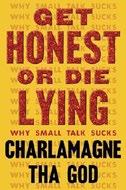
The famous Black radio and TV personality makes the case for raising the bar on the quality of our conversations.
Charlemagne Tha God, author of Black Privilege, hates small talk. Rather than using the traditional definition of small talk as idle chatter, the author describes it as “a symbol of our lack of authentic communication. Both as individuals and collectively.” Throughout the book, he provides examples of types of small talk and the damage that it can do. In one chapter, he discusses how right-wing
politicians often excel at unvarnished, blunt conversation, a trend that garners them votes while politicians like Hillary Clinton and Kamala Harris—whom the author admires—lose support due to their perceived lack of authenticity. Elsewhere, the author critiques his own history of emulating “shock jocks” and states his new commitment to elevating the level of conversation on his morning radio show, The Breakfast Club. He also spends time criticizing the social media landscape that has led to young people’s sense of “entitlement” that he feels is both detrimental to their development and uncharacteristic of previous generations. “Back in the day,” he writes, “no one felt the need to put on a front when they were just starting out.” Throughout, Charlemagne returns to the premise that honest conversations can change the world. “Now I want to encourage you to make rejecting small talk a priority in your life,” he pleads, “because small talk is killing us as a society.” The author’s voice is frank, funny, and intimate, and his capacity for vulnerability drives his storytelling. At times, his signature brashness crosses the line—as, for instance, when he unnecessarily repeats verbatim a homophobic joke his father used to tell—and his analysis can lean toward the patriarchal. Not without flaws, but a compellingly honest manifesto about authenticity.
Fall of Civilizations: Stories of Greatness and Decline
Cooper, Paul | Hanover Square Press (576 pp.) | $35.00 July 23, 2024 | 9781335013415
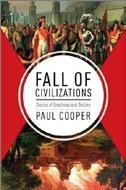
A broad study of civilizations in which “the social fabric disintegrated, cities were left empty and buildings fell into disuse and disrepair.”
In a book based on his successful podcast of the same name, British journalist Cooper asserts that Homo sapiens already possessed fire, language, tools, and agriculture
when, around 5000 B.C.E, organized societies appeared in the fertile crescent in the Middle East. Writing, the wheel, bronze, iron, and organized government appeared soon after and spread widely, although not universally. Early governments simply enforced order within a region and defended it against rival governments. Those most successful prospered and produced the arts and technology. Cooper offers few surprises in his treatments of ancient Sumeria, Assyria, Han China, and Rome, but even history buffs will glean plenty of interesting historical information as he moves forward through the Khmer, Maya, and Vijayanagara India. The author concludes with societies in Africa, Mesoamerica, and Easter Island, which did not decline but rather disintegrated under brutal colonial exploitation. It’s impossible to describe the end of a society while ignoring its beginning and growth, so this book turns out to be a straightforward history of civilization in general. That’s a tall order, but Cooper gives it a valiant, if fairly conventional effort, emphasizing great men and war. For a broader view that includes culture, economics, and daily life, readers should consult individual histories or Will and Ariel Durant’s 11-volume series The Story of Civilization. Cooper’s predictable epilogue on the possible collapse of current civilizations dismisses the old favorites (nuclear war, disease, overpopulation) in favor of climate change. Current efforts to slow global carbon emissions have failed, and further heating is guaranteed in the next few decades, so it’s reasonable—if disheartening— to predict that some modern Western civilizations may become new chapters in this genre.
A mostly painless world history.

For more on the fates of ancient civilizations, visit Kirkus
KIRKUS REVIEWS 50 MAY 15, 2024 NONFICTION
online.
Miss May Does Not Exist: The Life and Work of Elaine May, Hollywood’s Hidden Genius
Courogen, Carrie | St. Martin’s (400 pp.) $30.00 | June 4, 2024 | 9781250279224

A biography of an iconic entertainer.
Courogen makes an engaging book debut with an appreciative biography of comedian, director, playwright, and actor Elaine May (b. 1932), as famous for her prickly personality as for her brilliant, sardonic wit. Drawing on abundant published material and interviews, the author chronicles May’s roller-coaster career. The daughter of peripatetic entertainers, by the time she was 10, she had been enrolled in more than 50 schools. She left school for good when she was 14, married when she was 16, and by the next year had a baby. Leaving her daughter with her mother, in 1952, she hitchhiked to Chicago, where she met Mike Nichols. “Mike and Elaine,” Courogen writes, “found their possibilities in a shared interest in people’s pretentious natures (including their own), a mutual fascination with betrayal, and above all else, an unending love for language.” The two created a nightclub act that catapulted them to fame on TV and Broadway, as well as “a blur of nonstop gigs.” But in 1961, Elaine, bored and restless, quit. While Nichols went on to become an award-winning director, May’s career sank for years before it revived. Courogen recounts in detail her reincarnation as a director, actor, and, notably, script doctor, “someone
A fast-moving,
who could make your project better, often at the eleventh hour.” By the mid-1980s, “she had gone from someone who was practically unhireable to someone who was not only constantly booked and busy, but able to turn down work left and right, agreeing only to scripts she found truly interesting or exciting.” Though Courogen thoroughly documents May’s career, her inner life remains elusive; as someone who knew May commented, she’s “wickedly smart, wickedly funny, wickedly clever. But you could never get to the center of her.”
A sympathetic yet somewhat incomplete portrayal of a unique talent.
Dark Wire: The Incredible True Story of the Largest Sting Operation Ever
Cox, Joseph | PublicAffairs (352 pp.)
$32.00 | June 4, 2024 | 9781541702691
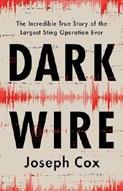
The FBI proves that if you can’t beat them, then joining them can work out just fine. Investigative journalist Cox, co-founder of 404 Media, opens with a former football player named Owen Hanson, who graduated from real estate to sports betting to international drug trafficking. Though he made lots of money, he wasn’t smart enough to change the default passcode on his encrypted phone, which enabled the feds—aided by Australian police, since Hanson did much of his trade there—to track him. The author then moves to the crux of the story: the land-rush business in supposedly
blend of white-hat technology and
secure phones, which allowed criminals (and some legitimate businesspeople) to conduct their business without danger of being monitored. Through brilliant technosleuthing, investigators managed to break down the electronic security doors of a phone company called Phantom Secure, which sent its customers scurrying for a new provider. In a stroke of fraught genius, the FBI cooked up its own company, called Anom, which carried with it all sorts of problems—not least what might have happened if, too successful, “law enforcement knocked out Anom’s competition in the secure phone industry.” As Cox relates, that came close to happening; more problematic was that the FBI, after building up a customer base thousands strong, had a firehose of data to analyze. Still, it worked, so much so that one day a few yeas ago, police officials around the world, in a coordinated international operation—a “nonstop, intercontinental line of dominoes”—arrested hundreds of criminals and seized a dozen tons of cocaine, 1.5 tons of meth, and scores of illegal weapons, all courtesy of that fake phone company. Cox’s story is full of geekery, but it’s also a vivid, captivating tale of true crime and true punishment.
A fast-moving, exciting blend of white-hat technology and old-school gumshoe drudgery.
The Captive Imagination: Addiction, Reality, and Our Search for Meaning
Dakwar, Elias | Harper/ HarperCollins (352 pp.) | $32.00 June 4, 2024 | 9780063340480

A pertinent study of the possibilities for reconceiving addictive behaviors. In this provocative book, Dakwar, a professor of psychiatry at Columbia,
MAY 15, 2024 51 KIRKUS REVIEWS NONFICTION
old-school
DARK WIRE >>>
exciting
gumshoe drudgery.
THE KIRKUS Q&A: RONALD DRABKIN
How a novice author stumbled on the great untold story of a WWII double agent.
BY LAURIE HERTZEL
RONALD DRABKIN HAD never written a book before when he stumbled across the story of Frederick Rutland, a British aviation hero turned spy turned double agent, now the subject of Drabkin’s Beverly Hills Spy: The Double-Agent War Hero Who Helped Japan Attack Pearl Harbor (Morrow/ HarperCollins, Feb. 13).
Rutland became known as “Rutland of Jutland” after the World War I battle of Jutland, when he flew his floatplane over the German fleet and radioed their coordinates back to the British. On his return, though, his plane malfunctioned. He set it down on the waves, climbed out onto the wing, fixed the engine, and flew off again, all while shells whizzed overhead.
Rutland moved to Los Angeles between the two world wars and began selling information about Pearl Harbor, the U.S. Navy, and advances in American aircraft to Japan. Later, when the attack on Pearl Harbor appeared imminent, he went to the FBI and offered to sell them what he knew.
His story had everything—movie stars, infidelity, staggering wealth, and, of course, deceit, betrayal, and regret. We caught up with Drabkin via Zoom from his home in Tokyo; our conversation has been edited for length and clarity.
Frederick Rutland is an amazing character—audacious, fearless, charismatic, brilliant, and possibly amoral. How did you come across his story?
It was just dumb crazy luck, really. My father worked in military intelligence—he was a spy, right?—in Los Angeles in the 1950s. He passed away five or six years ago, and in cleaning out his house I found all this old espionage stuff and got


Chaplin. And maybe I’m the first person to see this.
curious and started looking into it.
I Googled around and found Rutland’s name. [The information] looked similar to what my dad had done—espionage at the same time, same place. So I sent the FBI a Freedom of Information Act request on Frederick Rutland. It came back as “newly declassified.” I’m reading this and I’m thinking, Wow, this is really crazy stuff. Here’s Boris Karloff, here’s Charlie
Why has Rutland been so little heard of until now? It was covered up. The FBI was a little late to the game around espionage before Pearl Harbor. Here they had this English war hero working with Charlie Chaplin and Boris Karloff in plain sight. He’s not famous now, but at the time he was very, very famous. He was in the society papers every day. And this was embarrassing as all get-out.
The FBI flat out didn’t believe him when he said that the Japanese were going to attack?
He said, Look, the Japanese are going to attack the U.S. and I’ll know about this; let me help the U.S. out. The FBI didn’t believe him. They thought he was just a slimeball. They had him
quieted. They put him on a plane to England, where he was tossed into jail with no charges.
If you get back into the U.S. mindset at the time, they were worried about Nazis; they weren’t really thinking about Japan. It didn’t seem like a real threat.
Rutland had positioned himself as a businessman. He was selling aviation information to Japan, but he did so openly. So was he really a spy? Or was he just a businessman?
Well, that’s a really good question. Were he to do that today, it would be against the law. The laws were different then. Also, he was British, not American. As a British citizen he was less subject to U.S. laws.
And he wasn’t selling British secrets.
NONFICTION // Q&A
KIRKUS REVIEWS 52 MAY 15, 2024 Aiko Suzuki
No. And the British never found anything against him either. He didn’t break any British laws.
Was he ever charged with any crime?
Never charged with a crime. He spent a good 3.5 years in prison. And they kept him in there a long time without charges. He started out in Brixton prison and then they moved him to the Isle of Man.
Later, his American daughter went to Britain and pleaded with him to fight to clear his name, and he was like, “I was never charged with a crime. I was put in prison without charges.” You can’t clear your name if you haven’t been accused of a crime.
How much did class play into his story?
The other British pilots were highly educated at Oxford and Cambridge. He was the son of a day laborer, the lowest of the low. He joined the Royal Navy at age 14, lying about his age because he was hungry. He was 5-foot-2, 75 pounds. He spent 10 years doing every job in the Navy. And he knew everything about all the machines.
When he did his mission with the “sticks-and-strings” plane, the other fellow in the plane was a Cambridge fellow. He’d read the classics, but there was no way he could fix the engine. But Rutland had a chip on his shoulder because of the way the others treated him.
At what point did you decide this needs to be a book? And how did you go about it?
I live over in Japan and I made some friends here that are in the naval forces today.
They were fascinated. And they started looking into the Japanese side of the story, like who sent him to Pearl Harbor to look around. I had both sides. I had the U.S. side, the Japanese side, and I thought, Someone needs to tell this story
Did you know how to write a book?
That’s hard, right? Obviously, I leaned on a bunch of
people, took a writing class; I asked people. It’s really hard, as a first-timer, if you say, “I’m writing a book; can you give me some advice?” I think published authors get that every day.
I was really surprised to read how determined Japan was to attack the United States for so many years before World War II. Why were they so hostile to the U.S.?
He’s not famous now, but at the time he was very, very famous. He was in the society papers every day.

Beverly Hills Spy: The
War Hero Who Helped Japan
Attack Pearl Harbor
Drabkin, Ronald Morrow/HarperCollins | 272 pp. | $29.99 Feb. 13, 2024 | 9780063310070
There were a bunch of reasons—first of all, the clash of powers in general. Second, they needed oil and knew that the U.S. was threatening to cut off their oil—and eventually did cut it off. And at the end of World War I there was a proposal to the League of Nations against racism, saying that every country should be treated the same, no matter the race. And Japan was very much in favor of that. The British actually were pushing for it, but it was killed by the U.S. and Australia. And then the U.S. banned Japanese and Chinese immigration. So there was a feeling in Japan of their being insulted. You put all that together.
Did Rutland see himself as a traitor? Did he feel regret for what he did?
I think for a long time he didn’t think he was doing anything wrong at all. He had a sort of chip on his shoulder about how he’d been treated and he felt it was justified.
This would make a great movie. Has anyone talked about movie rights?
Yeah, my agent’s talking to—there’s a lot of interest from Hollywood people.
What happened to the research you did on your dad? Will that be a book? I didn’t find a lot of info. Some authors will talk about, Do you have a book, or do you have anecdotes ? For him, I have a bunch of anecdotes.
Laurie Hertzel is a writer in Minnesota.
Q&A // NONFICTION
Double-Agent
MAY 15, 2024 53 KIRKUS REVIEWS
draws on his extensive clinical and research experience to offer what he calls “a work of imagination” that reframes addiction as a complex and universal form of meaning-making. What distinguishes addicts from the “normal,” he argues, is simply a more extreme reliance on finding comfort in a ritualized symbolic world. Such worlds are made up of stories, and understanding the suffering that informs the patterns of anyone’s storytelling can be liberating. In several insightful case studies, the author introduces patients with representative problems related to addictive behavior and sets forth the possibilities he envisions for therapeutic interventions. His own wide-ranging commentary places these personal struggles in relation to canonical works of philosophical and imaginative literature—such figures as Plato, Shakespeare, Cervantes, Goethe, Nietzsche, and Schopenhauer appear throughout. Dakwar also carefully notes how the “trance of Western culture” can blind us to disabling prejudices and perpetuate harm. A balance of reverence and irreverence toward past understandings of addiction is, in fact, characteristic of the book, which frames itself, with some credibility, as breaking new ground in understanding healing possibilities. Though the author can seem self-indulgent in his striving for poetic expressiveness, he ultimately offers a compelling overview of a modern crisis along with plausible suggestions for possible avenues of mitigation. Dakwar establishes interesting links between addiction and “systems that perpetuate suffering, such as the war on drugs, social iniquities, and the correctional-industrial complex.” Finally, the author is persuasive in his suggestion that “there is a great deal that addiction can teach us about the many ways we strive for a better world, while at the same time destroying one another, the earth, and ourselves.”
A potent, incisive reconsideration of a fundamental human behavior.
The Originalism Trap: How Extremists Stole the Constitution and How We the People Can Take It Back
Dennie, Madiba K. | Random House (304 pp.) | $28.00
June 4, 2024 | 9780593729250
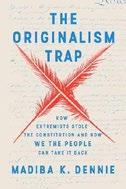
An urgent argument against the seemingly prevailing interpretation of the Constitution today, with no room for anyone but well-to-do white Americans.
“The Declaration of Independence… tells us that government legitimacy requires consent of the governed.” So writes legal scholar Dennie, who maintains that this foundational tenet has been abandoned by a government active in disenfranchising the governed, especially minority voters and especially at the level of the judiciary. Many leading jurists subscribe to the theory of “originalism,” which holds that if it’s not in the Constitution as the Founders wrote it, then it’s irrelevant. This leads to legal gymnastics, of course. There’s no specific statement in the Constitution permitting gun control, allowing the Supreme Court to declare that regulation is beyond the law. However, “when it comes to regulating abortion, a lack of past regulation is no barrier to a legislative free-for-all in my uterus.” Advocating for “inclusive constitutionalism,” Dennie argues that the law is an evolving instrument—one that might recognize, for instance, that an AR-15 is not a flintlock—and that there’s no compelling reason for the Supreme Court to engage in historicism in the first place. And yet, there we are, the Supreme Court maintaining that the Constitution is frozen in time and inalterable. More feats of gymnastics ensue: The Court argues that racial gerrymandering is “justiciable” while political gerrymandering is not, when in fact so much political gerrymandering is designed to disempower non-white voters. Originalism, Dennie concludes in this cogent text, keeps the nation “from achieving a functioning
democracy,” which would appear to be the point—and, she concludes, it will require a popular upswell of democratic activism, to say nothing of new laws and a new Court, to shake loose from originalism once and for all.
A compelling case for considering the Constitution as palimpsest and not Mosaic tablet.
I Shouldn’t Be Telling You This: (But I’m Going to Anyway)
Devantez, Chelsea | Hanover Square Press (336 pp.) | $29.99 June 4, 2024 | 9781335455079
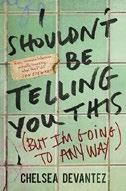
How a young woman with the odds stacked against her built a life of creativity and love, with her sense of humor as antidote, superpower, and best revenge. In loose essays revolving around the women in her life—her mother and godmother, close friends, celebrity role models, colleagues in the comedy business, etc.—Devantez wisecracks and trash-talks her way through her autobiography. Her story begins in poverty and under the thumb of her mother’s bad choices in men—“Limoncello,” who she believed was her biological father, and “Bubba,” the river-rafting guide who replaced him; zigzags through her coming-of-age as a writer and performer in New York and Chicago; and ends with a heartwarming nuptial event including numerous bad-ass bridesmaids and a “Museum of Us” with mannequins wearing the clothes from the couple’s first date. The author provides useful lessons on how to throw a fun wedding, survive a toxic friendship, deal with finding out you were fathered by a sperm donor; and navigate the complex and often confining hoops of a career in comedy. Several blurbers use the word raw, including
KIRKUS REVIEWS 54 MAY 15, 2024 NONFICTION
her former boss, Jon Stewart (her writing for him was Emmy nominated), and they mean the good kind of raw: in your face, edgy, vulnerable. However, the narrative is also the other kind: undercooked. Without chronological order, the overall sense of story and momentum are less powerful than they should be, and more vigorous streamlining would have improved the text. What the author characterizes as the most important story, a “Big Scary Domestic Violence Thing,” is redacted, apparently for legal reasons, throughout the essay—frustrating for the author and readers alike. Devantez loves celebrity memoir, hosting a Glamorous Trash podcast on this topic; her listeners will eat this book up just as it is. Funny, sad, overwhelming, and full of good intentions and sound advice.
This Earthly Globe: A Venetian Geographer and the Quest To Map the World
di Robilant, Andrea | Knopf (272 pp.) $30.00 | June 18, 2024 | 9780307597076
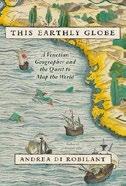
A deeply researched look at the editor and author of one of the “great publishing feats” of the 16th century. Born in the age of discovery, Venetian scholar Giovanni Battista Ramusio (1485-1557) worked in official capacities as a minister, but he also tirelessly organized information that seeped out in the form of journals and letters of new discoveries across the globe. These accounts described Magellan’s circumvention of the world, Cadamosto’s journey along the West Coast of Africa, Jacques Cartier’s travels in Canada, and Pizarro’s conquest of the Incas in Peru. Published in three volumes from 1550 to 1559, Ramusio’s Navigationi et Viaggi introduced much of the heretofore unknown
An erudite work that shows how one devoted scholar opened up an entire realm of knowledge.
THIS EARTHLY GLOBE
geographical knowledge about three continents, covering Africa and Southeast Asia; then the New World; then Asia and the Muslim lands. In this elegant history, di Robilant, author of Irresistible North and A Venetian Affair, engagingly traces Ramusio’s vast scholarship, which began with his position as an editing assistant to Aldus Manutius, the legendary Venetian publisher of the classics. Working as a clerk in the chancery, then as the secretary to the senate, Ramusio moonlighted as a geographer, helping to publish Strabo’s Geography, and he was highly knowledgeable about classical scholars, who knew little of the layout of the globe. Over decades, Ramusio kept up with dramatic changes in exploration, including works by Antonio Pigafetta, one of the few to return from Magellan’s venture; Muslim convert John Leo, who traveled extensively in Africa; contemporaries Ludovico di Varthema and Cazazionor, who chronicled India and Ceylon; Andrea Navagero, who left a “treasure trove of first-rate material” about the bloody excursions of the Spanish in the New World. Among other richly detailed topics, di Robilant also examines Ramusio’s revisitation of Marco Polo’s journal.
An erudite work that shows how one devoted scholar opened up an entire realm of knowledge.

Did Everyone Have an Imaginary Friend (or Just Me)?: Adventures in Boyhood
Ellis, Jay | One World/Random House (288 pp.) $29.00 | July 30, 2024 | 9780593243190

An award-winning Black actor reflects on growing up with an imaginary companion. As Ellis, a star of the HBO show Insecure and other TV shows and films, recounts, he created his imaginary friend, Mikey, when he was a “behaviorally challenged” young boy. An only child who was also part of a military family, the author suggests that loneliness was not the only reason Mikey, who had all the cool Ellis did not, emerged. Equally important was his place as a Black boy in an alluring but dangerous world that bombarded him with “many mixed messages of how to be—what was cool, what was right, who to emulate, who to disavow.” At first, his parents, especially his mother, tolerated and even encouraged the imaginary friend play. However, that stopped when “Mikey got [Ellis] into a lot of trouble” by “encouraging” Ellis to play pranks like locking other children in the bathroom of a local youth center. Though Mikey sometimes made Ellis look “like I had a mental illness,” his imaginary presence allowed the author to lean into the performativity that helped him “not… give a f$*k,” tap into a latent talent for acting, and learn to feel more comfortable around other kids. Mikey all but disappeared in high school, when Ellis found camaraderie in band and especially basketball, which taught him skills like “listening…and knowing when not to try
MAY 15, 2024 55 KIRKUS REVIEWS NONFICTION
For more titles by Andrea di Robilant, visit Kirkus online.
and muscle my way through something to prove I was right.” In turn, these lessons helped Ellis create the “masks” that afforded the kind of protection Mikey offered, not just from the pains of growing up, but from the racism that surrounded him in school and on the street. As Ellis explores a common childhood experience, he also offers insight into the power imagination holds for young people rendered especially vulnerable by race. A funny, honest, and moving memoir.
Long Haul: Hunting the Highway Serial Killers
Figliuzzi, Frank | Mariner Books (272 pp.)
$25.99 | May 28, 2024 | 9780063265158
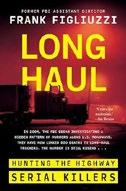
A former assistant director of counterintelligence for the FBI delves into the work of a special unit that examines the link between truckers and highway serial killings.
Figliuzzi, author of The FBI Way, first learned about the agency’s Highway Serial Killings Initiative in 2021. The criminal analyst who told him about HSK revealed that agents had gathered enough evidence to link long-haul truckers to a shocking 850 murders, many of them unsolved. To better grasp the group’s mission, the author ventured back into the field to study not only trucker subculture, but also the women mostly likely to fall victim to trucker serial killers. For one week, he rode the highways with Mike, a young man early into his trucking career, to get a sense of the everyday challenges and hardships truckers faced and the personality types that would be attracted to the lifestyle. Figliuzzi also interviewed a retired trucker named Dale: An alcoholic
loner and gun-owner, Dale ticked “boxes on a crime analyst’s HSK checklist” that the more sociable Mike did not. From the leading academic researchers, the author gained insight into the ways prostitution and human trafficking intersected with truck stop culture to create conditions that predators could exploit to their advantage. But it was the female survivors of trucker abuse that gave Figliuzzi the most harrowing glimpses into the depths of this disturbing branch of trucker subculture. Wounded by early trauma, these women became targets of unscrupulous individuals who used drugs to lure them into situations of involuntary servitude that included prostituting themselves to truckers. As the author brings to light the important work of a little-known FBI investigative unit, he illuminates the dark underside of an industry that, while essential, is also brutal and unforgiving.
Compelling reading for true-crime enthusiasts, especially those intrigued by the psychology of serial killers.
The Talented Mrs. Mandelbaum: The Rise and Fall of an American Organized-Crime Boss
Fox, Margalit | Random House (336 pp.)
$32.00 | July 2, 2024 | 9780593243855
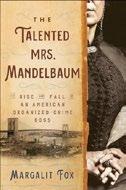
A biography of “the nucleus and center of the whole organization of crime” in late-19th-century New York City. Fredericka “Mother” Mandelbaum (1825-1894) and her family worked as “itinerate peddlers” in central Germany before emigrating to the U.S. in 1850, settling into a community of fellow German
An engrossing portrait of an unlikely criminal mastermind.
Jews on the Lower East Side of New York. Mandelbaum found her calling as a “criminal receiver,” a fence for stolen goods, systemizing property crime in what developed into a lucrative business. At the time, professional crime was proliferating due to the advent of easily transferable “greenbacks,” paper money, in the 1860s. Mandelbaum was seen as an upstanding member of the community, a generous donor to her synagogue, who hosted many a corrupt police officer and Tammany Hall official at her glamorous dinner parties. She was soon seeding the money needed for sophisticated bank heists. Fox, the author of The Confidence Men , describes the Mandelbaum-sponsored 1869 robbery of Ocean National Bank at length. Entrapped and arrested for trading in stolen silk, Mandelbaum jumped bail and escaped to Canada. Because there was no extradition treaty between Canada and the U.S., she evaded prison, though she considered expatriation “a kind of living death.” Throughout this extraordinary life story, Fox explores larger issues of how organized crime grew during the Gilded Age of municipal corruption and stark inequality. The author shows how Mandelbaum “was marginalized three times over: immigrant, woman and Jew,” but nevertheless became New York’s first female crime boss by having the right skill set as criminal professionalism blossomed. Renowned for both her “motherliness” and business acumen, Mandelbaum headed what became the “de facto Ladies’ Auxiliary of Tammany Hall.” A former accomplished writer of in-depth obituaries for the New York Times, Fox succeeds in rescuing a once-notorious public figure from historical obscurity. An engrossing portrait of an unlikely criminal mastermind.

To read a review of The Confidence Men, visit Kirkus online.
KIRKUS REVIEWS 56 MAY 15, 2024 NONFICTION
THE
TALENTED MRS. MANDELBAUM
Kirkus Star
The Bookshop: A History of the American Bookstore
Friss, Evan | Viking (416 pp.) | $30.00 Aug. 6, 2024 | 9780593299920
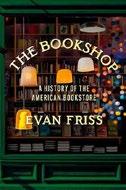
A past and present who’s who of America’s diverse bookstores.
Historian Friss, the author of The Cycling City and On Bicycles, begins with a description of his visit to Three Lives Bookstore in New York City, the first of many encounters with booksellers across America. In Philadelphia, master entrepreneur Benjamin Franklin was “a shopkeeper who sold books” and many other products, and in 1828, the Old Corner Bookstore was born in Boston. Over the next few decades, the number of stores in the U.S. gradually increased. On the eve of the Civil War, the North dwarfed the South in bookstores, and stores that printed books and itinerant bookstores were common. To counter the male-dominated American Booksellers Association, the Women’s National Book Association was created in 1917. Around the same time, Chicago’s Marshall Field & Company was its own superstore and its successful manager, Marcella Hahner, became a sought-after book blurber who initiated in-store book signings, book rentals, mailed Christmas catalogs, and the first book festival. Francis Steloff, the “powerhouse” of Gotham Book Mart, printed catalogs written by authors (Pound, Cummings) and sold many illegal imported books. Friss browses wistfully among New York City’s Book Row, especially the massive Strand bookstore, and his chapter on the pro-Hitler Aryan Boom Store in Los Angeles is particularly eye-opening. The Oscar Wilde Memorial Bookstore in Greenwich Village, he writes, was the “first of its kind.” Friss also covers the FBI-investigated, Black-focused Drum & Spear in Washington, D.C. Then the elephant in the room, Len Riggio’s Barnes & Noble, raises its head. Friss does a fine, fair job of assessing it and the other superstores and their origins, including
Amazon, the “eight-hundred-pound gorilla,” the failure of their bookstores, and the success of Ann Patchett’s, Parnassus. A thoroughly engaging, delightful excursion into the wondrous world of books.
Any Person Is the Only Self: Essays
Gabbert, Elisa | Farrar, Straus and Giroux (240 pp.) | $18.00 paper
June 11, 2024 | 9780374605896
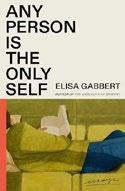
Essays on literature and popular culture and the author’s relationships with each. Poet Gabbert, the author of The Unreality of Memory, presents a series of intellectual personal essays, some of which have previously appeared in publications such as Harper’s and the New York Review of Books. In the opening piece, the author delineates her former habit of perusing recently returned books at a Denver public library; this weekly routine was one of many disrupted by the pandemic. A voracious reader, Gabbert goes on to describe herself, with her husband, starting the “Stupid Classics Book Club.” She explains that “‘stupid’ meant relatively short, accessible enough to be on a high school syllabus, and probably rehashed into cliché over time by multiple film adaptations and Simpsons episodes.” One of their choices was Fahrenheit 451: “Now I know exactly how it’s bad, and I can hate it for the right reasons.” Throughout, Gabbert’s tone moves among witty, pensive, curious, and confident. She is a fine writer—deft, astute, and generous about her own experiences yet rarely self-indulgent. Even with her own cards on the table, the primary focus here is writing: “I can confirm that Sylvia Plath doesn’t understand how paragraphs work”; “A journal—any writing—is a chance at immortality, or if not eternal life, at least a little more life, a little more after death”; “I love when a piece of fiction insists that it’s true. Inside itself, it always is.” Gabbert
saves the best for last: The closing essay ties together a variety of topics, including her abandonment of the practice of rereading, Point Break, and her reckoning with the unknown. The bibliography of quoted works runs three pages, and the author incorporates passages quite fittingly yet unexpectedly. For a specific group of ardent readers, this is an erudite book about books that’s worth relishing.
One Week To Change the World: An Oral History of the 1999 WTO Protests
Gibson, DW | Simon & Schuster (368 pp.)
$18.99 paper | June 18, 2024 | 9781668033562

A fly-on-the-wall history of a fateful gathering of capitalist trade ministers in 1999. What is the World Trade Organization? By some lights, it’s a group that makes sure that international business plays by the rules. By others, it’s a means by which the major capitalist powers keep the developing world on a string. As Gibson, author of 14 Miles and The Edge Becomes the Center, recounts, representatives from a host of nations came to Seattle seeking to lock down an agenda that would make the “Quad”—the European Union, the U.S., Japan, and Canada—de facto rulers of the global economy. Thousands came to protest. Says one leading anti–WTO organizer of those street actions, “For people within the U.S. to break from the idea that Americans support their government’s corporate globalization policies was a big shift in how the world saw things.” The police had a different view, but some were less inclined to bust skulls and haul protestors off to jail than others. Similarly, Gibson reveals, some protestors were looking for an excuse to break things, while most, as one government worker related, “were the model kids—if you had a teenager, how you would want them to be.” A labor council leader was even more conciliatory: “This is what democracy looks like.
MAY 15, 2024 57 KIRKUS REVIEWS NONFICTION
Sometimes it’s ugly. And sometimes it’s not. We all have a responsibility and role to play, one way or the other.” Interestingly, Gibson records, several organizers from the day lament that, today, social media keeps people from banding together in person, even as governments learned a lesson and now maintain deep cordons between WTO meetings and any possible discontents—who, notes one contributor, now run the risk of being “viewed as a Trumpist in some way” for opposing so-called free trade. A readable, provocative study of globalism and anti-globalism in conflict.
The Bluestockings:
A History of the First Women’s Movement
Gibson, Susannah | Norton (384 pp.)
$29.99 | July 23, 2024 | 9780393881387

A lively group portrait of 18th-century Englishwomen who claimed a place for themselves in the nation’s intellectual life.
Most of these “bluestockings” (not a pejorative term until much later) were aristocrats, privileged enough to have leisure time to devote to reading and writing. Working-class poet Ann Yearsley, wife of a yeoman who had fallen on hard times, and playwright/religious author Hannah More, middle-class daughter of a schoolteacher, were the exceptions—and More’s patronizing treatment of Yearsley demonstrated that the bluestockings may have defied intellectual restrictions but did not question the class system. Gibson, the author of The Spirit of Inquiry, begins with Elizabeth Montagu, whose salon on Hill Street in London was a favored gathering place of intellectual women, equaled in
brilliance only by Hester Thrale’s salon, which orbited around literary lion Samuel Johnson. Thrale and Montagu were friends, and most women in their elite orbit socialized with both, among them classicist Elizabeth Carter and Hester Mulso Chapone, who gained early fame for cautiously feminist letters written to Samuel Richardson in defense of a woman’s right to choose a husband. Gibson offers vivid sketches of all these women, and many others, in a loosely structured narrative that first introduces Montagu and other key players, then uses individual lives to explore common aspects of all female experience in chapters devoted to marriage, motherhood, friendship, and love, with a final chapter showing how some bluestockings maneuvered through social strictures to gain independence. The author does not scant the difficulties these women faced; the account of Thrale’s constant pregnancies (15 in 16 years) and the frequent deaths of her children (only three remained alive in 1776) is particularly grim. The author’s engaging account honors the determination and charm with which her subjects seized as much freedom as society would allow them. Vivid popular history illuminating some neglected feminist pioneers.
Bloody Tuesday: The Untold Story of the Struggle for Civil Rights in Tuscaloosa
Giggie, John M. | Oxford Univ. (352 pp.)
$34.99 | June 3, 2024 | 9780197766668

Searching history of an event long hidden in the annals of the Civil Rights Movement.
Selma, Montgomery, Birmingham: Alabama’s cities have long
been commemorated as flashpoints in the Black struggle for equality. Tuscaloosa, writes University of Alabama professor Giggie, should be mentioned in the same breath as “an important battleground in the escalating conflict between Black activists and white segregationists in the South during the 1960s.” There, on June 9, 1964, a combined force of city police and KKK members attacked Black protestors, sending almost 100 to jail and badly injuring dozens more. One of the instigators was Imperial Wizard Robert Shelton, who drew on a force of an estimated 10,000 members and sympathizers in Alabama alone. Local police were squarely on the side of the segregationists, backed by the infamous Bull Connor in Birmingham. That the violent suppression in Tuscaloosa isn’t better known, writes Giggie, can be attributed to many factors. Other events crowded it off the front page, most survivors and onlookers kept silent out of fear, and “none of the white people responsible for the violence were compelled to explain themselves and be held accountable.” Justice slowly arced all the same: One KKK attack met with armed response from the Black community; a confrontation with actor Jack Palance (assumed to be Black due to his deeply tanned appearance) led to negative publicity for the city; Shelton lost his job; the chief of police eventually turned on the KKK; and, in time, the University of Alabama was desegregated, along with other city and state institutions. For all that, notes the author, the current right-wing move to suppress the history of civil rights means that it will be all the more difficult for the lessons of Tuscaloosa to be aired.
A welcome resurrection of a forgotten episode in the sorrowful history of segregation.

KIRKUS REVIEWS 58 MAY 15, 2024 NONFICTION For more on the Civil Rights Movement, visit Kirkus online. Vivid popular history illuminating some neglected feminist pioneers. THE BLUESTOCKINGS
Getting To Know Death: A Meditation
Godwin, Gail | Bloomsbury (192 pp.)
$26.99 | June 11, 2024 | 9781639734443
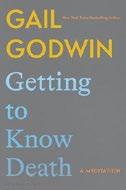
The veteran novelist looks with a clear eye at her declining health and the loss of many of those she has loved.
In the summer of 2022, just before her 85th birthday, Godwin, a three-time nominee for the National Book Award, went out to water the dogwood tree in her garden, slipped on the gravel, and fell and broke her neck. Confined to a rehabilitation facility for a few weeks, she had to wear a neck brace for six months; when that didn’t work, she underwent partially successful neck surgery. The period gave her plenty of time to reflect on her past and observe her present. In fragmented passages, organized in no evident pattern, the author reflects on her long friendship with a woman who died in 2021; the deaths by suicide of her father and brother; the tentative friendship she formed with her roommates at the rehabilitation facility; the loss of her husband two decades earlier; experiences of despair; a friendship with the home health aide who helped her after her release from the rehab center; and her less-than-cordial interactions with her blunt doctor, who told her, “You have too many issues for surgery”—and then, reluctantly and grumpily, changed his mind. Because much of the narrative revolves around the relationship between incidents in Godwin’s life and the ways in which she transformed them into parts of her many novels—and takes for granted that readers will be familiar with those novels—the book will be best suited for those already acquainted with the author’s work. While those looking for a coherent narrative or a tidy conclusion will be disappointed, Godwin makes for good company, and the text sparkles with flashes of insight and humor.
A tart, mordantly witty glimpse at losses past, as well as those to come.
When the Sea Came Alive: An Oral History of D-Day
Graff, Garrett M. | Avid Reader Press (608 pp.)
$32.50 | June 4, 2024 | 9781668027813

A sprawling history of D-Day from the point of view of participants on both sides.
“There have only been a handful of days since the beginning of time on which the direction the world was taking has been changed for the better in one 24-hour period by an act of man. June 6th, 1944, was one of them.” So recalled Andy Rooney, then a war correspondent. Timed for the 80th anniversary of the Normandy landings, Graff’s book is an anthology of sorts: Most of the stories gathered in this oral history come from printed sources and weren’t gathered firsthand. Still, it’s a worthy endeavor, bringing together 700 people who took part in the invasion in one way or another. Rooney was there; so was a German officer on Juno Beach who recalled, “This battle was the beginning of the end of the war.” Graff emphasizes the precariousness of the Allied position on a couple of scores: The sea was rough, drowning as many soldiers as were gunned down on the beaches, and the Germans could have defeated the attackers if they had organized an effective counteroffensive strategy. That’s not the way it worked out, of course— although, as Graff comments, “German resistance would continue along the beaches for multiple days, until the final strongpoints were defeated and the final batteries inland were captured.” Another point of emphasis is the appalling rate of casualties suffered by the Allies: One British soldier recalls that when his unit reached Germany a few months after landing in Normandy, “there were only three of us remaining from the original complement of men who landed on D-Day. All the others had either been killed or wounded.”
A timely reminder of the cost of war, as well as the bravery of those who stormed the beaches all those decades ago.
A Product of Genetics (and Day Drinking): A NeverComing-of-Age Story
Gutierrez, Jess H. | Tiny Reparations (304 pp.)
$29.00 | June 18, 2024 | 9780593475072
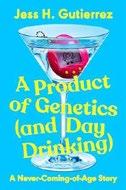
A former journalist from Arkansas reflects on her formative escapades with a devil-maycare attitude.
Gutierrez’s memoir is tough but sweet, as she relays her often outrageous adventures in a fierce, funny, and ferocious narrative voice. Sometimes crass, occasionally insightful, often plainspoken, and unapologetically frank, she is also grounded and refreshingly self-deprecating. “I am an amateur in a vast pool of amateurs who are way better at pretending that they know what in the hell is going on than I am,” writes the author. With comic zeal, she covers a lot of ground, including growing up in rural Arkansas, shenanigans involving drugs, dental issues, and choosing a sperm donor. She also charts her experiences with Christian zealotry, meeting her firefighter paramedic wife, who “has the refinement and movie taste of most nineteen-year-old guys,” her three children (she is simultaneously a conscientious mother and candid about her parenting abilities and motherhood), and coming out. “There was never a time when I wasn’t queer,” she writes. “There was, however, a super-long stretch in my life during which I had no idea that I was.” A 1990s kid, Gutierrez offers a survey of the decade’s pop culture (Friends, Titanic, and Ace of Bass are a few fixations) and junk food (“We were the first generation to eat every single meal beneath the trans-fat saturated golden arches of McDonalds”) in the days before the internet. “We rode skateboards, played pixelated video games, and threw dirt and curse words to our hearts’ content,” writes the author. “We were nineties kids, and we didn’t have to give a shit.” She admits that her brain works like a 300-page TikTok video, and her memoir often reads like one. Still, the text is suffused with an appealingly wise grit. Not groundbreaking literature, but an entertaining and endearing journey.
MAY 15, 2024 59 KIRKUS REVIEWS NONFICTION
SEEN AND HEARD
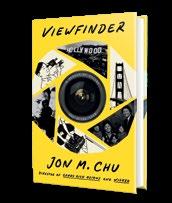
Memoir by Jon M. Chu Coming This Summer
The director is known for his blockbuster film Crazy Rich Asians.
Film director Jon M. Chu will tell the story of his life and career in a memoir coming later this year.
Random House will publish Viewfinder: A Memoir of Seeing and Being Seen, co-written by Jeremy McCarter, this summer, the press announced in a news release. It describes the book as “a powerful, inspiring memoir of belonging, creativity, and learning to see who you really are.”
Chu was born and raised in the San

Francisco Bay Area, the son of immigrants, and studied film and television production at the University of Southern California. He made his directorial debut in 2008 with Step Up 2: The Streets, followed two years later by Step Up 3D.
He became a prominent figure in the film industry in 2018 with the release of Crazy Rich Asians, based on Kevin Kwan’s novel; the film became a blockbuster hit. His two-part film adaptation of the musical Wicked is scheduled for release in 2024 and 2025.
In his memoir, Random House says, Chu “turns the lens on his own life and work, telling the universal story of questioning what it means when your dreams collide with your circumstances, and showing how it’s possible to succeed even when the world changes beyond all recognition.”
Viewfinder is slated for publication on July 23.—M.S.

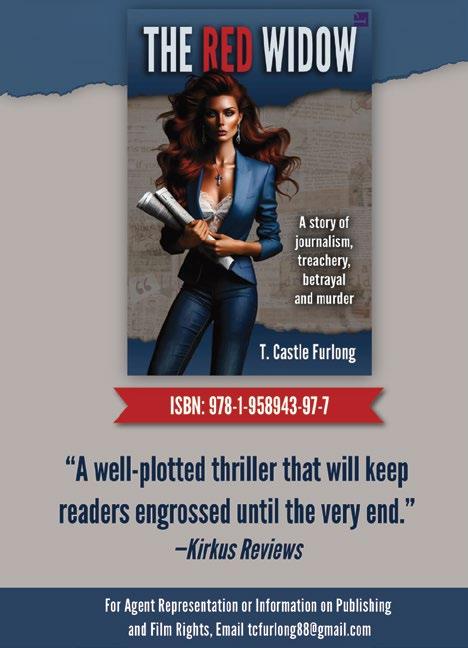
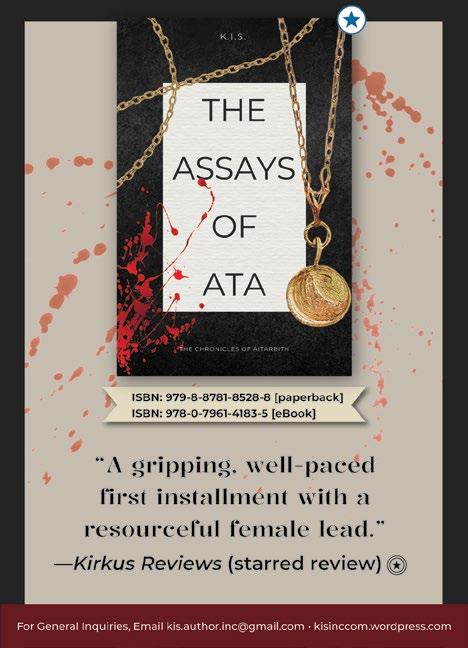
NONFICTION // SEEN AND HEARD
For more great memoirs, visit Kirkus online.
KIRKUS REVIEWS 60 MAY 15, 2024 Elyse Jankowski/Variety via Getty Images
Jon M. Chu
“...aperfectone-volumereference...a helpfullypracticalandauthoritative introductiontothemarketingof scientificproducts.”
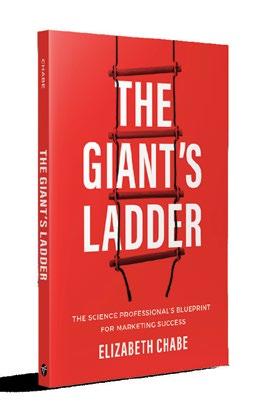
ISBN-10: 1642256021
ISBN-13: 978-1642256024

: THE SCIENCE PROFESSIONAL’S BLUEPRINT FOR MARKETING SUCCESS GET Kirkus Reviews

Now an Amazon Best Seller!
Order it at and other major retailers For bulk and institutional orders: elizabethchabe.com


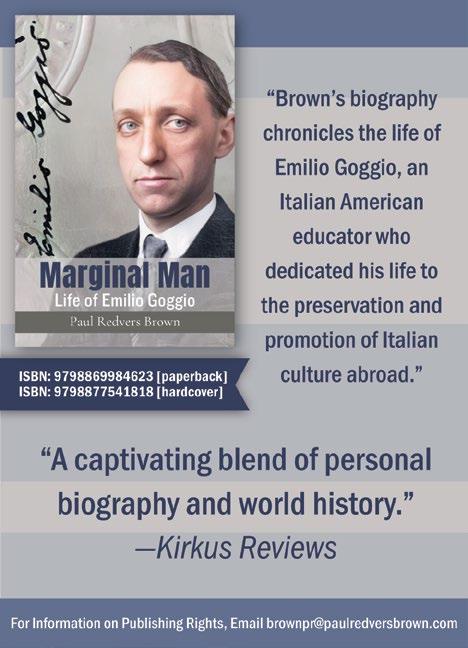
IN THE NEWS
Memoir by Alexei Navalny Coming This Fall
The Russian dissident died in prison in February at the age of 47.
A posthumous memoir by Russian dissident Alexei Navalny is coming later this year.
Knopf will publish the opposition leader’s Patriot this fall, the press announced in a news release. The press says the book is “Navalny’s final letter to the world: a moving account of his last years spent in the most brutal prison on earth; a reminder of why the principles of individual freedom matter so deeply; and a rousing call to continue the work for which he sacrificed his life.”
Navalny began his career in activism as a member of the political party Yabloko, later reviving the party Russia of the Future, known for its opposi -



tion to President Vladimir Putin. He ran unsuccessfully for mayor of Moscow and president of Russia; during his presidential campaign, he was attacked with a caustic chemical and repeatedly arrested by authorities. He was poisoned by a nerve agent in 2020 and after his recovery was arrested again. In February, he died in prison at the age of 47; Russia has denied it was responsible for his death.
Knopf says that Patriot, which Navalny began writing in 2020, “is the full story of his life: his youth, his call to activism, his marriage and family, and his commitment to the cause of Russian democracy and freedom in the face of a world super-power determined to silence him. It expresses Navalny’s total conviction that change cannot be resisted and will come.”
Patriot is slated for publication on Oct. 22.—M.S.
THE GIANT’S LADDER
IN THE NEWS // NONFICTION MAY 15, 2024 61 KIRKUS REVIEWS Oleg Nikishin/Epsilon/Getty Images
Alexei Navalny
For more on contemporary Russia, visit Kirkus online.
The Anxious Generation: How the Great Rewiring of Childhood Is Causing an Epidemic of Mental Illness
Haidt, Jonathan | Penguin Press (400 pp.) $30.00 | March 26, 2024 | 9780593655030
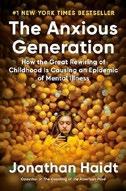
A pitched argument against the “firehose of addictive content” aimed at children via technology.
Psychologist Haidt, author of The Righteous Mind and co-author of The Coddling of the American Mind, turns to the disaffection of children rendered zombielike by their smartphones and social media. “The members of Gen Z are…the test subjects for a radical new way of growing up,” he writes, their sensibilities formed by the instant gratifications and instant peer-pressure judgments delivered by online outlets. Before 2009, writes the author, social media use was largely harmless, mostly a means of keeping up with friends and family, without the toxicity inherent in being constantly subject to opinions given and received—a good way to get locked into “defend mode…on permanent alert for threats, rather than being hungry for new experiences.” This corresponds to the shift, beginning in the 1980s, from what Haidt calls “play-based childhood” to “phone-based childhood,” one effect of which is to remove children from the socialization they would otherwise have undergone simply by one-on-one play. It wasn’t necessarily phones but overanxious parents who took down the sky-high monkey bars. However, coupled with the rapid rise of addictive technology, this drove children indoors and into anxieties and depressions of their own as their lives are “radically rewired.” Haidt concludes by advocating a regime of free play and strictly monitored social media use, including not allowing children under high school age to have smartphones and forming parental associations that would essentially police for this kind of behavior. That program may seem draconian, especially to a 12- or 13-year-old, but Haidt argues persuasively that it’s an
essential defense against the assaults on mental health that social media inflict on unformed young minds.
A strong case for tempering children’s technological dependency in favor of fresh air and sunshine.
Undefeated: Changing the Rules and Winning on My Own Terms
Henderson, Shaunie | Gallery Books/ Simon & Schuster (224 pp.) | $28.99 May 7, 2024 | 9781668012222
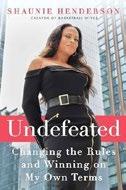
The executive producer of Basketball Wives opens up about a personal evolution that led her away from a life with Shaquille O’Neal and into one as the entrepreneur wife of a minister.
When Henderson met O’Neal in 1999, she was a young single mother working at 20th Century Fox. The NBA star’s power had no effect on her; what did was the dramatic “charm offensive” he used to get her to accept an eventual relationship with him. For the next decade, Henderson dedicated herself to him and their family, enjoying the privileged lifestyle her status as O’Neal’s wife brought. However, his frequent absences and the extramarital affairs she denied for many years drove a wedge between them. In 2009, Henderson took their children and left without asking for “a cent,” seeking “to be free to have the life I wanted, on my terms, even while raising five kids under eleven.” For the next several years, she became the target of media speculation about her divorce from O’Neal, which falsely painted her as the unfaithful spouse. Yet it was during this time that she also found her way into entrepreneurial projects, including the creation of the long-running Basketball Wives reality TV series. Though she intended the show as an exploration of “Black women’s issues,” the pressure for ratings brought racist sensationalism to later episodes, a trend Henderson fought
against by partnering with BET. The author’s life changed yet again when she fell in love with a minister, understanding that his “character, confidence, and kindness” were what her older, wiser self really wanted from a relationship. This frank yet gracefully restrained memoir about lessons learned on the way to fulfillment will undoubtedly appeal to Henderson’s many fans and anyone who follows the Basketball Wives franchise. A candid memoir sure to inspire readers seeking inspiration to change their life trajectories.
The Air They Breathe: A Pediatrician on the Frontlines of Climate Change
Hendrickson, Debra | Simon & Schuster (240 pp.) | $27.99 | July 2, 2024 | 9781501197130

Why the climate crisis is “a health crisis, first and foremost, for children.” Pediatrician Hendrickson, a mother of three, lives in Reno, Nevada, the nation’s “fastest-warming city” and one directly in the path of smoke of many California wildfires. Distressed at what she is witnessing in her practice, she adds to the steady stream of climate change polemics with a heavy emphasis on the scientific background and effect on vulnerable young bodies. Children are not merely small adults, she emphasizes. A newborn’s immature systems— respiratory, neurological, immunological—require nearly two decades to mature, and a toxic environment, no less than malnutrition, disease, and abuse, can be crippling. Children raised in polluted air, she writes, “are more likely to have smaller, stiffer lungs, be prone to asthma, pneumonia, and bronchitis, and die younger than people raised in healthy air.” Furthermore, children cannot cool their bodies as efficiently as adults, and Hendrickson’s stories from America’s heatstroke capital, Arizona, make for
KIRKUS REVIEWS 62 MAY 15, 2024 NONFICTION
A timely case study from a war of ideas being waged across the nation.
THEY CAME FOR THE SCHOOLS
eye-opening, disheartening reading. That people in tropical nations are fleeing unbearable heat is old news, but the author notes that diseases from the global south are spreading farther afield. The world’s greatest infectious killer, malaria, is appearing more frequently in the U.S. Mosquitoes have also brought new, obscure, and harder-to-treat viruses, including West Nile, Zika, and Chikungunya. They affect everyone, but children most of all. Unfortunately, this subject is so politicized that climate change deniers are unlikely to read this book, but compassionate, engaged citizens will find it educational—though the traditional how-to-fix-it conclusion seems only modestly hopeful. Like most writers on the topic, Hendrickson urges readers to take action as individuals: “Vote for leaders who will end fossil fuel subsidies…think about what your habits and purchases really cost.”
A pediatrician offers a unique perspective on the continuing dire situation regarding climate change.
They Came for the Schools: One Town’s Fight Over Race and Identity, and the New War for America’s Classrooms
Hixenbaugh, Mike | Mariner Books (288 pp.)
$32.50 | May 14, 2024 | 9780063307247

A Peabody Award–winning journalist delivers a frontline account of the right-wing campaign to control public school curricula.
Southlake, a well-to-do Dallas suburb, was an unlikely battleground over public education. “The town’s economic boom ensured the district was flush with resources,” writes NBC senior investigative reporter Hixenbaugh, and that meant plenty of funding for advanced courses that dealt with important matters such as the idea that the Civil War had something to do with slavery. Like the rest of white America, Southlake divided sharply when Barack Obama became the first Black president, and once Trump came into office, a slice of the student body and their parents began to vent racist ideology with gleeful abandon. Arrayed against this group were progressive parents and students who pressed for the Southlake school board to take such actions as declare support for Black Lives Matter and “impose a ban on racist imagery, including the Confederate flag, from all district facilities.” With that, a new civil war brewed, with an inevitable result.
“The local fight in Southlake,” writes the author, “had caught the attention of powerful forces in the far-right wing of the Texas GOP—and they’d seen an opportunity.” That opportunity included pouring money into a campaign to turn the school board and district into instruments of the approved right-wing curriculum: no hint of discussion of injustices done to marginalized communities, no hint that America was anything other than a Christian nation, no hint of so-called woke ideas. Hixenbaugh’s account of the battle is detailed and sharp-edged, even if the results are as expected: dedicated teachers forced out of their jobs due to the altered curricula, progressive high school graduates vowing to continue the fight, and smugly satisfied Trumpists in power.
A timely case study from a war of ideas being waged, ever more intensely, across the nation.
The Hamilton Scheme: An Epic Tale of Money and Power in the American Founding
Hogeland, William | Farrar, Straus and Giroux (544 pp.) | $35.00 May 28, 2024 | 9780374167837
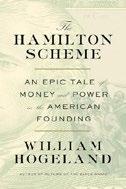
A lively if overlong history of the origins of federal power. A reader of a QAnon-ish bent might come away from this book convinced that Alexander Hamilton founded the so-called deep state. That person would have a point. As Revolutionary War–era historian Hogeland writes, Hamilton was committed to founding a strong, even imperial national government; to achieve it, he crafted instruments of a national economy. One of them was public debt, the “driving wheel” for a great nation. Without debt, the fledgling nation could not have funded any number of endeavors, not least the first foreign war against the pirates of the Barbary Coast. Much as Thomas Jefferson disliked the specter of a federal power stronger than that of the states, without that debt, the Louisiana Purchase could never have been completed. As Hogeland shows, the struggle between Hamilton and his states’ rights–minded opponents was an existential one “over the fundamental meaning of American government,” and in many respects, it continues today.
Hamilton had a talent for making enemies, though friends such as Declaration of Independence signer Robert Morris, wealthy and powerful, helped him survive politically. Morris’ great lesson was one of “commercial domination,” to which Hamilton aspired more as a national than a personal accomplishment. Hogeland’s story is lengthy and circumstantial, but marked by plenty of drama: Hamilton’s stepping out from under George Washington’s shadow to become the foremost “Continentalist” politician of his day; his pitched battles with Albert Gallatin, “treasury secretary to two presidents,”
MAY 15, 2024 63 KIRKUS REVIEWS NONFICTION
over the structure of the national economy; and Thomas Jefferson’s eventual dismantling of “the Hamilton scheme” and subsequent returns to it until the hybrid called “Jeffersonian ends by Hamiltonian means” took root. A well-wrought tale of how the American empire came to be born on the balance sheet as much as by the gun.
Catherine
de’ Medici:
The Life and Times of the Serpent Queen
Hollingsworth, Mary | Pegasus (432 pp.) $35.00 | July 2, 2024 | 9781639367016
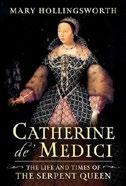
Powerful women were a striking feature of 16th-century Europe, and this evocative biography paints a vivid portrait of a prime example.
Hollingsworth, a scholar of the Italian Renaissance and author of The Family Medici and The Borgias, emphasizes that Catherine de’ Medici (1519-1589) was born a significant figure as the only legitimate child of Lorenzo II, ruler of Florence. Her uncle was pope, and other Medicis were cardinals, generals, and political figures in the many duchies, republics, and fiefdoms that made up Italy. The author skillfully keeps track of a huge cast of characters as she describes Catherine’s odyssey. Married to French king Francis I’s second son, Henry II, she left Italy and led a life of royal luxury until the first son and then Francis died; after her husband died, she became queen from 1547 until 1559. With three young sons who eventually succeeded their father, Catherine was thrust into the limelight as regent and remained a formidable presence for the next 30 years. The reformation was well underway in 1559, but within a few years, France descended into a barbaric civil war that lasted until the century’s end. During its course, many French leaders urged toleration between Catholics and Protestants, but leaders who proclaimed that compromise was for weak-willed
individuals found a more eager audience. Catherine was a compromiser, hated by extremists on both sides, and in the chaos of the following decades, there was no risk in blaming her for the unspeakable atrocities that occurred regularly. With diversions into her generous patronage of the arts and architecture, Hollingsworth concentrates on dynastic politics and France’s gruesome religious war. Months before the murder of her third son, Henry III, she died. Her son-in-law became king and ultimately ended the war. A widely vilified queen receives a well-researched, mostly admiring biography.
The Connection Cure: The Prescriptive Power of Movement, Nature, Art, Service, and Belonging
Hotz, Julia | Simon & Schuster (336 pp.) $29.99 | June 11, 2024 | 9781668030332
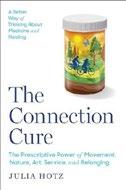
How a holistic approach to health can make a world of difference to those in need. Most developed nations are experiencing epidemics of loneliness, depression, and despair, issues that can underpin physical ailments ranging from diabetes to chronic pain. Often, the response of medical professionals is to prescribe drugs, on the assumption that a chemical imbalance is to blame. However, this approach is often misguided, writes Hotz, a “solutions-focused journalist,” in her first book. One alternative is “social prescriptions,” which allow patients to fully communicate what matters to them and what makes them happy. This is not a new idea: Hippocrates, the founder of Western medicine, pointed to the link between mind and body more than 2,000 years ago. Over the centuries, that message got lost in the jargon of pharmaceutical-based, technology-heavy medicine. It is now making a resurgence, and the common components are movement, rediscovery of nature, art,
service to others, and a sense of belonging to a compassionate community. It can mean joining a cycling or birdwatching club, learning to dance, or taking up a volunteering role. The actual activity is often less important than involvement with an activity that is satisfying and positive. Hotz provides illustrative case studies and examines research that supports the approach, noting that in several countries, it has been successfully integrated into the broader health system. In the U.S., she notes, big pharma and the complexity of medical insurance are significant obstacles—though progress is occurring. “Instead of replacing other kinds of medicine, social prescriptions complement them, offering healing that pills and procedures can’t offer alone,” she writes. “Instead of just treating symptoms of sickness, social prescriptions reconnect us to our sources of wellness.”
With interesting stories and a broad canvas, Hotz connects readers to a different way of thinking about health and wellness.
Kirkus Star
The Island: War and Belonging in Auden’s England
Jenkins, Nicholas | Belknap/ Harvard Univ. (768 pp.) | $35.00 June 11, 2024 | 9780674025226

A beautiful study of a young poet haunted by war. Exemplary scholarship and profound sensitivity combine in Stanford English professor Jenkins’ nuanced reading of the early work of W.H. Auden (1907-1973), beginning with the first poem the 15-year-old wrote in March 1922 and ending in 1937, when Auden left England to live abroad. As Jenkins portrays him, Auden in the 1920s and ’30s, was “a raw, intense, wounded, politically ambiguous, prophetic figure” fascinated “with Englishness and the meaning of England.” Two forces shaped his poems:
KIRKUS REVIEWS 64 MAY 15, 2024 NONFICTION
the catastrophes of World War I and the collective sensibility of English society’s “gradual, dazed, selective rediscovery and reenchantment of the rural landscape.” Although not aiming to craft a comprehensive biography, Jenkins provides such detailed information about Auden’s life during this period, along with historical, cultural, and political context, that the result is a fascinating biographical study, as well as an authoritative close reading of selected poems “that open most fully onto the issues—war, trauma, identity, nationality, belonging, love—that are central to Auden’s early writing.” Jenkins examines Auden’s evolving literary influences, including Robert Frost, Thomas Hardy, Edward Thomas, T.S. Eliot, and the Sitwells. By 1926, Auden was writing “Sitwellian” poetry but soon emerged from what Jenkins deems a short-lived “self-consciously modernist phase.” Early travels in Germany confirmed Auden’s sense of Englishness, but by 1935, his marriage of convenience to Thomas Mann’s daughter Erika, and his affinity for German poets such as Rilke and Friedrich Hölderlin, led him to widen his perspective away from England. In the early poems, though, as Jenkins amply shows, Auden was acutely sensitive to the fragility and sensibility of a wounded nation: “The First World War appears like a light, always on, that is discernible as a glow even through the fabric of a closed curtain.”
A deeply informed, perceptive literary study.
Skip Tracer
Jive Poetic | Liveright/Norton (160 pp.)
$20.00 paper | July 9, 2024 | 9781324093169
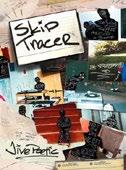
A Brooklyn-based writer and DJ intermingles hip-hop-inflected sensibilities with different media forms to create a “printed mixtape” of his life.
Jive Poetic grew up in a home where vinyl records and music were family touchstones that also
An emotionally rich and complex work.
SKIP TRACER
connected him to Black culture. As his tastes grew more sophisticated, the author became especially intrigued by the way Black artists sampled from each other to create works that recalled “African American quilting traditions.” His fascination with “cutting and spinning old tracks into new ones” eventually led him to become a DJ. In a work that combines prose, poetry, and family photographs that serve as “cover art,” the author offers impressions of an urban life and family history framed as tracks from cassettes, reels, and records; as sonic works produced on DJ turntables; or even as musical broadcasts like livestreams. In the section titled “8-Track Cassette,” for example, the author examines childhood. In the subsection (track) “Go Home,” he muses on being a Black boy in a city where the “sirens, screams, cries, [and tears]” that accompanied the police cars and emergency vehicles meant— and too often brought—trouble into Black communities. Later, in a section called “Cassette Single” and a track called “Clearing Clutter,” the author delves into the painful relationship he had with his mostly absent father, a man who ignored him. Other absences have haunted him as well—e.g., that of his grandfather, who represented a silent link to an inaccessible Jamaican past. As a man with a “West Indian identity… hyphenated by first-world advantages,” the author laments that he could only simulate that past through “scratched snippets that get looped and replayed” like memory. The author’s genre-bending fearlessness and the compelling way he expresses his quest for identity and wholeness through words, images, and music make for a one-of-a-kind read. An emotionally rich and complex work.
A Gentleman and a Thief: The Daring Jewel Heists of a Jazz Age Rogue
Jobb, Dean | Algonquin (448 pp.)
$32.50 | June 25, 2024 | 9781643752839

An entertaining history of a criminal mastermind who, like most such geniuses, got caught in the end.
Jobb, the author of The Case of the Murderous Dr. Cream, lands quite the subject with Arthur Barry, an Irish kid who, hanging out in the streets of a gritty Massachusetts factory town, learned to mimic the manners of the upper crust and put his gift to advantage. He charmed his way into the inner circle of the British royal family, and after one quick job, he wandered away with the equivalent of $250,000 in precious gems. Barry, as Jobb deftly paints him, was a man of parts: a war hero who returned home to don debonair disguises and sneak into the soirees and homes of the very wealthy, but who, even though remembered by a socialite as “a rather gallant burglar,” also was not above using violence to achieve his nefarious ends. Setting aside deadly force, a would-be jewel thief could learn a thing or two about the trade from reading Jobb’s vivid account of Barry’s career. Like any good tactician, Barry believed in endless planning and intelligent action. Would-be victims might learn, too, that it’s rarely a good idea to appear with one’s best jewels on the society page. Even though Barry’s haul in the 1920s alone was $60 million in today’s dollars, he frittered away much of that money. Reflecting on the fact that he’d also spent nearly two decades in prison, he also expressed regret to an interviewer. In
MAY 15, 2024 65 KIRKUS REVIEWS NONFICTION
listing his crimes, he said, “When you put down all those burglaries…be sure you put the big one at the top. Not Arthur Barry…robbed the cousin of the King of England, but just Arthur Barry robbed Arthur Barry.”
A rousing tale of true crime that elicits sympathy for both victims and perpetrator.
Battleground Ukraine: From Independence to the War with Russia
Karatnycky, Adrian | Yale Univ. (368 pp.) $35.00 | June 4, 2024 | 9780300269468

An authoritative account of how the Russian invasion, meant to bury Ukrainian culture, has had exactly the opposite effect. Ukraine’s battle against Russia has become a defining event of our time, testing the limits of Western will and demonstrating how an emerging democracy can fight against a larger, belligerent power. Karatnycky, a senior fellow at the Atlantic Council and the CEO of the nonprofit Freedom House, is not an impartial commentator, and he clearly lays out his deep, longstanding personal and professional ties to the country. The author examines the development of cultural trends since 1991, when the Soviet Union collapsed and Ukraine declared independence. He frames the story by examining the presidential administrations since that time, which have veered between democratic populists like Viktor Yushchenko and corrupt oligarchs such as Leonid Kuchma. Power ebbed and flowed in various ways, from public demonstrations to government thuggery, which meant that no stable model of government emerged. Behind the scenes, writes Karatnycky, a sense of national identity was recovering, drawing on Ukraine’s rich history and cultural distinctiveness. The author devotes two chapters to Volodymyr Zelensky, first examining his early stumbles and
overdependence on social media. Amazingly, after the invasion, Zelensky rose to the challenge, becoming a resolute national figure and displaying hands-on courage. Between Zelensky’s leadership and the requirements of war, the Ukrainian identity solidified, becoming the most potent weapon of the conflict. Karatnycky believes that Ukraine will eventually prevail, but it needs continued support, including advanced weaponry and the transfer of $300 billion in Russian assets held in Western banks as reparations. He might be overly optimistic about this idea, but his book is an important addition to the literature, featuring an innovative approach that provides a useful background. Karatnycky combines eyewitness accounts with historical analysis, adding depth and insight to the bulletins of war.
Hot Dog Money: Inside the Biggest Scandal in the History of College Sports
Lawson, Guy | Little A (318 pp.)
$28.99 | June 1, 2024 | 9781662519666
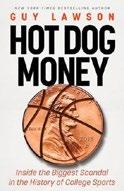
Scathing exposé of systemic corruption in college sports. Marty Blazer, writes crime journalist Lawson, author of War Dogs, started out as a financial adviser to college athletes back when they were supposed to be amateurs. Amateurs, yes, but there was plenty of “hot dog money” thrown around “in myriad forms, like electric bills or mortgages for…college kids’ parents,” as well as “weed, Louis XIII cognac, reservations at an exclusive restaurant”; the targets included not just promising prospects but coaches, front-office staff, and professional players. Part of Blazer’s job was keeping his clients from burning through their money. Another part was to keep the money coming in, and that involved a kind of pyramid scheme where pros and upper-division students kept an eye out for promising newcomers. In some states such as North Carolina, Blazer recounts
to Lawson, it was illegal to pay students directly, “but agents would make sure the players got what they needed.” In time, with law enforcement closing in, Blazer became a cooperating informant and began to provide the details of payoffs up and down the NCAA chain, which ended up sending numerous figures in “a corrupt billion-dollar enterprise hiding behind the veil of amateurism” to court and jail in a sweeping investigation of corruption and bribery. As one might expect, Lawson writes with thinly veiled contempt, as those at the top of the ladder wound up paying less for their crimes than the players—though a few head coaches fell, too. Of course, the corruption is still there, even if players can now be paid. That’s to be expected in a business—and make no mistake, college sports is a massive business—where basketball alone brings in more than $1 billion per year. A careful, damning look into the dark corners of collegiate athletics.
Reimagining the Revolution: Four Stories of Abolition, Autonomy, and Forging New Paths in the Modern Civil Rights Movement
Lehman-Ewing, Paula | North Atlantic (284 pp.) | $19.95 paper July 23, 2024 | 9798889840794
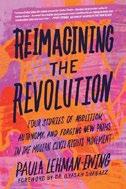
A Jewish journalist introduces the fundamentals of the prison abolition movement. After a career “covering the criminal legal system as a beat reporter,” Lehman-Ewing wanted to do more than just write about the American carceral system’s many failures. Consequently, she joined the organization All of Us or None of Us, where she wrote “a newspaper amplifying the voices of currently and formerly incarcerated people.” This work put the author in touch with an array of imprisoned artists and activists, including Ivan Kilgore, who funds a successful nonprofit called the United
KIRKUS REVIEWS 66 MAY 15, 2024 NONFICTION
Black Family Scholarship Foundation while behind bars; and Heshima Denham, who suffers solitary confinement and other penalties because of the popularity of his abolitionist writing. Lehman-Ewing’s activism also led her to a variety of prison abolition activists like the members of Critical Resistance, who are leading campaigns to close California’s prisons. The author contextualizes the movement with research about such exploitative practices as forced prison labor and analyses of the oppressive systems that perpetuate the mass incarceration of Black men. “It is not enough to learn how we got here,” writes Lehman-Ewing. “We must start to imagine where we go from here.” The author’s passion for her cause and affection for the individuals she profiles makes this book an excellent introduction to the modern prison abolition movement. However, her nearly exclusive focus on cis-hetero Black male prisoners narrows the text’s focus, making the book feel more like a starting point than a complete resource. In her foreword, activist Ilyasah Shabazz, daughter of Malcolm X, urges readers to “organize with strategy so that sixty years from now, we will not find ourselves in the same space as we were sixty years ago when my father was alive, simply insisting on liberty and justice for all.”
A well-researched beginner’s guide to a growing movement.
Invisible Warfare: How Does a Book Defeat an Empire?
Liao Yiwu | Trans. by Michael M. Day | Polity (80 pp.) | $14.95 June 26, 2024 | 9781509562947
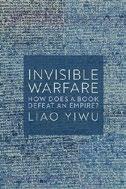
A Chinese dissident writer in exile remains hopeful that writing the truth, in spite of official oppression, can topple dictatorship.
Imprisoned in 1990 for four years in China for performing two
Candid,
informative, and cautiously optimistic.
FIRST IN LINE
protest poems that “railed against and condemned the Tiananmen massacre,” Liao Yiwu has committed his life to fighting against the Chinese government’s widespread oppression. He continued to write when he was released, hounded by the Chinese police, who confiscated his work. In 2011, he was compelled to defect to Germany in order “to publish the writings I’d started in prison.” In exile, he has been able to have much of his clandestine work published—e.g., his hidden prison diary, For a Song and a Hundred Songs , and other books. In this moving speech, written in late 2022 when China suddenly reversed its restrictive Covid-19 lockdown, Liao expresses his determination to keep fighting despite setbacks and ill health. “I indefatigably record all of this to remind the world, and myself, because I worry that if I succumb to nihilism and lay down my pen, I will have failed absolutely,” he writes. The author is haunted by those who have perished with no name or record of their protests, such as “Old Man Yang,” who had been imprisoned for decades “in the bottomless black hole the Communist Party had created” and who offered to hide the author’s papers in prison. It’s clear that Liao is tormented about how he could not save his fellow dissidents. In his “documentary novel” Wuhan , the author exposed the government’s duplicity regarding the closing of Wuhan and other cities during the pandemic, noting how “Xi Jinping’s empire surpassed 1984 ,” and he writes eloquently in support of the Shanghai protests in 2022. A pertinent plea against tyranny and an emotional reflection on the need to write in order to remember.
First in Line: How Covid-19 Placed Me on the Frontlines of a Health Care Crisis
Lindsay, Sandra with Joanne Skerrett Post Hill Press (224 pp.) | $30.00 July 23, 2024 | 9798888452769
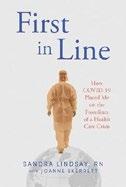
A hospital executive and nursing director discusses her path “from immigrant to COVID-19 vaccine evangelists.” In December 2020, Lindsay became the first North American to receive the Covid-19 vaccine. This courageous act, along with the compassionate intelligence she demonstrated while skillfully shepherding a Long Island critical care center through the chaotic early pandemic, earned her the Presidential Medal of Freedom two years later. But the path that took her from nurse to respected vaccine advocate and hospital executive was filled with challenges that stemmed from her immigrant status, race, and gender. Born in Jamaica to a respected family, Lindsay immigrated to New York City as a young woman in 1986. As she struggled financially in her new country, she faced discrimination everywhere—from patrons at the grocery store where she worked to the nurses where she gave birth to her son in 1989. Painful as these experiences were, they also helped her develop empathy for marginalized people and became the wellspring on which Lindsay drew as she pursued her nursing education. Her personal experiences also encouraged an interest in the health challenges that disproportionately plague minorities—and >>>
MAY 15, 2024 67 KIRKUS REVIEWS NONFICTION

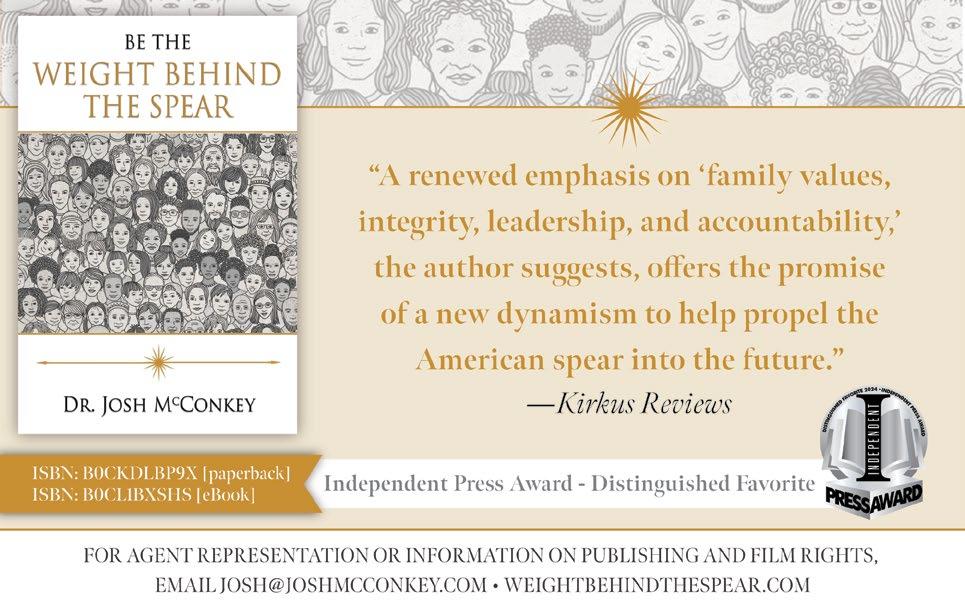


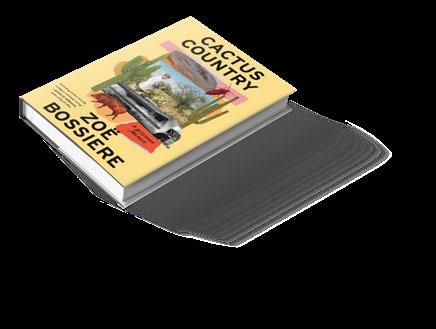

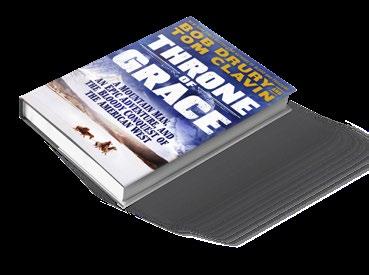

5 Nonfiction Books That Read Like Novels
Howard Markel
Kevin Fedarko
By Tom Clavin
Ponomarenko
BOOKLIST // NONFICTION
For more book lists, visit Kirkus online. 1 2 3 4 5 1
Darwin’s two iconic years rendered masterfully by a highly knowledgeable chronicler. 2 A Walk in the Park By
Vivid armchair travel through a haunting and forbidding landscape. 3 Throne of Grace
A lively account of the remarkable life of one of the men who led the U.S. into the vast West. 4 Cactus Country By
Bossiere’s hopeful, powerful life story also serves as a memorable study of gender and home. 5 I Will Show You How It Was
A revelatory portrait of the horror and absurdity of the conflict spiked with much-needed threads of humanity and hope. MAY 15, 2024 69 KIRKUS REVIEWS
Origin Story By
Zoë Bossiere
By Ilia




Book to Screen
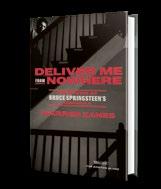
Jeremy Allen White To Star in Deliver Me From Nowhere Film
The actor will play Bruce Springsteen in an adaptation of Warren Zanes’ 2023 book.
Jeremy Allen White will star as Bruce Springsteen in a film adaptation of Warren Zanes’ Deliver Me
From Nowhere: The Making of Bruce Springsteen’s Nebraska, Deadline reports.
Zanes’ book, published last year by Crown, is the history behind the making of Nebraska , Springsteen’s seminal 1982 album that shocked rock fans with its stripped-down sound and dark subject matter. A critic for Kirkus wrote of the book, “Zanes is especially good at showing how connected and intertwined Nebraska was with its legendary follow-up, Born in the U.S.A. , much of which was recorded during the same period. Even those who aren’t convinced that

Nebraska is Springsteen at his best will hear it with fresh ears.”
White, best known for his roles in the series Shameless and The Bear, will play the Boss in the film. Scott Cooper (Crazy Heart, Antlers) is writing and directing; the filmmaker is also the co-writer of an upcoming film adaptation of Paul Tremblay’s A Head
Full of Ghosts
The Deliver Me From Nowhere project was the

subject of a bidding war between 20th Century Studios and A24, which 20th Century won, according to Deadline. Springsteen and his manager, Jon Landau, will both be involved in the film, expected to feature songs from the albums Nebraska, Born in the U.S.A ., and The River.—M.S.


BOOK TO SCREEN // NONFICTION
Gilbert Flores/Variety via Getty Images
MAY 15, 2024 71 KIRKUS REVIEWS
Jeremy Allen White
For a review of Deliver Me From Nowhere, visit Kirkus online.
especially female ones—in American society. “Battling back the stereotypes, hostilities, and discriminatory behavior can have serious physical effects on our bodies,” she writes. Indeed, working on the frontlines of the health care system during the pandemic, Lindsay witnessed for herself how people of color died in far greater numbers than white patients. Despite so much public resistance to vaccination—especially within marginalized communities— she believes hope lies in a governmental grassroots effort to meet “people where they are, and [listen] to their concerns.” Lindsay’s book will be of particular interest to anyone seeking to create greater equity in a flawed, often racist American health care system. Candid, informative, and cautiously optimistic.
The Secret History of Sharks: The Rise of the Ocean’s Most Fearsome Predators
Long, John | Ballantine (480 pp.)
$35.00 | July 2, 2024 | 9780593598078

Everything you ever wanted to know about this ancient, awesome, and threatened fish.
Prolific science writer Long, a professor of paleontology at Flinders University in Australia and author of more than 25 books, fell in love with sharks as a boy, and he maintains his enthusiasm throughout his latest, which is divided into five sections: The First Sharks, Sharks Rule, Sharks Under Pressure, The Age of the Megasharks, and Sharks Today. The author begins more than 400 million years ago. Although sharks have survived five global mass extinctions, their origin remains a mystery. “We have learned a great deal about the early origins of bony fishes, amphibians, reptiles, and mammals in recent years through stunning new ‘transitional’ fossil finds, while there have not been any significant advances in our
knowledge of shark origins,” writes Long, who provides a comprehensive account of their evolution, along with that of those related creatures. He and his shark paleontologist colleagues seem like a fun bunch; readers will enjoy detours describing their frustrations and rare triumphs as they trudge over seven continents to freeze, swelter, or soak while hammering away at rocks to reveal marvels—or do the same in the lab with high-tech scanners. The author describes the dazzling variety of these fish in the ocean today and concludes with the plea to save them from extinction. Shark populations are plummeting through massive overfishing, pollution, and recreational slaughter, sadly energized by the misconception that they are man-eaters. Long writes lively, lucid prose, and while this is not a textbook, he delivers an extremely detailed education in the history, anatomy, behavior, and ecology of the extensive shark family. Long’s work makes a nice complement to Jasmin Graham’s Sharks Don’t Sink.
An expert natural history with few stones left unturned. If you enjoy searching for shark teeth, read this book.
Upstart: How China Became a Great Power
Mastro, Oriana Skylar | Oxford Univ. (328 pp.)
$29.99 | July 1, 2024 | 9780197695067
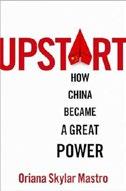
A professor of political science with a specialty in Chinese military and security policy examines the nation’s ascent on the global stage. In the 1990s, China was a marginal player in world affairs, struggling to find a path to economic development. However, during the next two decades, it established itself as a major power with a thriving economy and a vigorous government determined to challenge the U.S. Mastro, who has won awards for her geopolitical research, undertakes a deep dive into China’s tactics. Her central thesis is an idea she borrowed
from business thinking: that China has deliberately acted as a disruptive force, avoiding direct confrontation with the U.S. wherever possible and instead looking for gaps and weaknesses to exploit. For example, Chinese leaders have built aid-based connections with regimes that the U.S. has disdained or neglected, and they have focused on assisting with internal security issues, such as police training and surveillance systems. When China has participated in international institutions, it has sought special treatment and concessions, always looking to improve its position. It has injected itself into regional conflicts as a disinterested mediator while building up its military might. Mastro puts forward a range of moves that the U.S. might take to leverage its advantages, such as deepening its relationships with other Asian countries, asserting its position in regional hotspots, and demanding that China adhere to agreed-upon trading policy. Some of her proposals would be difficult to implement, but her framework for action is sound. While the text never entirely breaks away from its academic origins, the author puts forth many interesting ideas. Anyone who enjoyed Graham Allison’s Destined for War will find this book to be insightful and thoroughly researched. Mastro innovatively explains the processes behind China’s challenge and sets out strategic possibilities to counter it.
The Hidden History of the White House: Power Struggles, Scandals, and Defining Moments
Mead, Corey | Morrow/HarperCollins (304 pp.) $30.00 | June 4, 2024 | 9780063343382

An English professor tells stories about the people and events that shaped the White House as a home, symbol, and setting for significant historical events.
KIRKUS REVIEWS 72 MAY 15, 2024 NONFICTION
An ingenious new approach to educating doctors.
PROGRESS NOTES
For Mead, author of Angelic Music and The Lost Pilots, the White House is not just a national treasure but also a structure that has served as “the stage for some of the most dramatic scenes in American history.” Inspired by the long-running podcast American History Tellers, the author examines this iconic dwelling from three different perspectives, each of which constitutes its own section. In the first, Mead focuses on the actual building, which was completed in 1800. First called the President’s House and built largely by enslaved people, the White House was almost completely destroyed during the 1814 British siege of Washington. It was rebuilt during the remaining years of then-President James Madison’s term by the original Irishborn architect, James Hoban, and it was renovated and expanded during the Truman administration. In the second section, Mead delves into the race-based struggles surrounding who could visit the White House. Among the author’s many tales are those about Ulysses S. Grant’s controversial appointment of Seneca Nation member Ely Parker to head the all-white Board of Indian Commissioners and Theodore Roosevelt’s infamous dinner invitation to Black educator Booker T. Washington. The third section is an exploration of how the White House became emblematic of American superpower status and a setting for such historical turning points as Winston Churchill’s post–Pearl Harbor visit to Franklin Roosevelt in 1941. This accessible, well-researched, and generously illustrated book will appeal not only to history buffs, but to anyone interested in the colorful stories—and characters—associated with America’s most storied structure, which “stands as a living monument to the towering figures, hairbreadth moments of crisis, and euphoric triumphs that have defined our country.”
Page-turning, illuminating reading.
A Termination
Moore, Honor | A Public Space Books (112 pp.)
$20.00 paper | Aug. 6, 2024 | 9798985976922

A distinguished poet and nonfiction writer reflects on the lasting emotional imprint of an abortion.
Moore, author of The Bishop’s Daughter and Our Revolution, was a 23-year-old student at Yale’s drama school when she terminated an unplanned pregnancy. The year was 1969, a time that also saw the emergence of the Jane Collective, a group that established an underground network dedicated to providing safe abortions to all women. Because the author was an “inheritor of minor WASP money,” she was able to get a legal abortion by convincing a psychiatrist that a child would destroy her mental health and paying for the procedure with her own funds. “There were two men who might have made me pregnant,” writes Moore: one a photographer who forced himself on her and the other, a professor who would have married her had she told him about the pregnancy. Early on, Moore unapologetically describes herself as Magdalene. “A taint of accusation hovers when I write about sexuality: She’s had bad relationships, they say. Fallen woman, the woman who sins, adulteress, slut, a stitch dropped from the fabric of society,” she writes. Even though she never wanted to have children, Moore returns to thoughts of the baby to which she never gave birth, imagining that child as a boy. “I was always looking for a great love—the kind that starts at a high temperature and calms over time, embers steady,” she writes. “What would I have looked for in a lover if I’d had a child?”
The author’s candid, prose poem–like explorations of the ghosts of relationships
past and the complexities surrounding love and sex for women make for compelling reading. But what makes her work especially affecting is the quiet way it suggests the possible shape of things to come in a post–Roe v. Wade era. Haunting and lyrical.
Progress Notes: One Year in the Future of Medicine
Nussbaum, Abraham M. | Johns Hopkins Univ. (408 pp.) | $29.95 June 25, 2024 | 9781421448947
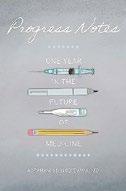
An exploration of “how physicians can see patients better.”
Nussbaum, chief education officer at Denver Health and author of The Finest Traditions of My Calling, agrees that the 19th-century introduction of science into medical education was an admirable revolution that converted medicine to a profession based on human physiology rather than folk beliefs. The result has been miraculous advances in curing diseases and repairing broken bodies, but people still get sick and die. Indeed, they often stay sick longer, take longer to die, and have limited access to appropriate cures. Nussbaum maintains that medical education, now based on the “textbook of the body,” should expand to include the “textbook of the community.” He makes his case by describing a pilot program at the University of Colorado, where he is a professor of psychiatry, and similar programs are being instituted at a few other schools. Medical students traditionally spend their third year in a hospital rotating through the specialties (surgery, obstetrics, psychiatry, etc.). The author describes seven students who do not follow doctors but patients, accompanying them to clinics, emergency rooms, and surgical procedures, as well as to their homes and communities. This approach, as Nussbaum demonstrates, has proven transformative, especially because research shows that “social determinants have more effect on a patient’s health than a physician’s clinical care.” The author also
MAY 15, 2024 73 KIRKUS REVIEWS NONFICTION
describes how, in the past few decades, medical schools have started paying greater attention to communication skills, and classes now include far more women and people of color. Nussbaum lays out his concepts with refreshing clarity, though he notes that his vision of medical education remains a work in progress. Given the success of the pilot programs so far, readers will hope that the work continues to improve and spread to more medical schools and hospitals. An ingenious new approach to educating doctors.
Life: My Story Through History
Pope Francis with Fabio Marchese Ragona | Trans. by Aubrey Botsford HarperOne (240 pp.) | $28.99 March 19, 2024 | 9780063387522
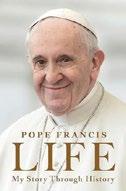
Memoirs of a modern pope. Along with contributions by Italian journalist Ragona, Pope Francis (b. 1936) offers an autobiographical look at his entire life. With Ragona’s voice as an interlocutor to help steer the narrative, Francis shares intimate memories going back to his childhood in Argentina, when the world was on the verge of war. Francis’ voice is homey, honest, and simple as he recalls and reflects on the people and events that have shaped him through the years. His family’s origins as immigrants from Italy, and his childhood memories of refugees from the ravages of World War II, were obvious early forces in the development of his views and opinions about displaced people even today. Intriguingly, Francis says little about the
vibrant and disruptive political influences in Argentina through many of his formative years, in contrast to the commentators who have speculated about his sympathies for the politics of former President Juan Perón. He does devote a chapter to the “Dirty War” following the Argentine military coup in the 1970s, but he provides only scant glimpses into what were obviously life-changing and, indeed, life-threatening times for the young Jesuit priest. In fact, readers will often find that this work is more of a colorful outline than a complete autobiography. Francis often brings moral lessons and opinions into his stories, and he concludes with his hopes for the church and the broader world. “I still cultivate a dream for the future,” he notes, “that our Church might be a meek, humble, servant church, with all the attributes of God.” Despite these hopes, he admits, “the Church is full of saints, but in some cases it has become a corrupt Church, precisely because clericalism is corrupt.” A worthwhile read for Christians that whets the appetite for further details about the pope’s past.
Democracy in Retrograde: How To Make Changes Big and Small in Our Country and in Our Lives
Sage, Sami & Emily Amick | Gallery
Books/Simon & Schuster (256 pp.)
$28.99 | July 2, 2024 | 9781668053485
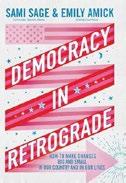
Two activists offer a comprehensive guide to regaining ownership of American civic life in an era of minoritarian rule. Early on, Sage, co-founder and chief brand officer
of Betches Media, and Amick, founder of For Facts Sake, advocate for “civic engagement [as] a form of self-care,” especially for individuals and communities struggling with what have become major ills for American society and politics in the 21st century: “individualism, socioeconomic stratification, and isolation.” The advent of the internet and especially social media has not only fostered siloed communities of like-minded people and discouraged in-person interactions; it has also cultivated optimal conditions for the rise of oligarchs who have allowed corporate exploitation of the masses and who are themselves beholden to corporate interests through such avenues as dark money political campaign donations. The authors argue that conscious civic action is the way forward through all the helplessness and hopelessness that characterize our present political landscape. Toward that goal, the authors provide a variety of resources, including a personality quiz readers can use to determine whether their qualities make them leaders, givers, connectors, or creators; reflection exercises on civic interests; rules for political action; and a mini-tutorial on the structure of American government. In a “republic that elects its representatives democratically,” citizens must actively monitor the issues they care about and the officials who hold office while networking with each other to fight minoritarianism and the isolating hopelessness it brings. The voices in this book, including Betches social media followers, in addition to the how-to format, suggest a primarily young target audience. Nonetheless, the authors’ insights will undoubtedly interest anyone who seeks to revitalize the civic consciousness and activity of what they call the “Exhausteds…a mix of traditional and passive liberals, moderates, and those who are politically disengaged.”
An uplifting and useful book of activism.

For more on Pope Francis, visit Kirkus online.
KIRKUS REVIEWS 74 MAY 15, 2024 NONFICTION
An uplifting and useful book of activism. DEMOCRACY IN RETROGRADE
You Never Know: A Memoir
Selleck, Tom with Ellis Henican
Dey Street/HarperCollins (320 pp.)
$29.99 | May 7, 2024 | 9780062945761
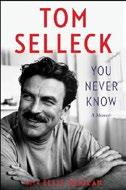
The beloved actor shares his splendid life and career.
In this well-written memoir, co-authored by Henican, Selleck (b. 1945) tracks an ascent in the entertainment industry that largely began in the late 1960s at the program for new talent at Fox and was solidified by his role as the star of the hit TV series Magnum P.I. The book is often Magnum-heavy, which at first blush may be a turnoff for readers more familiar with his later films, memorable guest role on Friends, or starring role in Blue Bloods. Yet even if readers have never seen a single episode of the show that made his career, the author’s style entertains, edifies, and effectively bridges the bookends of his career. Selleck has a knack for maintaining interest in the nuts and bolts of writing and producing Magnum, his own thoughts and actions in the evolution of the character and the show itself, and the difficult decisions he made along the way. As is the case with any celebrity memoir, there are numerous stories about famous people with whom Selleck has worked and known. However, the author, with the blue-collar mentality to which he often alludes by employing the phrase “laying bricks,” mostly focuses on the actual work of the brightest of stars, such as Frank Sinatra and Carol Burnett on Magnum, as well as the direction of Leonard Nimoy in Three Men and a Baby. Those in search of salacious confessions or anecdotes should look elsewhere. Selleck neither avoids difficult topics such as his first marriage, nor stints on details about meeting and marrying the accomplished dancer and actor Jillie Mack. He does so in the elegant fashion that he exudes on screen. Unless the author is a master of deception, the text is like the man himself: witty, charming, and honest.
A celebrity memoir worth reading.
Kirkus Star
What Does Israel Fear From Palestine?
Shehadeh, Raja | Other Press (96 pp.) $15.99 paper | June 11, 2024 | 9781635425352

A Palestinian lawyer and writer contextualizes Israel’s occupation of Palestine. Decades after Israeli forces displaced his family from their ancestral home in Jaffa,
Shehadeh, author of Occupation Diaries, Where the Line Is Drawn, and other acclaimed books, asks fundamental questions: Why haven’t Israelis and Palestinians ended their conflict peacefully? Why has the global community allowed Israeli occupation to continue? How will the “terrible human toll” in the current conflict affect the world’s opinion of Israel? The author seeks answers in the tales Israelis tell about their country’s origins. In 1948, for example, the invasion the Palestinians call the Nakba (“catastrophe”) is known in Israel as the “war of independence.” Shehadeh claims that this terminology allows Israel to justify the idea that its establishment allowed Jews to return to a biblical homeland and to erase the reality of the Israeli government as a colonizing force. “The conceit goes that prior to the ‘return’ of the exiled Jews, there was a land devoid of people,” he writes. This elimination of the Palestinian people continues through the international decision to deny Palestinians refugee status, while the false decolonization narrative allows the world to ignore problematic Israeli history—e.g., former Ariel Sharon’s open admiration for South African apartheid and Benjamin Netanyahu’s decision to build a fence along the Gazan border, saying, “In the area that we live in, we must defend ourselves against the wild beasts.” The author leaves his final question about the future of Palestine unanswered, and he ends with a quote from poet Refaat Alareer, who was killed by an Israeli airstrike in late 2023. Shehadeh’s clarity of thought, conversational voice, and sharp
analysis render this book a quick, fascinating read, and his passion for his people and their plight infuse the book with exactly the right pace and tone. A concise, essential history of the Israeli-Palestinian conflict.
How To Be a Citizen: Learning To Be Civil Without the State
Skach, C.L. | Basic Books (272 pp.)
$30.00 | July 2, 2024 | 9781541605534

A constitutional scholar offers insights into why she believes that laws have become untenable “substitutes for our own judgement and collective action.”
The law has long been considered the backbone of a “healthy, stable [social] order,” but Skach argues its rigidity has also been detrimental to the development of a fully engaged citizenry. As she writes, order in the modern world must come from “spontaneous, self-enforcing cooperation,” which “calls for multiple leaps of faith and trust.” At the same time, this implies that citizens are less subjects of law and more community members that enjoy “rights but also [owe] obedience to [themselves] and other humans” as they respect the rights of the planet and all living things. To work toward that end, Skach makes suggestions to help people become better citizens in the absence of a governing state and its laws. One approach is to become more open to decentralized social processes and movements and cultivate skepticism of centralized leadership hierarchies. Another is to embrace the idea of congregating with others in physical spaces that are neither fully public nor private to help foster trust— the kind of gatherings that have been lost in the virtual age of social media—and “provide the basis for social interaction at the macro level.” Growing and sharing food is also essential to the ethic of empathy the author believes is crucial to creating citizens who can both work and
MAY 15, 2024 75 KIRKUS REVIEWS NONFICTION
live together in a democratic, cooperative fashion. Utopian as her ideas seem, the book’s premise—that “it is with human nature…that we must begin and do the hard work”—is an important one to remember in divisive times, when the law has become meaningless at best or equated with violence at worst. Necessary reading for those who wish to foster civil discourse and societal cooperation.
Kirkus Star
Midnight in Moscow: A Memoir From the Front Lines of Russia’s War Against the West
Sullivan, John J. | Little, Brown (416 pp.)
$32.50 | Aug. 6, 2024 | 9780316571098
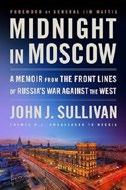
Get ready for Cold War 2.0, according to a key diplomat who has surveyed the battlefield. As U.S. ambassador to Russia from 2019 to 2022, Sullivan brings a firsthand perspective to this account of the evolving geopolitical landscape. When Trump nominated the author, the president was surprised that anyone would want such a difficult and dangerous task. There was no shortage of crises, from the SolarWinds cyberattack to the arrest of innocent American citizens. There was aggressive harassment by the Russian security services, and on numerous occasions, writes Sullivan, high-level officials simply lied to his face. “Russia is not merely an adversary Putin’s government in the Kremlin is a self-declared enemy of the United States,” he writes, delivering a portrait of Putin as a man of staggering arrogance, making statements that are so absurd there is little effective way to respond. He continues to be “completely untethered from the truth and facts.” The people around him are largely there to agree with him and flatter him, so groupthink prevailed when Putin made the decision to invade Ukraine in 2022. Sullivan believes that the war has
become a de facto battle between Russia and the West, and Ukraine should receive as much support as possible from its allies. Putin has invested too much prestige and ego to ever admit defeat, so there does not appear to be any resolution in sight. In fact, Sullivan cannot foresee any improvement in Russian-U.S. relations from its current nadir. The best way forward for the U.S. is to recognize that it is in a war, gather its will and resources accordingly, and aim to keep the conflict from turning hot. It’s a grim outlook, but Sullivan’s knowledgeable text must be heeded. With the authority of personal experience, Sullivan paints a vivid, dark, frightening picture of Russia in the Putin era.
Do Something: Coming of Age Amid the Glitter and Doom
of ’70s New York
Trebay, Guy | Knopf (256 pp.) | $29.00 June 25, 2024 | 9781524731977
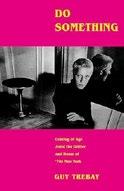
A New York Times style reporter and critic recounts his colorful upbringing. Trebay opens with an account of a visit to his Long Island childhood home, where he lived when it caught fire in 1975. Although ostensibly in search of a suitcase of salvaged pictures, he writes, “What exactly I was looking for was not altogether clear.” The same might be said of his memoir, driven not by narrative but searching emotion, namely, the desires to reckon with his youth and family and to record them, with photographs. His sentences are long and often languid, rife not with verbiage but the voice of a skilled and patient storyteller. He offers nuanced personal recollections, such as these about his mother, who died the same year as the fire: “I sometimes think perhaps she was less brave than indifferent to danger”; “What did she sound like? I strain to recall.” By virtue of the fact that Trebay filters everything through his introspective gaze, it’s
occasionally difficult to feel present in the scenes he describes; that distance sometimes results in a formality heavier on facts than immediacy. While his father struck gold in the fragrance business, the author portrays him as untrustworthy, and the lack of steadiness had seismic, character-determining effects on the family. Writing about the time he spent as a teenager doing drugs with his sister, now estranged and in prison, he notes, “If no memory of transformed consciousness survives from those brief hallucinogenic years…it is clear at least that we were going to some lengths to attract the attention and, by inference, love of our self-absorbed and otherwise distracted parents.” The most affecting part of this quest to piece the past together is the author’s longing—and literal search through the ashes—for proof of love. A generous and deeply felt memoir.
Wonderland: A Tale of Hustling Hard and Breaking Even
Treska, Nicole | Simon & Schuster (224 pp.) $27.99 | July 9, 2024 | 9781668005040
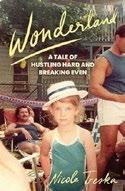
A New York City–based writer reflects on the life and family that she left behind in Boston but never left her consciousness.
In her debut memoir, Treska describes a Boston comprised of working-class people who dreamed of better and often of the kind of escape promised by the long-defunct Wonderland amusement park. “Boston’s rich history of greased handshakes and popping flashbulbs for the businessman, politicians, and mobsters making deals, created upheaval and impermanence for the rest of us,” writes the author. “We were sold out and told it was for the public good.” Treska’s way out of the city and her peripatetic military family, plagued by mental illness and drug addiction, was through education. In 2008, she came to New York to study,
KIRKUS REVIEWS 76 MAY 15, 2024 NONFICTION
only to find herself caught in a post–economic crash world that drove her into debt and kept her “on poverty’s constant edge.” However, her willingness to try new things—e.g., becoming an Airbnb host—paid off, even as she found herself at the mercy of landlords seeking to profit from her rent-stabilized apartment. As Treska found a way forward through difficulty, her past continued to haunt her. An on-again, off-again relationship with a visiting professor she called the Turk taught the author that her need for illusion made her no different from her Vietnam veteran father, whom Treska tried to save from a tantalizing—but also exploitative—online relationship. At the same time, the Turk’s inability to commit made her realize how much her father’s inability to give of himself had influenced her choice of partner. As the author explores the way class, place, and family shape identity and desire, she also celebrates her ability to accept, with ferocity and love, the painful past that made her who she was.
A poignantly affecting memoir about surviving and thriving.
Kirkus Star
World Class: Purpose, Passion, and the Pursuit of Greatness On and Off the Field
Wahl, Grant | Ballantine (368 pp.)
$30.00 | June 4, 2024 | 9780593726761
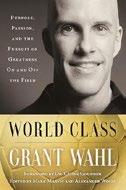
An assemblage of journalism by the late sportswriter. Just 49 at the time of his death in December 2022, Wahl, author of Masters of Soccer and The Beckham Experiment, was far more than an ordinary sportswriter: New Yorker editor David Remnick deemed Wahl’s college-journalism profile of Vietnam War correspondent Gloria Emerson “among the very best student papers I’ve ever seen.” Emerson was one of Wahl’s
mentors; another was the legendary sportswriter Frank Deford, “a hidebound soccerphobe.” Yet Wahl, who concocted phrases such as “an angry parabola” to describe a particularly noteworthy kick, did more than any other writer to elevate soccer in the national sports conversation, having learned the game as an exchange student in Argentina. Wahl was just as good at writing about basketball, and he was one of the first to recognize the genius of a teenager named LeBron James, who “exists in a weird netherworld between high school student and multimillionaire, between dependent child and made man.” His writing about the world’s game was equally prescient—e.g., he discerned star quality in a little-known defender named Brandi Chastain. Wahl also had a fine eye for the infrastructure of the game: Doha may be a paradise for moneyed fans, but the author dug deep to show the terrible abuse suffered by guest workers in Qatar during the 2022 World Cup. Wahl was at his best when in some dudgeon, but he also enjoyed working a good conceit, reveling, for instance, in an Argentinian TV ad where tango, beer, and soccer meet in a scene “that could easily have been scripted by the writer Jorge Luis Borges”—one that hinges on a miracle that proves that God loves the game as much as anyone.
A fine collection by a much-missed writer who was just rising to the top of his game.
The Other Olympians: Fascism, Queerness, and the Making of Modern Sports
Waters, Michael | Farrar, Straus and Giroux (368 pp.) | $30.00 June 4, 2024 | 9780374609818

How transgender and gender-nonconforming athletes changed the face of early-20th-century sports history. In his debut book, journalist Waters traces the histories of
acclaimed European athletes who defied preset sexual boundaries and publicly transitioned their genders. Set against the backdrop of World War II, amid Hitler’s rise to power and the excitement of the 1936 Summer Olympic Games in Berlin, the distinguished Olympians the author profiles were all assigned female at birth but struggled with emerging gender dysphoria. Zdeněk Koubek, a Czech athlete, was born female, but “eventually he’d understand himself not to be,” as he initially rejected and then developed a love of competitive sprinting. Waters focuses mostly on Koubek’s journey toward gender self-expression, which coincided with other athletes—e.g., self-described “tomboy” Mark Weston, an English javelin, discus, and shot-putting champion, and eminent cyclist Willy de Bruyn. Waters seamlessly integrates several other celebrated athletes into his report and cites the many challenges facing trans competitors, including the Nazi takeover of the queer community in 1930s Germany, where “trans and intersex people were judged to be ‘asocial’ [and] people on the margins of gender and sexuality were arrested, imprisoned, and, at times, dispatched to their deaths.” The bureaucratization of gender in sports manifested in the 1936 creation of Olympic sex-testing policies as a method to keep transgender athletes from participating in competitive sports. Waters further addresses these gender bias regulations in his conclusion, revisiting the life of a fully transitioned Koubek, who “dumped all the medals he’d won” in protest of verification testing. Densely factual, impeccably researched, and written with dramatic flair, this book intensively probes gender bias in the Olympics amid the rise of European midcentury fascism and the epic challenges to gender essentialism. A significant deep dive into the queer historical evolution and significance of transgender athletes in organized sports.

MAY 15, 2024 77 KIRKUS REVIEWS NONFICTION
For more on LGBTQ+ athletes, visit Kirkus online.
Ben & Me: In Search of a Founder’s Formula for a Long and Useful Life
Weiner, Eric | Avid Reader Press (336 pp.) $28.99 | June 11, 2024 | 9781501129049
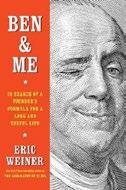
Benjamin Franklin for the 21st century. About to turn 60, Weiner, author of The Geography of Bliss and The Socrates Express, found himself drawn to Franklin, the most accessible and relatable among the nation’s Founders. Franklin, as the author sees him, is “fleshly and fluid,” with “much to teach us about something as enticing as it is elusive: the secret to living a long and useful life.” As Weiner follows Franklin’s footsteps in Boston, Philadelphia, London, France, and Canada, he considers the trajectory of his own life in the context of Franklin’s. Some similarities strike him: Both, he reveals, were “bitten by the travel bug at a young age,” leaving the cities of their births—Franklin’s Boston and Weiner’s Baltimore—to search for a more congenial setting. Franklin’s immediate affinity for Philadelphia recalls Weiner’s own feeling that in India, where he was sent as a foreign correspondent for NPR, he had found his “soulplace.” Both men “wrestled with order” and extolled the power of habits. “Like me,” Weiner writes, Franklin “was prone to distraction and absent-mindedness. Like me, he loved a good planner. Like me, he possessed a strong and persistent drive to improve.” He was not without faults: He struggled with anger issues and, most distressingly for Weiner, failed his family. He did not rush from London to his dying wife’s side, and he refused to reconcile with his son, who had been a staunch monarchist. He owned slaves, only belatedly coming to the cause of abolition. Nevertheless, Franklin still inspires, with a lifelong “sense of wonder,” respect for virtue, and lively curiosity. “At a time when everyone, including me, is struggling to create better versions of themselves,” Weiner writes, “Franklin, America’s original
self-help evangelist, reminds us it is easier than we think.”
A warm combination of homage and introspective memoir.
The Uncommon Life of Danny O’Connell: A Tale of Baseball Cards, “Average” Heroes, and the True Value of America’s Game
Wiegand, Steve | Bancroft Press (360 pp.)
$33.00 | July 16, 2024 | 9781610886338
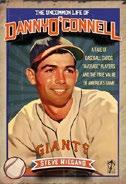
A deep dive into the life of Major League Baseball player Danny O’Connell (1929-1969).
Danny who? The obscurity of the subject is part of the point: Pop historian Wiegand, author of 1876 and other books, wants to show how much hard work even a middling player had to put in. The author was inspired to research his subject after remembering how often he came across his baseball card as a kid. Though dealers dub him a “common” player whose card is practically worthless, Wiegand finds some uncommon elements. Playing for a decade for a handful of teams, O’Connell notably hit three triples in one game; scored the first run in West Coast MLB; and disclosed the secret that Bobby Thomson was tipped to the pitch he turned into the pennant-winning “Shot Heard ’Round the World.” This isn’t quite enough to sustain a full-dress biography, but Wiegand gamely leverages a folksy writing style and deep research into baseball’s idiosyncrasies in O’Connell’s time. Raised in New Jersey, he distinguished himself in the minors; a Danny O’Connell Night featured him hitting grounders while galloping horses raced to beat the throw. A hotshot infielder, he earned starting roles with the Pirates, Braves (mentoring a young Hank Aaron), and Giants before hanging up his cleats in 1962 with the Washington Senators. None of his teams made the playoffs, though, and he batted .260 for his career. The author wraps this inglorious tale with details about the rise
of baseball cards and the game’s pre–free agency culture and connected with O’Connell’s children for more details— though they don’t offer much besides evidence of a hardworking family man. Wiegand’s folksiness can be overbearing at times, but for baseball buffs, the book is a reminder of the game’s reliance on unsung heroes.
Like its subject, imperfect but reflecting admirable determination.
Rebel Rising: A Memoir
Wilson, Rebel | Simon & Schuster (336 pp.) $30.00 | April 2, 2024 | 9781668007204
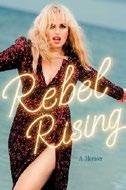
The Australian comic multihyphenate recounts the elements that have made her life so rewarding and adventuresome. In her droll, anecdotal memoir, Wilson (b. 1980) describes a modest childhood in northwestern Sydney as the oldest daughter of four raised by parents who ran a busy dog handling and breeding service. Always considering herself “smart and strategic,” the author attended an all-girls Christian boarding school. After doggedly pursuing a law degree, a change of heart eventually transitioned her to Hollywood, where film auditions (and barely scraping by) dominated her life. In a swift succession of witty chapters, Wilson chronicles how the evolution of her memorable Bridesmaids role, which was created for her, and subsequent work in the Pitch Perfect series and beyond catapulted her to cinematic stardom. Surprising episodes of self-deprecating embarrassment, cathartic diary entries, and letters to herself add depth and dimension to Wilson’s late-blooming life story, which includes the leaked tale about losing her virginity at 35 and her challenging relationship with food and weight. She writes earnestly about an early diagnosis of polycystic ovarian syndrome and how, in her late 30s, she visited a Los Angeles fertility center to freeze her eggs, which inspired efforts at a healthier lifestyle. Still, the author fearlessly exudes
KIRKUS REVIEWS 78 MAY 15, 2024 NONFICTION
“big girl” pride as a rare plus-size actor in Hollywood. Most controversial is a candid section filled with accusations of harassment from Sacha Baron Cohen “and other assholes” while on the set of the movie The Brothers Grimsby. Wilson’s tone oscillates from witty and wry to snarky but feels authentic throughout, particularly in closing chapters addressing her current lesbian relationship and her public coming-out moment, which she outmaneuvered from an opportunistic newspaper journalist.
A lively and reflective celebrity memoir seasoned with comedy and sincerity.
The Liberation Line: The Untold Story of How American Engineering and Ingenuity Won World War II
Wolmar, Christian | Hachette (368 pp.)
$34.00 | May 21, 2024 | 9780306831980
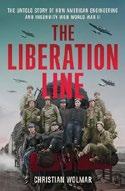
How American railroad engineering helped defeat the Nazis. Supplying soldiers in the field requires a titanic flow of supplies, and that was especially true during the large-scale wars of the 20th century. Wolmar, a prolific writer on railway matters (The Subterranean Railway, The Great Railway Revolution, Cathedrals of Steam, etc.), provides a genuinely fresh tale about the process during World War II. Like other historians, the author examines the Allies’ “so-called Transportation Plan” in effect during the months before D-Day, when relentless bombing of Europe’s rail network and resistance sabotage successfully delayed German reinforcements from reaching the battlefield. Few commanders complained until the end of August, when Allied forces, having broken German lines, were racing across France only to discover that they were running out of supplies. Histories and films celebrate the “vaunted” Red Ball Express, which sent wave after wave of trucks across France carrying precious loads. In fact, they weren’t enough. In September, lack of gasoline,
A highly revealing, human-centered cultural inquiry.
PRIVATE REVOLUTIONS
not German resistance, forced Eisenhower to halt offensive operations over most of the front, and it was December before the logistics crisis was solved. Allied armies needed railways, and reconstructing the network was always central to the Allied plans. Wolmar illuminates readers on how it worked. Days after June 6, thousands of locomotives and freight cars, plus 44,000 railway workers, began arriving. Toiling furiously, the workers restored a system that was in tatters before the invasion and was further degraded by retreating Germans. In his expert account, the author includes brilliant, occasionally familiar leaders; dedicated, overworked fighters and engineers; many triumphs and a few disasters; and plenty of opinions on the fighting generals—e.g., he admires Patton, who loved to move fast, but not Montgomery, who didn’t. A nice surprise for military history buffs: an understudied piece of World War II lore.
Kirkus Star
Private Revolutions: Four Women Face China’s New Social Order
Yang, Yuan | Viking (296 pp.) | $30.00 July 2, 2024 | 9780593493908
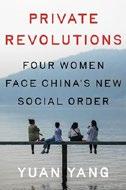
The stories of four women who came of age during China’s economic boom. When Yang, a columnist and Europe-China correspondent for the Financial Times, returned to her native China, she met other professionals who, like her, had been
“left behind.” While their parents sought opportunities in the factories and cities, fueling the country’s opening to global manufacturing and trade contracts, these children were often raised by their grandparents and other relatives in rural villages. The author follows four women— Siyue, Leiya, Sam, and June—through their adolescence and early adulthood, delineating their experiences during China’s drastic transition to authoritarian capitalism. While their economic roots, family dynamics, and professional prospects vary, these four exemplify the country’s rapid, almost whiplash-inducing, change over the last two decades. Yang attends primarily to the individual dreams, relationships, and trajectories of these four women, but as their paths intersect with economic trends and political movements—from the trajectory of China’s stock market to modern Marxist activism—the author includes relevant commentary that grants fuller context to global headlines. Her treatment of a variety of relevant topics—oppressive labor conditions, the high stakes and competitive market around education, the lasting implications of the one-child policy, and government surveillance—is embedded in the roles her characters play as daughters, students, mothers, workers, and romantic partners. The overlap of the four women’s stories and their individual wrestling with the challenges presented by their country demystifies the too-easy narrative of China as a behemoth set on a linear path to superpower. Through these interlocking biographical sketches, Yang offers a fresh interpretation of the ongoing nature of China’s many upheavals, the actual effects of its oft-discussed policies, the cost of its meteoric economic growth, and the role a new generation of women is poised to play. A highly revealing, human-centered cultural inquiry.
MAY 15, 2024 79 KIRKUS REVIEWS NONFICTION
Children's
SUMMER THRILLS, SUMMER CHILLS
SUMMER IS THE perfect time for an adventure.
Even if kids are stuck at home, they can still have a thrilling time—all they need to do is open a book. Whether readers want a heartfelt emotional journey, summer camp hijinks, or an unforgettable trek through the desert, they’ll find something to keep them spellbound.
In Craig Silvey’s The Underdogs of Upson Downs (Knopf, March 12), an Australian girl’s sole hope of saving the family farm rests on her devoted dog, Runt. The Grand Prize at a prestigious agility competition is a quarter of a million dollars…but Runt performs only when no one

but Annie is watching. Silvey’s enthralling tale has it all: a resolute protagonist, a quirky supporting cast, villains readers will love to hate, and a dog who (spoiler alert!) survives to the book’s conclusion.
When Maya, the shy protagonist of Violet Chan Karim’s Summer Vamp (Random House Graphic, May 14), gets on the wrong bus, she ends up at a camp for vampires. Her plans of learning to make the perfect crepe at culinary camp are dashed, and she must keep the other campers from discovering she’s a human. This winsome graphic novel sees Maya slowly coming into her own. The vampires in
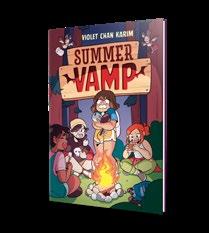

Karim’s manga-flavored art are too adorable to be truly scary (these creatures of the night sip juice boxes filled with animal blood rather than preying on humans); even the horror averse will be charmed.
Ronnie is reluctant to attend summer camp, and her feeling only intensifies when she sees a terrifying ghost on her first day. But Camp Foster might be just what the young Korean American girl needs as she uncovers family secrets.
Jenna Lee-Yun’s The Last Rhee Witch (Disney-Hyperion, May 14) is by turns gripping and poignant. Korean mythology—dokkaebi, gwishin—is deftly folded into the narrative as Ronnie learns about her past, forges new friendships, and emerges with a stronger sense of who she is.
Brenda Woods’ With Just One Wing (Nancy Paulsen



Books, May 14) centers on a boy whose summer plans are for the birds—in the best way possible. Coop falls from a tree while trying to touch the eggs laid by a mockingbird in his grandparents’ backyard. While he recovers from his injuries, he and his friend Zandi observe the birds and rescue one of the babies, born with only a single wing. As this quietly moving novel unfolds, Coop comes to identify with the hatchling and unpacks complicated feelings about having been adopted at birth.
In Jennifer Torres’ Vega’s Piece of the Sky (Little, Brown, June 11), strongwilled Vega and her anxious cousin Mila form an alliance with Jasper, whose father sells rare rocks, after a meteorite lands in the desert.
Sneaking out after dark, the kids share secrets and open up about why they’re so determined to find pieces of the meteorite, potentially worth thousands. Torres serves up vicarious thrills, a few scary moments, and scenes of tender candor; the result is a heartwarming coming-ofage tale in the vein of Stand by Me or The Goonies
Mahnaz Dar is a young readers’ editor.
Illustration by Eric Scott Anderson
MAHNAZ DAR
KIRKUS REVIEWS 80 MAY 15, 2024
EDITOR’S PICK
An artist finds kinship in the life and work of American painter Florine Stettheimer (1871-1944).
A light-skinned young child who comes across Florine’s self-portrait in a museum is startled to discover that the artist resembles her. The child explores the parallels between their lives as artistic Jewish girls and ultimately commits to embracing Florine’s vibrant spirit. If she could throw a party for Florine, she would serve “blue pancakes,” and the two would “paint and dance and write poetry!” Stepping outside, the child adopts Florine’s perspective: “The world around
me is full of color and full of surprise.” Nayberg succinctly shares the usual biographical details, including important dates, family, training— information that can be supplemented by her comprehensive author’s note. But it’s the author’s obvious reverence for Florine that gives this retrospective an unexpected intimacy. Lyrical lines describe Florine’s art, with its “skinny cats’’ and “tilted buildings growing like trees,” as well as her glamorous New York City life of poetry and parties (“lounging around in white silk pants!” with the likes of Marcel Duchamp). Illustrated in dynamic,
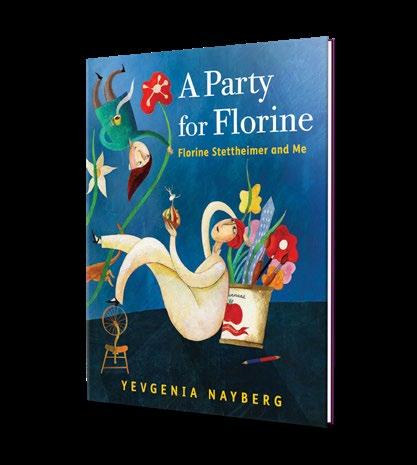
A Party for Florine: Florine Stettheimer and Me
mostly primary colors that mirror Florine’s customary palettes, Nayberg’s images of oversize flowers, flying people, and jazz-filled salons are ebullient, flamboyant even. Florine’s four-part Cathedrals of New York series on the
endpapers, plus a reproduced self-portrait in the backmatter, gives readers an excellent sense of her work. A passionate ode to a pioneering female artist whose influence endures and inspires. (Informational picture book. 5-10)
These Titles Earned the Kirkus Star 85 The EverChanging Earth By Grahame Baker-Smith 87 Tiny Titans By Mary M. Cerullo 90 Next Level By Samara Cole Doyon; illus. by Kaylani Juanita 91 Lessons From Our Ancestors By Raksha Dave; illus. by Kimberlie Clinthorne-Wong 92 Orris and Timble By Kate DiCamillo; illus. by Carmen Mok 95 Taming Papa By Mylène Goupil; trans. by Shelley Tanaka 98 Leila and the Blue Fox By Kiran Millwood Hargrave; illus. by Tom de Freston 98 Métis Like Me By Tasha Hilderman; illus. by Risa Hugo 101 Amir and the Jinn Princess By M.T. Khan 103 All About U.S. By Matt Lamothe with Jenny Volvovski; illus. by Matt Lamothe 104 The Night Librarian By Christopher Lincoln; colors by Bonaia Rosada 108 Trucky Roads By Lulu Miller; illus. by Hui Skipp 81 A Party for Florine By Yevgenia Nayberg 116 Majestica By Sarah Tolcser; illus. by Antonio Caparo
Nayberg, Yevgenia | Neal Porter/Holiday House 40 pp. | $18.99 | July 16, 2024 | 9780823454105
MAY 15, 2024 81 KIRKUS REVIEWS CHILDREN'S
Kids with a taste for gross-out humor will laugh themselves sick.
THE MUSEUM OF VERY BAD SMELLS
Henna Is…
Abbas, Marzieh | Illus. by Anu Chouhan
Feiwel & Friends (32 pp.) | $18.99
July 23, 2024 | 9781250862662

What is henna? And why do we use it?
Each spread of this picture book begins with a brief statement about henna, a powdered dye made from leaves of the henna tree. “Henna is nature,” Abbas tells us, “seeds sprouted into shrubs / leaves kissed by tropical rain / Plucked and dried under the golden sun / Pounded to powder.” Readers learn about henna’s various hues (“Henna is color / The orange of juicy mangoes… / Bright and smooth green… / Sun-kissed brown … / Black like kohl”) and where it’s commonly used: “Henna is place / South Asian / North and East African / Middle Eastern.” Marrying both art and function, henna can be used everyday or for special occasions. It looks beautiful when applied to the skin, it can be used to condition hair, and it’s a cooling agent, too. Henna is intricately tied to celebrations such as weddings, birthdays, and baby showers, as well as holidays including Diwali and Eid. Most pages end with the refrain “But henna is so much more” as Abbas segues into another aspect of henna. Writing in vivid, sensory language, she offers an all-encompassing exploration of the topic, accompanied by Chouhan’s enticing illustrations dominated by floral patterns and symbols from the various cultures where henna is popular. Nontraditional henna designs—smiley faces, ice cream cones, thunderbolts—appear, too, lending a playfulness to the art.
A joyful look at an important cultural tradition. (author’s note) (Informational picture book. 4-8)
Grow Up, Luchy Zapata
Alessandri, Alexandra | Atheneum (256 pp.)
$17.99 | July 23, 2024 | 9781665935968

Lucía Zapata and Camila Ramirez have been best friends since they were 2. When Cami finally returns to Miami from spending summer vacation visiting family in Colombia, Luchy, who’s also Colombian American, is thrilled. She’s ready to begin sixth grade with Cami and Chilean American Mateo, her other bestie, by her side. Surely nothing could go wrong. But after Luchy is thrown into the world of middle school, she experiences challenges beyond even her many worries. Cami is suddenly “extra. Extra makeup. Extra cool. Extra popular,” and she thinks Mateo’s Spider-Man book bag and Luchy’s colorful leggings don’t project the right image. But why should Luchy change for anyone else? Still, as Cami makes friends who she says are more “mature” and less “babyish,” Luchy becomes desperate to get her BFF back. She tries a new look and makes a scrapbook tribute to their friendship, but when those efforts don’t yield the desired results, Luchy decides maybe she should teach Cami a lesson instead. Can they learn to understand each other, or will their friendship be ruined forever? Alessandri’s latest explores classic middle school themes of trying to fit in versus being yourself, and readers will see
themselves and their peers in both Luchy and Cami. The infusion of Colombian cultural elements and Spanish phrases makes this stand out. A sincere journey of navigating friendship and self-discovery. (Fiction. 8-12)
In This Family
Anand, Shelly | Illus. by Meenal Patel Simon & Schuster (40 pp.) | $18.99 May 14, 2024 | 9781665919036
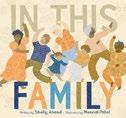
A family with roots in the “Land of Five Rivers and the Emerald Isle, the Swiss Alps and the Silk Road” makes its newest member feel welcome.
Speaking directly to the infant, the narrator says that this family speaks Hindi, English, and some Spanish. “My name is Narayan,” the young narrator says. “We have named you Uma.” The narratorial voice then appears to shift as other members share their perspectives, including maternal grandparents who call themselves Nana and Nani and love to tell riddles and serve boondi ki raita, a great-grandmother who lives in New Delhi, a paternal grandmother who enjoys gardening and making spaghetti and turkey meatballs, and a paternal grandfather who lives in Sister Bay, Wisconsin, and takes the child to Al Johnson’s for cherry-stuffed French toast. Uma’s dark-skinned mother explains that, although Uma’s lighter skin tone makes it hard for people to see the similarities between the two of them, they are still a family. And while strangers may call the family “halfand-half,” they are in fact a beautiful, diverse whole. Imbued with a frank, child-friendly sense of optimism, this lyrical tale conveys the challenges of being part of a multiracial family. Though the shifts between narrators can be confusing—a problem that’s sometimes aided by the illustrations—overall, it’s a wonderful tribute to family. Patel’s earth-toned artwork
KIRKUS REVIEWS 82 MAY 15, 2024 CHILDREN'S
swirls with energetic linework as young Uma matures over the course of the story.
A rich and inviting portrait of a loving multiracial family. (Picture book. 3-6)
The Museum of Very Bad Smells: A Dare To Scratch ’n’ Sniff Mystery
Arnaldo, Monica | Katherine Tegen/ HarperCollins (32 pp.) | $19.99
July 16, 2024 | 9780063271449
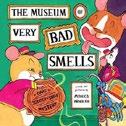
Who stole the World Famous Rotten Egg?
Something about this theft smells fishy (not to mention stinky, icky, and gross!).
Disaster strikes on opening day of the Museum of Very Bad Smells. Who took the museum’s most anticipated exhibit? Was it Herman, the pickled herring, or Pickles, the wet dog? Was it Beetle, the dung artist, or TJ, the mouse with a foul past? Or was it you ? One of the museum’s workers, an adorable, uniform-clad hamster, leads the other characters—and readers—on a zany chase through the super-smelly exhibits to sniff out the culprit. Along the way, they encounter disgusting smells sure to have kids dissolving into fits of giggles, from farts to barf to old sneakers to stinky cheese. Readers will be even more delighted to experience some of these odors for themselves, as several pages feature scratch ’n’ sniff patches. With cartoon flair, the story is told entirely through speech bubbles and energetic visuals. Watching the characters zip around the museum keeps the action speeding forward and heightens the suspense. Our hamster hero intermittently breaks the fourth wall to invite readers to help solve the mystery. This tale is engaging, fast-paced, and full of nonstop potty humor—even reluctant readers will find it hard to resist.
Kids with a taste for gross-out humor will laugh themselves sick. A real stinker, in the best possible sense. (Picture book. 3-8)
Wings To Soar
Athaide, Tina | Charlesbridge Moves (352 pp.) | $17.99 | July 23, 2024 | 9781623544317

A displaced girl’s hope takes wing in this verse novel. The year is 1972: Ten-year-old Viva opens the story by asserting that her name is not “refugee.” Expelled from their Kampala, Uganda, home by President Idi Amin, Viva’s family, who are of Goan Indian origin, end up in a resettlement camp in England. As Viva, Mummy, and her sister, Anna, try to understand their new lives, they wait impatiently for news of Daddy, who’s the family’s “hope holder” and meant to be joining them soon. They also dream of their eventual departure for Canada. The family’s story is underscored by racism, alienation, and upheaval, even as Viva sometimes discovers “little cups of happiness.” The refugee crisis of the Ugandan Asians is a tragic episode from history that’s rarely explored in children’s fiction. Athaide’s book starts with a lot of promise and has an interesting format that includes photographs, correspondence, and definitions of vocabulary interspersed among the poems (Viva is a logophile; she also has a fondness for Diana Ross). The book is at its strongest when the text describes Viva’s yearning for her family to be reunited and the hatred the refugees faced in a Britain where anti-immigrant feelings were on the rise; these segments are searing and honest. Unfortunately, the execution falters as the book progresses, and the writing in the later portions is not as strong. Friendship, family, and identity form the core of this heartfelt but uneven story. (author’s note, photo credits) (Verse historical fiction. 10-14)

Spellbinders: Break the Game
Auseon, Andrew | Illus. by Lisa Weber
Labyrinth Road (400 pp.) | $14.99
June 18, 2024 | 9780593482759
Series: Spellbinders, 2
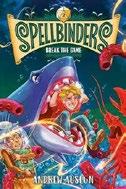
For more by Tina Athaide, visit Kirkus online.
Adventure calls for Ben and friends when someone starts stealing the Spellbinder’s books—and taking those who possessed them. Following the events of the first book, Ben’s only battles are in a LARP game alongside his best friend, nonbinary shape-shifting mimir Merv, and their not-so-effective teammate, Agnes. When toad men from another realm attack the LARPers in their pursuit of Ben and his book, Ben reunites with assassin Niara and mercenary Drake. Frustrated Ben believes his friends consider him too reckless to wield Spellbinder magic. He uses a role-playing manual (think Joseph Campbell’s famous hero’s journey from The Hero With a Thousand Faces) to structure his own development. Meanwhile, Niara has an introspective journey of figuring out who she is with the Elders she formerly served dethroned. The metafictive story structure counters predictability with a self-awareness that caters to imaginative readers. Interspersed chapters flashback to Julia Profit, Lux’s founder and prophet, as she finds her own book, creates a world, learns the true cost of the magic, and interacts with mysterious nonbinary Cash, who seems friendly and knowledgeable about the magic and realms. Julia’s story sets the stakes Ben faces if he uses the magic and the realms he travels to showcase danger and excitement. A stinger of an ending promises escalating adventures to come. Game manual profiles include spot art; Ben reads white, and the portraits and some surnames cue some diversity in the supporting cast. Ideal for fantasy nerds, gamers, and writers. (map) (Fantasy. 8-14)
MAY 15, 2024 83 KIRKUS REVIEWS CHILDREN'S
No trick: This tale will be a treat for young readers this October.
TRUNK-OR-TREAT
Trunk-or-Treat
Ayala-Kronos, Chris | Illus. by Rea Zhai
Clarion/HarperCollins (32 pp.)
$12.99 | July 16, 2024 | 9780063347892
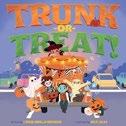
A newish Halloween trend gets a rollicking treatment. Instead of visiting homes on Halloween night, a group of racially diverse costumed kids, accompanied by their grown-ups, head to a parking lot and stop by the various cars, whose trunks are cleverly decorated in a variety of vividly colorful thematic ways. Readers will glean exciting, inventive ideas should they and their families and friends wish to embark on their own Trunkor-Treat celebrations. At one trunk, the kids sample delectable treats and take some home (including healthy ones). Other cars are decorated with a Día de los Muertos theme (though that holiday goes unnamed in the text) and spooky monsters. One features a musical soundstage, complete with instruments and speakers, and another is a minilibrary, filled with exciting books. “Candy, fruits, books— / it’s treats galore!” So many wonderful, imaginative, and safe ways for families to enjoy the holiday. Expressed in bouncy rhymes, this entertaining read demonstrates that Halloween can be a community-focused event; here, the holiday offers an opportunity to celebrate with friends and neighbors rather than simply gather candy. The colorful digital illustrations are full of sprightly Halloween gusto. No trick: This tale will be a treat for young readers this October. (Picture book. 4-7)
A Garland of Henna
Bajaj, Varsha | Illus. by Archana Sreenivasan
Nancy Paulsen Books (32 pp.) | $18.99
June 11, 2024 | 9780593325117

A young South Asian girl is enthralled by her mother’s henna designs. Nikita watches in awe as Mom draws on the child’s hands—will she ever be able to create such delicate patterns? Her mother and grandmother remind her that she comes from a long line of henna artists and she, too, will learn. Nikita uses scrap paper to practice designs from her grandmother’s notebook, filled with patterns. One day her grandmother hands her a cone filled with mehndi, but in her eagerness, Nikita squeezes too hard, and the paste creates an ugly smudge. Upset and frustrated, she withdraws, watching her mother and grandmother from afar. One day, when her mother goes to a wedding to apply bridal henna, Nikita tags along. Amid the festive atmosphere, she watches closely as her mother creates intricate patterns on the bride’s hand. Ready to try again the next day, with gentle strokes, Nikita creates a small pattern on her grandmother’s hand. Bajaj sensitively explores the frustration children encounter when trying new tasks. With gentle coaxing from her family, Nikita learns to trust herself and take pride in her henna art. Dynamic illustrations filled with traditional floral designs of creeping vines, blossoming flowers, and paisleys trail across the pages. The hues of henna— which is dark green when first applied and dries to a warm red—are reflected in the earthy colors throughout the story. A warm and tender tale of family traditions. (author’s note) (Picture book. 4-8)
On a Mushroom Day
Baker,
Chris | Illus. by Alexandra Finkeldey | Tundra Books (40 pp.)
$18.99 | July 16, 2024 | 9781774882580
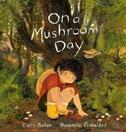
An adult and a child make astonishing discoveries as they explore the forest after the rain.
“On a mushroom day,” a gap-toothed child and a bespectacled adult with long curly black hair streaked with gray trek through the woods. Both wear shorts and boots; both soon have dirty knees. Over the course of this appealing introduction to the world of fungi, readers encounter 12 very different species of mushrooms (identified in the backmatter) and learn about the mycelium, the network of roots that connect fungi with trees and help to nourish the forest. The gentle narrative concludes with the characters sitting down to have mushrooms for dinner. Baker reminds readers in the afterword that only “knowledgeable adults” should pick mushrooms, “and never more than half of what you find.” Quietly contemplative text and delightful illustrations bring this expedition to life. The visuals convey the child’s sense of wonder and active imagination and even add some fantasy: A big cat reclines upon lion’s mane mushrooms, while winged creatures happily cavort in the fairy ring. The earthy illustrations, rendered in acrylic, gouache, and oil pastel, were inspired by actual photos taken in the woods, and the mushrooms are accurate and identifiable. Informative and engaging, this tale is sure to have kids eagerly taking to the outdoors in search of mushrooms—and more. Downright delicious. (the facts on fungi, tips for having your own wonderful mushroom day, further information, further resources and reading)
(Informational picture book. 3-7)

KIRKUS REVIEWS 84 MAY 15, 2024 CHILDREN'S
For more by illustrator Alexandra Finkeldey, visit Kirkus online.
Kirkus Star
The Ever-Changing Earth
Baker-Smith, Grahame | Templar/ Candlewick (40 pp.) | $18.99 April 23, 2024 | 9781536235241

Following a distant glimpse of a small Asian child named Kûn pedaling through a modern landscape past outsize ghostly images of turbulent waters and immense prehistoric creatures, Baker-Smith rewinds to a view of the dinosaurs’ cataclysmic demise. He then goes further back to depict the massive interplanetary collision that produced our moon and, after millions of years of raging storms, led to the appearance of teeming life in unusual forms that evolved over eons into those of today. Meanwhile, through ages of ice and volcanic fire, fractured bits of crust float over Earth’s roiling, fiery insides to create recognizable continents. One continent links dinosaur lover Kûn, feeding the birds that are their descendants in a stylized Chinese garden, with another, white-presenting child named Solveig, who, thousands of miles away, gazes up in wonder at a majestically sculptured mountain of ice and a spectacular sky show of northern lights. Though the children are far apart, the author cogently writes, “everywhere on Earth is connected to everywhere else.” A grand spectacle. (Informational picture book. 6-9)
Cat out of Water:
A Cat in the Hat Story
Baltazar, Art | Random House Graphic (80 pp.)
$10.99 | April 30, 2024 | 9780593703038
Series: Dr. Seuss Graphic Novels

different, less finished style, but the Cat beneath the tottery striped chapeau will be instantly recognizable (if younger-looking). Two children are at home alone when the frenetic feline slips indoors, over the strenuous objections of the kids’ pet fish. The Cat unleashes Thing 1 and Thing 2, who turn on all the taps. Once the house fills with water, the Cat creates soapy chaos until the house is on the verge of exploding. He then brings in a Super Dooper Bubble Scooper to vacuum up the foam while the water conveniently vanishes. Order magically restored, the Cat leaps back out the window. Baltazar writes in prose rather than verse—clunky prose at that (“Having fun, Fish? It still counts. Even on accident”). With no mention of a parent, this narrative lacks the tension of the original books, in which children and fish alike worry that Mother will come home at any moment to discover the Cat’s shenanigans. Though the story is billed as new, the author/illustrator matches the earlier titles beat for beat; little sets this tale apart. Readers who dote on the classic Cat won’t find much reason to return.
An overcautious, underwritten spinoff. (instructions on drawing the characters) (Graphic fiction. 7-9)
Trick or Treat on Scary Street
Bass, Lance | Illus. by Roland Garrigue Union Square Kids (40 pp.) | $18.99 July 23, 2024 | 9781454952176
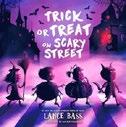
The Cat in the Hat comes back yet again—with a new author and in graphic novel format. The cartoon art is done in a
In NSYNC singer Bass’ debut picture book, trick-or-treaters follow their fearless leader down Scary Street in search of sweets, or so they think. On Halloween night, a mischievous child dressed as a wolf, reminiscent of Max from Maurice Sendak’s Where the Wild Things Are (1963), leads a large, racially diverse group of costumed children down Scary Street. The youngster, who narrates, proceeds to bring them to a series of creepy fun house–style homes, including a mansion belonging to a menacingly dapper
vampire, who offers “toothy snacks” to the terrified-looking trick-or-treaters, and a gingerbread cottage inhabited by a Cruella de Vil–esque witch, who might prefer to bake little children into her house rather than give them treats. Uh-oh. Now there are only four children following the increasingly unreliable narrator, who ominously repeats, “No tricks allowed, just tasty treats.” As it turns out, the narrator does have a trick in store, which completes the scare and brings the story to a happy conclusion. Bass uses a simple, sometimes uneven rhyme pattern that ranges from interesting combinations (missed is rhymed with resist) to more familiar ones (treats/sweets) with a dash of tongue-in-cheek humor. Garrigue’s atmospheric illustrations have a Coney Island sideshow vibe, created with a candy palette that’s both invitingly tasty and garish in just the right way. The narrator, the vampire, and the witch are light-skinned.
All-in-good-fun Halloween scares. (Picture book. 4-8)
The Knight Thieves
Bennett, Jenn | Simon & Schuster (336 pp.) $17.99 | July 30, 2024 | 9781665930345

A pair of bold girls, a wildcat, and a fugitive prince team up to reclaim a kingdom. Twelve-year-olds Rosebud and Wilda make it their mission to steal from the army of their kingdom’s tyrannical usurper, Otto the Torch. Their small gang, known as the Blackhearts, is accompanied by Wilda’s “mostly tame” lynx, Wryclaw. Otto’s reign has been marked by the burning of much of the country of Rin and the murder of its citizens, including Rosebud’s father, Sir Herman the Loyal. The girls agree to journey with Prince Timo, who’s fleeing from Otto, into the enchanted Nowhere Wood to find the magical object that will remove the hexed wolf mask from Timo’s head and
MAY 15, 2024 85 KIRKUS REVIEWS CHILDREN'S
thwart Otto’s plans to execute Queen Gisela for witchcraft. Nowhere Wood is satisfyingly full of menace and wonder, including a friendly (if slightly dim) giant, a crowd of tiny fairies who capture and plan to deliver the Blackhearts to the vicious Huntsman, a village where the adults have disappeared, a blind clockmaker, a man lost in the mines and subsisting on a fungus called Blue Shroomies, and an irascible albino dragon. Among the sly easter eggs for older readers are mentions of Rik Rolls, dice game cheats named after the bard Rik from Astley Isle. The descriptions of the humans suggest a mostly white cast of characters. Cleverly crafted and convincingly episodic, with a dose of madcap humor. (Fantasy. 8-12)
Willow the White House Cat Biden, Jill with Alyssa Satin Capucilli Illus. by Kate Berube | Paula Wiseman/ Simon & Schuster (48 pp.) | $19.99 June 4, 2024 | 9781665952057
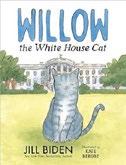
First Lady Biden and Capucilli, author of the Biscuit series, explain how Willow the cat came to reside at the White House. Willow lives contentedly in a barn. One day, she’s curious when cars approach and people gather to hear a blond woman speak. Willow draws closer, then is delighted as the woman lifts her up and hugs her. That evening, light-skinned Farmer Rick tells Willow she made “quite an impression”: The visitor has invited Willow to live with her. A car arrives to drive Willow away to the White House, her new home in Washington, D.C. There, she’s welcomed by the first lady—the same woman who tenderly held her at the farm. Willow meets the president and explores her new home, filled with elegantly furnished rooms, grand staircases, and historic portraits. Plus, there’s a toy-filled basket! Best of all, there are wonderful people who work in and visit this beautiful house who show Willow kindness and affection.
Willow’s favorite resting spot is at the president’s side in the Oval Office, though she also enjoys watching the first lady read to children on the lawn. Animal lovers will especially appreciate this sweet, cat’s-eye view of the White House, which helps humanize the first family by depicting them as ordinary feline fanciers. The loose ink, acrylic, and paint illustrations are cheerful and cozy. Background characters are racially diverse. Kids will enjoy the opportunity to “mews” on the doings of a presidential pet. (author’s note from Biden, photos) (Picture book. 5-8)
Bodega Cats: Picture Purrfect
Burgos, Hilda Eunice | Illus. by Siara Faison Henry Holt (144 pp.) | $16.99 | July 23, 2024 9781250903747 | Series: Bodega Cats, 1
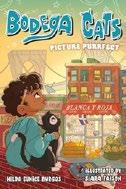
A kindhearted boy offers a frightened stray cat refuge in his parents’ bodega. Miguel hopes he can convince Mami and Papi to let him keep the kitty, and once the vet clears the little feline—christened Lord Lovey Dubby Lobo, or Lolo for short—his parents relent. Blanca y Roja Bodega is now Lolo’s home! But Miguel faces another battle: persuading his pragmatic parents, who want Miguel to become an engineer, to let him join his school’s art club. An aspiring comic book artist, Miguel longs to explore the world (or, at least, the rest of New York City). Desperate, he lies and secretly joins the club but struggles to balance his artistic passions with his responsibilities to his parents, immigrants from the Dominican Republic who have sacrificed to give Miguel a better life. Meanwhile, Lolo, grateful to be off the mean streets, doesn’t understand why Miguel would want to leave the comforts of home. Lolo faces a more worrisome threat when another kitty starts showing up around the bodega. Exploring the burden of parental expectations, this sweet series opener alternates between chapters told
from Miguel’s and Lolo’s equally feisty perspectives. Faison’s delightful artwork fleshes out Miguel and his community; interspersed throughout are Miguel’s comics, which star Lolo as the courageous Super Cat. Dollops of gentle humor and a breezy pace contribute to an overall lighthearted tone.
Paw-sitively charming. (Fiction. 7-10)
Attack of the Forty-Foot Chicken
Carman, Patrick | Blackstone (160 pp.) | $16.99 | June 25, 2024 9798212538381 | Series: Bonkers, 2

The town of Nevermind endures another zany episode, this time pitting an 11-year-old’s epic survivalist skills against an extremely large rooster. Chronically overprepared Barker Mifflin has just started his second year of picking strawberries at McFadden Farm, receiving one essentially worthless McToken for each flat delivered. His stellar performance and survivalist know-how bring him to the attention of Megan McFadden, the farm owners’ 11-year-old daughter, who offers him a spot as a row commander and enlists his help solving an unusual problem. Her mother has mysteriously shrunk down to the size of a doll—apparently the work of Megan’s father, Maverick, a scientist who used to work at Colossal Chemistry. And before long, Barker crosses paths with the enormous chicken. It’ll take all his talents and maybe a little luck to avoid complete disaster while getting to the bottom of things. Though occasionally meandering, this second series installment is chock-full of wild antics, wacky wordplay, just enough scares to create suspense, and a generous sprinkling of Barker’s always entertaining, sometimes useful Survival Nuggets. Familiarity with the first entry in the series is recommended, though Carman has made a strong effort to keep this story
KIRKUS REVIEWS 86 MAY 15, 2024 CHILDREN'S
accessible to newcomers. Characters’ descriptions are minimal.
A wonderfully weird, madcap tale with just a tiny bit of terror. (Fiction. 8-12)
Kirkus Star
Tiny Titans: The Big Story of Plankton
Cerullo, Mary M. | Tilbury House (40 pp.)
$18.99 | June 4, 2024 | 9781668944844
Series: How Nature Works

An introduction to the ocean food web’s most essential component.
Set against black backgrounds, vivid microphotos of the (mostly) small but intricately constructed plants and animals making up the “sea soup” that keeps Earth’s oceans and atmosphere healthy provide riveting visuals for Cerullo’s breezy, richly factual survey. First the author examines the major types of phytoplankton (plant) “superheroes,” both the beneficial sort and the “antiheroes” responsible for calamities from red tides to shellfish poisoning—ranging from dinoflagellates (“phytoplankton with attitude,” or at least maneuverability, unlike free-floating diatoms) to the even smaller “alternative universe” of nanoplankton and picoplankton. Following equally close looks at zooplankton, from copepods and krill to salps and jellyfish, she expands on the central roles plankton play as the “food basket of the sea” and our planet’s “lungs.” Cerullo also considers current threats posed by plastics pollution and warming oceans. Closing with suggestions for greener behavior (bike or walk rather than take car rides, rely on reusable bags while shopping, stick to natural fibers instead of clothing that sheds microplastic fibers), she urges young readers tantalized by this overview to “Do STEM!” “What is there left to learn? Almost everything.” Enticing and informative. (glossary, bibliography)
(Informational picture book. 8-10)
A wonderfully weird, madcap tale with just a tiny bit of terror.
ATTACK OF THE FORTY-FOOT CHICKEN
My Friend Andy
Chinnery, Emma | Union Square
Kids (32 pp.) | $18.99
March 26, 2024 | 9781454955252

A dog meets a loving new pal. Red-coated Fluffy narrates this heartwarming story in first, er, person. Fluffy lives with best friend Lilly and her mom. Every morning on their walk to the park, they pass gray-furred Andy and his guardian, an unhoused street musician. Fluffy’s always happy to see Andy, but she isn’t permitted to play with him. One morning when Lilly and Fluffy are playing fetch, the ball goes into the street; Fluffy chases after it and gets lost. Andy appears and invites Fluffy to join him and his owner, promising they’ll help find Lilly tomorrow. The next day, Andy’s owner spots a “Missing” poster with Fluffy’s photo and address, and Fluffy and Lilly get their loving reunion. After a delicious dinner and a warm bath, Fluffy describes the adventure, explaining—in “dog language,” naturally—“I love my friend Andy. I’m sad we won’t be allowed to play together again.” Lilly listens, but Fluffy’s unsure she understands dogspeak. On the family’s next walk to the park, they encounter Andy and his owner, and friendships blossom between dogs and owners. Looks like Lilly understands after all. Readers, especially dog fanciers, will be moved by this affecting U.K. import and root for these personable pooches; loving friendships aren’t bound by species. The colorful, loose-lined illustrations are reminiscent of Quentin Blake’s work. Lilly, Mom, and the musician are tan-skinned; background characters are diverse.
After reading this touching tale, everyone will want to befriend these irresistible pups. (Picture book. 4-7)
Welcome to Unicorn School
Cobden, Rose | Illus. by Loretta Schauer | Ladybird (32 pp.) | $14.99 June 11, 2024 | 9780241674437
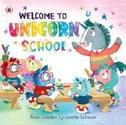
A young unicorn puts a positive spin on a stressful first day of school. Rocky, a blue unicorn with a spiky mane and yellow horn, is anxious about starting school. Even his mother has some “big feelings on this very special day.” She sews a heart on his sweater’s sleeve for him to stroke when he’s feeling worried. Rocky wants to do his best. Although the day starts well, Rocky trips and rips his drawing. Embarrassed, he sits by himself at recess, fretting that he’ll be asked to leave school. Then he meets Sparks, who’s worried she’s “not so good at school.” The heart on his sleeve is proof that Rocky’s mother believes in him, so Rocky decides to pay it forward and believe in Sparks. They form a team and face school together. “When Sparks is feeling nervous, / Rocky reminds her that she shines, / and when Rocky is unsteady, / Sparks helps him feel just fine.” At the end of the day, the two are best friends. The book’s brightly colored cartoon illustrations add joy and energy to the story. Careful readers will note a rainbow of some sort on each spread. Several unicorns wear glasses, and one unicorn parent uses a wheelchair. The text is upbeat and reassuring, though adults may want to preread due to some unusual word order.
An uplifting school tale with plenty of heart. (Picture book. 4-6)
MAY 15, 2024 87 KIRKUS REVIEWS CHILDREN'S
THE KIRKUS Q&A: ANDREA WANG
A Chinese American summer camp is the setting for the latest book by the Newbery Honor–winning author.
BY CHRISTINE GROSS-LOH
PHOENNY, THE YOUNG protagonist of Andrea Wang’s Summer at Squee (Kokila, March 5), is looking forward to returning to summer camp after a lonely seventh grade year. Camp is predictable and comforting—a place where for years she has enjoyed being with other Chinese American kids like herself, engaging in traditional camp activities as well as Chinese cultural classes. This year, though, she’s facing friendship issues, rivalry over boys, and an influx of new girls who aren’t all that eager to immerse themselves in Chinese culture. Wang’s knack for capturing the insecurities and hopes of a middle grader makes the story feel utterly relatable. Her book is also striking for highlighting the complex array of identities that can exist within a given community. We spoke with Wang, who received a Newbery Honor for Watercress in 2022, by Zoom from her home in Denver; the following interview has been edited for length and clarity.


Where did you draw inspiration for Summer at Squee? It largely came from a Chinese heritage camp that my children attended. I grew up in a rural part of Ohio where there weren’t a lot of people that looked like me—in fact, I was the only Asian American student in my class. Later, when I had kids and was living in the Boston area and found out about this cultural camp, I thought, My kids have to go here. I wanted them to have peers that looked like them. It really did turn out to be a
safe space for them where they didn’t have to go and explain anything about their parents or their culture.
As I got more involved in committees, I realized that there were more girls at camp than boys, and that these kids didn’t have Chinese last names. I saw that on the committees there were white parents, too, and then realized they were parents of adoptees. I became friends with some of them and became interested in how they viewed themselves and how their kids did, and what
they identified as, because that’s something my own kids also struggled with.
Your book is compelling in how it calls to mind the concerns of middlegrade kids.
I remember so vividly and mortifyingly my middle school years, and I think that’s why I write for middle grade. Those were some of the hardest years of school for me, and so much of that experience has stuck with me. The insecurity that comes along with being the only Asian American in your grade, as well as the fact that I’m just an awkward person!
Any favorite responses to your writing?
I think my favorite response came from a teacher who posted on Twitter about her second grade student. She had read Watercress to the class and the second grader said something like (I’m paraphrasing here), This is a life lessons book: to be proud of who you are and grateful for what you have. That is something it took me 40 years to realize and he’s only 7 and I was just so moved by that.
Speaking of Watercress , one of its most beautiful messages is that there are people with personal stories that they hold close, when sharing them might be healing. And yet this can be hard when one is living in an immigrant family, such as the one you depict, where this is not at all the cultural norm for the older generation—in fact, it goes against the norm.
CHILDREN'S // Q&A
KIRKUS REVIEWS 88 MAY 15, 2024 Evan Jun Wen
I think it’s a really fine line to walk. There’s so much trauma among that generation that they don’t really want to talk about. And I totally understand that. But as a child, I didn’t have the knowledge of that history and what was going on in that part of the world or in their lives. I felt unsettled by what I didn’t know. You don’t know what you don’t know, but it still affects you. I tell kids to start with lighter memories, and then sort of delve deeper, or to start by sharing their own stories and hope that the people they’re talking to will respond with something that happened in their own past. I really wish I had done a lot more of that with my own parents.
What is the story behind Watercress? How did you get started writing about your family and your past? Since I was young, I kept a diary to process my feelings, but it wasn’t until I was at Lesley University [in
Massachusetts] for my MFA that I heard someone talk about writing personal essays and started thinking about actually doing it. I took a class in it for a semester and found it incredibly rewarding and cathartic. I had lost my mom at this point, and my dad was in a nursing home, and it was a way for me to keep in touch with them—it sort of evolved from there.
Watercress actually started out as one of those personal essays. But it wasn’t working in that format because I just couldn’t figure out the ending. Also, I think I was still too caught up in being angry and resenting my parents, so a lot of the personal essays I was writing were all about I have been wronged. So I turned it into a picture book in third person. And it still wasn’t working, so years later I took it out and rewrote it using some of the things I’d learned in that class. I made it first person again, very raw and honest.
One of the aspects of Summer at Squee that I found quite realistic was the way that language proficiency, culture, and identity are bound together in the eyes of so many. For my parents, things were all about assimilation—blending in and not standing out, so they didn’t seem to really mind that I spoke to them in English. In fact, I helped proofread their English when needed. In rural Ohio there were no Chinese weekend schools available. It wasn’t until we moved to Boston, when I was in eighth grade, that my brother and I went to Chinese school for the first time. We struggled, but we made do, and since then there’s been this tension: I’m reluctant to learn more, but I know I should. My in-laws live in Shanghai, and when we go back to visit it’s expected that we know the language by everybody we meet on the street.
I have struggled and probably still am struggling with my identity as a Chinese American. Phoenny, the main character of Summer at Squee, reflects a lot of me and my journey toward understanding who I am and my place in the world. I keep writing about these themes of identity and culture because middle schoolers especially are grappling with all this. It’s harder with social media not to compare ourselves to others. But instead of thinking about all the ways that we’re not like others, let’s consider how alike we all are, despite our backgrounds. These are books that I need to write to keep processing my childhood. Hopefully, it’s helping readers as well as myself.
Christine Gross-Loh is the author of Parenting Without Borders and The Path.
I grew up in a rural part of Ohio where there weren’t a lot of people that looked like me—in fact, I was the only Asian American student in my class.
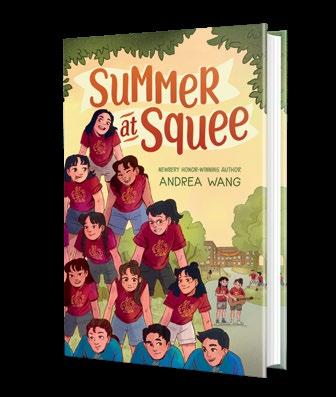
Summer at Squee Wang, Andrea Kokila | 320 pp. | $18.99 March 5, 2024 | 9780593111314
Q&A // CHILDREN'S
MAY 15, 2024 89 KIRKUS REVIEWS
Kirkus Star
Next Level: A Hymn in Gratitude for Neurodiversity
Cole Doyon, Samara | Illus. by Kaylani Juanita | Tilbury House (40 pp.)
$18.95 | April 15, 2024 | 9781668936832
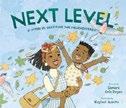
A mother enjoys a day with her autistic son. After mother and son attend church, the child sheds his restrictive clothes for something light and comfy. The boy plays outside before the two take the bus home, where the child bathes and gets ready for bed. The stylish mother is always on the same page as her child, never embarrassed, even when others judge the boy for behavior they see as disruptive. Though many people don’t understand the child, he’s “on the next level,” as she tells him. Cole Doyon’s text is a poignant poem from a parent to a child, making beautiful use of imagery and metaphor and bursting with love. The author explores the child’s unique way of seeing the world and the many ways he and his mother communicate without words. Difficult emotions are simply part of the ups and downs of the day, not something to fear. Juanita’s endearing yet sophisticated illustrations, rendered in her distinctive style, depict a loving Black family; the visuals also incorporate objects that are part of many autistic children’s lives, such as fidget- and chewable jewelry and a sensory body sock. This book will resonate with those children who see themselves in it; for others, it will be a window into one boy’s experience of autism. A deeply empathetic celebration of familial love and neurodiversity. (author’s note) (Picture book. 5-10)

A deeply empathetic celebration of familial love and neurodiversity.
NEXT LEVEL
The Quacken
Colón, Justin | Illus. by Pablo Pino
Simon & Schuster (40 pp.) | $18.99 July 16, 2024 | 9781665922487

The legend of a giant, dangerous duck at Cucumonga Campground looms large. Young Hector and his family are on vacation. Everything seems pleasant except for the many objects that have gone missing and the warnings Hector keeps receiving. Everyone tells him not to interact with the ducks. Don’t go near them, don’t look at them, and absolutely, positively, do not feed them. To further emphasize the point, “DO NOT FEED THE DUCKS” signs pop up every few feet at the campground. So what does Hector do? He feeds the ducks. They just look so cute and hungry. Amid the many feathers flapping, a large, foreboding shadow suddenly crosses the lake. Colón builds suspense through short, clipped narration. The weather turns ominous, and people flee in terror—it’s…THE QUACKEN! The fearsome, colossal wildfowl has appeared! It’s always one step ahead of Hector until there is no escape. Hector is popped into the duck’s bill like a delicious morsel. But, luckily for Hector, “children taste terrible.” Reminiscent of old, cheesy horror films, this tale will make a hilariously over-the-top read-aloud. Pino ramps up the drama in his illustrations, alternating full-page spreads with graphic novel–like panels and vignettes. Hector and his family are brown-skinned, while other campers are racially diverse. Pitch-perfect tension and delightful silliness. (Picture book. 4-7)
Crushed
Conklin, Melanie | Little, Brown (240 pp.)
$16.99 | July 16, 2024 | 9780316509176
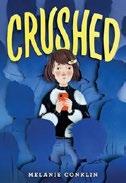
Middle schoolers deal with peer pressure in the age of online bullying. Sophie Valentine hates crowds. They give her The Shakes, what she calls her panic attacks. Sophie’s best friend, Eve, has always been there for her, especially during the pandemic lockdown, but beginning over Thanksgiving break, Eve took an extended absence from school for inpatient treatment due to suicidality, information that Sophie has kept confidential. Now that Eve’s returned, something has changed— she’s hanging out with the Crash Crew, a group of popular kids known for their online challenges and exclusionary behavior. One group member, Chaz, makes Sophie especially uncomfortable, touching and verbally threatening her. A school forensic science unit involving a fictitious murder encourages Sophie to investigate the causes behind her dissolving friendship with Eve and the actions of the Crash Crew. The short chapters switch among settings that include the Valentine family bookstore (where Sophie helps out), Sophie’s therapy sessions, and school. The chapters close with statements from supporting characters that echo witness testimonies in the science project. Sophie’s gentle conversations with her therapist and her Greek American ER doctor mother help her unpack social media bullying and sexual harassment; both adults provide sound and compassionate advice. Conklin offers readers
KIRKUS REVIEWS 90 MAY 15, 2024 CHILDREN'S
For more by Samara Cole Doyon, visit Kirkus online.
practical, hope-filled, and developmentally appropriate perspectives on social anxiety and peer pressure. Main characters are coded white. Relatable, informative, and needed. (author’s note) (Fiction. 8-12)
Angélica and La Güira
Cruz, Angie | Illus. by Luz Batista Kokila (40 pp.) | $18.99
July 30, 2024 | 9780593406014

Angélica is sad to say goodbye to her family in the Dominican Republic after a magical summer visit.
As a parting gift, Abuelito gives the child an antique güira, a cylindric metal percussion instrument. As he scrapes the güira with a metal comb, Abuelito tells Angélica about their ancestors who played the instrument before her. “This güira has power,” he tells her. “It makes the music go slow slow or speed up—fast fast.” Angélica is excited to bring this piece of her beloved Dominican Republic back home to New York City; she plays it loudly whenever she misses Abuelito. Her family and her orchestra teacher aren’t thrilled by the bold sounds, and Angélica can’t seem to find a place where her music is welcomed. Undeterred, she plays outside, drawing neighbors with tamboras, accordions, and more until their street ignites with music and dancing. In the rhythmic beats of the güira, Angélica finds a connection to her roots and a harmony that brings her Washington Heights community together. Heartwarming themes of familial love and heritage resonate throughout, and Angélica is a resilient and empathetic protagonist; readers will admire her persistence as she searches for belonging. Rainbow-hued swirls emanate from the güira, infusing Batista’s orderly scenes with energy; use of onomatopoeia gives the text an enjoyably rhythmic quality. A melodic tribute to the power of music. (Picture book. 5-9)
Kirkus Star
Lessons From Our Ancestors: Uncovering Ancient World Wisdom
Dave,
Raksha | Illus. by
Kimberlie Clinthorne-Wong
|
Magic
Cat (64 pp.) $22.99 | June 4, 2024 | 9781419771200
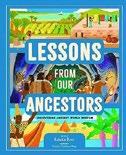
Focusing on 14 cultures spanning more than 40,000 years, archeologist Dave invites readers to “celebrate equality, inclusivity, and sustainability across the ancient world.”
Though many may assume that misogyny was pervasive in the ancient world, the author spotlights the hunter-gatherer society of Çatalhöyük (in what is now Turkey), where men and women were considered equals. While racist historians have stated that Black Africans weren’t capable of great achievements, the author counters that claim by citing the city of Great Zimbabwe. Sustainability might sound like a more recent concept, but from 2500 to 1900 B.C.E., the inhabitants of the city of Mohenjo-daro, in modern-day Pakistan, drank rainwater and used an inspired sewage system that brought waste directly to farmers who used it to fertilize crops. Dave examines 50 artifacts that archeologists have studied to understand these cultures—for instance, small handprints on the walls of Chauvet prove that women and children created cave paintings. Dave’s explanations are cogent and her content is fascinating and well supported; discussions of the ethics of archeology are especially noteworthy. At times, she strays into generalization (a heading states “Women Triumphed at the Ancient Olympic Games” when she presents evidence of one particular woman). Still, those who are familiar only with the history taught in textbooks will come away surprised and enlightened. Bright and cheerful illustrations are detailed in their depictions of cultural practices and artifacts. Captivating lessons from the past that are all the more relevant today. (information on archeology, glossary) (Nonfiction. 7-13)
A Song for August: The Inspiring Life of Playwright August Wilson
Denmead, Sally | Illus. by Alleanna Harris | Levine Querido (48 pp.)
$18.99 | Aug. 6, 2024 | 9781646144396
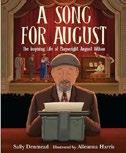
A playwright draws inspiration from his community and his history. August Wilson (1945-2005) was born in Pittsburgh, Pennsylvania, just as World War II was ending. His father, a German immigrant, abandoned the family; his mother, a Black woman, earned a living by cleaning houses. August learned to read at an early age; he loved words and their musical sounds but struggled in school, where racist white students bullied him. He worked tirelessly on a history report on Napoleon, but when the teacher refused to believe August had written the paper, he stopped going to school, instead spending his days reading in the public library. He tried, unsuccessfully, to write about the people his artist friends depicted in their work, but once he imagined the characters describing their own experiences, h is writing took off. Eventually he created the Century Cycle, a series of plays each representing a different decade of the 20th century. They captured the experiences of African Americans: “a story of family and history, of slavery and freedom.” Writing in straightforward prose, Denmead illustrates how August Wilson turned a difficult childhood, his love of learning, and his connection to his people’s stories into a body of literature with major cultural impact. The detailed author’s note provides enlightening context about the reception of August’s work and the many accolades he received. Capturing August’s loneliness, frustration, and joy, Harris’ digital art enhances the text with period details.
A warm introduction to a master of American drama. (August Wilson’s Century Cycle) (Picture-book biography. 4-8)
MAY 15, 2024 91 KIRKUS REVIEWS CHILDREN'S
Both a purr-fect pet story and a vibrant celebration of cultural identity.
LOAF THE CAT GOES TO THE POWWOW
Loaf the Cat Goes to the Powwow
DeShaw, Nicholas | Illus. by Tara Audibert
Nancy Paulsen Books (32 pp.)
$18.99 | May 28, 2024 | 9780593461853

The tale of a cat and her boy. Loaf—so named because she resembles a loaf of bread when curled up—loves hiding, napping in the sun, and chasing rubber bands thrown by her boy, a young Indigenous child. Loaf adores the boy, who shows off his grass-dancing moves, with his long, braided hair and the ribbons on his regalia spinning as he twirls. One day, the boy and his family leave. Loaf knows something’s going on, so she escapes through a window (“Because I am a genius, it was not hard”) and follows the boy’s scent to a powwow. She hides, watching the jingle dress and fancy shawl dancers—until she sees her boy. After he finishes his performance, she leaps out, surprising him. DeShaw (Bois Forte Ojibwe and Eagle Clan) uses repetition to captures a cat’s uniquely self-possessed perspective; feline lovers will smile with recognition as Loaf assures them that sometimes her boy “thinks it’s time for sleep, but I know it is really time for play.”
Audibert, who’s of Wolastoqiyik and French heritage, directs readers’ attention to dancers in the powwow scenes; in her heavily stylized, thicklined illustrations, the performers stand out with pops of color and swirls of movement. Delicate floral Ojibwe details are incorporated throughout. Both a purr-fect pet story and a vibrant celebration of cultural identity. (Picture book. 4-8)
Kirkus Star
Orris and Timble:
The Beginning
DiCamillo, Kate | Illus. by Carmen Mok Candlewick (80 pp.) | $16.99
April 30, 2024 | 9781536222791
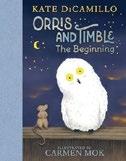
In this opener to a planned trilogy, a mousetrap nailed to a barn floor brings a solitary old rat and a story-loving owl together. Orris the rat seems quite comfortable nested amid his gathered treasures, which include a special marble, a cozy red velvet slipper, and a sardine can with the phrase “Make the good and noble choice!!” That pesky moral imperative proves its worth when, after crawling out to investigate a cry for help, Orris finds himself, against his better judgment, negotiating with a trapped young owl named Timble by telling him part of the story of the Lion and the Mouse and then actually helping to free the owl’s trapped claw. Afterward, to his surprise and pleasure, not only does Orris remain uneaten but Timble reappears with both a butterscotch candy as a thank-you gift and a request for more stories. Though DiCamillo only hints at the feelings of loneliness, terror, relief, and joy concealed beneath Orris’ crotchety exterior, readers will see these emotions clearly enough in the sparely written narrative. Mok does the same with her nocturnal views of the hunched, drably hued little rat lounging in his slipper or tiptoeing gingerly over a shadowy wooden floor strewn with tufts of hay toward a huge, brilliantly white, initially terrifying foe who turns out to
be young, scared, and not at all as predatory as his appearance suggests. A simple tale about looking beneath surfaces that’s as sweet as butterscotch candy. (Early chapter book. 7-9)
Vacation:
Three-and-a-Half Stories
Dyckman, Ame | Illus. by Mark Teague Beach Lane/Simon & Schuster (48 pp.) | $17.99 | May 21, 2024 9781665930444 | Series: Bat, Cat & Rat
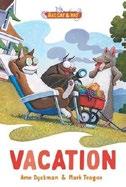
Three roommates plan a trip. The housemates introduced in The Cozy Home (2024) are still getting along, though their living space is littered with debris. “A vacation would be nice,” says Cat, and Bat and Rat agree. But the Vacation Jar is empty. When Cat announces that “it’s time to work,” Rat looks aghast. Income from various jobs—washing cars, babysitting, mowing lawns—fills the jar with coins. Though Cat and Bat work hard, Rat plays pranks and goofs off. When the jar is full, it’s time to decide where to go. Bat wants to travel to outer space, Cat prefers to visit a spa, and Rat doesn’t care where they go, as long as there’s food. While Cat and Bat bicker, Rat stealthily departs with the jar and returns with an answer to their problem: a staycation. He’s brought back a lounge chair and cucumber eye poultices for Cat, a telescope for Bat, and a buffet of food for himself. Though Cat and Bat blithely accept high-handed Rat’s unilateral solution, many readers will be frustrated—after all, a telescope and a lounge chair aren’t quite equivalent to trips to space and the spa—and may wonder why the trio doesn’t work out a more equitable compromise. In the accompanying art, the protagonists resemble large stuffed toys, set against simple backdrops. A one-sided depiction of friendship that will exasperate the fair-minded. (Easy reader/picture book. 4-8)
KIRKUS REVIEWS 92 MAY 15, 2024 CHILDREN'S
Little Ghost Makes a Friend
Edkins Willis, Maggie | Paula Wiseman/ Simon & Schuster (40 pp.) | $18.99
July 16, 2024 | 9781665927857
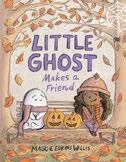
A timid ghost longs to go out on days other than Halloween.
Little Ghost, a tiny, floating, sheetlike wisp, wonders what it would be like to have a friend. He and his mother have been haunting a tottering old house for 100 years. Though Little Ghost loves his community, he’s only comfortable coming out on Halloween, when he can blend in and won’t scare his neighbors. When a new family moves in next door, Little Ghost secretly observes them and realizes that he and their young daughter, Anya, have a lot in common. Eyes scrunched tight and arms splayed out wide, he declares his intention: “I will make a friend.” Luckily, the day of the year when Little Ghost feels the most confident is coming up, so he leaves an invitation to a Halloween party on Anya’s porch. It turns out that Anya’s also shy; grateful for the invitation, she accepts Little Ghost for who he truly is. With his dot eyes and adorably dumpy little frame, Little Ghost is an expressive, endearing protagonist. A muted palette of oranges, purples, pinks, and greens makes this tale of friendship feel as cozy as a hug. Anya is brownskinned, while the other townsfolk out trick-or-treating are diverse in skin tone. A sweetly spooky tale that reminds us that reaching out to others doesn’t have to be scary. (Picture book. 3-6)
The Imaginoodles
Eliopoulos, Christopher | Rocky Pond
Books/Penguin (48 pp.) | $19.99
July 9, 2024 | 9780593698488

adventures to actually going on them. He worries that his new neighbor, Chester, will think he’s dorky. But with prodding from his dad, he heads over to meet Chester. Chester’s thrilled and introduces Henry to the world of imagination, which isn’t Henry’s forte—or so he believes. When Chester introduces Henry to a fire-breathing “dragon” named Denissa, Henry’s skeptical: Denissa looks more like a lizard to Henry. But Chester’s determined. Wielding a “magic stick,” he transforms the backyard into the magical domain of Imaginaria. As they stroll through Imaginaria, they encounter strange characters and places: “the wise and powerful Smartacus” (actually, that’s a garden gnome, as Henry points out), the Candy Forest (“lollipops stuck in the ground”), and the Rainbow Plains (“chalk on the driveway”). But with Chester’s encouragement, diffident Henry eventually proves himself to be no imaginative slouch. This amusing, fast-paced tale will appeal to readers’ sense of fun. Henry and Chester are lively, endearing characters who speak via speech balloons, comics-style. Typographical wizardry, with numerous onomatopoeic words and large, capitalized words used for dramatic effect, will appeal to graphic novel fans.
A charming tale that will have readers unleashing their imaginations. (Picture book. 4-7)
A Song for Nolan
Ellenwood, Rushie | Illus. by Sally Chen Little Bee Books (32 pp.) | $18.99 June 11, 2024 | 9781499815238

A nonbinary kid carves out space for themself (and everyone!) at the roller rink.
Boys skate only!” No one notices when Nolan takes a spill. The child’s distress heightens when “Girls skate!” is announced. “DO I EVEN BELONG HERE?!” Nolan wonders. In a series of wordless panels, Nolan’s dejection turns to determination as they approach the DJ and whisper a request. The story ends with the DJ dedicating the next song to Nolan and adding, “Everyone is welcome to skate!” Chen’s thick-lined, appealingly solid images are alive with rich color and detail that will draw in readers. Though the book comes to a happy ending, with Nolan learning to advocate for themself, the conclusion feels abrupt; it isn’t clear why or how Nolan summons the courage to assert themself. As a result, the narrative has less sparkle than its vibrant illustrations. Nolan is brown-skinned, while Chloe is light-skinned; their peers have a range of hair and skin tones. An unevenly paced tale of self-worth and identity, buoyed by dynamic visuals. (Picture book. 4-7)
Student Ambassador: The Silver City
Estrada, Ryan | Illus. by Axur Eneas Iron Circus Comics (150 pp.) | $15.00 paper May 14, 2024 | 9781638991328
Series: Student Ambassador, 2
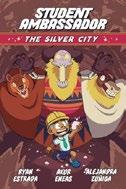
Two animals form a friendship despite their differences.
Shy Henry the hedgehog prefers reading about
Decked out in a pink feather boa to match their hair, Nolan feels a little nervous as they arrive at their friend Chloe’s roller-skating birthday party. That’s when the gender-based microaggressions begin. First, a party guest whispers to Chloe, “I thought you weren’t inviting boys?” Then Nolan gets stuck out on the rink when the DJ calls out, “This next song is for the guys!
The Student Ambassador is back for another adventure, this time heading south on a special mission in Mexico. The first book in the series saw Joseph smoothing diplomatic relations between the fictional East and West Rhutar. Now, on a field trip to the James Olman Presidential Library, he helps his classmates work through a propaganda-ridden simulation exercise. Joseph breaks the rules, goes rogue— and impresses former President Olman. The two team up to get to the bottom of the abandoned silver mines of Zacatecas, Mexico; the trip is also an opportunity for Joseph, whose father is Mexican, to reconnect with his roots. Olman wants
MAY 15, 2024 93 KIRKUS REVIEWS CHILDREN'S
to invest in the mines and convince the locals that reopening the tunnels would be for their benefit, as well as his own profit, but spooky masked creatures haunting the mines have kept speculators out. When Joseph discovers who is behind the masked figures and why, he must confront the former president about his misconceptions and persuade the powerful man to listen to the concerns of the disempowered. The storyline has a chaotic start and takes a beat to settle in, but once it does, it’s a lighthearted whodunit that encourages readers to think about whose voices they listen to and why. Cartoon images complement the plot, bringing plenty of humor. Olman is light-skinned; Joseph’s classmates are diverse.
By turns silly and serious, with a satisfying and thoughtful conclusion. (Morse code activity) (Graphic fiction. 7-11)
Dot the Ladybug: The Missing Dot
George, Kallie | Illus. by Stephanie Fizer Coleman | Harper/HarperCollins (32 pp.) $17.99 | July 9, 2024 | 9780063137509
Series: My First I Can Read
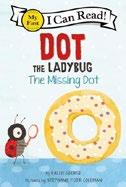
An introduction to reading—and to the gentlest of mysteries. Although Dot the ladybug enjoys finding dots and spots “here, there, and everywhere,” she’s stumped when her friend Spots the dog asks for help finding his snack’s “missing dot.” Readers in the know will recognize the dog’s treat as a doughnut, but Dot and Spots need time to come to this understanding. They begin searching for the ostensibly missing dot as Dot encounters a sunflower’s round center, a round blueberry, and Spots’ ball. None of them are the missing dot! While new readers will be supported by the controlled text’s use of rhyme, assonance, and short sentences, they’ll also gain encouragement from the conceit of the book, which positions them to know
more than the main characters do. Throughout, Coleman’s cheery, cartoon-style illustrations ratchet up the humor of the accessible text, showing Dot using a magnifying glass to examine these objects in her search and visually adding a subtle detective-story flair to the narrative. The mystery is solved when Dot comes across her friend Jots the mouse, who is the doughnut maker. “My snacks have a hole, but they are whole,” Jots explains. In this treat of a story, the homophone is the icing on the cake.
By turns funny and sweet—and sure to hit the spot. (Early reader. 5-7)
Sister Day
Gopal, Jyoti Rajan | Illus. by Fanny Liem Farrar, Straus and Giroux (32 pp.) $18.99 | July 16, 2024 | 9780374390129
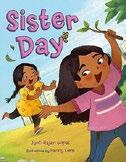
Two sisters embark on a backyard adventure.
A young girl wakes up her sister by grabbing her quilt off the bed. A chase ensues, and the two girls turn the quilt into a swing. Later, while they play hide-and-seek, one of them finds a fairy doll in the closet. The siblings head to the backyard, where they start constructing a fairy glen out of sticks and flowers. One of the girls accidentally knocks over a bucket of water, destroying their hard work. A heated argument follows: “Anger bursts / words slice / tears build / NOT NICE!” After a good cry, they both apologize and turn their attention to the muddy slush, turning it into a mushroom home for their doll. They
run, jump, and play for the rest of the day before finally falling asleep, content. While the children’s argument is resolved a bit too quickly, the mercurial dynamics of the sibling bond and the girls’ personalities shine through in the staccato text. The colorful, cheery illustrations are full of playful moments that show the children using their imaginations. The girls and their mother are depicted in warm shades of brown, and the textiles and aesthetics of their home cue them as South Asian. An ode to sisterly love and creative play. (Picture book. 4-8)
The Boy Who Found His Voice
Gordon, Tyler | Farrar, Straus and Giroux (40 pp.) | $18.99
June 25, 2024 | 9780374389673
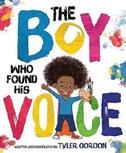
Gordon, a teen artist and activist who in 2020 went viral for his painting of then–Vice President–elect Kamala Harris, draws from his own experiences for this story of a child who uses art to express himself.
Tyler’s words always get “STUCK.” “Long words. Short words. Silly words. All words.” In his head, Tyler can speak “loudly” and “proudly,” tell knock-knock jokes, and “even reveal the real reason why that chicken crossed the road.” Yet in reality, “his tongue [gets] tied, and his words just [won’t] come out right,” a predicament vividly expressed via tangled scrawls and a spread depicting Tyler
An introduction to reading—and to the gentlest of mysteries. DOT THE LADYBUG
KIRKUS REVIEWS 94 MAY 15, 2024 CHILDREN'S
with a long, loop-laced tongue. Still, Tyler won’t give up. His mother encourages him, and together they paint and practice saying “short words, long words, silly words” to describe their work. But at school, his stutter makes it hard for Tyler to find friends; kids stare and laugh when he stammers during show and tell. Again, his mother reassures him. Her ability to understand his paintings, even when they’re imperfect, gives Tyler an idea. At the next show and tell, Tyler proudly unveils his self-portrait…and his audience goes “WILD!” Rhythmic, rhyming, and repeated phrases give the text strong read-aloud appeal; Gordon’s animated, endearing cartoon illustrations readily convey Tyler’s apprehension, determination, and joy. An author’s note explains that Gordon was born deaf and acquired a stutter after undergoing surgery to improve his hearing. Tyler and his mom are Black; his classmates are diverse. Energetic and encouraging. (Picture book. 4-8)
Kirkus Star
Taming Papa
Goupil, Mylène | Trans. by Shelley Tanaka | Groundwood (160 pp.)
$16.99 | March 5, 2024 | 9781773067230
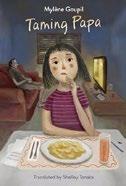
Fifth grader Mélie learns that her father is coming to live with them. Mélie has never met her father, Sami, who’s been imprisoned in an unnamed country for years. She pores over photos of a young Sami while her mother explains that he was imprisoned for his refusal to be quiet. When Sami arrives, their small apartment feels even tinier. Sami barely speaks, does little but watch television, and is terrified of going outside; on top of that, Sami and
Fifth grader Mélie learns that her father is coming to live with them.
TAMING PAPA
Mélie don’t speak the same language. Mélie resents these changes, even as she longs for true connection and wonders what a “real” family is. Later, she runs into her former teacher Mr. Xavier; he and his partner, Luc, have just adopted their daughter, the similarly named Mei-Li, from overseas. As Mélie babysits for them, she observes their evolving and loving family dynamic and becomes determined to build a connection with her father. Through art and poetry, the two grow closer, and the family draw strength from one another as Papa grapples with his trauma. Goupil’s second story featuring Mélie, translated from French and originally published in Canada, stands alone, with simple, accessible prose in short chapters that move the plot forward in increments that are meaningful and reflective. Physical descriptions and references to race and ethnicity are minimal, though the setting appears to be French Canadian.
A poignant story of trauma, healing, and familial love. (Fiction. 8-12)
Dream Submarine
Gunnufson, Charlotte | Illus. by Cleonique Hilsaca | Candlewick (40 pp.)
$17.99 | June 4, 2024 | 9781536224795

An exploration of the oceans yields stunning discoveries.
A brownhaired, tan-skinned child descends beneath the waves in a wide-windowed Dream Submarine to watch as marine life beds down for the night. What amazing sights there are to behold
from that vantage point as the sub sails through the world’s waters. Beautifully colored fish and other marine creatures—some familiar, some likely lesser known—are visible up close in all their glory. Some bear unusual names—soapfish, sweetlips, stargazers, maomao—and some demonstrate intriguing habits (shrimp clean between eels’ teeth; some fish change colors or patterns). Then, there’s a glittery surprise as the submarine dives down and we see a light show with displays of glittery bioluminescence (though that term isn’t used). Children who weren’t previously aware of this underwater phenomenon will be amazed to discover that some sea creatures have the ability to light up because the waters in which they dwell are so dark they must illuminate their own undersea paths. More surprises are in store when the submarine eventually rises from the sea, and the young seafarer surveys the stars in the dark skies above—enough “to make a wish for every fish and each creature in the sea.” This lovely book, expressed in smooth, gentle prose, makes a snuggly bedtime choice. The beautifully colored, crisp, clean digital illustrations capture some fascinating denizens and environs of the deep.
A delightful voyage well worth taking. (map of the Dream Submarine’s voyage, information on the ocean animals depicted in the story, more to explore, ocean zones) (Picture book. 5-8)

MAY 15, 2024 95 KIRKUS REVIEWS CHILDREN'S
For more by Charlotte Gunnufson, visit Kirkus online.
Book to Screen
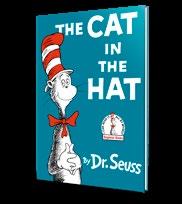
New Cat in the Hat Movie in the Works
Bill Hader will voice Dr. Seuss’ beloved feline in an animated film coming in 2026.
The Cat in the Hat is headed back to the big screen, Variety reports.
Warner Bros. Pictures Animation is developing a
new film adaptation of Dr. Seuss’ classic 1957 children’s book about a tall feline who entertains two kids on a rainy day, leaving their house wrecked (and magically restored before the children’s mother returns home). Seuss followed it up a year after publication with The Cat in the Hat Comes Back
Bill Hader (Barry ) will star in the new film as the voice of the titular cat. Other cast members include Abbott Elementary ’s Quinta Brunson, Saturday Night Live breakout star Bowen Yang, Xochitl Gomez (The Baby-Sitters Club), Paula Pell (Wine Country ), and Matt Berry (The IT Crowd ).
The film will be written and directed by Alessandro Carloni (Kung Fu Panda 3) and Erica Rivinoja (Borat Subsequent Moviefilm).
The Cat in the Hat has been adapted for the screen before. In 1971, CBS aired an animated musical special based on the book, featuring Allan Sherman as the voice of the cat, and in 2003, a live-action film version of the book starring Mike Myers was released to widespread critical disdain.

The new film adaptation is scheduled to premiere in theaters on March 6, 2026.—M.S.


CHILDREN'S // BOOK TO SCREEN
Kevin Mazur/Getty Images
Bill Hader
KIRKUS REVIEWS 96 MAY 15, 2024
For some background on Dr. Seuss, visit Kirkus online.
5 Picture Books To Give Kids the Giggles



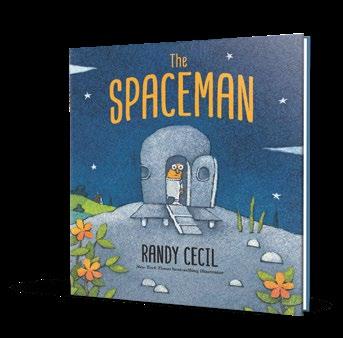

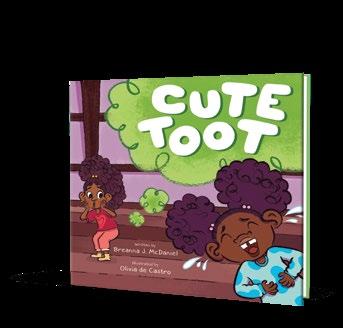
BOOKLIST // CHILDREN'S
For more booklists, visit Kirkus online. 1 2 4 5 1 The Wrong Book By
Chaotic fun, perfect for read-alouds. 2 Gina Kaminski Saves the Wolf
An exuberant, laugh-out-loud take on fairy tales that flawlessly incorporates social-emotional skills. 3 The Spaceman By
Humorous, poignant, and oh-so-satisfying. 4 Roar-Choo! By
A funny premise, executed with verve. 5 Cute Toot By
illus.
A toot-ally fun, funny, and funky family read. MAY 15, 2024 97 KIRKUS REVIEWS
Drew Daywalt, illus. by Alex Willmore
By
Craig Barr-Green, illus. by Francis Martin
Randy Cecil
Charlotte Cheng,
illus. by Dan Santat
Breanna J. McDaniel,
by Olivia de Castro
A reverent, wondrous
feast for the senses and a balm for bruised souls.
LEILA AND THE BLUE FOX
Kirkus Star
Leila and the Blue Fox
Hargrave, Kiran Millwood | Illus. by Tom de Freston | Union Square Kids (256 pp.) $19.99 | April 2, 2024 | 9781454954347

An Arctic fox leads a mother and daughter back to one another. Twelve-year-old Leila Saleh lives in London with her aunt and cousin. When she was 5, she, Mum, Amma, and Mona fled war-torn Syria; Leila has flashes of memories of life in Damascus and their harrowing departure. Mum’s the director of the Tromsø Arctic Institute, and for the six years they’ve been apart, the pair have grown emotionally distant, making their summer reunion tense. Leila barely arrives in Norway before they set off on an expedition on a chartered fishing boat along with divorced scientist Liv Nilsen, whose own young daughter is visiting from her father’s home in Bergen. Miso, the blue fox Mum and Liv have been tracking since her birth on Svalbard, is moving much faster and farther than is usual for her species over shifting sea ice toward Greenland. Her journey offers critical data about the impact of climate change. The pursuit of Miso includes awe-inspiring vistas and wildlife as well as painful schisms and quiet moments of repair and reconnection among the human travelers. Segments from Miso’s perspective evoke empathy without anthropomorphizing the wild creature, and striking artwork in blue, black, and white vividly conveys the remarkable setting. This novel lightly,
compassionately, and subtly prompts reflection on the interconnectedness of all beings as we navigate life’s challenges and the importance of sharing stories and transcending borders. A reverent, wondrous feast for the senses and a balm for bruised souls. (creators’ note) (Fiction. 9-13)
The Big Squeeze
Harris, Molly | Illus. by Alison Hawkins
Harper/HarperCollins (32 pp.)
$19.99 | July 9, 2024 | 9780063255586
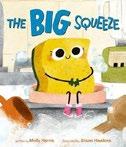
Cleaning is fun for a sponge— until it isn’t. Dirty dishes inspire an anthropomorphic green-and-yellow scrub sponge to get to work. After flexing and polishing herself, the little sponge declares herself “lean, mean, and ready to clean!” As various kitchen objects also come to life, the sponge realizes she has her work cut out for her. Carton sloshes milk on the counter. Knife leaves behind scraps. Toaster even chokes on crumbs. But after helping extra-messy Garbage Disposal and Blender, the little sponge loses her composure—and her shine— with a frustrated “EURGHHHH!” Mess continues to manifest, but the sponge (“sopping wet and bloated and the color of muck”) is too dirty to continue cleaning. Just as she starts to sob and an existential crisis begins, help arrives in the form of the Rubber Glove Twins, who wring her out with a “biiiiiiiiiig squeeze.” As the sponge gets the “full spa package” from even more friends, she learns how to ask for help next time. Harris’ debut is a humorous foray into cleaning routines with a
valuable message about avoiding burnout. Hawkins’ colorful digital cartoon illustrations make even the sharpest objects feel friendly. Careful details, such as the calendar changing or new dishes being added to the sink, aid with continuity.
An entertaining soak with a few suds of empathy. (Picture book. 4-8)
Kirkus Star
Métis Like Me
Hilderman, Tasha | Illus. by Risa Hugo Tundra Books (40 pp.) | $18.99 April 2, 2024 | 9781774881125
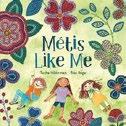
Hilderman (Métis Nation of Alberta) proudly pays tribute to her heritage in this heartwarming story that invites readers to embrace their own roots.
The book starts with a simple question: “Are you Métis like me?”
An accompanying illustration depicts children of diverse skin tones romping through a meadow. The young people answer the question in their own ways, each revealing a Métis custom they practice at home with their extended families. Each scene seamlessly transitions to the next. On one spread, a child sews beads onto moccasins with Noohkom (Michif for Grandma), while on the following spread, another child chimes in, “I have moccasins, too!” We see families handing down other traditions, from picking saskatoon berries to making bannock to fishing. The author also introduces a Métis child who’s unfamiliar with these customs but who’s welcomed into the fold: “It is never too late. You can learn now!”
Hilderman emphasizes the importance of sharing intergenerational knowledge with family and friends. Hugo’s artwork is vibrant and intricate, the use of colored pencil lending the visuals a sense of intimacy. Beaded designs and floral motifs appear throughout, making it clear that the characters are immersed
KIRKUS REVIEWS 98 MAY 15, 2024 CHILDREN'S
in nature. An author’s note explains that Métis, French for mixed , refers to those descended from First Nation women and European fur traders. A joyful story that encourages empathy and affirms identity. (recipe for bannock/gaalet, English–Michif glossary) (Picture book. 4-8)
Ned and the Great Garden Hamster Race: A Story About Kindness
Hillyard, Kim | Penguin Workshop (32 pp.)
$14.99 | July 2, 2024 | 9780593659045

A young hamster is too focused on winning to stop and help others in need, until a mishap of his own teaches him that kindness matters more than speed.
Ned has been training hard for the Great Garden Hamster Race. Hamsters have gathered from around the globe, and though many of them look speedy, Ned is determined to win. Nothing will slow him down— not even encounters with a lost slug, hungry pigeons, and a rabbit trapped in a hole. But soon, Ned needs some help himself. When a passing fox treats him with unexpected kindness, Ned realizes that caring for others is more important than winning. He retraces his steps to help the other animals in distress. Long after dark, Ned is still running the race, but the end is in sight. He finds the other hamsters waiting for him so they can all cross the finish line together. The turning point focuses primarily on Ned’s actions rather than his thoughts or emotions; because the book doesn’t explore the motivation behind his change of heart, the message feels somewhat diminished. Still, it’s a feel-good tale, and the illustrations, painted in chunky brushstrokes with handwritten speech bubbles, brim with stylistic appeal. A sweetly simple story with a straightforward, if somewhat superficial, message of altruism. (Picture book. 3-7)
Can You Hear the Plants Speak?
Hummingbird, Nicholas & Julia Wasson | Illus. by Madelyn Goodnight Harper/HarperCollins (40 pp.) | $19.99 April 16, 2024 | 9780063221284
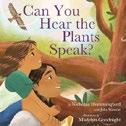
An Indigenous gardener matures—and vows to protect the environment. The young narrator spends summer days with loving great-grandparents who impart important lessons: “These trees are our ancestors” and “We thank them with a song, a blessing, and a few drops of water.” From mountains to rivers, every part of nature is alive, and the child learns to listen to the plants, who offer food, promise to quench the little one’s thirst, and provide smoke to “lift your prayers to heaven.” As the youngster grows, so does the surrounding cityscape, silencing the animals and plants. The now-adult protagonist wanders, alone and lost—before coming across a tiny plant sprouting from the gray concrete. Inspired, the narrator decides, “From one, I would grow many.” Trees and flowers fill the pages. Later scenes show the protagonist with a young son, who also learns to listen to the wisdom of the plants. Hummingbird—a descendant from the Cahuilla nation of Southern California’s Inland Empire and the Apache nation of New Mexico—and Wasson matter-of-factly emphasize the importance of respect for the environment. Goodnight’s (Chickasaw Nation) realistic art complements this tender story. Soft, natural colors add warmth, while leaves and acorns adorn the endpapers, underscoring the themes of growth, compassion, and strength. In the backmatter, the authors note that plants, like animals, can go extinct; they leave readers with suggestions for growing native plants in their own homes and backyards. Heartfelt reflections on the importance of kinship with nature. (resources) (Picture book. 4-8)
Warriors Graphic Novel: The Prophecies Begin
Hunter, Erin | Adapt. by Natalie Riess and Sara Goetter | Illus. by Natalie Riess and Sara Goetter | HarperAlley (272 pp.)
$24.99 | July 16, 2024 | 9780063203884
Series: Warriors Graphic Novel, 1
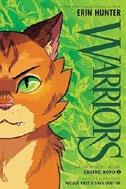
In this graphic adaptation of the original series’ first two episodes, kittypet Rusty joins the feral cats of Thunderclan and earns a warrior’s name. Making the switch from print to this tale that’s told through dialogue and visual sequences containing very little exposition may relegate the complex dreams and visions to wordless montages and make it even harder to keep track of who’s who in the large, furry cast, but the art really brings out the savagery that has distinguished Hunter’s work and perhaps accounted for its enduring appeal. Here, as snarling cats flash cruelly sharp teeth and claws, pounce on prey with a crunching of bones, and engage in bloody melees with cats of rival clans (and even, once, with a swarm of vicious rats), the feline protagonist, an orange tabby more distinguishable than most due to an unusual mark on his forehead, displays heroic qualities aplenty. He serves an apprenticeship under his new name, Firepaw, but is at last named Fireheart, decisively turning from the easy, domesticated life to embrace a harder (but far more glorious) role as a warrior of Thunderclan. Along with a helpful aerial map of the clan’s territory, the creators include an illustrated afterword in which they cast themselves as cute kitties to demonstrate their work process. The vivid colors, dramatic action sequences, and appealingly expressive feline faces will grab readers’ attention.
Skillfully catches the feral tone and spirit of the original. (alternate covers, character designs) (Graphic animal fantasy. 11-13)
MAY 15, 2024 99 KIRKUS REVIEWS CHILDREN'S
Loose Threads
Isol | Trans. by Lawrence Schimel
Enchanted Lion Books (76 pp.) | $18.95 June 25, 2024 | 9781592703920

In this tale translated from Spanish, a young girl’s decision to mend holes leading to a mysterious world has unintended consequences.
Leilah is always losing her belongings—her scarf, her umbrella, her keys (three times!). Mama chides Leilah for not being more careful, but Leilah can explain. Existing alongside Leilah’s beautiful, orderly village is another, chaotic world called the Other Side. It’s an enigmatic place accessible only through dreams, with “landscapes full of knots” and bizarre creatures. Things disappear through holes to the Other Side, Leilah tells Mama, and if she could only mend them, nothing would ever disappear again. Although sewing up the holes prevents objects from falling through, Leilah also inadvertently creates a smokelike fog that stifles both worlds. Undoing her stitches, Leilah receives an unexpected gift and promises Mama to find another way to keep track of her possessions. Inspired by a traditional hand-embroidered shawl that she received on a visit to Palestine, Isol’s eye-catching, unique illustrations feature photographs of its patterns; the outward-facing side is the backdrop to Leilah’s village, while the reverse sets the scene for the Other Side. Earthtoned, woven fabrics in tans and greens sometimes serve as backgrounds but are also snipped into pieces onto which characters are drawn, providing contrast to the predominantly black and red scarf. Isol concludes this
clever, playful tale with an epilogue vindicating Leilah. Characters have skin the color of the page. Whimsical and imaginative. (author’s note) (Picture book. 5-9)
Moomin Adventures: Book One
Jansson, Tove & Lars Jansson | Drawn & Quarterly (312 pp.) | $22.95 paper
July 9, 2024 | 9781770467422
Series: Moomin Adventures, 1

Seven Moomin family tales are brought together in this collection of the classic Finnish comic strip in this uncredited translation from the original Swedish. The Moomins, subjects of a series of novels that first appeared in the 1940s, have since featured in picture books, comic strips, and animated TV series and films worldwide. This volume collects comic strips originally published in English in the London Evening News that were written and illustrated by both acclaimed original Moomin author and artist Tove Jansson and her brother Lars. With a grand spirit of adventure, Moomin, a charmingly hippolike creature, and his family look for ways to experience life outside Moomin-valley. The collection kicks off with “Moomin on the Riviera,” in which Moomin, Moominmamma, Moominpappa, and Moomin’s friend and sometimes love interest, Snork-maiden, sail south in search of a glamorous vacation. Shocked and dismayed by how much land is privately owned and inaccessible, they accidentally stumble into an exclusive hotel, where they’re assumed to be eccentric millionaires. More adventures follow, each concluding back in Moomin-valley, with the Moomins feeling a newfound appreciation for the
A debut with potential that explores friendship and identity.
simplicity of their daily lives. The tongue-in-cheek humor pokes fun at pretension, greed, and buffoonery. Some of the jokes about gender dynamics have not aged well, however. The clean, black-and-white line art and regular panels amusingly highlight the creatures’ antics; the lettering is occasionally compressed and, combined with some challenging vocabulary, may prove tricky for younger readers. Whimsical nostalgia. (Comics. 8-adult)
Skylight
Jones, Patchree | Illus. by Preeyanne C. Jones | Shaherazad Shelves (372 pp.)
$14.99 paper | June 25, 2024
9781960323149 | Series: Mehk Light, 1
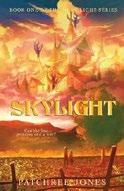
Thai American besties discover new worlds. Thirteen-yearolds Sofia and Cara have always been together, so it’s a relief that their families are both moving from Colorado to Los Angeles (their moms have the same employer). The pair have barely settled into their new homes when they’re whisked away to the kingdom of Tropos, a land of clouds. Horned, winged royal guards escort the girls to the palace, where Sofia, who struggles with panic attacks, is greeted with the revelation that she’s Jao Ying Saengfaa, the lost crown princess. Her royal parents sent her away as an infant to protect her from Muet, the leader of the Night Army. Muet is raging war, and she believes that Sofia is the key to conquering the three realms and reclaiming what she believes is rightfully hers. While the girls receive combat training, the Oracle drops hints about Cara’s role in the kingdom. The introspective third-person narration toggles among different characters’ perspectives, including that of octopuslike, shape-shifting Plaek, who’s Muet’s servant and is tasked with helping to carry out her campaign. While the premise of the
KIRKUS REVIEWS 100 MAY 15, 2024 CHILDREN'S
SKYLIGHT
novel and many of the plot twists are compelling, the quick buildup and easy resolutions of the climax and the somewhat pedestrian writing style will leave readers wishing for more depth. Lingering questions set the story up for a sequel.
A debut with potential that explores friendship and identity. (glossary) (Fantasy. 9-12)
A Love Letter to My Library
Katzenberger, Lisa | Illus. by Rob Sayegh Jr. | Sourcebooks eXplore (40 pp.)
$14.99 | June 4, 2024 | 9781728272719
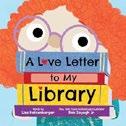
A paean to a perfect public place. Endpapers featuring shelves displaying the colorful spines of books of various sizes appropriately introduce this bouncy valentine to libraries, written from a child’s perspective. There’s so much to thank libraries for, from the enthusiastic welcomes visitors receive the moment they enter to the books that take readers on adventures. Don’t forget craft activities or storytime. And don’t you love that seating areas are always the perfect size so kids can curl up and read to their hearts’ delight? And what about library computers, which connect us with distant family members? One of the very best things about libraries are the helpers who assist kids in finding books that reflect their own experiences. And there’s even more to love about libraries! Children should be encouraged to compare and contrast their own library experiences with those of the book’s cheerful characters; they may wish to create “love letters” like the one at book’s end. The colorful, lively collage and digitally painted illustrations portray people who are diverse in terms of race, culture, and ability. What’s not to love? This is a natural addition to bookshelves—and library collections in particular. (Picture book. 4-7)
I Can Do It Even if I’m Scared: Finding the Brave You
Katzenberger, Lisa | Illus. by Hannah George | Sourcebooks eXplore (40 pp.) $18.99 | July 2, 2024 | 9781728272689
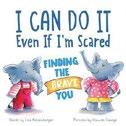
How can you be brave even when you feel frightened? This sensible, comprehensible guide for kids—and adults, too, if we’re honest—explains how to tap into the Brave You, the “strong and bold part of you deep inside.” Yep, even when you’re feeling uncertain, nervous, queasy, frightened, or all of the above, within you lies a resilient inner person. How do you find the Brave You? Katzenberger encourages little ones to imagine what the Brave You sounds and acts like. “Next, play pretend and watch what happens.” The author proposes that readers engage in these and other empowering activities for as long as they wish and for as long as these pep talks are required. One day, the Brave You “will become your whole self,” she assures readers, and “you will be able to face your fear without even thinking about it.” Softly rendered illustrations depict an adorable, childlike, all-animal cast. The visuals will be fun for children to pore over, and the characters are supportive role models for kids in need of a boost. The inspirational author’s note, a list of tips aimed at children, and a message for caregivers from child psychologist Heather Davidson will also be useful.
Every child needs a pick-me-up to feel an extra surge of courage: Here it is.
(Picture book. 5-8)

Kirkus Star
Amir and the Jinn Princess
Khan, M.T. | Jimmy Patterson/ Little, Brown (304 pp.) | $16.99 July 23, 2024 | 9780759557970
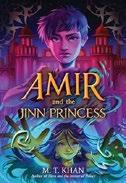
A conceited 12-year-old in Lahore, Pakistan, agrees to help a jinn princess win a competition to become the heir of her kingdom in exchange for her assistance in searching for his missing mother.
more by Lisa
Belying the arrogance that’s a result of a hyperprivileged upbringing, Amir Rafiq suffers from the loss of his beloved mother, who mysteriously disappeared from his family’s brick-making company. When Amir’s domineering grandmother announces that his father will be remarrying, Amir vows to locate his mother in time to stop the wedding. He doesn’t expect his quest to take him into another realm alongside spirited, shape-shifting jinn princess Shamsa. They are kindred spirits in their marginalization by siblings who regard them as competition, but they’re opposites in their desire to take their places at the top—Amir wants nothing of it, while Shamsa is driven to win by a secret promise. They strike a deal: Shamsa will help Amir find his mother, and Amir will use his cunning to help Shamsa ascend the throne. Khan superbly crafts a redemption arc for Amir, developing his character from unlikable to heroic as he navigates a variety of different circumstances from isolation to belonging, in the process growing from callous and entitled to complicated and altruistic. She also deftly and accessibly weaves into the story important social commentary on corporate ethical dilemmas such as exploitative labor practices, greed, greenwashing, and the blurred lines between social responsibility and buying people’s support. Captivatingly well written and magical. (Fantasy. 8-13)
MAY 15, 2024 101 KIRKUS REVIEWS CHILDREN'S
For
Katzenberger, visit Kirkus online.
Edifying fare for future yoga practitioners.
A RAINBOW INSIDE MY BODY
Bijan Always Wins
Khorram, Adib | Illus. by Michelle Tran
Dial Books (32 pp.) | $18.99
July 9, 2024 | 9780593325308
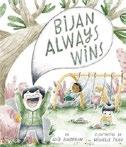
Winning isn’t everything. Bijan always has to win, even when he’s taking part in activities that don’t have a clear victor, such as drawing pictures of birds, eating vegetables, playing dinosaurs, and brushing his teeth. He also wins in his dreams: He transforms into a scaly green creature and breathes fire at his frightened fellow dragons; later, he dives to the bottom of the ocean—so deep that no one can hear him declare, “I win again!” Back at school the next day, Bijan’s friends, fed up with his competitiveness, refuse to sit with him. Bijan slowly realizes that it’s lonely being a self-proclaimed champion. “More than anything, I want to win at being a friend.” So he treats those around him with kindness, and they welcome Bijan back into the fold. Khorram’s simple, expressive text uses fantastical elements to elevate a familiar story of social-emotional growth to a thoughtful parable that will leave readers mulling what it means to be a true friend. Tran’s wispy digital illustrations convey both whimsy and heart, using a palette of pale greens, pinks, and deep blues along with a variety of perspectives, to dramatic effect. Bijan is light-skinned and darkhaired; his friends represent a diverse range of skin tones and hair colors. An inspired tale that puts a clever spin on a well-trod message of friendship and generosity of spirit. (Picture book. 4-7)
Theodora Hendrix and the Monstrous League of Monsters
Kopy, Jordan | Illus. by Chris Jevons | Simon & Schuster (256 pp.) | $18.99 | July 16, 2024 9781665906838 | Series: Theodora Hendrix, 1
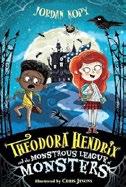
A plucky young hero unravels a monster-filled mystery.
As an infant, Theodora was found swaddled in a graveyard in England by a kindly zombie and his vampire-cat companion. She was adopted by a good-natured group of monsters, who broke a strict tenet of their sacred charter by bringing a human into the mix. Now, 10 years later, Theodora attends Appleton Primary School. On the first day of Year Five, she meets and befriends Dexter Adebola, a new Nigerian American student. When odd occurrences begin to compound—sinister notes, trails of slimy earwax, and ominous corvids—Theodora knows she must uncover the nefarious source before her place within her beloved monster family is jeopardized. Kopy’s breezy offering is more fun than frightening, with conversational chapters that mostly culminate in page-turning cliffhangers but ultimately lead to a lackluster and hastily rendered conclusion. This work, which was originally published in the U.K. in 2020, contains some questionable representation. Brave and precocious Theodora is white; conversely, bespectacled, stuttering Dexter, who’s Black, serves as little more than an anxious sidekick. The depictions of women are also unfortunate: As the fight between good and evil
culminates, the good monster is shown as thin, feminine, and conventionally attractive, whereas the bad one is fat and disabled and has hairy legs. A found-family tale that falls flat due to tired stereotypes. (Paranormal mystery. 8-12)
A Rainbow Inside My Body: Finding Peace Through Yoga, Breathing Exercises, and the Chakras
Kottaras, E. Katherine & Vanitha Swaminathan Illus. by Holly Hatam | Viking (40 pp.)
$18.99 | July 9, 2024 | 9780593465691
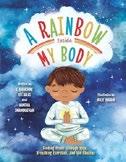
Young yogis learn that to calm themselves, they must look to their inner rainbows.
“A rainbow inside my body / twirls / and whirls / and spins. / Inside, chakras / keep me dancing, / like raindrops / in the sun.” A brownskinned child sits cross-legged, eyes closed, next to a rainbow that links each color to a different chakra. Red is the root chakra, helping the child feel firmly anchored, like the roots of a tree. “When I need to feel grounded, / I can close my eyes and breathe.” Orange is the sacral chakra; it helps the child feel inspired and creative. Yellow is the solar plexus chakra; it gives the little one confidence. The authors go through the colors of the rainbow all the way to violet, the crown chakra. In each accompanying illustration, a child performs a yoga pose and breathes deeply, surrounded by the color of the chakra and imagery from nature: soaring birds, a large yellow sun, vibrant flowers. The extensive backmatter begins with an authors’ note that offers a brief history of yoga and explains chakras and ayurveda. Next, readers will find yoga instructions, with explanations of how to do various poses. Finally, the authors include a short guide to the foods and the elements associated with the chakras. The book is a solid, easy-to-understand introduction, while Hatam’s watercolorlike illustrations are bright as the rainbow and effectively depict the poses.
KIRKUS REVIEWS 102 MAY 15, 2024 CHILDREN'S
Edifying fare for future yoga practitioners. (Picture book. 5-10)
Meesh the Bad Demon: The Secret of the Fang
Lam, Michelle | Colors by Lauren “Perry” Wheeler | Knopf (304 pp.) | $21.99
July 23, 2024 | 9780593372913
Series: Meesh the Bad Demon, 2
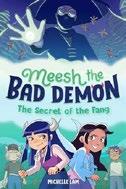
Meesh and friends uncover a fissure at the heart of fairy and demon societies alike. Meesh is training up her newfound guardian abilities with her grandma Chow, but danger is closing in. The werewolf pack, including Chai, is displaced when its forest home is bulldozed. Friends Nouna the fairy and Xavier the demon offer to help, but the cause of all this trouble shakes the foundations of everything they thought they knew about Ponderosa and Plumeria City. The first book dealt with prejudices between demons and fairies; this sequel exposes both societies’ unfair maligning of a third group. The characters grapple with uncomfortable feelings that arise from honestly facing the harm done by members of one’s community and setting aside ego in the interest of truly helping others. In the process, they demonstrate self-sacrifice, empathy, and forgiveness. Callbacks to the series opener are used for humorous and dramatic effect. There’s still plenty of room for magical showdowns, assistance from sentient trees, and the threat of a giant laser of doom, of course. The range of perspectives and the clear emotional expressions the characters wear mean readers will easily find someone among the cast to connect with. The story’s message of looking beyond merely assigning worthiness or blame to find a productive path forward is a powerful and affirming use of its fantasy world.
Uses questions of right and wrong to thoughtfully challenge a robust fantasy society. (process notes and sketches) (Graphic fantasy. 8-12)
Kirkus Star
All About U.S.: A Look at the Lives of 50 Real Kids From Across the United States
Lamothe, Matt with Jenny Volvovski | Illus. by Matt Lamothe | Chronicle Books (84 pp.) $19.99 | Aug. 6, 2024 | 9781797213705
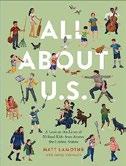
Fifty real children, one from each state, describe their families, daily lives, interests, and hopes.
Using an intensive selection process involving census records and questionnaires, Lamothe, the author of the similarly themed This Is How We Do It (2017), and writer and designer Volvovski profile 50 children, ages 5 to 11—not as supposed representatives of the states they happen to live in, but of children everywhere in this country. The entries feature half-page summaries of video-chat interviews and painted images of the young people with their homes and families. Seven-year-old Ramon has to keep his Hot Wheels collection in bins in the hallway, since he shares a bedroom in Rhode Island with his mom and sister; 11-year-old Betsy (Alabama) gets in trouble for reading while driving her motorized wheelchair; and while her dads in Wyoming prepare dinner, 6-year-old Charlie talks about her dance classes and how she wants to be an astronaut veterinarian when she grows up. What emerges is a rich, thought-provoking work that proves that despite our differences, there’s much that we share. Though acknowledging that multiracial children are overrepresented here (but with some justice, as it reflects a documented trend), the authors finish off with bar graphs showing that overall they are presenting a reasonably accurate demographic picture of young America in all its diversity…while convincingly suggesting that, as they put it, “we have more in common than we may think.” Methodical, inspiring, and consistently enlightening. (sources) (Nonfiction. 8-12)
Rohan Murthy Has a Plan
LaRocca, Rajani | Illus. by Kat Fajardo Algonquin (128 pp.) | $15.99
April 30, 2024 | 9781523526581

Series: The Kids in Mrs. Z’s Class, 2 LaRocca picks up the baton for this latest in the series, each of which is written by a different middle-grade author and follows a different student in Mrs. Z’s third grade class. Mrs. Z announces that Curiosity Academy has a new garden. To help raise money for it, Rohan decides to start a pet-care business—an odd choice, as his younger sister, Kavya, points out, given that he dislikes animals. Ever since he was bitten by his music teacher’s cat, he worries that all pets bite. His parents insist that he prove he’s responsible enough. So when Mrs. Z tells the students that they may sign up to take Honey, the class guinea pig, home for a weekend, Rohan jumps at the chance. Though he’s afraid, he’s determined, and when Honey gets frightened during a thunderstorm and goes missing, Rohan learns another valuable lesson: “It’s easier to get over being scared with a friend.” The premise of this lightweight, sweet tale feels a bit unrealistic; most kids who are nervous around animals likely wouldn’t volunteer to take the class pet home, much less start a pet-related business. Still, the resolution is heartening. LaRocca captures sibling dynamics ably; Rohan and Kavya squabble but ultimately support one another. Mrs. Z is brown-skinned in the upbeat, expressive illustrations; Rohan and his family are cued South Asian. Final art not seen.
Quietly uplifting and encouraging. (Chapter book. 6-9)

MAY 15, 2024 103 KIRKUS REVIEWS CHILDREN'S
For an interview with Rajani LaRocca, visit Kirkus online.
Welcome to Scare School
Lerner, Jarrett | Aladdin (128 pp.) | $17.99
July 16, 2024 | 9781665922098 | Series: Scare School Diaries, 1

A young ghost arrives at Scare School. Unlike big sister Bella, late bloomer Bash has never been good at “all the GHOST STUFF.” Dad’s sure that Scare School is just what Bash needs. Bash isn’t so certain; he’s intimidated by his classmates and teachers. But he perks up when he meets his roommate, Itsy, a smart, welcoming spider, though he vows to steer clear of mean-spirited Vlad and Vicky. Still, the dreaded Creature Aptitude Test worries Bash. To pass, he must pass through solid objects and turn himself invisible— skills he struggles with. Bash doesn’t want to be kicked out of school, so he’ll have to buckle down. With Itsy’s help and encouragement from his classmates, Bash realizes he’s more capable than he thought. Written in first person from endearingly anxious Bash’s point of view, the book has a diarylike feel. The text is presented in a handwritten font, while grayscale cartoon illustrations are peppered throughout. The supportive, sincere friendship between Bash and Itsy is the most compelling part of the story. Letters between Bash and Bella shed further light on Bash’s personality and their relationship. Though the book’s takeaway—believe in yourself, and you can do anything— is a familiar one, it’s just what many children need…and who better to deliver the message than an adorably nervous ghost?
Approachable and comfortably predictable. (Fiction. 6-8)

Pig in Jeans
Li, Brenda | Orchard/Scholastic (32 pp.)
$14.99 | July 2, 2024 | 9781339053691
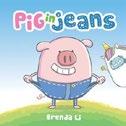
Why would a pig wear pants? Pockets, of course! Brian wears his jeans everywhere, all the time, much to his friends’ confusion. No other trousers will do (“Shorts are too short.” “Tights are too tight”). But the main reason Brian loves his jeans? The pockets. “There are two in the front. Two on the bum. There is even a pocket inside a pocket!” Brian hides so many things in his pockets that not even his BFF, Nathan, knows what’s in them. When he and Nathan, a (clothing-less) unicorn, encounter troubled creatures on a stroll, Brian’s pockets provide improbable solutions, from sprinkles for a baker in need of toppings to a sock to help a squirrel carry home nuts. “Now I know what you keep in your pockets,” says Nathan. “Random stuff!” The anthropomorphic animals are all egg-shaped, with stick limbs in a style vaguely reminiscent of Dav Pilkey’s Captain Underpants. Li provides some lighthearted backstory for Brian, who’s appeared in several of her other, self-published books. Whatever Brian’s tale may lack in plot, it makes up for in laughs. With kid-friendly prose, fun illustrations, and a dash of underwear-related humor, this tale will make for a wonderfully silly storytime. Puckish praise for pockets. (Picture book. 4-8)
Everyone Loves Career Day but Zia: A Zia Story
Liao, Jenny | Illus. by Dream Chen
Knopf (40 pp.) | $18.99
July 2, 2024 | 9780593425459
For more by Jarrett Lerner, visit Kirkus online.
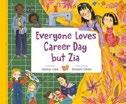
In this follow-up to Everyone Loves Lunchtime but Zia (2023), a young Chinese American girl wishes that her classmates could see how talented her seamstress mother is.
Zia’s class is hosting Career Day. When her teacher asks whose parents can come to school to talk about their jobs, Zia keeps her hand down, uncertain that Mama will be able to come. When she asks, Mama says she’s worried that the students won’t understand her English. “I can teach you more English,” Zia responds. But Mama can’t miss work. When Mama makes Zia a beautiful red dress to wear to Career Day, Zia has an idea. On Career Day, after the other students’ parents have talked about teaching art, building phones, treating sick animals, and staying at home to look after children, Zia connects a laptop to a larger monitor. There’s Mama, showing everyone how she makes a dress, with Zia translating Mama’s Cantonese into English. Large swaths of brilliant red and yellow fabric billow out from the computer screen to fill the page, conveying both Zia’s enthusiasm and Mama’s expertise. Throughout, charming artwork expressively communicates Zia’s gamut of emotions while propelling the story forward. Liao lovingly weaves together the threads of immigrant life and allows Zia to take the initiative to solve the problem in a thoroughly modern way. This rich and multifaceted story is a perfect fit. (author’s note, glossary) (Picture book. 4-8)
Kirkus Star
The Night Librarian
Lincoln, Christopher | Colors by Bonaia Rosada | Dial Books (256 pp.)
$23.99 | July 30, 2024 | 9780593617656
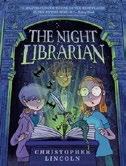
Twins discover a whole new world at the New York Public Library. Page and Turner Reed are library-loving Manhattanites with jet-setting parents and an absentee nanny. On a whim, they decide to take their father’s beloved first edition of Dracula to the main branch of the NYPL in hopes of
KIRKUS REVIEWS 104 MAY 15, 2024 CHILDREN'S
learning its value. After they lose the precious volume, they seek help from the enigmatic Night Librarian, Ms. Literati. During their ensuing adventure, the twins learn that “magic builds in books.” The Night Librarian helps vent the tomes in order to prevent “a catastrophic KABLOOEY.”
However, it seems that despite Ms. Literati’s best efforts, characters are escaping, perhaps with their own sinister motives. Both a love letter to libraries and to literature, Lincoln’s absolutely delightful graphic tale incorporates influences from many recognizable literary works: Nana, the dog from Peter Pan , helps Jim Hawkins from Treasure Island and Alice (of Wonderland fame) track down baddies from Poe, Stevenson, and more. Book lovers will be inspired by the dazzling number of classic and contemporary books that are namedropped and will certainly prowl their local libraries seeking checkouts and investigating whether Night Librarians are indeed real. The fluid artwork features scribbly lines, interestingly laid-out panels, and creative use of a strikingly unusual color palette. Page and Turner read white; Ms. Literati presents Black.
Charming, highly original, and sure to secure its own place in the graphic canon. (Graphic adventure. 8-13)
Becoming Who We Are: Real Stories About Growing Up Trans
Ed. by Lisel, Sammy & Lilah Sturgess
A Wave Blue World (144 pp.) | $16.99 paper
June 4, 2024 | 9781949518269

Nine transgender people share their stories. Each tale in this work of graphic nonfiction, depicted by a different, talented illustrator, is told from the point of view of a real trans person. Brooke Guinan fought to make the NYC Fire Department more diverse
and inclusive. Diamond Stylz, executive director of Black Trans Women Inc., endured bullying and parental neglect before meeting supportive queer friends and filing a lawsuit against her school for the right to attend prom in a dress. Marli Washington grappled with alcoholism and disordered eating but eventually began transitioning, fell in love, and started a company that designs chest binders. The individuals profiled are racially diverse and include transgender men and women as well as nonbinary people. Though it isn’t entirely clear how the stories came to be written (the subjects aren’t listed as co-authors, nor is there an explanation about an interview process), it’s a small point. The book overwhelmingly leaves readers with a sense of positivity. Even when the subjects confront painful situations—being bullied, getting kicked out of the house—all agree: It’s important to find a way to be true to yourself. They discuss not only their gender transitions, but also how they discovered their voices, passions, and careers. Though the work will resonate with many readers, it will especially speak to trans youth. Inspiring and honest accounts from relatable role models. (Graphic nonfiction. 8-13)
Sour Apple
Liu, Linda | Henry Holt (40 pp.) $18.99 | July 9, 2024 | 9781250835086
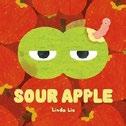
A lonely apple is left behind at harvest time. All the apples have wide-open eyes, but our protagonist— green with a brown spot, in contrast to the bright red ones—has a questioning
personality. In simple, rhymed text, the unpicked apple wants to know why it wasn’t selected: “Am I not shiny enough to sell at the market? Or not tiny enough to be used as a target?” (The accompanying illustration for that last line depicts William Tell.) Other apple allusions appear: Newton’s encounter with a falling apple; the evil stepmother, the poisoned apple, an unconscious Snow White, and the seven dwarfs. Our apple plaintively wonders: “Am I too ordinary to make or break your day?” Well-known apple adages are referenced as the apple adds, “Or not sweet enough to be the apple of your eye? Or not extraordinary enough to keep the doctor away?” While young children may need adult readers to explain some of these examples, they’ll understand the little apple’s unhappiness. They’ll be upset when insects try to devour the apple and seemingly bury it but will cheer when the passage of time brings about an amazing transformation: The apple eventually becomes a tree. Bold colors and shapes reminiscent of Eric Carle’s artwork will entice children; they’ll be gratified to see this seemingly hopeless piece of fruit ultimately succeed. An uplifting tale of triumph. (Picture book. 4-6)
Dinner at the Brake Fast
Lute, Renee Beauregard | Quill Tree Books/HarperCollins (208 pp.) | $18.99 June 25, 2024 | 9780063324909
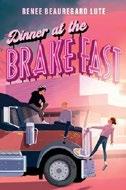
Twelve-year-old Tacoma spends her evenings and weekends working at her parents’ Washington state truck stop, the Brake Fast.
Socially isolated due to her work
Inspiring and honest accounts from relatable role models.
BECOMING WHO WE ARE
MAY 15, 2024 105 KIRKUS REVIEWS CHILDREN'S
schedule and some bullies at school, Tacoma becomes cautiously excited when a musician’s tour bus breaks down at the truck stop, stranding the driver’s 13-year-old son, Denver, along with the band. The two kids team up on a quest to retrieve a stolen Brake Fast memento from an adult bully named Crocodile Kyle and then buy groceries for Tacoma’s first-ever dinner menu at the Brake Fast Truck Stop, which serves only breakfast foods all day long. What begins as hijinks turns to melodrama as the pair absorb a third member—Tacoma’s mean classmate and Crocodile Kyle’s nephew, Hudgie—and each begins to reveal their personal challenges and traumas over the course of the day. The author treats issues such as anxiety, parental depression, and verbal abuse with sensitivity, though the kids divulge their vulnerabilities with implausible speed, blunting the power of the emotional arc. The rural Washington setting provides a wealth of quirky characters and locales, and the one-day time frame lends a satisfying immediacy to the kids’ adventures. It also requires a time warp, allowing three kids to cook a multicourse dinner for 18 people in just a couple of hours and leaving time for a public showdown with Crocodile Kyle. Physical descriptions are minimal; most characters are apparently white. An uplifting caper for readers who don’t mind some emotional shortcuts. (Fiction. 8-12)
Millie Fleur’s Poison Garden
Mandin, Christy | Orchard/Scholastic (40 pp.) $18.99 | July 2, 2024 | 9781339023274
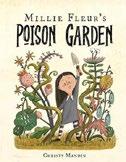
A girl plants a fantastical idea.
Millie Fleur La Fae and her mom move to Garden Glen, where all the houses are “flawless” and identical—except theirs. Located on the edge of town, it’s run-down and scruffy. Millie Fleur loves it, but something’s missing. Fortunately, Mom brought seeds from Millie Fleur’s old garden, which Millie Fleur plants
immediately. They grow quickly, wildly, and weirdly, bearing names like Fanged Fairy Moss and Sore Toothwort. Garden Glen’s Rosebud Club members are displeased; the club’s president dubs them “poisonous.” They’re not, but, as Mom explains, “Some people are scared of things that are different.” Millie Fleur loves her “wild, weird little garden” and invites her classmates to see it. Everyone visits the garden, including the teacher. All concur: Millie Fleur’s garden is “wonderfully weird.” Eventually, thanks to Garden Glen’s Youth Plant and Seed Swap, bits of her garden work their way into other town gardens; soon, they’re no longer identical, making Garden Glen “a truly one-of-a-kind place.” This charming, low-key tale celebrates those who unabashedly find unconventional things exciting and reassures readers that it’s OK to have off-the-beaten-track interests. The digital illustrations brim with fun; readers will be amused by the plants’ bizarre appearances and names. Millie Fleur (who’s reminiscent of Wednesday Addams) and her mom are pale-skinned; background characters are racially diverse.
No poison here; just a garden of delights about someone who improves things in a unique fashion. (note about snapdragons and spider plants, author’s note) (Picture book. 5-8)
Beyond the Game: LeBron James
Maraniss, Andrew | Illus. by DeAndra Hodge Viking (96 pp.) | $16.99 | March 5, 2024 9780593526156 | Series: Beyond the Game: Athletes Change the World
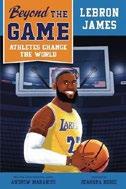
A portrait of the “best basketball player on the planet,” focusing particularly on his off-the-court I PROMISE initiative.
Maraniss covers LeBron James’ life from a young boy to a b-ball titan but positions his subject here as “just a kid from Akron who wanted to help other people.” So though he recaps LeBron’s
professional career (so far) in broad outline, he directs at least as much attention to his work with his hometown’s low-income families, his public protests in the wake of the killings of Trayvon Martin and other Black victims, and his defiant response to the Fox News commentator who told him to just “shut up and dribble”: “I AM MORE THAN AN ATHLETE.”
Maraniss also covers the I PROMISE school, which offers meals, bikes, college scholarships, and more to students and even housing and job training for their families. In line with the series theme, backmatter contains both career stats (up to the end of 2023) and challenges to readers to stand up, speak up, and look for ways to give struggling fellow students an assist. “In a world with so much injustice, how will you help others?” Even as a child, LeBron is a charismatic figure in Hodge’s monochrome illustrations.
Low on sports action; high on humanitarian values. (timeline, glossary) (Biography. 8-10)
Beyond the Game: Maya Moore
Maraniss, Andrew | Illus. by DeAndra Hodge Viking (96 pp.) | $16.99 | March 5, 2024 9780593526187 | Series: Beyond the Game: Athletes Change the World

A profile of a WNBA star who gave up her professional career to focus on a humanitarian cause.
Maya Moore was a bona fide star—a noisy kid with “awesome stats” even as a middle schooler, who led her high school team to a 125-3 record and went on to spectacular exploits in both the WNBA and the 2012 and 2016 Olympics. But Maraniss commends her particularly here for suddenly retiring in 2019 to campaign for the release of Jonathan Irons, a Black man who at age 18 was unjustly convicted by an all-white jury of burglary and
KIRKUS REVIEWS 106 MAY 15, 2024 CHILDREN'S
assault and sentenced to 50 years in prison. The two were later married. The author ends there but goes on to provide discussion questions and to urge readers to think and learn more about racial injustice. “Anyone can make a difference,” he closes. “And everyone should try.” Along the way, he points out the sexism that Moore observed; NBA games get far more exposure than WNBA games—a disparity that frustrated her (“The ball of momentum is deflating before my eyes”). In stiff but sincere monochrome illustrations, Hodge tracks Moore from a child to a sturdy, confident adult; aside from one image of a white basketball coach with a clownish face, figures in the illustrations are expressive and dark-skinned.
Message-driven but centered on a well-chosen example. (career stats, glossary, resource list) (Biography. 8-10)
The 66th Rebirth of Frankie Caridi
Marciano, Johnny | Illus. by Ashley Mackenzie | Penguin Workshop (240 pp.) $17.99 | July 9, 2024 | 9780593660942
Series: The 66th Rebirth of Frankie Caridi, 1
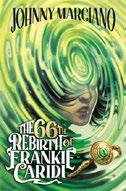
Real and otherworldly dramas collide. Frankie isn’t happy: Leaving her friends in New Jersey behind to start eighth grade at the Pythagorean Institute, a special boarding school that used to be a “weird 1970s mind expansion cult,” is hard enough. “Average” Frankie resents having to go there with little brother Lucie, whom everyone sees as “exceptional,” both because he has actual horns—a rare genetic condition makes his fast-growing bones dense; they even extend outside his body—and because he’s extremely smart and charismatic. Plus, the school bans cellphones. The Institute is surprising in many ways, not least because of the “differently bodied” students like Lucie, who are called deems, although there are other norms
A garden of delights about someone who improves things in a unique fashion.
MILLIE FLEUR’S POISON GARDEN
like Frankie. Between her Latin teacher (who’s a faun), her roommate (who’s a vampire), and the evil spirits haunting the grounds, this school is clearly extraordinary. What Frankie wasn’t expecting was to learn that she has powers that are inextricably linked to the Institute and those who run it. What that means—and whom Frankie should trust—remains to be seen. The third-person narration can feel like a rote play-by-play account, but the characters and plot are interesting and develop quickly, and the cliffhanger ending will leave readers hungry for more. The straightforward writing and the story’s brevity enhance accessibility. Frankie is cued white; there’s racial diversity among the supporting cast. A twisty story with broad reader appeal. (Paranormal. 10-14)
Unshakable Eleanor: How Our 32nd First Lady Used Her Voice To Fight for Human Rights
Markel, Michelle | Illus. by Alejandro Mesa Balzer + Bray/HarperCollins (40 pp.)
$19.99 | July 2, 2024 | 9780062398475
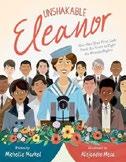
This picture-book biography focuses on Eleanor Roosevelt’s work for social justice. From volunteering with “poor immigrants” as a young woman to chairing the UN Human Rights Commission, Roosevelt works to overcome her shyness and stand up for people on the margins. Markel’s swift survey lays out a dizzyingly impressive list of accomplishments: supporting labor reform in the 1920s; advancing the
rights of women, poor people, and African Americans in the ’30s; fighting racism against Japanese Americans and Black people during World War II; and championing human rights worldwide in the postwar era. Roosevelt is consistently presented as a person who understands the right thing to do and then does it despite internal anxiety and external detractors. Largely missing, however, is the mental work Roosevelt needed to do to reach her convictions, aside from a brief mention of an adult awakening to white supremacy. Also missing is significant context. Readers must squint at the small type in the backmatter to learn that Japanese Americans were imprisoned in camps during the war despite Roosevelt’s advocacy for their rights. If the treatment is necessarily abbreviated, however, Roosevelt nevertheless emerges as a role model for allyship. Working in a clean, graphic-arts style, Mesa contributes depictions of Roosevelt at work that complement but do not significantly expand on the text. A serviceable introduction to an influential first lady. (timeline, bibliography, further info) (Picture-book biography. 7-9)
Dead Good Detectives
McLachlan, Jenny | Illus. by Chloe Dominique Harper/HarperCollins (368 pp.) | $19.99 July 9, 2024 | 9780063329829
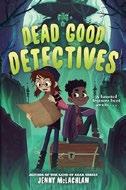
Young amateur cartographer Sid Jones accidentally releases a centuries-old pirate ghost from the cemetery in her English seaside town of Fathom.
MAY 15, 2024 107 KIRKUS REVIEWS CHILDREN'S
An important, if heavy-handed, lesson, paired with stirring visuals.
A VOICE LIKE YOURS
Sid can see and hear the boisterous pirate Capt. Ezekiel “Bones” Kittow and his impish macaw, Elizabeth—but no one else can, not even her best friend, a boy named Zennor Moyo. After an understandable period of disbelief and frustration, Sid teams up with Bones to solve the mystery of his missing treasure so that he and his crew can escape their ghostly limbo and pass on. Though Sid draws Zen into the historical puzzle of Bones’ pirate booty, she’s been growing self-conscious about hanging out with her proudly oddball friend and drawing more attention from their classmates; she’s already been called weird, after all, and having a ghost as a constant companion, even a secret one, doesn’t help. The overall tone is one of whimsy more than menace. McLachlan infuses both the supernatural adventure and Sid’s emotional evolution with a charming earnestness, especially as Sid grows bolder and more comfortable with her magical talents. Stylized black-and-white illustrations depict Sid as a white waif with large, round glasses and Zen as an energetic Black boy with short twists; Bones receives a loving visual treatment that includes voluminous hair, a tricorn hat, and a beard entangled with seaweed.
A series opener—big on heart and short on horror—that offers fun ghostly escapades. (map) (Paranormal. 8-12)
 Kirkus Star
Kirkus Star
Trucky Roads
Miller, Lulu | Illus. by Hui Skipp | Paula Wiseman/Simon & Schuster (40 pp.)
$18.99 | June 11, 2024 | 9781665919173
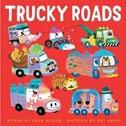
Meet dozens of marvelous trucks.
“Some people look at the road and just see TRUCKS.” But Trucky Roads, a bearded, brown-skinned, pink-hatted vehicle enthusiast, knows that “there are all KINDS of trucks.” Trucky’s every bit as enthusiastic about the plethora of vehicles gracing these pages as readers will be. Miller puts a clever spin on a well-tread topic. Everyone’s heard of fire trucks…but what about an earth truck (a green truck filled with dirt), a water truck (a blue vehicle with a long hose curling off its side), and a wind truck (a bus with a windmill on top)? And we all know about tow trucks…but what about toe trucks? Seated in a smiling tow truck, Trucky tows a foot-shaped vehicle containing an array of footwear. The whimsical, lightly rhyming text builds to a fever pitch as Miller lists truck after truck: “Monster Trucks AND Tiger Trucks / Pickup Trucks AND Put-Down Trucks / Diggers AND Mixers AND Rollers AND Cranes / Piggers AND Fixers AND / Bowlers AND Sprains.” It’s sure to provoke giggles and have kids chiming in with their own variations. Skipp’s blocky digital art has a collagelike feel, and the tie-dyed palette, paired with the hilariously surreal array of vehicles and Trucky’s own philosophical attitude (“Truck is in the eye of the beholder,” he tells an
onlooker), gives the book a playfully psychedelic vibe.
A gloriously bright, inventive world on wheels. (Picture book. 2-6)
Wings of an Eagle: The Gold Medal Dreams of Billy Mills
Mills, Billy & Donna Janell Bowman Illus. by S.D. Nelson | Little, Brown (48 pp.) $19.99 | July 2, 2024 | 9780316373487

Themes of overcoming adversity and of giving back beat steadily through this profile of the first American to win Olympic gold in the 10,000-meter race. Mills (Oglala Lakota) begins at the starting line in the 1964 Olympics, then rewinds to describe how pursuing a dream at the behest of his father carried him past challenges ranging from racial prejudice to sudden attacks of physical weakness—later diagnosed as hypoglycemia and borderline diabetes—to athletic excellence. Along the way to the finish line, he recalls ceremonies, particularly the Traditional Giveaway, in which powwow attendees give gifts to the community. He also remembers a college coach’s belittling comment, his exclusion from a group photo of all-American athletes for being “dark-skinned,” and the refusal of a corporate sponsor to give him a pair of running shoes at the ’64 games. Returning in triumph to the Pine Ridge Reservation with a resolution to “share my thanks and blessings, / and to spread the wings of others,” he went on, as part of his own giveaway, to found Running Strong for American Indian Youth, a nonprofit whose work is described in a closing photo spread. Along with stylized images of symbolic birds and wings, Nelson (Hunkpapa Lakota) surrounds the downcast but determined runner with groups of competitors or racially diverse community members and supporters. A more detailed
KIRKUS REVIEWS 108 MAY 15, 2024 CHILDREN'S
For more by Jenny McLachlan, visit Kirkus online.
biographical summary in the backmatter joins substantial personal statements from both the lead author and the illustrator.
A strong, stirring tale of perseverance. (timeline, source list) (Picture-book biography. 7-9)
A Voice Like Yours
Murphy, Frank & April Groman | Illus. by
Kayla Harren
| Sleeping Bear Press (32 pp.) $18.99 | March 15, 2024 | 9781534112971

Speak up, out, and often; be heard!
This book clarifies that your voice isn’t just the sound issuing from your mouth when you’re speaking aloud. Using your voice means expressing your ideas, thoughts, opinions, and personality. Some use their voices even if they can’t verbalize and must rely on assistive devices, while others express themselves through sign language. Readers will discover that they can use their voices by making art, voting, cheering for a favorite team, working with others, and more. “Some voices are hesitant or shy—or go unheard,” Murphy and Groman tell us. “Those voices might need yours / to speak up, get loud or lead the way.” They add, “Your voice can be your superpower.” It’s an empowering message, and one that bears repeating, though the straightforward, somewhat didactic text likely won’t hold children’s attention for multiple reads. Still, they’ll appreciate the lively, realistic illustrations, which depict characters who are diverse in terms of race, body size, age, and physical ability; many youngsters are depicted using wheelchairs. Rainbow-hued swirls fill the
pages as a group of people take part in a protest—an especially effective way of raising one’s voice. An important, if heavy-handed, lesson, paired with stirring visuals. (authors’ and illustrator’s note) (Picture book. 5-8)
Abuela’s Library
Norman, Lissette | Illus. by Jayri Gómez Harper/HarperCollins (32 pp.) | $19.99
June 11, 2024 | 9780063067530

When a beloved neighborhood tree is cut down, a child decides to create a little library in its place. Alfonso and Abuela, a former school librarian, love to curl up beneath an old oak tree and read. “She says books hold the world together and you can never have too many,” Alfonso tells us. But the tree is sick and in danger of knocking over a power line. It must come down. After it’s been cut down, Alfonso realizes that the remaining stump can be turned into a mini library; they’ll call it Abuela’s Library. Alfonso’s friends are skeptical, but with help from Papi, Mami, Abuelo, Abuela, and others, Alfonso’s dream becomes a reality. The resulting structure has windows, a painted door, and even fairy lights. While it’s smaller than a public library, it’s larger than most little free libraries; children are able to step inside. People gather and ask Alfonso for recommendations, and the little one happily obliges. “This is how my love for matching people with the perfect book begins,” Alfonso explains. “It’s how I know I will be a librarian one day too.” Norman’s upbeat tale shows how a sad event can be turned into a community project
A gloriously bright, inventive world on wheels.
and a source of happiness. It’s a love letter to trees, to reading, and to the librarians who inspire others to learn and grow. Gómez’s round-eyed, round-headed characters are endearing. Alfonso’s family is cued Latine; the community is diverse. A tender tribute to libraries and librarians. (Picture book. 4-8)
The Day Bell Found Her Sound
O’Donnell, Lizzy | Viking (40 pp.)
$18.99 | July 2, 2024 | 9780593621776

Make your own kind of music. Bell, a solitary, music-loving mouse, has no one to make music with. She sings to the “music” she hears at home—her teapot, rainfall, snow falling. Bell hears music everywhere. Her favorite song is the “bustling melody of life” beneath her window. Determined to join in, she grabs her “loudest noisemakers” and heads downstairs. Bell toots her trumpet, but no one hears; it doesn’t feel right anyway. Bell notices a nearby band and joins in on her keyboard. But when one of the band members points out that her instrument is in fact an accordion, she abandons it. At the park, Bell pounds on her drum, but she’s so loud that everyone looks up in surprise. As she wanders off, the music resumes. Bell closes her eyes and sings; when she opens them again, she’s surrounded by townsfolk playing along to her tune. Bell has “found a place in her town just by trusting her own voice.” This quiet, dreamily philosophical tale may waft over some kids’ heads. Still, many will appreciate its takeaway about finding your own voice and learning to accept yourself. The cozy digital illustrations are warmly colored, mostly in shades of orange; background characters are a mix of animals and humans who vary in skin tone.
A melodic tale with a clear message: Let your own voice ring out like a bell and let everyone hear. (Picture book. 5-8)
MAY 15, 2024 109 KIRKUS REVIEWS CHILDREN'S
TRUCKY ROADS
Pizza Face: A Graphic Novel
Ogle, Rex | Illus. by Dave Valeza | Colors by Ash Szymanik | Graphix/Scholastic (224 pp.)
$24.99 | $12.99 paper | July 2, 2024 9781338575019 | 9781338574999 paper Series: Four Eyes, 2
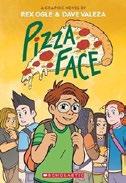
Rex and his friends are back for the start of seventh grade in this sequel to Four Eyes (2023). After learning to navigate a new school environment, rebuild his confidence, and accept himself for who he is, Rex is still not ready for what seventh grade has to throw at him. When he wakes up on the first day of school with what looks like an angry volcano in the middle of his forehead, he realizes that the new year may be even worse than he thought. Rex becomes hyperaware of his signs of puberty (and lack thereof). Although new zits seem to pop up every day, and his body odor is suddenly very noticeable, he still has a high-pitched voice and has yet to hit a growth spurt (and the bullies at school won’t let him forget it). Rex struggles to manage his mood swings, lashing out at his mother, teacher, and friends. Rex fails to realize that he’s not the only one struggling with puberty, however. As seventh grade goes on, Rex learns to come to terms with who he is and who he’s becoming alongside his friends. Readers will be able to find themselves in the characters’ struggles. The artwork is colorful and creative, showing a skillful use of the graphic novel format. The supporting characters are well developed and racially diverse, including Rex’s Mexican immigrant abuela. A relatable, engaging sequel about surviving puberty and middle school. (Graphic memoir. 9-13)

A relatable, engaging sequel about surviving puberty and middle school.
PIZZA FACE
Brandon and the Baby
Pinkney, Brian | Greenwillow Books (40 pp.)
$19.99 | June 11, 2024 | 9780063159846
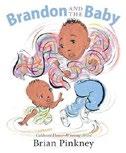
A young Black boy negotiates his new status as big sibling after a baby brother arrives on the scene.
From the get-go, listeners learn that “Brandon loved his blanket,” but “he wasn’t so sure about the baby.” Pinkney sets up a pattern whereby the protagonist starts to regress during times of transition: He doesn’t want to sit in his big-boy chair at dinnertime, take a bath in the tub, or sleep in his own bed. When his parents, busy with the baby, don’t respond to his frustrated declarations, he begins to throw a temper tantrum. Each time, “Brandon’s blanket had a better idea.” With three alliterative, onomatopoetic sounds, the plaid wonder transforms into a creature (toucan, sea lion, owl) that distracts and delights Brandon. Soon he and the blanket are a team, entertaining the happy infant. The acrylic, watercolor, and India ink compositions—swirling with the artist’s signature, energetic lines— eventually depict the foursome as a unit. Ultimately, when the baby cries, it’s Brandon who has the situation covered. Children with younger siblings will identify with how hard it is to go from being the center of attention to feeling overlooked. The varied facial expressions throughout the narrative offer opportunities for discussing those emotions.
A welcome refresh of a familiar family dynamic, with the best possible outcome. (Picture book. 3-6)
Invisible Isabel
Pla, Sally J. | Illus. by Tania de Regil Quill Tree Books/HarperCollins (208 pp.)
$18.99 | July 9, 2024 | 9780063268852
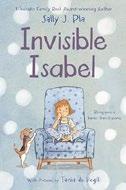
A quiet, anxious young girl finds her voice. With five rambunctious siblings at home, a bully at school, and a formidable teacher who puts an outsize emphasis on “Extremely Important Testing,” Isabel Beane is more worried than ever; fading into the background feels easy—and safer. The worry-moths she imagines inside her are making her stomach hurt all the time, although Mama tells her it’s all in her head. As Isabel deals with the “Too-Muchness” of the world, she tries to figure out how to get Mama to understand her and how to win back her classmates, whom new girl Monica has turned against her. When the stomach pain feels different one day, it culminates in Isabel finally being heard and learning more about herself. Told in compelling free verse and peppered with black-and-white illustrations, this heartfelt and accessible tale showcases neurodivergence, specifically anxiety and autism. Although the focus is mostly on lovable Isabel, the narrative sometimes shifts to Monica, providing insight into her cruel behavior. These moments add tension to the story, but the tale truly shines when Isabel is in the spotlight. Readers may not feel as forgiving as Isabel toward the ineffectual adults in her life who initially fail to listen to her, but the clarity and paths to solutions offer much-needed optimism. Isabel and Monica are cued white. Final art not seen.
KIRKUS REVIEWS 110 MAY 15, 2024 CHILDREN'S
For more by Rex Ogle, visit Kirkus online.
A compassionate insider’s perspective of neurodivergence. (information on anxiety and autism, resources) (Verse fiction. 7-11)
Shark
in the Park Potter, Ellen | Illus. by Sara Cristofori McElderry (112 pp.) | $17.99 | July 9, 2024 9781665926782 | Series: Squirlish, 2
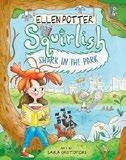
The continuing adventures of Cordelia, a young girl raised by a squirrel after she was abandoned in Central Park as a baby.
Cordelia considers herself “squirlish”: “a little bit squirrel and a little bit girl.” Though she speaks Chittering (the language of squirrels), moves nimbly through the trees, and lives in a snug treehouse in an old elm, she wears clothes supplied by a kindly groundskeeper and has human friends. Sometimes her stomach gets “blurggy” at the thought that she doesn’t really belong. Summoned to Belvedere Castle by Queen Isabel, Cordelia initially worries that the squirrel leader is planning to banish her. But Queen Isabel instead instructs Cordelia to accompany Prince Oliver on his quest for the long-lost Royal Scepter. This won’t be easy, since the young squirrel prince cares little for the scepter; all he can think about is sharks. Prince Oliver peppers Cordelia with shark questions, constantly drops his crown, and generally causes havoc. This fast-paced tale features delightful, inventive language, complemented by Cristofori’s energetic cartoons. As in the previous series installment, Central Park feels like a major character, along with New York City itself. A noteworthy scene at the Museum of Natural History sees Cordelia and Oliver learning about Seneca Village, a 19th-century African American community that was displaced when the park was built. The characters are quirky, and
readers will cheer for Cordelia—and laugh out loud often. Cordelia presents white.
Fantastical, funny, and charming. (map of Central Park) (Fantasy. 7-10)
Sinclair, the Velociraptor Who Thought He Was a Chicken
July 16, 2024 | 9781250781994

In this prehistoric tale, a misfit hatchling from an abandoned egg ends up saving his family.
“Edna the very first chicken was hatching her very first eggs.” Her seven eggs hatch, and Ankylosaurus, Parasaurolophus, and Triceratops gather to admire her chicks. The dinosaurs point out another, speckled egg. It isn’t Edna’s, but she decides to take care of it anyway. After all, “one more baby won’t make any difference.” Famous last words. Unlike Edna’s other babies, Sinclair is a feathered dinosaur with “long, sharp teeth and claws instead of wings.” The story humorously riffs on the fact that birds and dinosaurs are related in evolutionary terms, while the art makes it abundantly clear that Sinclair is no chicken. Still, though he has trouble pecking, fluttering, and clucking like the others, his family lovingly accepts him. Bernstein’s illustrations have a loose, comical style that will mitigate readers’ fears when a big, mean, fast, hungry Gorgosaurus makes off with two of Sinclair’s sisters. All the chickens pursue the beast, but speedy velociraptor Sinclair catches up and rescues his sisters, who declare him the “BEST. CHICKEN. EVER.”
An author’s note explains the science behind the story: Many birds do imprint on the first living thing they see, while paleontologist Robert Bakker has found evidence
that velociraptors really did spend time in trees.
Silly, with a dash of science. (Picture book. 3-6)
The Twisted Tower of Endless Torment
Renzetti, Rob | Penguin Workshop (256 pp.) | $17.99 | July 23, 2024
9780593519554 | Series: The Horrible Bag, 2

Zenith Maelstrom returns to the terrifying land of GrahBhag on a mission to find his sister and return her to her rightful age. This sequel to The Horrible Bag of Terrible Things (2023) finds the sibling duo once again inside the dangerous and disturbing world of GrahBhag. Though Zenith returns only to find Apogee, who was “supernaturally shrunken and regressed” from 14 to 4, he quickly realizes that he’s an outlaw, wanted for the pair’s earlier killing of the Great Wurm. He’s put on trial and sentenced to stay indefinitely in Eternity Tower. The bizarre, topsy-turvy tower tricks and torments its prisoners, robbing Zenith of all hope of escape. Renzetti’s imaginative world and its creatures are delightfully dark and twisted. Zenith’s bizarre yet helpful relationships with some of the oddball inmates of the prison make for the most compelling parts of the story. Kreeble, the gargoyle who helped the siblings in the first book, plays a disappointingly more limited role this time. Much of the story unfolds in the tower (and features some particularly horrifying events); readers will likely miss the varied and wild settings of GrahBhag itself. This volume ends with a cliffhanger, clearly setting up for the next installment: Though much is left unanswered, there’s plenty here to leave readers clamoring for the third book. Human characters are minimally described and racially ambiguous. A well-paced follow-up full of deliciously nightmarish creatures and scenes. (Horror. 8-12)
Rees, Douglas | Illus. by Galia Bernstein Henry Holt (40 pp.) | $19.99
MAY 15, 2024 111 KIRKUS REVIEWS CHILDREN'S
Taylor Swift
Sánchez Vegara, Maria Isabel | Illus. by Borghild Fallberg | Frances Lincoln (32 pp.)
$15.99 | June 11, 2024 | 9780711295094
Series: Little People, BIG DREAMS

The publisher’s long-running biographical series takes on megastar Taylor Swift. Sánchez Vegara breathlessly starts Swift out as a girl at home who “believed in unicorns and fairy tales” as well as “the power of songs to tell stories and change the world.” The author then traces her subject’s enchanted career from first demo recordings at age 11 to the 2022 announcement of the Eras tour. Though her early devotion to country music made her a loner at school, she was able to shake it off, winning four Grammys by the time she turned 20. Readers may find the text frustratingly vague or confusing; Sánchez Vegara notes that Swift recorded her first album for a record label “after being spotted” at a gig (by whom?). Likewise, in the backmatter, the author states that after “her masters were sold without her permission, Taylor decided to take back ownership of her art”— some parental explanation may be necessary here, too. Sánchez Vegara covers familiar ground; confirmed Swifties will discover little new here, and even young children who don’t recognize Swift will never, ever read this book more than once. Figures in Fallberg’s star-bejeweled, often lilac-tinted scenes are racially diverse; one young listener in the final campfire singalong uses a wheelchair, and another wears an eye patch. A thinner-than-thin profile, wrapped in lavender haze and sweeter than fiction. (Picture-book biography. 6-8)

A thinner-than-thin profile, wrapped in lavender haze and sweeter than fiction.
TAYLOR SWIFT
I Got the Spooky Spirit
Schofield-Morrison, Connie | Illus. by Frank Morrison | Bloomsbury (32 pp.) | $18.99
July 23, 2024 | 9781547606993
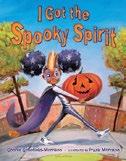
Following I Got the Rhythm (2014), I Got the Christmas Spirit (2018), and I Got the School Spirit (2020), this husband-and-wife team keep the soulful vibes going with an ode to Halloween.
“I got the spooky spirit,” declares the young Black protagonist, hair in Afro puffs. The child whips up “a bubbling batch of brew,” decorates the house, dons a frightening costume (“complete with “BOO-licious face, FANG-tastic teeth, and witchy purple hair”), goes trick-ortreating, and bobs for apples and cuts loose at a Halloween party before going home…to eagerly anticipate the return of spooky season. This rollicking picture book features rhythmic, alliterative text that speaks to the senses. Setting the mood from the start, “a cool breeze blows crunchy leaves to the ground,” while “globs of stringy guts fall to the ground” as the child carves a pumpkin. Morrison’s signature oil paintings serve up all the exuberance, movement, and color that his fans have come to expect from his work. Making wonderful use of perspective, his detailed scenes each tell a story as younger siblings dart by in the background and trick-or-treaters stride by, decked out in their finest. Characters are racially diverse. Festive, spine-tingling fun. (Picture book. 3-8)
I’m From Here Too
Sheth, Kashmira | Peachtree (256 pp.) $17.99 | July 2, 2024 | 9781682636060
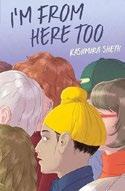
A story of faith and courage. Wisconsin eighth grader Anoop is bullied because of his Sikh religion; his classmates call him unspeakable names. Meanwhile, the gurudwara where the family worships is patrolled by the police; another Sikh temple in Wisconsin was attacked several years ago. Thirteen-year-old Anoop is part of a loving family, surrounded by siblings and friends, although his parents are worried about the health of Baba, his grandfather back in India. A visit to see Baba over winter break gives Anoop a feeling of “not belonging in either place / … / dangling between / India / and / America.” But as he begins to look deeply into his faith, he finds strength there and is able to assert that, despite what some people say, he is “anchored by invisible roots / that will keep me from toppling / … / No matter what happens. / No matter how they treat me.” The straightforward verse contains some bursts of sparkle but overall reads more like prose, and although a lot happens, the plot feels static. The novel contains a great deal of information about the Sikh religion. One of the most moving parts of the book is Sheth’s author’s note, in which she explains that she was raised Hindu and was sincerely moved by learning about the commitment of Sikhism’s founder, Guru Nanak Dev Ji, to equality as well as
KIRKUS REVIEWS 112 MAY 15, 2024 CHILDREN'S
For more from the Little People, BIG DREAMS series, visit Kirkus online.
the Sikh community’s reaction to the 2012 shooting at the Oak Creek, Wisconsin, gurudwara.
An informative coming-of-age journey. (Verse fiction. 8-12)
Raashi’s Rakhis:
A New Celebration of Raksha Bandhan
Sheth, Sheetal | Illus. by Lucia Soto Random House (40 pp.) | $19.99 July 9, 2024 | 9780593707265
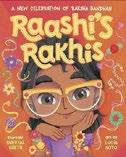
A South Asian girl named Raashi and her little brother, Tejas, eagerly await the Hindu festival of Raksha Bandhan.
On this day, sisters tie bracelets called rakhis to their brothers’ and male cousins’ wrists. At breakfast, Raashi wonders why only girls tie rakhis on boys. Her mother tells her that traditionally “sisters tied rakhis on their brothers as a symbol to protect them as they went into the world. Back then, they didn’t think girls should be doing as much as boys.” Raashi doesn’t think this is fair, since she has plenty of aspirations herself, and she tells Tejas, “You should look out for me, too!” Later, at the festival, when Tejas gets stuck in a tree, Raashi comes to his rescue. A grateful Tejas wants to tie a rakhi to Raashi’s wrist, to protect her as she protected him. They decide to start a new tradition in which boys and girls can give their siblings and cousins rakhis. Though the premise—putting a gender-inclusive spin on a beloved custom—will appeal to many, the writing is often stiff and may leave readers with the misleading impression that rakhis are meant to protect boys as they venture out into the world. In fact, the bracelets traditionally symbolize boys’ willingness to safeguard their female relatives. Still, the vivid illustrations fairly explode with color and detail, creating a fun backdrop; characters are depicted with a variety of brown skin tones.
A stilted attempt to put a twist on a time-honored tradition, elevated by charming visuals. (Picture book. 4-8)
Reliable, plainspoken information on a crucial ecosystem.
CORAL REEFS
Mooncakes Mean Family
Shum, Benson | Penguin Workshop (32 pp.) $5.99 paper | July 16, 2024 | 9780593658833
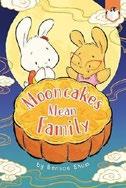
A family of rabbits celebrates the Mid-Autumn Festival.
Sisters Jade and Crystal spend the morning with Mom making mooncakes, which the family then brings to Grandma and Grandpa’s house. There, Jade and Crystal offer their grandparents tea, mooncakes, and fruit baskets, eat a big dinner of lotus root, chestnuts, and mushrooms, and enjoy the gardens and full moon— while eating their favorite mooncakes. Along the way, Shum smoothly incorporates information about this Chinese holiday. When Crystal asks what mooncakes are made from, Mom responds, “Lotus seed paste…with a yummy salted egg yolk in the center to represent the moon.” She explains that the Mid-Autumn Festival is a celebration of the harvest and that the moon that rises at this time represents family. Readers will learn about traditional activities and games, such as the Chinese yo-yo. As the day comes to an end, Jade gazes up at the night sky. Though Auntie and Uncle Liu weren’t able to fly in this year to celebrate, Jade is happy, “knowing her family far away is looking at the same moon.” Large, simple cartoon illustrations of rabbits (each of whom is a different color) and concise text (just a few sentences per page) make for a cozy introduction to the Mid-Autumn Festival. Shum gently conveys the warmth and joy of this celebration; he wraps up with a retelling of the legend of Change’e, the moon goddess.
An adorable and informative introduction to a beloved Chinese holiday. (Picture book. 3-7)
Coral Reefs
Sill, Cathryn | Illus. by John Sill Peachtree (48 pp.) | $18.99 | July 23, 2024 9781682636053 | Series: About Habitats
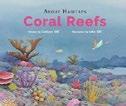
A nuts-and-bolts introduction to an undersea habitat. The latest book in this long-running series explores coral reefs, which make up less than 1% of the ocean floor but provide habitats for more than 25% of marine life. In unadorned prose, Cathryn Sill lays out the basics about coral reefs—how they grow and survive, the varieties of corals and types of reefs, the marine creatures that interact with them, and the threats they face. As with previous books in this series, simple sentences appear on each verso, along with a caption for the full-page watercolor illustration on the recto by John Sill, Cathryn’s husband. One of the more interesting spreads—“Corals also get food by hunting at night”—includes a lovely split screen–style illustration, depicting sun coral by day and then by night, its tentacles extended to capture zooplankton. Close-ups of corals and a diagram of the life cycle of Staghorn coral help round out the work. The book concludes with a rather quiet “Coral reefs are important places that need to be protected,” which misses the urgency found in the backmatter, where readers will need to go to find out why.
Reliable, plainspoken information on a crucial ecosystem. (afterword, glossary, further reading, websites, map of major coral reefs of the world) (Informational picture book. 3-7)
MAY 15, 2024 113 KIRKUS REVIEWS CHILDREN'S
Even Better Than Sprinkles: A Story About Best Friends
Skeers, Linda | Illus. by Heather Fox
Random House Studio (32 pp.) | $18.99 June 25, 2024 | 9780593705513
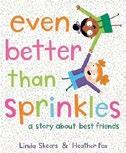
Two friends mend a rift. Skeers lists the attributes of a good friend as a blissful montage depicts two children taking part in a variety of activities. A friend will agree to wear your unicorn costume with you—even if that means being the back half. A friend will let you take the coveted role of knight when you play make-believe (“even though you were the knight the last time. And the time before that”). And a friend listens attentively when you sing loudly and off-key. As the story unfolds, we get a portrait of a loving yet slightly one-sided friendship. But when one child “accidentally-on-purpose” blows out the candles on the other, put-upon friend’s birthday cake, conflict erupts. How to make things right? A little reflection on the part of the candle-blower and “a whole bottle of glue and three kinds of glitter.” The chastened youngster makes an “I’m sorry” card, and the two hug it out. While sprinkles are mentioned in the title, they don’t figure that prominently in the story. Bright, candy-colored backgrounds set a playful mood, though the roundheaded, round-eyed characters have a somewhat generic look. Although many kids will relate to the subject matter (who among us hasn’t clashed with a friend?), the story borders on being didactic; most kids won’t be asking for rereads.
One of the children presents Black; the other appears to be white. A few sprinkles of fun but unlikely to truly satisfy. (Picture book. 4-8)
The Pinchers and the Diamond Heist
Sparring, Anders | Illus. by Per Gustavsson
Trans. by Julia Marshall | Gecko Press (112 pp.) | $18.99 | April 2, 2024
9781776575664 | Series: The Pinchers
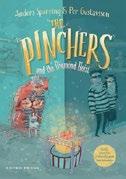
This first of a new series, translated from Swedish, follows the trials and tribulations of a black sheep in a family of thieves. Meet the Pinchers: parents Rob and Nic (get it?), little Criminellen (Ellen for short), Grandma Stola, and dog Sherlock. Ellen and Sherlock’s thievery is food motivated; Nic and Stola go for what glitters; Rob targets safes. The family oddity is young Theo. Not only does he eschew theft, but he secretly aspires to be a police officer like Paul Eessman, the kindly, well-intentioned, but gullible cop who lives next door, the family’s foil. The Pincher clan keeps in practice by swiping Theo’s socks each day and by diligently lying (with fingers crossed behind their backs). To his parents’ dismay, Theo can’t help but tell the truth. The Pinchers’ thievery quickly escalates from lifting Paul’s morning newspaper to breaking out of jail, drugging guards, and attempting to steal a famed diamond—to Theo’s dismay. Luckily, the boy finds a way to put things right… and earn his family’s admiration. Droll line drawings dominated by shades of blue and gray enhance the farcical fun; the Pinchers are
Sure to resonate with anyone who’s felt like the odd one out.
THE PINCHERS AND THE DIAMOND HEIST
conveniently decked out in horizontal stripes, and everyone, even the dog (who resembles a pit bull), wears eye masks. Most characters are lightskinned. There are a few easter eggs for adult readers, who will recognize that Ellen’s favorite bedtime story is Crime and Punishment . Sure to resonate with anyone who’s felt like the odd one out.
(Early chapter book. 6-10)
Once Upon a Crime: Delicious Mysteries and Deadly Murders From the Detective Society
Stevens, Robin | Simon & Schuster (304 pp.)
$17.99 | July 9, 2024 | 9781665919494
Series: A Murder Most Unladylike Mystery

Nothing fishy gets past the keen eyes of the Wells & Wong Detective Society and their rivals, the Junior Pinkertons. Stevens’ mysteries—solved by English boarding school students in the 1930s—have many fans. Here, she presents six new short stories starring Daisy Wells, Hazel Wong, Alexander Arcady, and George Mukherjee that fit in and around the novels. Hazel and Daisy, who attend Deepdean School for Girls, attend the wedding of Daisy’s uncle Felix in London, go to the English seaside (which Hong Kong–born Hazel finds cold and unappealing), and travel from Hong Kong back to England on an ocean liner. Along the way, they foil one murder and solve two others. At Weston Boys’ School, Alexander and George figure out how to thwart bullies and also save a puppy in the process. The final story, told by Hazel’s 9-year-old sister, May, is set in September 1939, as war comes to Great Britain, and it hints at even more sequels. Hazel and George serve as reminders to contemporary readers that, even in this largely white society, there were people of color, and they were navigating feelings of isolation
KIRKUS REVIEWS 114 MAY 15, 2024 CHILDREN'S
that resonate today. George astutely points out that many objects in the British Museum have indeed been stolen, contrary to Daisy’s perception that “it’s finders keepers.…Anyway, we look after them properly.”
A welcome addition to an addictive series. (glossary, hieroglyphic alphabet, Morse code alphabet, author’s note, guide to the Detective Society’s cases) (Mystery. 10-14)
Queer History A to Z: 100 Years of LGBTQ+ Activism
Stevenson, Robin | Illus. by Vivian Rosas | Kids Can (64 pp.)
$21.99 | May 7, 2024 | 9781525308352

The vibrant history of LGBTQ+ activism gets the abecedary treatment.
Each letter in the alphabet corresponds to a person, place, event, or concept that relates to the struggles and achievements of the LGBTQ+ community. Subjects range from the well known (the Stonewall Inn, Pride flags) to those that are more obscure but still important (activist Ernestine Eckstein, the “We Demand” demonstration held in Ottawa in 1987). Each entry is thoroughly researched and in tune with current conversations, such as cross-generational reactions to the word queer. Though the book is informative, it’s an overwhelming read at times, with spreads containing large blocks of wordy text alongside energetic illustrations. Many prominent figures who could have benefited from a more in-depth treatment are relegated to the abundant backmatter, perhaps due to the constraints of the alphabet format. In the introduction, Stevenson states that readers will learn about “queer history in North America,” yet the book includes primarily American and Canadian examples (two Mexican activists are mentioned in the backmatter). In addition to brief profiles of
prominent figures in the LGBTQ+ movement, the backmatter includes a timeline, a glossary, and a list of child-friendly resources. People depicted are diverse. An ambitious look at an important movement that falls short in execution. (select sources, index) (Nonfiction. 8-12)
Keyana Loves School
Tarpley, Natasha Anastasia | Illus. by Charnelle Pinkney Barlow | Little, Brown (32 pp.)
$18.99 | July 9, 2024 | 9780316068307
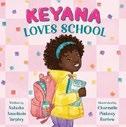
A second grade class collaborates to show their love for their school.
Fans of Keyana Loves Her Family (2022) and Keyana Loves Her Friend (2023) know that Keyana has no shortage of wonderful ideas. This time, she proposes a classroom quilt project to celebrate her school’s 100th anniversary; her grandmother Anna has taught her that quilts can preserve memories. For her quilt square, Keyana draws inspiration from the dedicated staff at her school. When Keyana is chosen to present the class quilt on stage at an all-school celebration, she must work to overcome her stage fright. While Keyana’s classmates are a diverse group, the staff—including her classroom teacher, a cafeteria worker, the school librarian, and the art teacher—are, like Keyana herself, Black, making this tale a heartfelt ode to African American educators. Tarpley successfully weaves in elements of Black American traditions and culture, including jazz and poetry, to create a layered and compelling narrative, brimming with the love of Keyana’s school community and family. Pinkney Barlow’s signature digital illustrations, finished with a handmade watercolor texture overlay, exude warmth and tenderness—all young people should have such supportive teachers and classmates.
A joyous depiction of an educational experience that all children deserve. (Picture book. 5-8)
Greenwild: The City Beyond the Sea
Thomson, Pari | Illus. by Elisa Paganelli Farrar, Straus and Giroux (400 pp.)
$17.99 | June 4, 2024
9780374391393 | Series: Greenwild, 2
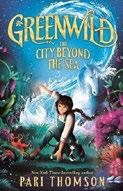
Daisy Thistledown and her Greenwild cohorts seek help from hostile water magic folk to fight the rising tide of environment-destroying Grim Reapers. The grown-ups may have their plans to relieve the beleaguered enclave of Botanists (including Daisy’s mother) who are lost in the Amazon rainforest, but it’s up to Daisy and her young fellow fledgling Botanists of the Five O’Clock Club to save their bacon once again. Daisy and friends—animal whisperer Indigo, the brainiac dubbed the Prof, and doughty Acorn—are joined along the way by Max, a fugitive with a hidden past and a distinctive facial birthmark. They face multiple ambushes mounted by the murderous Reapers who leave bleached coral and plants in their wake. Along with riding magnificent water horses and rescuing a menagerie of rare creatures from an animal market, the young folk learn both how to trust one another and how to control their individual magical gifts in time to scupper a usurper’s evil scheme and enlist needed aid for the climactic conflict to come. Paganelli’s flourishes of spot art and monochrome views of magical beasts and the racially diverse human cast add elegant accents to this bustling middle episode. More experienced genre readers may not find many surprises in the plot but will enjoy the adventure nevertheless. Daisy’s mother is Persian, and her late father was English.
Awash in magical exploits and creatures. (Fantasy. 9-13)
MAY 15, 2024 115 KIRKUS REVIEWS CHILDREN'S
Magical and message-driven but slightly off the mark.
A DIFFERENT KIND OF FAIRY
Kirkus Star
Majestica
Tolcser, Sarah | Illus. by Antonio Caparo | Putnam (320 pp.) | $18.99 July 2, 2024 | 9780593696545
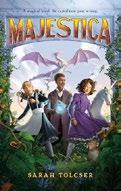
Young teens face fearful challenges as they try to right the wrongs of others.
Thirteen-yearold orphan Hattie Swift lives and works in the magical paradise of Hotel Majestica, a resort located in a sanctuary for fantastical creatures in the land of Ruava. When Evelyn Ridgewell, the disagreeable niece of the hotel’s owner, arrives for a wilderness tour—a treat for her 13th birthday—Hattie ends up serving as her personal attendant. The girls encounter Jacob Threadborne, a boy from the land of Marchwild who’s traveling as the apprentice to the country’s interior secretary, who’s on a mission to reclaim the Gem of the Evening, a powerful ancient relic that Marchwilders hold the Ridgewell family responsible for stealing. What was meant to be a luxurious train tour through the park turns into a treacherous survival mission when the train is sabotaged, and passengers are left scattered in the jungle. Dark secrets are revealed as the three young people work together to survive and save Majestica’s wondrous inhabitants. The rich worldbuilding will draw readers into an immersive adventure among the animal preserve’s biomes. Tolcser combines themes of conservation and the repatriation of cultural artifacts with unexpected friendships to create a fast-paced fantasy. Caparo’s exquisite art adds to
the magic. Hattie and Evelyn are cued white; Jacob reads Black, and there’s additional racial diversity among secondary characters. Charming characters abound in this tale that’s thoughtfully grounded in ethics. (map, bestiary, character list) (Fantasy. 9-13)
A Different Kind of Fairy
Torrubiano,
Susana | Illus. by
Giulia Orecchia
| NubeOcho (40 pp.) | $17.99 | June 18, 2024 9788419607904 | Series: Égalité
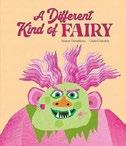
A fairy stops granting wishes that don’t align with her traditional values. Light-skinned and pink-clad Rose has been granting wishes as “the pink fairy” for thousands of years—almost as long as she’s been alive. But when children start asking Rose for things that don’t conform to gender norms, Rose is perplexed. She won’t let “a pretty little girl” be a rugby player or “a handsome little boy” be a dancer. Instead, she just flies off with a “Goodness me!” leaving the children confused and upset. Their wishes go unfulfilled. Despite intervention from her fairy friends, Rose refuses to grant wishes, and her behavior becomes even odder as she begins to menacingly chase the kids. The children start to fear the pink fairy instead of looking forward to her visits. Surprising herself, Rose realizes that her true passion is scaring children and that she wants to be an ogre instead. She begs the fairy queen to make it so. This unique fairy tale—translated from Spanish—sparkles with its message that “hurt people hurt people.” Some may be
perturbed, however, that Rose is ultimately rewarded for her harmful actions rather than held accountable (though many of the kids seem to enjoy the scares). Nonetheless, Orecchia’s colorful, textured art creates a magical and inviting world. The children and fairy friends alike are racially diverse. Some have multicolored outfits, too—a nice visual representation of open-mindedness against Rose’s monochrome look. Magical and message-driven but slightly off the mark. (Picture book. 4-8)
Fowl Play
Tubb, Kristin O’Donnell | Katherine Tegen/HarperCollins (288 pp.)
$18.99 | July 30, 2024 | 9780063274037
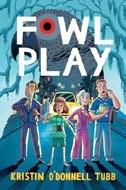
“Grief can make your mind and your heart do weird things.” Since the untimely death of Will Calhoun, her beloved maternal uncle, due to an unspecified genetic condition, Chloe Alvarez’s world has felt muted. In his will, Chloe’s uncle leaves her Charlie, his beloved African Grey parrot who possesses a robust vocabulary and is a skillful mimic. When Charlie starts blurting out words such as homicide and cyanide, Chloe becomes convinced that something—or someone—sinister is behind Uncle Will’s sudden demise. She channels her grief into uncovering the truth of her uncle’s colorful life with help from older brother Jacob, Grammy (who loves true-crime podcasts), and Charlie himself. As Uncle Will said, “Family is wondrous”—and these folks are birds of a feather. Chloe’s lively narrative voice infuses the plucky kid detective trope with emotional range and depth. Charlie’s avian antics provide welcome comic relief, supporting a lovable, laugh-filled harmony that unites a grieving family. The winking references to classic mysteries and Charlie’s eclectic musical tastes (which are satisfied through his Alexa requests) will delight kids and adults alike. The antics of
KIRKUS REVIEWS 116 MAY 15, 2024 CHILDREN'S
Chloe and her ragtag band of sleuths as they progress through multilayered steps on the path to realization will keep readers enthusiastically engaged. Chloe and Jacob live in Charleston, South Carolina, with their mom, whose family is cued white.
A mystery unfolds within a compelling, joyful story of honoring a loved one by living in the moment. (author’s note) (Mystery. 9-12)
Clara Poole and the Wrong Way Up
Tyng, Taylor | Pixel+Ink (368 pp.)
$18.99 | July 9, 2024 | 9781645951629
Series: Clara Poole, 2

Though initially thrilled to enroll in Air Academy, the premier school for aspiring balloon pilots, Clara soon finds that nothing is as she expected. After winning a prestigious air race in Clara Poole and the Long Way Round (2023), Clara expected to be acknowledged, if not celebrated, by the ballooning community. Instead, she’s dismissed as a fraud and an “aero-not.” If Clara thought her acceptance to Air Academy would do anything to dispel the criticism, those hopes are shattered upon arrival. As it turns out, she’s only an alternate; her place in the class is conditional upon another student’s withdrawal. Even worse, in a departure from tradition, the students in the incoming class are split into two groups and made to compete for their places in the school. It quickly becomes clear that Clara and her teammates have been set up to fail, and their losing streak frays even the steadiest friendships. After students are nearly killed in suspicious accidents, Clara receives cryptic warnings from an anonymous source that make her determined to uncover the truth before the disasters turn fatal. Clever and brave Clara is as winsome as ever, especially as she tackles ballooning’s patriarchal underpinnings. This exciting second installment expands on the
worldbuilding of the first while setting the stage for adventures to come. Clara reads white; there’s ethnic diversity among the other characters. Captivating, with a cliffhanger that will leave readers ready for more.
(Adventure. 8-12)
Mind Over Monsters
Uhrig, Betsy | McElderry (304 pp.) $17.99 | July 16, 2024 | 9781665950534
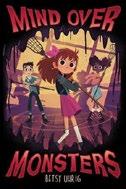
What’s a chronic worrier to do when a meditation app brings one’s fears to life?
Seventh grader Lena Lennox worries so much that she literally pulls her hair out, but some of her worries are well founded. Her strong-minded best friend, Regina, has “gone pretty” and turned boy-crazy. Her brisk, problem-solving mother shows little sympathy or patience for Lena’s mental health struggles. And when Lena and other anxiety-prone students from Cranberry Bog Middle School are chosen to test the De-stress-orama! mindfulness meditation app prior to schoolwide implementation, they discover that the section on facing your fears actually brings those terrors to life. Surprising herself, Lena, who’s white, rallies the racially diverse, self-dubbed Worriers into action—but can they protect the entire school? This book features hilariously wry metaphors, observations, and dialogue. Its sensitive portrayal of Lena’s struggles with navigating anxiety and relationships rings true. However, overall, the story grapples with its identity: There’s a mismatch in tone between the perceptive mental health theme and the humorous horror of the inexplicably incarnated
fears and the kids’ cartoonworthy attempts to dispel them. In addition, the initial lengthy focus on Lena’s worries may lose readers who are in search of horror thrills. While the secondary characters are quirky and fun, especially Lena’s father and brother, the six Worriers besides Lena are thinly developed, and readers may find tracking them challenging.
A thoughtful anxiety story imperfectly dovetailed with a light horror romp. (character guide, author’s note) (Horror. 10-13)
The Island Before No
Uss, Christina | Illus. by Hudson Christie Tundra Books (56 pp.) | $18.99 July 16, 2024 | 9780735272415

What happens when unruly children show up on an island full of walruses whose only answer to questions is “yes”?
“On our island, every simple question had just one simple answer: Yes.” Usually, this works out well. Our narrator—a walrus wearing a pink cap—eagerly says yes to an offer of a sprinkled, frosted doughnut from a vendor. And yes is the perfect response if someone asks if you want birthday cake or to stay up late. But if someone asks you to don an itchy shirt, it doesn’t work out quite so well. Enter the Kid, a tan-skinned child who takes advantage of the walruses’ language deficit. The Kid interrupts a game of Walrus Ball, amasses all the island’s doughnuts, and uses the narrator’s toothbrush to splatter paint all over a cat. When asked to stop, the Kid responds, “No.” The narrator tries to say “no” when the Kid insists upon a piggyback ride but only manages
A clever, absurdist tale laced with strong takeaways. THE ISLAND BEFORE NO
MAY 15, 2024 117 KIRKUS REVIEWS CHILDREN'S
A gratifying, happy-ever-after tale of symbiotic sororal cleverness.
INTO THE GOBLIN MARKET
sounds such as “niff” and “nerp”—wonderfully illustrated through the creative use of fonts. Soon, more young miscreants arrive, wreaking havoc. Funny, accessible Claymation-inspired art depicts the walruses’ difficult mastery of pronouncing the word no —a clear metaphor for the challenges of standing up for oneself. Before this didactic yet lighthearted tale comes to a close, the characters all learn how “yes” and “no” can work in partnership. Human characters vary in skin tone. A clever, absurdist tale laced with strong takeaways. (Picture book. 4-8)
Maria Mariposa
Valenti, Karla Arenas | Illus. by Ana Ramírez González | Chronicle Books (52 pp.) | $17.99 July 16, 2024 | 9781797207933
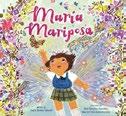
A child’s first day of school is transformed by a gift from her homeland.
Maria Mariposa, a young Mexican immigrant, is thrilled when she looks out the window and sees a butterfly: “¡Una mariposa!” She’s instantly filled with reminders of home: “the black and gold mariachis strumming silver strings, the purple of flower-heavy jacaranda trees holding nests of singing birds.” She’s determined to share her gift with family and neighbors, and she performs acts of kindness for them, sparkling trails of flowers and glitter following in her wake. As Maria boards the city bus, she shares her magic with the driver. Everyone deserves a little magic! But her magic—and confidence—falters when she arrives at school. She has trouble with English, and her classmates laugh at her. Maria encounters a few more
bumps along the way, and at lunch, she finds herself alone, the magic all gone. Her loneliness seems huge, but Maria is bigger! She fights her feelings of sadness until magic blooms from within, so big and colorful that she makes a new friend—and new memories. Maria’s a delightful protagonist who faces challenges that many readers, especially young immigrants, will relate to. Spanish words are sprinkled throughout Valenti’s text, which relies on rich, tangible imagery, while the captivating art has a childlike appeal, using color to set the mood on each page. Warm and compelling, sure to have hearts soaring. (author’s note, resources on butterfly and dragonfly migration) (Picture book. 3-6)
Into the Goblin Market
VanSickle, Vikki | Illus. by Jensine Eckwall | Tundra Books (40 pp.)
$18.99 | July 30, 2024 | 9780735268562
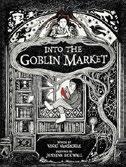
Two resourceful sisters narrowly escape the treacherous Goblin Market. Drawing inspiration from European fairy tales and Christina Rosetti’s 1859 poem “Goblin Market,” VanSickle introduces readers to impulsive Mina and cautious, bookish Millie. When the goblins come to town, Mina, bored and eager for adventure, ignores the warnings about the market and sneaks off one night as Millie sleeps. Awakening to find Mina gone, Millie studies her books before setting after her. Shadowed by a mysterious wolf who meets her at the market’s gate, Millie searches for Mina. Employing the folkloric motif of threes,
VanSickle pits Millie against goblins who offer her sweet apples, eerily enchanting music, and magically scented poppies. Resourceful Millie has brought bread to eat instead and wool to plug her ears. A timely gust of wind prevents the poppy-induced spell. Her search thwarted, Millie decides to return tomorrow, but the goblins demand payment. “Our magic gifts are not for show, / you have to buy before you go. / Otherwise you’re ours to keep.” But Millie soon realizes what has become of her sister—and finds a way to save her. VanSickle’s rhyming couplets scan well, and Eckwall’s red-accented black-and-white pictures and repeating botanical borders evoke classic children’s illustrations. Characters have skin the color of the page. A gratifying, happy-ever-after tale of symbiotic sororal cleverness. (Picture book. 5-8)
The Haunted States of America
Various | Illus. by Solomon Hughes Godwin Books (352 pp.) | $17.99 July 9, 2024 | 9781250819413

Shiver your way across the United States of fear in this collection of paranormal stories by a diverse range of authors, including Dusti Bowling, Ellen Hopkins, and Padma Venkatraman. It’s dark. Maybe it’s Halloween. Something isn’t right. Are those glowing lights? Strange sounds— screams, moans, whimpers, or more subtly ominous noises—float on the air. Your cellphone is useless. You’re impelled to do something you know you shouldn’t. Finally, the dramatic climax arrives, and you’re saved—or perhaps not. Variations on these elements with fearsome flavorings from every state, plus Puerto Rico and Washington, D.C., confirm that whatever the setting, humans can find scares. Camping is risky,
KIRKUS REVIEWS 118 MAY 15, 2024 CHILDREN'S
whether you’re in Washington state or in Florida, Hawaii, New Jersey, or Wyoming. Readers will certainly want to avoid haunted Seven Bridges, Wisconsin, and after reading the Arizona entry, they’ll never look at a cactus the same way again. The entries offer frights for a variety of tastes: Many of the stories are good for a mild frisson; a few are truly creepy and chilling. Among the most accomplished narratives are Chris Eboch’s “The Ghost in the Gold Creek Mine,” a ghost story set in Alaska, Freeman Ng’s “The Ghost of Angel Island,” a paranormal tale set in California, Giselle Anatol’s historical Pennsylvania entry, “The Jockey’s Ghost,” and Rae Rose’s “Hand and Sica Hollow’s Haunted Trail on a Blue Moon Night,” which takes place in South Dakota. Final art not seen.
An entertaining, fright-filled geographical tour. (Anthology. 9-12)
Tiny Tales: Firefly Night
Waldo, Steph | HarperAlley (32 pp.) $17.99 | May 14, 2024 | 9780063289628
Series: I Can Read! Comics

An intrepid firefly tries to show its sleepy diurnal friends the beauty of the night. A group of creatures, including a ladybug, a roly-poly, a snail, and a couple of slugs, watch the sunset. Firefly shows up and encourages the others to stay up late to see the moonflower bloom. “Bedtime can wait,” they decide as Firefly leads them through the forest. At first, they startle at the nighttime sounds of owls and frogs but soon find them soothing, like a lullaby. “I never thought of it that way before,” muses Firefly. Later, Firefly uses its flash to help turn unexpected and seemingly frightening shadows into playful shadow puppets. But will they make it to the moonflower in
time? Maybe not, but what really matters is that these pals have spent time together. Even better, Firefly has learned to see nighttime in a whole new light. As in Tiny Tales: Shell Quest (2021), Waldo makes her cast of creepy-crawlies downright endearing; fans will recognize the snail and the slugs from her previous title. The colorful creatures pop effectively against the deep purples of the night. With just a few panels per page and a limited word count, this short comic will please comics newbies; those in need of some guidance will appreciate the brief explanation of how to read a comic. An exciting, friendship-filled nighttime romp. (information on fireflies and lightning bugs) (Graphic early reader. 5-8)
Journey to the Stars: Kalpana Chawla, Astronaut
Wallmark, Laurie & Raakhee Mirchandani | Illus. by Maitreyi Ghosh
Beaming Books (40 pp.) | $18.99 Feb. 13, 2024 | 9781506484693

A picture-book biography of the first Indian American astronaut.
As a child, Kalpana Chawla (1962-2003)
loved sketching airplanes. At 11, she flew for the first time, an experience that cemented her dream of studying the skies. After earning a degree from Punjab Engineering College, she earned a master’s degree from the University of Texas at Arlington. In Texas, she learned to fly and married her flight instructor, Jean-Pierre Harrison. The two moved to Colorado, where Chawla pursued a Ph.D. After years of hard work and perseverance, she flew her first mission on the shuttle Columbia in 1997. She brought evidence of her Indian heritage, including a flag representing Air India (mistakenly referred to here as Indian Airlines). While the book offers a clear overview of Chawla’s life, it feels frustratingly vague at
times. Readers find out only several pages in that Chawla grew up in India; her hometown is never mentioned. While the authors note that the faculty at Punjab Engineering College attempted to dissuade her from pursuing her passion, they don’t explain why, though a reference to her being the first woman to graduate with a degree in aeronautical engineering alludes to the sexism she experienced. Information on Chawla’s death—she was killed in 2003 when the Columbia exploded in midair—is relegated to a timeline in the backmatter. The upbeat artwork has a somewhat static feeling. A heartfelt yet hazy account of a pioneering woman in STEM. (author’s note, list of Chawla’s honors and recognitions, selected resources) (Picture-book biography. 4-8)
Danté Plays His Blues
Wells, Allen R. | Illus. by Shamar KnightJustice | Harper/HarperCollins (32 pp.) $19.99 | July 9, 2024 | 9780063216259

Danté and his mother are forced to leave their home and stay with Uncle Ron until they get back on their feet. Danté recognizes that Mama’s heart is as broken as his own when they’re displaced from their beloved neighborhood, Luna Park, with its city pool and all Danté’s friends. At their new home, Dante’s uncles and older cousin greet them with open arms, big smiles, and welcome signs, but it’s the sight of Uncle Joe playing his guitar and Uncle Ron blowing his saxophone that distracts Danté from his pain. As Uncle Ron teaches Danté to play the sax, the boy opens up about what’s bringing him down, and Uncle Ron offers some words of wisdom: “Turn yo’ blues into yo’ muse.” Danté practices playing his sax (named Luna after his old neighborhood) all summer, and as the book closes, he performs onstage. “It isn’t perfect,”
MAY 15, 2024 119 KIRKUS REVIEWS CHILDREN'S
A heartfelt tale that intertwines a young boy’s personal journey with his love of nature.
WITH JUST ONE WING
he admits, but he keeps going—a thoughtful metaphor for his own experiences. Sometimes, Wells suggests, that’s all we can do. The mixed-media illustrations, which incorporate textured papers and sheet music, make for a lively and cathartic journey through hardship and the challenges of learning to make music. Knight-Justice uses deeply saturated hues of blue to depict the sounds filling the room as Danté plays; she portrays this loving Black family and community with varying shades of brown. The result is an authentic introduction to the blues and the music’s cultural legacy.
A resonant tale of a boy dealing with change in his own way. (Picture book. 4-8)
Abuelo, the Sea, and Me
Williams, Ismée | Illus. by Tatiana Gardel Roaring Brook Press (40 pp.) | $19.99 May 21, 2024 | 9781250848772
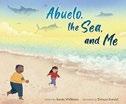
Season by season, a child learns about Abuelo’s past life in Cuba. The young narrator visits Abuelo several times a year, and they always go to the beach near his home. Starting in summer, the child gets glimpses into the life Abuelo led before he fled Cuba. “In Havana,” he says, “marlín and delfín would leap right there!” Though he smiles at the memories of pineapple, guava, and coconut ice cream, his reminiscences are tinged with sadness, too. Abuelo won medals for his swimming prowess, but he left them behind in Cuba. He misses his homeland “so
much it hurts,” but he’s grateful to still have the ocean he loves, as well as his family, including his grandchild. This confidently told story, made up of brief moments between Abuelo and the grandchild, gets deeper as it goes on, with richly textured digital illustrations highlighting the changing light and weather as summer, fall, winter, and spring each take their turn. Without ever becoming overly sentimental, the book conveys how past and present simultaneously coexist for Abuelo. The sky fills with clouds shaped like dolphins and marlins after Abuelo reminisces about them, and large medals, like the ones Abuelo won back in Cuba, wash in with the tide. Spanish words are incorporated throughout.
A deftly told immigrant’s story of bittersweet memories and a grandparent’s love. (author’s and illustrator’s notes) (Picture book. 4-8)
Archie and Pip: First Day of School
Wodarz, Zoe | Illus. by Mari Richards Cottage Door Press (36 pp.) | $4.99 paper June 18, 2024 | 9798890191007
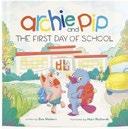
Siblings are ambivalent about the new school year. Archie, a piglet, is starting kindergarten; big brother Pip, a platypus, is entering first grade. They’re excited but nervous, too: Archie doesn’t know if he can sit still all day and worries about what he’ll learn and how much
he doesn’t know yet; Pip frets that Archie will make so many pals, he’ll forget about him. As the siblings play with their friends, Archie hears some silly, improbable stories about school (Pip smiles knowingly); then they shop for new supplies with their parents. At the store, they meet Mr. Hornsby, the kindergarten teacher, who allays Archie’s fears by patiently answering his many questions. After dinner, Pip further reassures his younger sib. Next day, the first school day, is successful: Archie learns a lot, has fun, makes new friends—and reassures Pip that he wouldn’t have been as brave without his older brother’s help. Archie acknowledges he needn’t have worried after all. This sprightly, encouraging story handles new students’ realistic concerns in an upbeat, though somewhat superficial manner; not all children will take to school quite as quickly as Archie does. Still, the illustrations are adorable, depicting an all-animal cast: Dad’s a lion, Mom’s a crocodilian, and Mr. Hornsby’s a ram. Backgrounds have a charming, childlike look.
A peppy tale sure to get kids psyched for the first day of school. (Picture book. 4-7)
With Just One Wing
Woods, Brenda | Nancy Paulsen
Books (176 pp.) | $17.99
May 14, 2024 | 9780593461532
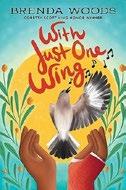
A boy’s summer takes an unexpected turn, leading him to discover a new passion. Cooper Garnett, who’s almost 12, is planning to have the best summer ever, playing basketball and learning to golf with his grandfather. But his hopes are dashed after he falls out of a tree while trying to touch the eggs in a mockingbird nest, breaking his arm and giving himself a concussion. While recuperating, he spends time
KIRKUS REVIEWS 120 MAY 15, 2024 CHILDREN'S
at his grandparents’ house. As Coop, his grandparents, and his friend Zandi watch the hatchlings venture out of the nest, they notice that one is different—it has only one wing. After Coop and Zandi learn that the little mockingbird likely won’t survive to adulthood on its own, they decide to rescue it and keep it safe. Through caring for the bird, named Hop, Coop comes to realize that loving someone sometimes means making hard choices. Woods uses simple, conversational language to bring the briskly paced story to life. Drawing parallels between Coop’s complicated emotions around his adoption and his feelings toward the rescued bird, she makes a complex topic feel accessible while also illustrating what it truly means to love and protect. Though Coop and his grandfather are well developed, other characters fall a bit flat. The use of names and language cue characters as Black.
A heartfelt tale that intertwines a young boy’s personal journey with his love of nature. (Fiction. 10-13)
Harold the Iceberg Is Not a Super Food
Wyzlic, Lisa | Illus. by Rebecca Syracuse Feiwel & Friends (40 pp.) | $18.99 | June 4, 2024 9781250877802 | Series: Harold the Iceberg, 2

An uncertain hero learns to be-leaf in himself. Harold, the head of iceberg lettuce introduced in Harold the Iceberg Melts Down (2023), is awestruck upon meeting “tall and strong” Kayla, with her “glorious, full leaves” that are “the perfect shade of green.” Harold wants to be just like Kayla, who, he believes, is a “SUPER food.” How can he measure up? He makes a list of ways to emulate Kayla, but friends who need his help keep interrupting him. Kind Harold always steps up, yet he still sings Kayla’s praises, ignoring his own
An upbeat tale with a wonderful message about being one’s best self.
HAROLD THE ICEBERG IS NOT A SUPER FOOD
strengths; the more Harold focuses on Kayla, the worse he feels about himself. His foodie friends intervene and point out Harold’s own accomplishments. They remind him of the ways Harold’s super, too—as a helper! Harold concedes that he helps in small ways, but he wants to do really big things. His pals agree that his goal is doable while praising him for being “BIG-helpful” already. In the end, Harold acknowledges that he should aim to be the best version of himself instead of copying someone else. This is an empowering, reassuring tale about trying hard and being your best YOU. The story is slightly overwrought, though, and takes a while to make its point. The colorful digital illustrations are very lively, as is the creative typography; readers will appreciate Harold and the other witty, wide-eyed, expressive, anthropomorphized foodstuffs. An upbeat tale with a wonderful message about being one’s best self. (Harold’s tips for helping your community) (Picture book. 4-7)
Farrah Noorzad and the Ring of Fate
Zargarpur, Deeba | Labyrinth Road (336 pp.)
$17.99 | July 2, 2024 | 9780593564417
Series: Farrah Noorzad, 1
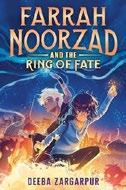
A calamitous wish sends a girl on an adventure to free her father from entrapment while exploring the secrets of her true heritage. Twelve-yearold Muslim, Afghan American Farrah longs for a
connection to Padar, the father whom she only sees once a year on her birthday. When Farrah makes a wish on a magical ring—“I wish to find a place in Padar’s world”—the ring’s power is unleashed, simultaneously trapping him inside it and freeing Idris, a jinn boy. Fearing for the safety of Padar and the rest of her family, Farrah sets out to save him. When shadowy, menacing figures materialize and try to claim the ring, Idris appears, revealing information that changes Farrah’s life forever: Padar is one of seven jinn kings, making her a half-jinn, someone whose very existence is forbidden. With help from Idris and Yaseen, her newly discovered half brother, Farrah’s perilous journey to try to undo her wish takes her to the Realm Beneath the Unseen. Zargarpur’s worldbuilding is solid as she weaves together a fantasy world that includes elements of Islamic legend and Persian mythology to create a richly detailed portrait of two existences that are destined to clash. At its core, this is a story of seeking belonging, navigating complicated family circumstances, and believing in one’s strengths that unfolds through fast-paced action with unexpected plot twists that allow for expansion into future volumes.
An engaging read with an original and courageous young hero. (author’s note) (Fantasy. 8-12)

MAY 15, 2024 121 KIRKUS REVIEWS CHILDREN'S
For more by Deeba Zargarpur, visit Kirkus online.

Young Adult
PAGE-TURNING SUMMER READS
WHAT COULD BE more alluring than a summer reading list? After a school year filled with assigned reading and homework essays, blissful weeks stretch ahead during which you can pick up whatever you like, put down anything you don’t, and read purely for the sheer joy of engaging with the author’s world—without the pressure of knowing that tomorrow in class your teacher might call on you to comment on the symbolism in Chapter 13. These five immersive titles offer readers a broad variety of genres and themes to explore.
Liar’s Test by Ambelin Kwaymullina (Knopf, May 21): The latest from acclaimed Western Australian author Kwaymullina (Palyku) is a
complex, page-turning work of speculative fiction. In Mistfall, the Treesingers live in a symbiotic relationship with trees. But Bell Silverleaf’s grove, Falling Leaves, has been at risk since its birth tree succumbed to an illness. Bell’s mission to help her people depends on her ability to dissemble as she’s forced by her land’s oppressive rulers to fight for her life in the Queen’s Test.
Four Eids and a Funeral by Faridah Àbíké-Íyímídé and Adiba Jaigirdar (Feiwel & Friends, June 4): Romance fans will delight in this charming transnational literary collaboration between Londoner ÀbíkéÍyímídé and Dubliner Jaigirdar. Set in Vermont, the story follows two ex–best friends, Tiwa


Olatunji and Said Hussain, who are thrown back together over summer break. Working together on a meaningful cause—saving their local Islamic center— helps the young people overcome their complicated history. As the initial tension between the two thaws, space opens for love to grow.
Heiress Takes All by Emily Wibberley and Austin Siegemund-Broka (Little, Brown, June 4): The husband-and-wife writing team break from their string of successful romances for a thriller, and the result is a fun, twist-filled series opener centering on a wronged teen. Olivia, 17, is incensed: Her unfaithful, deadbeat father left her and her mom to struggle financially. Now he’s marrying a woman only eight years older than Olivia. Why not assemble a team to pull off a heist and redistribute her dad’s immense wealth?
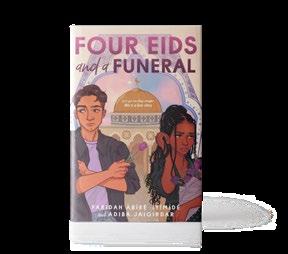


Brownstone by Samuel Teer, illustrated by Mar Julia, colors by Ashanti Fortson (Versify/ HarperCollins, June 11):
Fourteen-year-old Almudena doesn’t want to spend the summer renovating a brownstone with the Guatemalan dad she doesn’t know. But her white mom is heading off on a dance tour, and she believes it’s a great opportunity for the two to bond. This visually captivating graphic novel thoughtfully explores evergreen coming-ofage themes around self, family, and community, as Almudena is pushed out of her comfort zone and grows into a fuller version of herself.
Dashed: A Margaret Dashwood Novel by Amanda Quain (Wednesday Books, July 16): Quain is back with another clever reimagining of a Jane Austen novel. This time it’s Sense and Sensibility set against the backdrop of a Caribbean cruise during which the Dashwood sisters reckon with clashing personalities, family grief and trauma, and, of course, romance. Readers who know the original will enjoy spotting the parallels, but anyone who appreciates relationship-driven stories will be won over by the deft balance of lighter and more serious themes.
Laura Simeon is a young readers’ editor.
LAURA SIMEON
Illustration by Eric Scott Anderson
KIRKUS REVIEWS 122 MAY 15, 2024
EDITOR’S PICK
When the power goes out, all that’s left is darkness, stories, and the electricity sparking between two bodies in this illustrated work by Angolan author Ondjaki that’s translated from Portuguese.
The story begins, “Suddenly the lights went out”—and readers are plunged into the dark of night. The first-person narrator gathers the courage to ask their girl companion questions: “Don’t you think there’s something really beautiful about people?” “What do you think can fit in a person’s heart?” The conversation between the two ebbs and flows, punctuated by the
blinking light of a distant airplane, the intermittent appearances of the narrator’s grandmother, and the barely there touches of young lovers. “Kiss me. Just once.” They tell stories, share truths, and spin webs of wishes. A translator’s note provides context: This dreamlike evening takes place in Luanda, the capital of Angola, near the end of a decadeslong civil war that’s referenced in passing by the two main characters. Miller-Lachmann does a remarkable job of making this rich piece accessible to an English-language readership. Ondjaki’s poetic prose draws an achingly
By Myah Hollis
Kara A.
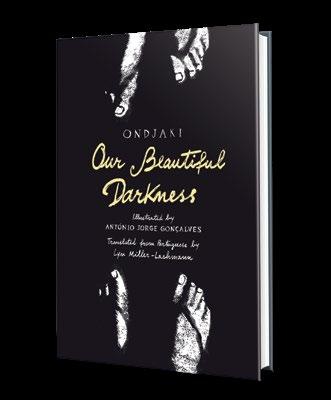
Our Beautiful Darkness
Ondjaki | Illus. by António Jorge Gonçalves
Trans. by Lyn Miller-Lachmann | Unruly 126 pp. | $16.95 | July 23, 2024 | 9781592704101
potent picture of two young people reaching for each other during a sudden moment of possibility, while the white text on the black pages and Gonçalves’ rough, white-on-black illustrations help create an immersive experience. As the
best art does, this collaboration makes a very specific story—two young people, one night—feel universal. A brilliantly elemental exploration of the light that darkness can bring. (translator’s note) (Illustrated novella. 12-18)
137 The Ghostkeeper By
Johanna Taylor
127 Not About a Boy
130 I Will Never Leave You By
Kennedy 133 Grace Notes By Naomi Shihab Nye 123 Our Beautiful Darkness By
by
These Titles Earned the Kirkus Star
Ondjaki; illus.
António Jorge Gonçalves; trans. by Lyn MillerLachmann
MAY 15, 2024 123 KIRKUS REVIEWS YOUNG ADULT
A twisty whodunit exploring bonds of brotherhood.
HOW TO DIE FAMOUS
The Mirror of Beasts
Bracken, Alexandra | Knopf (496 pp.)
$20.99 | July 30, 2024 | 9780593481691
Series: Silver in the Bone, 2
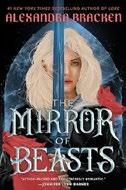
A found family of teens struggles against an evil force in this duology closer. After the destruction of the mystical land of Avalon, Tamsin, Neve, Olwen, and Caitriona fight through their grief and guilt in order to continue their battle against Lord Death, who grows stronger in his control over the dead as the winter solstice nears. Caitriona’s internalized grief is particularly well depicted, tying into her character development and her slow-burn queer romance. Tamsin and her friends begin seeking allies in the legendary Bonecutter and the Council of Sistren, and they go on to focus their quest on the Mirror of Beasts, which can defeat Lord Death. The linear storyline is well balanced through the rotating points of view and the inclusion of mystical visions and mythical stories. Cabell’s perspective adds a disturbing dimension to the portrayal of Lord Death’s cabal and offers a refreshing contrast to the viewpoints focusing on romantic themes. Tamsin’s ongoing physical attraction to Emrys may initially seem jarring given the latter’s earlier cutting betrayal, but their growing romance is drawn out enough to feel realistic. The cast members’ relationships are well developed overall, especially the familial bonds among Tamsin, Cabell, and their long-missing father figure, Nash. With numerous plot twists and surprising reveals, this epic story, which features a racially diverse cast, wraps up with a satisfying ending.
An intricate and absorbing character-driven finale. (Fantasy. 14-18)
Asking for a Friend
Chen, Kara H.L. | Quill Tree Books/ HarperCollins (336 pp.) | $19.99
July 23, 2024 | 9780063237889

A Taiwanese American teen joins forces with a childhood friend for a contest, only to discover that victory may cost her everything. Seventeen-yearold Juliana Zhao loves love. Sure, she’s never actually been in love, but she has a knack for sensing when two people belong together, as evidenced by her successful matchmaking record. And Juliana is no stranger to success; she’s ranked first in her class and is president of the Student Business Association. Yet, as she prepares to enter the Asian Americans in Business Competition, which was founded by her late father, she finds herself floundering after she’s dumped by her project partner at the last minute. Desperate, Juliana turns to an estranged childhood friend, Garrett Tsai. Though reluctant to participate, pessimistic Garrett turns out to be the perfect teammate. Playing on the grumpy-sunshine trope, the two start a relationship advice website using the pseudonyms Sunny and Cloudy, with each offering their own take on each question. The narrative is structured around the competition, but the emotional heart of the story lies elsewhere. Both children of recent immigrants, Garrett and Juliana struggle with parental expectations and social judgment within the tightknit Taiwanese community. The challenges
they face from being “raised by one culture but living in another” will ring true for readers who share their identity, while the sweetness of their romance will win over everyone else.
A swoonworthy, heart-wrenching view into the trials of growing up second generation in an immigrant community. (Fiction. 14-18)
How To Die Famous
Dean, Benjamin | Little, Brown (384 pp.)
$18.99 | July 9, 2024 | 9780316519601

A rising TV star vows to uncover the unsettling truth behind his older brother’s death. British entertainment industry newcomer Abel Miller, a multiracial Black teen, has just landed a role on Omni Channel’s Sunset High, a star-making teen drama with a controversial history. An actress from the original series experienced a mental breakdown, and in 2022 the reboot’s junior assistant—Abel’s 22-year-old brother, Adam—died after falling from the roof of a hotel and a young lead actor vanished during her evening run. When Abel joins the cast in 2024, he partners with a tabloid journalist to expose Omni’s underbelly and shed light on the strange circumstances surrounding Adam’s death. As Abel adjusts to the spotlight, he connects with his three teen co-stars, who are guarding career-ending secrets. Soon, Abel’s mission is at war with his loyalties, and he realizes that Omni is much more dangerous than anyone could imagine. Told through first-person narration that alternates between Abel and white co-star Ella Winter, Dean’s sophomore YA novel effectively combines pop-culture elements with the tension of a murder mystery. The author explores the exploitation of children in show business, from the selfish demands of stage parents to the insatiable greed of industry executives, with realism. Abel’s unresolved grief is movingly depicted,
KIRKUS REVIEWS 124 MAY 15, 2024 YOUNG ADULT
and the ending, though a little too conveniently earned, leaves room for a sequel.
A twisty whodunit that critiques the toxicity of celebrity while exploring bonds of friendship and brotherhood. (Thriller. 14-18)
The Stones of Burren Bay
De Angelis, Emily | Latitude 46 (186 pp.) | $22.95 paper May 4, 2024 | 9781988989792

A debut told from the point of view of a 15-year-old as she navigates grief and change during a summer on Manitoulin Island in Ontario. Norie Lynch has a passion for art and feels a close bond with Johanna, her maternal grandmother. After Gram’s death, Norie’s controlling father is killed in a car accident that also destroys a precious artist’s box that belonged to Gram and was brought to Canada when the family left Ireland generations ago. Now, Norie can’t face doing art. She and her mother, Alice, go stay with Alice’s friend Dahlia and her family in rural Burren Bay on Manitoulin Island. There, Norie slowly connects with emotionally distant Alice. She also gradually forms bonds with Dahlia’s family—daughter Wil (also 15) and husband Gibson—and people in the local community, such as artist Nell Gallagher and contractor Ray Fox, who’s cued Anishinaabe (other major characters read white). Norie also finds a healing connection to the landscape around the nearby lighthouse, finding her way back to her artist’s soul in part by connecting to the past through the story of Oonagh, an 1892 immigrant from Ireland. This compact, lyrically written novel will appeal to readers who appreciate character-driven stories and rich symbolism. De Angelis roots her story in a well-rendered landscape, creating a strong sense of place in both the historical and contemporary storylines.
A gentle story of bittersweet growth and healing that stems from family, art, and place. (Fiction. 12-18)
Near Misses & Cowboy Kisses
Emmel, Katrina | Delacorte
Romance (288 pp.) | $12.99 paper
July 23, 2024 | 9780593708149

A quiet Nebraska cowboy and an unhappy California transplant are inexplicably drawn to each other in this wholesome enemies-to-sweethearts debut. Seventeen-year-old talented artist Riley Thomas’ world has been turned upside down. Her parents’ new jobs require her family to relocate to small-town Nebraska from Southern California the summer before her senior year. Even worse, Mom and Dad are dragging Riley and her younger brother on a week of forced family fun with the Oregon Trail Adventure Co. Cowboy Colton Walker is the reigning 18-and-under solo lasso champion and the strong, silent type, whose family’s business is guiding wagon trains along the trail. When the teens first meet, they feel an instant mix of attraction and annoyance. But throughout the laid-back days and starry nights on the Nebraska plains, they’re drawn together as they begin to realize that there’s more to the other than meets the eye. Emmel does a beautiful, unhurried job of drawing out the transformation of Riley and Colton’s relationship from awkward tension to tentative friendship to budding romance. Readers will root for these two stubborn souls to let down their guards and get out of their own ways. The family relationships are realistic and nuanced, and Riley’s fury and frustration toward her parents is relatable to anyone who’s ever had to relocate against their wishes. Fans of Jenny Han and Kasie West will especially enjoy the innocent portrayal of first love. Main characters are cued white.
A sweet, slow-burn romance with a swoon-y payoff. (Romance. 12-18)
Stefi and the Spanish Prince
Freitas, Donna | HarperTeen (352 pp.)
$19.99 | July 23, 2024 | 9780062662149
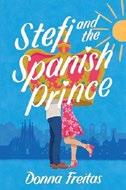
Stefi’s summer in Barcelona involves romance, surprises, blackmail—and an entanglement with Spanish royalty. Her time abroad in Spain is a chance for 17-yearold Stefi, who has an American dad and a Catalán mom, to start over. Leaving the U.S. on the heels of a bitter breakup, the aspiring pastry chef follows her passion for baking to a course at a culinary institute. She meets handsome Xavi at La Buena, his mother’s food stall in the city’s famous La Boqueria market. Xavi is the secret heir to the Spanish throne, a bona fide prince. As blond Stefi and blue-eyed “hot Viking warrior” Xavi get to know each other, his secret identity hangs between them. Readers will delight in the many romance tropes Freitas includes: tragic misunderstandings, awkward moments that endear lovers to each other, and vile exes who threaten to break up a blossoming romance. Spain, with its rich culture and summer heat, is fully developed as a setting thanks to the inclusion of details such as its Mediterranean beaches and the running of the bulls in Pamplona. Xavi’s undercover bodyguard, Santiago, has a swoonworthy romance with Xavi’s friend Diego. Though the story starts off slowly and would benefit from faster pacing, it will satisfy romance fans.
A light, lovely read that leans heavily on genre truisms. (Romance. 13-18)

MAY 15, 2024 125 KIRKUS REVIEWS YOUNG ADULT
For another charming romance, visit Kirkus online.
Castle of the Cursed
Garber, Romina | Wednesday Books (304 pp.)
$21.00 | July 30, 2024 | 9781250863898
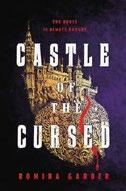
After surviving an apparent gas leak that killed 25 other people on the New York City subway, including her parents, a 17-year-old moves in with her estranged aunt in a castle in northern Spain.
Estela Amador has spent the seven months since the tragedy in a mental health facility, but upon learning the truth about her origins, she has little choice but to travel to the place her parents actively lied to keep her away from. Beatríz Brálaga, her maternal aunt, is brooding and remote, just like castillo Brálaga, the family’s ancestral home. Beatríz, who’s a doctor, gives Estela shriveled black pills instead of her usual medications. Estela learns about the history of the castle and nearby town from Felipe, her Spanish language tutor. Desperately curious to learn more, she experiences nighttime hauntings by a shadow beast as she explores the castle against her aunt’s express orders. After a menacing first encounter, Estela and the beast, Sebastián, form a partnership to uncover more of Estela’s past—if her past doesn’t destroy her first. Elements of Dracula meet “Beauty and the Beast” to create a dark, engaging atmosphere. While the romantic moments with Sebastián often interrupt the story’s genuine tension, and some of the family revelations veer into melodrama, the intriguing setting with its well-wrought details will keep readers engaged. A brooding romance with a compelling, gothic setting. (author’s note, mental health resource, link to content warnings) (Fantasy romance. 14-18)

Our Wicked Histories
Goldsmith, Amy | Delacorte (384 pp.)
$19.99 | July 30, 2024 | 9780593703953
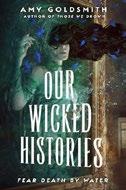
A social outsider faces a weekend of nightmares, hoping to return to the school and life she yearns for. English teen Meg eagerly accepts an invitation to a Halloween party at the foreboding Irish countryside estate of her classmates, the Wren twins—Lottie (her best friend) and Seb. She’s seeking to earn redemption for a drunken misdeed that landed her a suspension from their elite London art school, Greyscott’s. Bullied by her wealthy peers for being on scholarship and having a mum who’s a cleaner at the school, Meg also harbors a secret: a forbidden crush on Seb. The story unfolds as Meg’s reflections on the past are interspersed among the present-day scenes, and the growing sour atmosphere at the party forces her to relive the terrible incident and subsequent fallout that led her classmates to mistrust her. Escalating frights—flickering lights, a failing fuse box, tales of a local banshee, unusual paintings, and more—leave Meg questioning her senses and fearing for her life in this simmering, tension-filled novel that hinges on twisted secrets. Hinting at Poe’s classic “The Fall of the House of Usher,” this fresh reimagining explores classism and privilege. The main characters, who are cued white, nod to the complex, oppressive history of English aristocratic wealth, which intersects with Irish legend as mysteries that are as thick as the cloying weeds of a murky lake are slowly and satisfyingly revealed.
Deftly blends classic gothic style with a contemporary sensibility. (Horror. 14-18)
Time and Time Again
Greenfield, Chatham | Bloomsbury (320 pp.) $19.99 | July 23, 2024 | 9781547613908
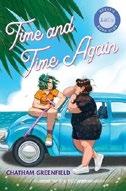
For Phoebe Mendel, it’s been Aug. 6 for a month. That situation doesn’t look like it will change any time soon. Trapped in a seemingly endless time loop that begins in the morning of that sweltering, miserable Florida day and ends with a major flare-up of her severe irritable bowel syndrome, Phoebe is miserable and lonely—until the arrival of childhood friend Jess Friedman. Jess, who’s nonbinary and has oligoarthritis for which they use mobility aids, is a brash, fearless, and fun free spirit who is also trapped in the time loop. Determined to live each consequence-free repeated day to the fullest, Jess convinces Phoebe to embark on hijinks and adventures. The pair grow and change but cannot escape the complications of their usual lives and selves. Phoebe and Jess’ slow-burn romance is carefully developed and believable—an opposites-attract connection that’s built on shared experiences as disabled Jewish lesbians in an unwelcoming town. Greenfield captures well the existential horror of the loop while finding believable ways for the protagonists to seek enjoyment and growth within it, ensuring that familiar genre tropes don’t feel stale. Often-passive Phoebe feels less vibrantly portrayed than the supporting cast; however, her struggles with
A gritty teen drama full of mature themes that unfurl in compassionate ways. NOT ABOUT A BOY
KIRKUS REVIEWS 126 MAY 15, 2024 YOUNG ADULT
For another atmospheric paranormal tale, visit
Kirkus online.
pain, insecurity, and anxiety are sympathetically shown, and her role as a fat romantic lead coming into her own is much needed. The supporting cast includes queer and racially diverse characters.
An original twist on a wellgrounded romantic storyline.
(Speculative romance. 13-18)
Kirkus Star
Not About a Boy
Hollis, Myah | HarperTeen (336 pp.)
$19.99 | July 2, 2024 | 9780063341982
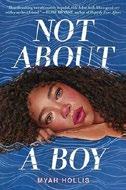
A 17-year-old Black foster kid struggles with mental health, loss, and recovery from addiction. Thanks to Laurelle Child Services, an upscale adoption agency, Amélie “Melie” Cœur has received one final foster placement before she ages out of the system. She’s moved from Connecticut to live in Manhattan with a successful white couple in their late 30s: Sue Romano, a famous stylist, and her attorney husband, Dave, a former foster kid. Unbeknownst to her new private school friends, Melie is grieving the sudden death of Darren, her codependent first love and guide into the world of substance abuse. That trauma is the reason behind Melie’s willingness to sneak charming basketball player Hayden (a rich Black classmate) into the apartment for late-night hookups but not agree to the actual relationship he wants. Melie’s life begins to spiral even more when she unexpectedly discovers through social media that she has an identical twin sister, Brie, who lives in Brooklyn. Even though the girls were separated at age 5, Melie doesn’t have any memories of her twin; Melie is definitely not doing all right. This debut is a gritty teen drama full of mature themes that unfurl in compassionate ways and will resonate with many readers. Hollis also imbues the text with moments of joy, witty banter, and supportive found-family bonding, for example,
through Mel’s exemplary, steadfast Connecticut besties, Rena and Cal. Heartbreaking and powerful. (Fiction. 13-18)
Shield of the Vanir
Humble, William R. | Fawkes Press (378 pp.) | $15.99 paper May 28, 2024 | 9781957529172
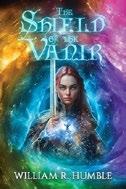
A lesser-known branch of the Norse deities’ family tree takes center stage. Now that Arna’s oldest brother, Ragni, serves the goddess Freya, their often-absent mother, the goddess Gullveig, counts on Arna to keep her other siblings safe as war approaches. Sixteen-year-old Arna and her younger brothers and sisters have yet to erupt, or manifest godly powers. Arna feels her responsibility keenly, ashamed of having previously prioritized her ex-girlfriend over her own family. When an encounter with bullies goes badly, Arna leads her siblings out of Vanaheim via the World Tree Yggdrasil to Alfheim, where they find its people, the alfar, at war with the invading Aesir, who are Odin’s kin. Along the way, they’re rescued by a foreign trade delegation that includes Emika, a beautiful shapeshifter with whom Arna falls in love. While battling the invaders alongside the alfar, Arna searches for Gullveig, whose powers they need. The Norse mythology in the book borrows from both video games and traditional sources. Arna’s more a larger-than-life movie superhero than teen protagonist, which may pose barriers to readers’ becoming invested in her. Having learned her life lessons before the novel opens, Arna faces few challenges beyond adding to the cartoonishly vast enemy death count in a war that lacks a clear rationale or objectives. Emika and friends are cued as fantasy Japanese; most other characters appear to be the equivalent of Northern European.
Gamers may enjoy this war novel that features light character development. (Fantasy. 14-18)
Finding Famous: A Mashad Family Novel
Jalili, Candice | Disney-Hyperion (416 pp.)
$18.99 | July 30, 2024 | 9781368094733

High school senior Josie’s life turns upside down when she discovers she belongs to reality TV royalty. On her 18th birthday, Iranian American Josie Lawrence’s stepfather presents her with a letter from her biological father that her deceased mother had been saving for her. Josie is surprised, since her mom never forgave him for abandoning her when she was pregnant. Even more shocking is the revelation that her late father was Ali Mashad, beloved patriarch of “the most powerful family in the world.” When Making Mashad debuted 15 years ago, the show catapulted the family to fame. Anxious, ordinary Josie would rather pretend she didn’t just get life-changing news, but when Ali’s widow shows up, that’s impossible. Josie learns about a trust fund, but she can only access the money in it if she films at least one season of the show. With her stepdad working double restaurant shifts to support them and a hefty bill from Stanford looming, she can’t afford to turn down millions of dollars. A whirlwind of NDAs, paparazzi dodging, and jet-setting ensues—but also sisterly bonding and a reconnection with her Persian roots. Maybe Josie will benefit from being pushed out of her comfort zone? Jalili’s YA debut is fast-paced and full of drama. While the characters feel a bit like generic types, and the resolutions are a bit too tidy, the warm moments of familial connection are highlights.
Light, pleasurable fare for pop-culture fans. (Fiction. 13-18)
MAY 15, 2024 127 KIRKUS REVIEWS YOUNG ADULT
THE KIRKUS Q&A: SHIVAUN PLOZZA
In her latest, the Australian novelist asks: What is happiness?
BY LAURA SIMEON
AWARD-WINNING AUSTRALIAN middle-grade and young adult author Shivaun Plozza returns, just in time for summer reading season, with The Worst Perfect Moment (Holiday House, May 14). After 16-year-old Tegan is hit by a car while riding her bike, she wakes up in the afterlife. Specifically, a replica of the Marybelle Motor Lodge, a third-rate New Jersey motel where she spent a miserable weekend with her dad and little sister after her mom left the family. Zelda, an infuriatingly stubborn angel, insists this is Tegan’s personal heaven, the place where she was happiest. Do they make mistakes in heaven? And what will become of the growing attraction between Tegan and Zelda? This insightful, thoroughly readable work—hilarious and heartbreaking, grounded in life’s mundanities and deeply profound—takes readers on a journey of emotional transformation. Plozza spoke with us over Zoom from her home in Victoria, Australia; the conversation has been edited for length and clarity.


best ways is by looking at other people’s work, whichever way, shape, or form that that takes.
What was it like writing your first book set in the U.S.?
How does your work as a freelance book editor affect your writing?
It’s a mix, both a pro and a con. I remember distinctly when I trained to be an editor, just how much my understanding of craft grew. I studied how to write at uni, I did a master’s in creative writing years ago, but most of what I’ve learned about writing was through editing and manuscript assessing—that feeling of, Oh, that’s why that doesn’t work—and then being able to understand that in my
own writing. But then, I’ve noticed, over the years, that that part of my brain comes in too early in the writing process; personally, I need a fair amount of time to be creative, not worrying about whether or not it’s working, just gathering ideas and seeing what directions things can go in. So that’s my “no.” One battle these days: to say it’s OK to have that messy, creative start to a project. But overall, I would say that consciously thinking about craft is a good thing, and one of the
I had this vision of setting a story almost entirely within a Doo Wop motel, and [they’re] specific to the U.S. and mostly synonymous with the Wildwoods [in New Jersey]. If I hadn’t already had those previous contemporary [YA] novels, which were set in Australia and then translated for U.S. release later on, I wouldn’t have understood the subtle differences. Frankie was my first experience; I thought we’d only change the spellings. I didn’t realize there are so many different phrases and ideas and words that just didn’t translate. It’s more than
just taking the “u” out of colour. I’ve picked up a few things from consuming American media, and having American friends, and reading American books, and research. My agent is American, so that helps, and [Holiday House is] an American publisher, so the editor is American. Hope fully I’ve got it mostly right.
What did you find so compelling about the motel setting?
I know the idea of liminal spaces is overused, but it feels like no matter how wonderful a motel possibly is, something’s going on underneath the surface, and there’s so much possibility with a story set in that kind of space. Hotels in general I find fascinating: They’re
YOUNG ADULT // Q&A
Peta Twisk KIRKUS REVIEWS 128 MAY 15, 2024
transient in nature, and the more dingy they are, the more interesting stories there are to tell about who’s been there and the lives they’ve lived. I think of setting very much as a character, so I naturally gravitate toward spaces that are ripe for that kind of treatment. Doo Wop motels are just fascinating—beautiful, beautiful architecture but with that dark twist to them.
The heaven you created is certainly immersive and evocative. Did you plan the worldbuilding in advance or did it emerge organically?
I made a conscious decision to bring creativity into my life that’s not connected to my job, so I began painting again. I realized that the way that I paint is the same way that I write: I like that little section there, so I might repeat it over here, and then slowly it forms over layers and layers. And I do that with writing as well. I think this is the influence of Douglas Adams [The Hitchhiker’s Guide to the Galaxy ], who’s one of my absolute favorite writers; I think he’s just brilliant. I love the little throwaway comments and lines and details [in his work]—and discovering later on that they’re not so throwaway after all. I’m changing things constantly, and that’s pretty much how heaven came to be. As one little detail appears, you tease it out, and eventually you’ve got this world—it arrives how it arrives, and it works.
One element I loved—and that I think of as a sort of hallmark of your YA
We all think of happiness as a big thing—pure happiness and bliss—and forget about the tiny moments.

The Worst Perfect Moment
Plozza, Shivaun Holiday House | 320 pp. | $19.99 May 14, 2024 | 9780823456345
books—is that you show how life’s a constant jumble of contradictory emotions. Given the premise of the story, I didn’t expect to laugh as much as I did.
One of the key things that I always have to work consciously on is drawing out that emotional arc and making sure that my characters feel emotions, because I tend to tamp
reacting to the world, and I don’t think that it gets enough credit. We often applaud deeply tragic and serious artwork but, for me, being able to make someone laugh—especially when my character is dead—I think that’s such a wonderful thing. So much understanding can come through humor; you can laugh your way to understanding who you are in the world. Also, particularly with writing for young people, I’m always conscious of trying to offer a little bit of hope and humor, because their lives are hard enough.
What do you hope readers will take away from this book?
them down. The writers that I love most often have that wonderful balance of humor and heartbreak—it’s just recognition that that’s what life is actually like. There are funny moments in the middle of tragedy, and there’s tragedy in the middle of the lighthearted moments. I’ve always been a champion of the idea that humor is such a deep way to approach seeing and
I was very interested in the idea of What is happiness ? It’s something I’ve struggled with for a long time, that question of, Am I happy? Am I not making the most of life? Those sorts of questions are always in my mind, especially as someone who has an anxiety disorder. How do you identify when you’re happy? We all think of happiness as a big thing—pure happiness and bliss—and forget about the tiny moments. It’s this complex idea, and trying to strive for this big, ultimate happiness is an impossible journey, and it’s probably going to make you more unhappy. I’d love for my readers not to put too much pressure on themselves to attain this big happiness that probably doesn’t even exist—to take a bit more pleasure in friendships and families and the little moments in life.
Q&A // YOUNG ADULT
MAY 15, 2024 129 KIRKUS REVIEWS
Secrets, lies, and betrayal fuel this timely commentary on censorship.
RIOT ACT
Trespass Against Us
Kemp, Leon | HarperTeen (304 pp.)
$19.99 | July 16, 2024 | 9780063324855
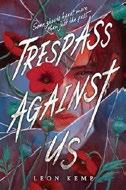
Ghost hunters seek to solve a decades-old mystery in this compelling horror debut. Two years ago, the foursome behind the “Ghost Hawks” YouTube channel—Riley Fox, Evelyn Cho, Colton Pierce, and Ethan Hale—spent the night at a Catholic reform school with the goal of finding out what happened to the five students and one priest who mysteriously disappeared from Saint Dominic Savio’s School for Troubled Youths over winter break in 1982. Though four young YouTubers entered the building to investigate that night, only three left. Two years later, the remaining Ghost Hawks are offered a chance to return to Dominic House with Jordan Jones, the woman behind the popular Netflix ghost-hunting series Spirit Seekers, to film their experience. Though Jordan is offering them monetary compensation, 18-year-old Riley’s primary reason for acquiescing is to figure out what happened to their missing friend, his boyfriend, Ethan. The book’s format, which switches between the events of two years ago and the present day, lends an urgency to the story; readers will likely not want to put it down. Its plot-driven nature, though, leaves little room for character development, other than that of bad boy Colton, who’s been ostracized for selling out his friends to the tabloids. Most characters read white; Evelyn’s name signals Korean heritage, and Jordan is cued Black.
A genuinely creepy ghost story that delves into religious trauma. (Horror. 14-18)
Kirkus Star
I Will Never Leave You
Kennedy, Kara A. | Delacorte (352 pp.)
$19.99 | July 23, 2024 | 9780593707463

Those who love you will always be with you; those who control you will never let you go.
Los Angeles teenager Maya is about to graduate from high school. She and her longtime girlfriend, Alana, set out on a hike to see the superbloom of brilliant wildflowers in Antelope Valley, just like they do every year. Maya, who struggles with anxiety, loves Alana fervently, even though she can be mean and cutting, dismissing Maya’s needs whenever she actually manages to voice them. Showing some real strength, Maya breaks up with Alana as they stand among the flowers—and then, after Alana mocks her, Maya leaves her there without a ride. But back at home, Maya’s anxiety flares—Alana hasn’t reached out to Maya or her own mom; what if something happened to her? Soon, Alana is declared missing, and Maya is anxious that she’ll get blamed for ditching her. In a panic, Maya returns to the lake house where her family used to summer, and where ghosts, both literal and figurative, haunt her. This eerie and captivating debut manifests deep-seated internalized trauma as living paranormal metaphors. The narrative reads like a gothic
romance that acknowledges the intense damage that unhealthy relationships can cause: Maya, who suffers from depression and panic attacks and experiences emotional abuse at Alana’s hands, courageously struggles for the right to live for herself and pursue her own happiness. The teens are both white.
A healing paranormal tale.
(Supernatural. 13-18)
The Loudest Silence
Langford, Sydney | Holiday House (320 pp.) $19.99 | July 30, 2024 | 9780823456246
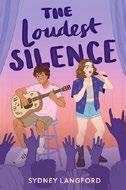
Casey Kowalski, new to Miami from Portland, Oregon, became Deaf-Hard of Hearing several months ago. Casey, who’s white, is adjusting to life between the Hearing and Deaf worlds. She’s determined to make it through junior year without forming any connections as she grieves her identity as a singer and the loss of the friends and boyfriend who dumped her when she lost her hearing. Cuban and Italian American Hayden González-Rossi is expected to follow in the footsteps of his legendary fútbol family, but he dreams of performing on Broadway. The teens’ shared musical passion grows stronger when Casey joins Hayden’s friend group and he becomes her ASL student, creative partner, and closest confidant. The unlikely pair give each other strength to become fully themselves. Langford highlights the social and accessibility issues Casey faces, including auditory fatigue and ableism, alongside Hayden’s realization that he’s struggled for years with generalized anxiety disorder. Unfortunately, many lessons, while vital, are conveyed didactically rather than shown through emotional beats. ASL and simultaneous communication are both described and translated, an effective approach that draws readers into Casey’s experience of language. Her embrace of Deaf identity and culture is a welcome and important touchstone of her
KIRKUS REVIEWS 130 MAY 15, 2024 YOUNG ADULT
journey. The friendship between acerbic, tough, bisexual Casey and soft-hearted, earnest Hayden, who’s asexual and aromantic, is sweetly and unconditionally loving as well as refreshing, given the relative scarcity of portrayals of boy-girl friendships.
A wholesome ode to devoted friendship. (content warning, ASL alphabet, content note, author’s note, resources) (Fiction. 13-18)
Riot Act
Lariviere, Sarah | Knopf (304 pp.) $19.99 | July 16, 2024 | 9780593479957
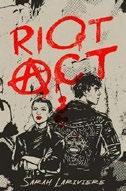
Under the authoritarian government of an alternate 1991, Anti-American Thought is illegal. Max is dead. Trapped inside the thoughts and memories of his friend Gigi, he’s not sure how to move on. Reeling from Max’s death, Gigi and Axl, the third member of their friend group in Champaign, Illinois, aren’t sure what’s left for them during their senior year. TV infomercial personality turned dictator Bud Hill controls the music Americans listen to, the art they consume, and the plays they perform. After the suspicious death of their beloved theater teacher, Ms. Lee, Gigi and the Thespians organize risky underground rehearsals for Shakespeare’s Henry VI. The script is pared down and cut with punk music, inspired by RiotRite, an illicit Defiance zine. Despite her entanglement with longtime-crush Orin, Gigi and Axl’s convincing will-they, won’t-they tension offers the romantic narrative that propels the story. The action culminates in a raucous, high-stakes public performance of Henry VI directed by Gigi. Max narrates the story posthumously, living inside Gigi’s thoughts and providing dark, cutting exposition and plenty of dry, raunchy humor. Secrets, lies, and betrayal fuel this timely commentary on censorship and the defiant power of
art set against the vivid backdrop of ’80s pop-punk music, Riot Grrrl culture, and the early internet. Gigi and Max (who’s bisexual) are cued white, Axl is racially ambiguous, and Ms. Lee is Chinese American. This fast-paced dystopian thriller will get a standing ovation from theater kids and punk rockers alike. (reading list, playlist) (Fiction. 14-18)
Heir, Apparently
McDowell, Kara | Wednesday Books (336 pp.) $24.00 | $14.00 paper | July 9, 2024 9781250873071 | 9781250873095 paper

In this sequel to 2023’s The Prince and the Apocalypse, an 18-year-old American girl tries to return to normal life following the threat of a global apocalypse—and the heartache of a lost first love.
Wren Wheeler isn’t sure if she’s legally married to the soon-to-be king of England. Was their sudden marriage of necessity on a Greek island during what was supposed to be everyone’s last week on Earth really binding? After she returns to Chicago following Comet Week, Wren receives a marriage certificate bearing Crown Prince Theo’s signature and legal name, not the fake name she’d assumed he’d use. Desperate to know the truth—and reunite with the dog she left behind when she walked away from Theo in an act of altruism— Wren, along with best friend Naomi and older sister Brooke, travels to see Theodore Geoffrey Edward George. But, as with their last adventure, nothing goes right for the couple. Plagued by the paparazzi, controlled by the Firm, and concerned about protecting each other, Wren and Theo face numerous obstacles, not least of which are his family and a plane crash into the ocean near a deserted island. This action-packed, fast-paced story can stand alone, but having familiarity with the earlier book will help readers connect more deeply
with the characters. The supporting characters’ witty dialogue balances the leads’ somewhat repetitively conveyed fears. Most characters are cued white. A romantic story with serious elements that will have readers wringing their hands and holding their breath. (Romance. 13-18)
Youth Group
Morris, Jordan | Illus. by Bowen McCurdy | First Second (256 pp.)
$25.99 | $17.99 paper | July 16, 2024 9781250789228 | 9781250789235 paper
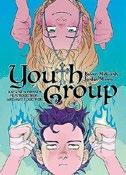
After attending an evangelical Christian church, a girl becomes involved with a group of young exorcists. This graphic novel set in the 1990s follows Kay, a teen who agrees to attend church with her newly divorced mother. Kay’s father makes her feel like she’s his “fourth priority behind work, golf, and hitting on the hostess at Chili’s.” While her mom joins the adults for sermons by the bearded, ponytailed pastor, Kay attends the youth group, where the young leaders talk about avoiding temptation and perform an Ace of Base cover (“I saw the Christ / and it opened up my eyes”). Later, Kay is caught spying on the pastor and youth group leaders, who are attempting to exorcise a demon from a local man in a cabin in the woods. It emerges that Kay’s a blight (someone impervious to demonic possession), making her blood highly desirable to demons, who take her father as bait. Needing allies if they hope to prevail, the evangelicals join forces with young Catholic, Jewish, and Wiccan exorcists. The expressive, delightfully over-the-top illustrations capture the era and enhance the strong pacing. Kay feels some reluctance toward her mother’s church, but all the religions are treated with respect during the communal fight against evil. This work reads as a stand-alone work but would make for a
MAY 15, 2024 131 KIRKUS REVIEWS YOUNG ADULT
great series opener. Main characters read white; the supporting cast is racially diverse.
Full of comedic beats, demon expulsions, and ’90s camp. (Graphic paranormal. 13-18)
The Lost Souls of Benzaiten
Murashige, Kelly | Soho Teen (304 pp.)
$19.99 | July 23, 2024 | 9781641295741

When 17-yearold Machi makes a wish at an abandoned shrine, the last thing she expects is for a god to appear. It’s been a year since Machi stopped talking. No one can make her explain why: not her parents, not the many therapists she’s seen, and definitely not Sunny and Angel, her former friends. When Machi’s latest therapist suggests that she explore someplace new, Japanese American Machi begrudgingly visits a Shinto shrine, where she prays to be transformed into a robot vacuum cleaner. This unusual request catches the attention of Benzaiten, the shrine’s deity who’s a God of Fortune. She reveals herself to Machi but refuses to grant her wish. Instead, Benzaiten asks Machi to give her until Tanabata, the summer Star Festival that’s just five weeks away, to help her appreciate being human and find her voice. A series of magical field trips ensue, during which Benzaiten demonstrates an affinity for the stranded spirits of deceased children. Despite trying to stay aloof, Machi slowly grows attached to the beautiful, charming Benzaiten. But when the god’s affection for an infant spirit turns obsessive, Machi finds herself once more facing her biggest fear: rejection. The story takes a compassionate and introspective approach to emotional trauma in the wake of a codependent friendship. As a narrator, Machi is appealingly wry, expressive, and self-aware. Journal entries interspersed throughout help readers piece together the events that led up to Machi’s silence.
Written with tenderness and vivid emotion. (content warning) (Fabulism. 12-18)
The Midnight Game
Murphy, Cynthia | Delacorte (320 pp.) | $12.99 paper July 2, 2024 | 9780593705568
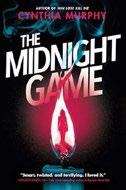
A group of teens who meet through a forum on the website Deddit gather in person to try out an urban legend—with horrifying results. Strangers Ellie, Mei, Reece, Toni, Hugo, and Callum decide to get together at a local Catholic elementary school to play the Midnight Game. This challenge requires them to summon the Midnight Man at 12:00 a.m.—and then survive until 3:33 a.m., using only candles as their source of light. They’re not allowed to sleep, leave the building, or bring weapons. What at first seems easy soon turns into a terrifying ordeal when the group splits up in search of the missing bag containing Mei’s inhaler. It then becomes clear to the six that they may not all make it out alive. The story opens at 3:36 a.m. on the night of the game and maintains a quick pace as it unfolds through message board chats dating back several days to the group’s original meeting and present-day chapters following the suspenseful events of the night. Some fear-stoking elements will make readers wonder what dangers are human and what might be supernatural. The tension and action are compelling, but the characters largely feel flat and underdeveloped. Some diversity is mentioned in passing: Hugo has ADHD, Ellie has diabetes, Callum is cued Black and has a Muslim father, and Mei is Chinese and white.
A creepy, absorbing, plot-driven story. (floor plan, content warning) (Horror. 12-16)
A Magic Fierce and Bright
Nayak, Hemant | Simon & Schuster (384 pp.) $19.99 | July 9, 2024 | 9781665921817

In a future when magic dominates, a young woman’s search for her sister leads her to the frontlines of the war between England and India.
Centuries ago, meteors crashed into Earth, creating infinity wells of magical energy. Seizing the opportunity to expand England’s power and restore its imperial power, the queen first conquered France and then sent her forces to India, igniting a war. Four hundred years on, Adya Sachdev is a technomancer who possesses a rare ability to fix and awaken electrical machines. Her skills allow her to feed her family and pay off their debts to the cruel crime lord Huda, but they also make her a target of the British, who would use her to do their bidding. When Adya is captured by Huda’s men, she finds herself in the company of handsome thief Jagan Dsouza, whom she must work with to escape Huda’s clutches and continue searching for her twin sister, Priya. Priya left home to pursue their dead parents’ ambitions of awakening a machine powerful enough to expel the British from India. Accompanied by an unlikely team of allies, including Mohan (her optimistic brother), Dsouza, maharaja’s daughter Sonya, and a talking motorcycle, Adya navigates a complicated web of political intrigue, faces unimaginable dangers head-on, and discovers the truth of her power and who she could be. This breathless techno-fantasy adventure abounds in terrifying and electrifying thrills; the nonstop action hinders character development but will keep readers riveted. An exhilarating ride. (Fantasy. 13-18)
KIRKUS REVIEWS 132 MAY 15, 2024 YOUNG ADULT
Kirkus Star
Grace Notes: Poems About Families
Nye, Naomi Shihab | Greenwillow Books (352 pp.) | $19.99 May 7, 2024 | 9780062691873
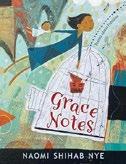
A powerful account of a mother’s life, narrated in verse by award-winner Nye, the former Young People’s Poet Laureate. Nye describes small meaningful moments from major events in the life of her late mother, Miriam Naomi Allwardt Shihab. The opening poem introduces Miriam, explaining how she met Nye’s Palestinian immigrant father in Kansas, marrying him only three months later. Subsequent entries delve into Miriam’s mental health, which was affected by her rigid upbringing (“Her parents were tightly closed German boxes”); Miriam struggled with depression later in life (“You could never tell your friends. / Before I was born, my mama tried to die”). On the subject of her parents’ marital conflict, Nye notes that “children who live in sad houses / hope to fix things.” However, the poems also uphold Miriam’s profoundly positive impact as a mother who passed on her global awareness and empathy, passion for the arts, and respect for diversity: “She never thought she was / the center of the world.” Understanding her mother’s mysteries becomes a quest for Nye to both understand herself and appreciate Miriam more deeply: “Maybe we are all born from our mother’s kilns,” she states in her introduction. Her writing dwells upon the secret mysteries of our lives and the grace it takes to forgive and love others. Through this intimate and compassionate exploration of one woman’s life, readers receive an invitation to contemplate human interconnectedness.
Beautifully written poetry about the butterfly effect of human experience. (index) (Poetry. 13-18)
Ready or Not
Porretta, Andi | Atheneum (336 pp.)
$24.99 | July 2, 2024 | 9781665907033
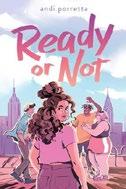
The summer after graduation, high school besties in New York City play an epic game. Cassie Donato and her three best friends have big plans to live it up before setting off on their post–high school lives. But while the London-bound Latine musician Nico, body-positive Asian artist Marcy, and Aaron, who’s Black and headed to Harvard, all seem certain of who they are and where they’re going, Cassie, who reads white, is taking a gap year to work at her family’s diner, and she isn’t so sure what she wants. All she knows is that this is the last chance for their friend group to be together before everything changes. But as the weeks pass, she’s disappointed that the others seem too busy to make the most of this summer. Her solution? A revival of Risky Slips, their favorite childhood game during which players take turns on increasingly risky dares. They have 24 hours to complete them or forfeit. But as the friends compete, the stakes get higher and unspoken tensions rise to the surface, testing their friendships and future. Porretta’s debut is narrated through speech bubbles and color-coded texts, and it captures Generation Z in all their exuberance and acceptance as well as anxiety. Despite a last-minute romantic twist that feels out of step with the work as a whole, the themes of embracing and growing with
change prevail. The attractive, jewel-toned art dynamically conveys the urban setting.
Light and refreshing fare. (Graphic fiction. 15-18)
Return of the Vengeful Queen
Redwine, C.J. | Balzer + Bray/ HarperCollins (400 pp.) | $19.99
April 30, 2024 | 9780062908995
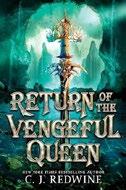
In the aftermath of an invasion, a newly crowned queen must save her kingdom— and her heart—in this follow-up to 2022’s Rise of the Vicious Princess. Raised to rule, Charis understands leverage and how to manage the many factions within her kingdom, but now she’s in exile. The inhuman Rakuuna took over her kingdom, killed her parents, and kidnapped her guard and beloved, Tal, in the process revealing him to be a spy and prince from rival kingdom Montevallo. Charis, accompanied by her cousins, who are also her heirs, must find a weapon that can defeat the Rakuuna, outwit those who wish to see them fail, rally their allies, and accomplish all this with nothing but their wits. Featuring far less romance than the first volume and with much of the excitement relegated to the third act, this duology closer may not please all fans. Charis, whose political acumen and ruthless facade pretty much define her, nearly misses some significant villainous plotting by supposed allies; at key moments her success owes almost as much to chance as any intentional action on her part, other than a final heart-first decision that solves the romantic subplot. The world is racially diverse and largely egalitarian regarding gender roles; despite some subtle potential queer coding of dashing cousin Holland (who tends to steal any scene he’s in), all depicted relationships are heterosexual. Unremarkable. (map) (Fantasy. 13-18)
MAY 15, 2024 133 KIRKUS REVIEWS YOUNG ADULT Intimate and compassionate. GRACE
NOTES

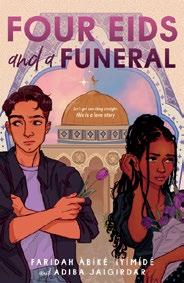
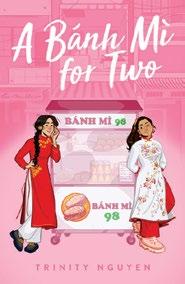
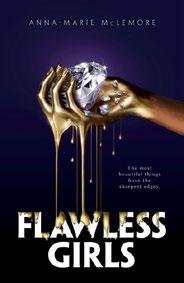
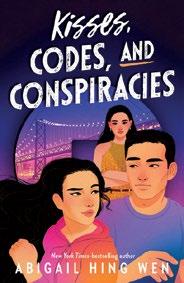






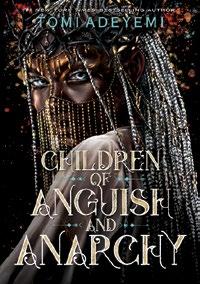

FILL YOUR SUMMER BOOK BAG WITH NEW YOUNG ADULT RELEASES HC 9781250910820 PB 9781250910837 | On Sale 8.20.24 HC 9781250847850 | On Sale 5.28.24 PB 9781250233691 | Available Now HC 9781250883230 | On Sale 8.13.24 HC 9781250754059 PB 9781250754066 | On Sale 8.13.24 Romance That Will Take Your Breath Away Reads to Help Tackle Life’s Biggest Challenges The Series Everyone Will Be Talking About Secrets Abound in These Heart-Pounding Reads HC 9781250890139 | On Sale 6.4.24 HC 9781250816597 | Available Now PB 9781250294623 | Available Now HC 9781250869630 | On Sale 5.28.24 HC 9781250907714 | On Sale 7.23.24 HC 9781250171016 | On Sale 6.25.24 Imprints of Macmillan Children’s Publishing Group


6 Mind-Expanding, Genre-Bending Reads
By Ciera Burch
Robbie Couch
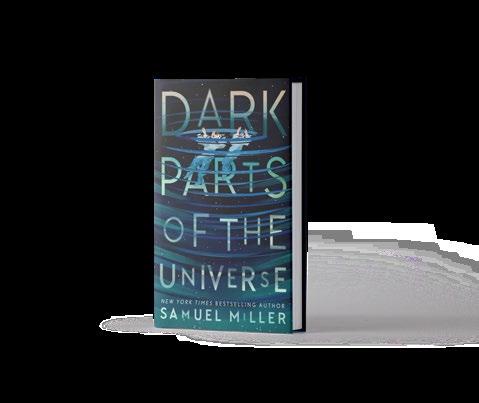 By Samuel Miller
By Samuel Miller
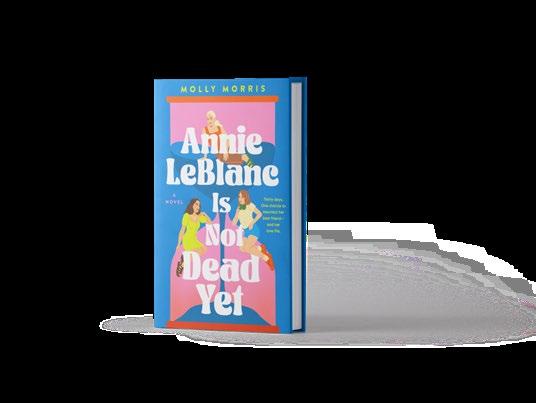
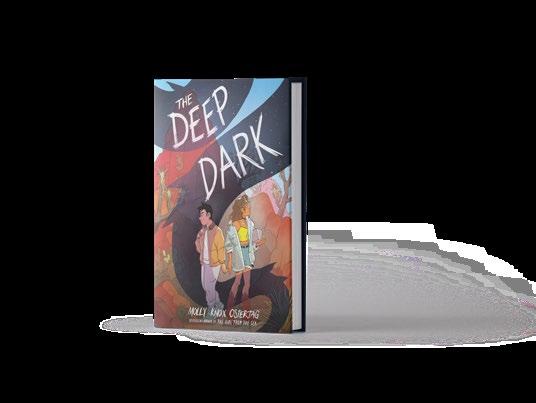


For more booklists, visit Kirkus online. 1 Something Kindred
A moving story about home with a supernatural twist, exploring what happens to those who leave and the ones left behind. 2 Another First Chance By
An emotionally intense exploration of grief combined with creative speculation about the nature of friendship. 3 Dark Parts of the Universe
A multifaceted thriller with a powerful social message. 6 I’ll Be Waiting for You By Mariko Turk Heartfelt and moving, with enjoyable paranormal elements. 6 4 2 3 1 4 Annie LeBlanc Is Not Dead Yet By Molly Morris A sweet story that combines realistic relationships with an intriguing, fantastical premise. 5 The Deep Dark By Molly
Ostertag Well-drawn, deeply realized characters enliven this spellbinding and fantastical queer coming-of-age love story. 5 MAY 15, 2024 135 KIRKUS REVIEWS
Knox
Empathetically examines death, grief, and the afterlife.
THE GHOSTKEEPER
Eighteen Roses
Rogers, Shannon C.F. | Feiwel & Friends (304 pp.) | $20.99 July 30, 2024 | 9781250845733
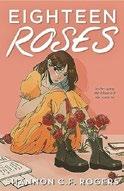
A Filipina American teen in Albuquerque uses humor to navigate life’s challenges. Lucia Cruz loves old movies and baggy clothes and doesn’t care about her appearance. Although she’s turning 18 soon, she wants nothing to do with the Filipino tradition of glitzy, glamorous debutante balls. She’d need 18 friends for a special choreographed dance, but she has only one, Esmé Mares. That is, until Esmé decides they’ve been stagnating and should branch out socially. Then Lucia discovers that her divorced mother has invited everyone in the family—including her lola in the Philippines—to a debut that she’s secretly planning. Although she’s initially outraged, Lucia desperately wants to see Lola. Realizing how much it means to Mom, who’s working two jobs, she ends up trying to plan a perfect debut on a tight budget. Desperate to somehow find 17 friends (in addition to her younger sister) for the ceremony, she joins the stand-up comedy club at school. She’s always loved making Esmé laugh, but now Lucia’s sense of humor might lead to more connections and help her with self-reflection. Rogers’ sophomore novel features rich, deep representation of Filipino experience in the U.S. as well as strong character development, as it follows a loner who finds connections one small, imperfect step at a time. Through her journey of opening up and embracing vulnerability, Lucia, whose father is white, navigates the pressures of
complicated family dynamics and community expectations. Beautiful, relatable, and full of emotion. (Fiction. 14-18)
Queer Cheer: Activities, Advice, and Affirmations for LGBTQ+ Teens
Rosswood, Eric & Jodie Anders Mango (212 pp.) | $22.99 paper May 14, 2024 | 9781684814800
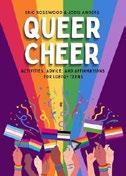
This illustrated guide with a strong emphasis on joy and self-love offers readers a “queer teen survival kit.” Through seven distinct sections—“Identity,” “Helpful Habits,” “Confidence,” “Relationships,” “School,” “Our Community,” and “Success & Future”—Rosswood and Anders present information on a wide variety of topics. The authors open by describing their own genders and sexual identities and offering some personal information about their lives. They also make others’ life stories an integral part of the book’s content: Portions of the text consist of speech bubbles containing brief reflections by queer teens from around the U.S. who represent diversity in sexuality, gender identity, race, religion, and other factors. Teens can go through the work cover to cover or dip into it according to their needs and interests. Each section is formatted similarly, using layouts that resemble a scrapbook or bulletin board. Many of the text-heavy pages feature solid black backgrounds with text boxes in bright, rainbow-colored hues and (mostly) black or white text; some may find the design visually exhausting and difficult to read. The
density of information offered here is better suited to browsing than sustained reading; it reflects a well-meaning and important desire to provide readers with a wealth of options, information, and stories in a compact package.
An empathetic handbook that will support a broad range of readers. (resources) (Nonfiction. 12-18)
A Haunted Girl
Sacks, Ethan & Naomi Sacks | Illus. by Marco
| Colors by Andres Mossa | Image Comics (132 pp.) | $14.99 paper | June 4, 2024 | 9781534397774

A teenage girl suffering from depression and tormented by ghostly visions confronts a looming supernatural threat.
Japanese American Cleo Newman’s severe depression and anxiety make even simple existence hard: She struggles with panic attacks and is plagued by suicidal thoughts. On top of that, she’s been seeing things—terrifying monsters and spirits—and no matter how much progress she makes with her psychiatrist, Dr. Davis, who’s Black, they never seem to leave her alone. At the encouragement of her white adoptive father, Cleo attempts to reintegrate into her prestigious magnet high school in Westchester, New York. But as her visions intensify, her life falls apart further, and she starts to fear she’s truly lost her mind. Meanwhile, her father is desperate to rescue Cleo from her anguish but struggles with how he can help. Cryptic phone calls with a figure from the family’s past in Kagoshima, Japan, about the origins of Cleo’s visions only serve to confuse him further. When her visions breach the physical world, Cleo must draw on every strength to neutralize a world-ending threat. The expressive panel layouts highlight the action sequences, and the full-color illustrations paint the spectrum of emotions from washed-out depression to cold, sharp panic to vivid and triumphant victory.
Lorenzana
KIRKUS REVIEWS 136 MAY 15, 2024 YOUNG ADULT
A stirring fable about fighting and surviving the horrors of depression, both literal and figurative. (content note, cover gallery, psychiatrist’s note, resources) (Graphic paranormal. 14-18)
Kirkus Star
The Ghostkeeper
Taylor, Johanna | Putnam (272 pp.) | $17.99 paper July 23, 2024 | 9780593526668
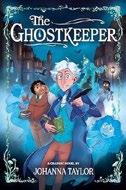
In this debut, an unconventional therapist for ghosts with his own emotional baggage helps wayward spirits find closure and peacefully navigate their way to the afterlife. The residents of Rookwood, who regard ghosts as a nuisance, summon Dorian Leith (who travels with his grandmother’s ghost in tow) to help them with their haunted houses. Possessing ghost-sight, which allows him to see the spirits, he uses therapeutic methods to guide his clients through their issues and heal their rot, a ghostly ailment that manifests from feelings of fear or regret, so they may pass through Death’s Door. By contrast, exorcists use painful, toxic gas to expel ghosts and scoff at Dorian’s methods. But when the frightened ghost of the local gravekeeper’s daughter steals the key to Death’s Door, the ghosts discover they’re trapped in limbo. They turn to Dorian for assistance as their fear fuels rot and chaos erupts in the town. Taylor deftly navigates heavy themes, while offering the hopeful reminder that, “alive or dead, healing takes patience.” A twist puts a fresh spin on the chosen one narrative, emphasizing the importance of rest and boundaries rather than unending sacrifice and offering a love letter to altruists. The dynamic artwork includes humorous touches and shows an atmospheric Victorian world inhabited by racially diverse people and blue-tinted ghosts; Dorian is a youthful,
light-skinned man with blue eyes and a shock of white hair. Powerfully, tenderly, and empathetically examines death, grief, and the afterlife. (content warning, recipe) (Graphic paranormal. 12-18)
Barda
Ukazu, Ngozi | DC (208 pp.) | $16.99 paper June 4, 2024 | 9781779511133
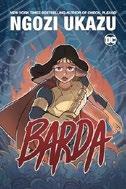
Six young warrior women are led by the brave Barda in this story from the world of DC Comics.
The Furies— sent by Lord Darkseid to find variables to fuel his war against all things light—have been trained to be disposable tools of destruction. They fight under the threat of torture by Granny Goodness, a sadistic elder who celebrates them for their brutality and punishes them for any perceived weaknesses. The Furies reside on the planet Apokolips and carry out missions against their foes on New Genesis, a planet that is the antithesis of everything they know. Barda is the brawniest and most ruthless of the Furies, but when she finds a book lying on the ground during a battle, it changes everything by showing her love’s possibilities, interrupting the book’s repeated refrain, “We do not speak of love on Apokolips.” When Barda is ordered to torture a man who tried to escape the X-Pit, Granny Goodness’ prison, Granny’s cruelty pushes her to see whether love can be more than just a possibility. Although the storyline is simple, and experienced readers may find few surprises, Barda’s vulnerability during her quiet moments creates a fantastic balance between action and introspection. Bursts of blues, greens, and golds flash across the mainly terracotta palette, which highlights the barrenness of Apokolips and sets a striking scene. The Furies all appear to be white, with the exception of Lashina, who’s coded as Black.
A visually arresting account of a Fury’s promising beginning. (Graphic fantasy. 13-18)
unOrdinary Volume 2
uru-chan | HarperAlley (320 pp.)
$27.99 | July 2, 2024
9780358521228 | Series: unOrdinary, 2
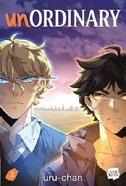
The stakes skyrocket in this thrilling series continuation.
John, the school zero, finds himself growing closer to the boy who’s his polar opposite in their private school’s social hierarchy—but Arlo’s intentions may not be as pure as John’s. While John genuinely wants to befriend him, Arlo might be more interested in pushing John’s buttons in order to see whether he’s really as powerless as he claims. While John ultimately makes an irreversible decision, Seraphina makes her own momentous choice: She’s done being controlled by her family, and her friendship with John motivates her to follow through and persist until she’s free. Though they have an emotional, much-anticipated reunion, going back to school might not be so easy now that Seraphina is being targeted by a mysterious group who pose a serious threat to her life. The higher-ups in the school hierarchy start to suspect that there’s more to the militia group EMBER, who are targeting superheroes, than the press lets on. The complex characters are neither clearly good nor unambiguously evil, and their problems and the dangers they face escalate in this volume as relationships become more strained and complicated, bringing people to their breaking points. The bright, colorful illustrations bring to life this intense story, which features exciting pursuits and even more thrilling fight scenes. The art strongly expresses characters’ emotions, particularly during battles. Another page-turning volume with intriguing character development. (extras) (Graphic adventure. 14-18)
MAY 15, 2024 137 KIRKUS REVIEWS YOUNG ADULT
Riffs on horror conventions with an edgy updated twist.
THE BLONDE DIES FIRST
The Blonde Dies First
Wellington, Joelle | Simon & Schuster (336 pp.) $19.99 | July 30, 2024 | 9781665922456

Devon Harris just wants to bond with her sister and make lasting memories, but a demon keeps getting in the way.
Devon’s “genius” twin sister, Drew, is graduating a year early from her private school and moving on to bigger and better things. Devon is in public school, and she’s feeling all kinds of ways about this upcoming change. To try to establish a lasting connection with Drew before she leaves, Devon plans the Best Summer Ever, including movie nights in the park and a visit to the zoo in their beloved Brooklyn neighborhood. But Devon’s plans are disrupted by an unsettling incident when someone gets out a Ouija board at a party. Soon, the teens are being pursued by a demon that seems to be following horror movie tropes. With a deliberate nod to the classic ’90s self-referential horror film Scream, this book riffs on horror conventions with an edgy updated twist that includes a far more diverse cast of characters than is typical for the genre (the twins are Black). The buildup to the action is a bit slow but does pay off. And, although the side characters are unfortunately more engaging than Devon—whose constant ruminations about her crush, a girl named Yaya, and her complicated relationship with Drew become grating—the Brooklyn setting and the commentary on gentrification and social class add genuine appeal. A fun read offering a fresh take on the horror genre. (Horror. 13-18)
Apple Black Origins: The Spectrum and the Spectre
Williams, Stephanie | Illus. by Odunze Oguguo | Rockport Publishers (208 pp.)
$13.99 paper | June 25, 2024
9780760390023 | Series: Apple Black
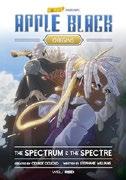
A thrilling fantasy manga series gets a prose reimagining. In the kingdom of Youta on the Eden Continent, 13-year-old Willow Wantmore, a Black girl with vitiligo, dreams of joining the Youta Guild, but her tribe faces discrimination. Her estranged sorcerer father, Uzoh Olaocha, bestowed upon her a coveted and rare Golden Wand named Novajinx that she uses to keep her pale locs tied. Just as Willow achieves entry into the Guild, her life is thrown off course when she unexpectedly finds herself on a quest with Uzoh’s sworn adversary, Gideon Banburi, a Black man with albinism. As Willow unearths hard truths about her family and herself, she must choose what family truly means in hopes of saving herself and her kingdom. Williams’ novelization of Oguguo’s high-octane series is ambitious but ultimately sags under its overstuffed plotting and clunky construction. The magic systems are overly complex and fussy and feature an unrelenting barrage of artifacts, wands, and elixirs that pop up conveniently and arbitrarily. The stiff and contrived prose often tells rather than shows and will likely leave readers feeling that the story was best left in its original graphic novel form. Despite these flaws, Willow’s characterization is well wrought, making her a hero to root for as readers follow her journey of not only coming to terms with her differences but ultimately celebrating
them. Oguguo’s skillful art enhances some pages. Best suited for only the most ardent fans of the series. (cast of characters) (Fantasy. 12-16)
Exes & Foes
Woody, Amanda | Viking (384 pp.) | $12.99 paper | July 23, 2024 | 9780593403143
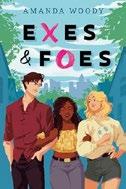
Former friends compete with one another for a new student’s affections. High school seniors Caleb Daniels and Emma Jones were childhood friends, but they stopped talking after eighth grade. Protecting recent transfer Juliet Higgins (who’s queer and coded Black) from a bully lands Caleb in a fight he can’t handle. After Emma jumps in to rescue him, the two, who find Juliet very attractive, enter a competition for her heart: “Whoever she kisses first gets to ask her out.” Vying for Juliet’s attention brings Caleb and Emma (who are both white and bisexual) into frequent contact; as they repeatedly crash the other’s hangouts, their shared history intrudes, and their romantic feelings for each other become impossible to ignore. Caleb’s also struggling to bond with his absentee dad, while Emma is living out of her car after her tense relationship with her mother came to a boiling point. Caleb and Emma are vividly drawn, each with believable quirks, strengths, and weaknesses. The secondary characters, such as Juliet and Caleb’s mom, are also endearing. Because the narration alternates between the leads’ points of view, readers largely get to know Juliet through Caleb’s and Emma’s idealized, somewhat flattening perspectives. The dialogue, which includes a healthy dose of swear words and snark, rings true. While Caleb and Emma’s evolving relationship is the star of the show, friendships and familial relationships also play key roles.
A funny, heartfelt ride with two lovable leads. (content note) (Fiction. 14-18)
KIRKUS REVIEWS 138 MAY 15, 2024 YOUNG ADULT
The Ping-Pong Queen of Chinatown
Yang, Andrew | Quill Tree Books/ HarperCollins (352 pp.) | $19.99 July 16, 2024 | 9780063340411
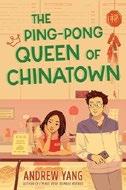
High school junior Felix Ma has a transformative year while making a movie. Chinese American Felix is feeling pressured: According to his college admissions coach, he needs something unique to set himself apart, but he quit piano, and he’s “not even the best Ping-Pong player at the Flushing Community Center.” After Felix and new friend Gaspard Pierre-Duluc become the school film club’s co-presidents (as well as its only members), they decide to make a short film starring senior Cassie Chow. This project will not only help his college resume; it also gives Felix a reason to spend more time with a girl who intrigues him. But their potential friendship becomes complicated when the movie’s plot starts to feel too closely inspired by Cassie, and Felix must confront and reflect on how he moves through the world. He’s struggled since moving from Flushing to the suburbs of Long Island; Cassie is a reminder of the life he could have had, and her confidence forms a contrast to his own feelings of inadequacy. But by romanticizing Cassie’s life, Felix ultimately doesn’t truly see or listen to her. In this intimate narrative, Yang explores perception, consideration, storytelling ethics, and growing pains as Felix tries to make sense of his motivations and their impact. The resolution avoids being unrealistically neat, but the book ends on an optimistic note, and readers will clearly see Felix’s trajectory.
A compelling story of personal growth
and new understanding. (Fiction. 13-18)
Grief in the Fourth Dimension
Yu, Jennifer | Amulet/Abrams (344 pp.)
$19.99 | July 16, 2024 | 9781419767272

In the afterlife, two teenagers connect and search for answers following their deaths. In life at Winterton High School, Kenny Zhou and Caroline Davison hardly interacted, but after each dies unexpectedly, they find themselves together in a mysterious white room with a television screen that shows them the ones they left behind. Kenny, a science whiz whose closest friend was loyal fellow Science Olympian Iris Mutisya, was the son of Chinese immigrant parents who owned a restaurant that’s now on the brink of bankruptcy. Kenny and Iris, who’s Black, stood out in their overwhelmingly white school. Popular Caroline, who’s white, left behind her high-status parents, younger brother, and boyfriend. She doesn’t remember her death and has trouble accepting it. As they watch their loved ones mourn while also forming new connections with one another, Caroline and Kenny build their own tentative bond with each other. But as love, memory, and grief play out in the search for healing, the fragile trust among everyone is tested. Yu addresses complicated, uncomfortable themes around race, privilege, and power, though at times the portrayal of some characters, such as Caroline’s
Love, memory, and grief play out in the search for healing.
mother, feels lacking in nuance. But the conceit is a perennially popular one, the plot is absorbing, and the measured tone is effective.
A quietly moving tale that asks how privilege might affect the search for closure in the wake of tragedy. (Speculative fiction. 14-18)
It’s Only a Game
Yu, Kelsea | Bloomsbury (352 pp.) $19.99 | July 9, 2024 | 9781547613359
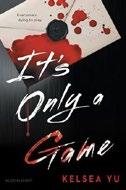
A video game with deadly consequences comes to life.
Darkitect is an online role-playing game that allows players to design their own levels.
Chinese American 15-year-old Marina Chan met Dread, Rock, and Syl while playing. As an intern with Apocalypta Games, the company behind Darkitect, Dread arranges a tour of the Seattle headquarters for his friends. Marina is nervous to meet them offline for the first time—it doesn’t help that she’s reticent about her past and is secretly on the run. But who is she hiding from? Apocalypta CEO Ethan Wainwright leads the tour, and the group discusses the possible identity of Cíx ǐ, a mysterious Darkitect player who’s been having the four friends beta-test her latest levels. But the tour ends on a shocking note when Wainwright is shot, and the friends are plunged into a ruthless game: If they don’t play, they’ll be charged with his murder. Brief, interspersed vignettes beginning 10 years earlier satisfyingly converge as they offer insight into a deranged, torturous relationship between a mother and daughter. More than a by-the-numbers thriller, this layered debut has propulsive momentum with effective cliffhangers and twists threaded throughout. Through a graceful depiction of Marina’s survival on the streets, Yu offers a reminder to be compassionate toward unhoused people. Cleverly designed gameplay blended with strong pacing. (Thriller. 14-18)
MAY 15, 2024 139 KIRKUS REVIEWS YOUNG ADULT
GRIEF IN THE FOURTH DIMENSION
SEEN AND HEARD
Cynthia Erivo Will Narrate Children of Anguish and Anarchy Audiobook
The actor will read the concluding novel of Tomi Adeyemi’s fantasy trilogy.
Cynthia Erivo will lend her voice to the audiobook edition of Tomi Adeyemi’s

Children of Anguish and Anarchy, Macmillan Audio announced in a news release.
Adeyemi’s novel is the final installment in her Legacy of Orïsha trilogy of young adult fantasy books. The series, which follows Zélie Adebola, a teenager trying to restore magic to her home country, began in 2018 with Children of Blood and Bone and continued the following year with Children of Virtue and Vengeance. Both books were No. 1 New York Times
IN THE NEWS
ALA Reveals Most Challenged Books of 2023
Seven of the 10 most challenged books contain LGBTQ+ themes or characters.
The American Library Association released its list of the 10 most challenged books of 2023, with Maia Kobabe’s Gender Queer taking the No. 1 spot for the third consecutive year.
Kobabe’s graphic memoir, about growing up as a nonbinary person, has long been one of the most controversial books in U.S. schools and libraries, drawing frequent challenges and bans. Last December, a complaint about the book in a Massachu -
bestsellers; the former is being adapted into a movie directed by Gina Prince-Bythewood.
In a review of Children of Anguish and Anarchy, a Kirkus critic called the book a “thrilling, climactic storm with an abrupt conclusion.”
Erivo, an actor and a singer, won Tony and Grammy Awards for her role for her role as Celie in the Broadway revival of The Color Purple and its accompanying cast album. She was nominated for Academy Awards for her role as Harriet Tubman in and for performing the song “Stand Up” on the film’s


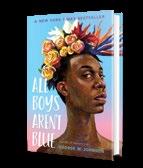
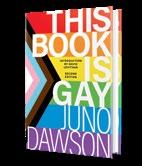

setts town led a police officer to visit a middle school to investigate it.
The second most challenged book of 2023 was George M. Johnson’s young adult memoir All Boys Aren’t Blue ; the book also took the No. 2 spot in 2022. At No. 3 was Juno Dawson’s This Book Is Gay, followed by Stephen Chbosky’s The
soundtrack. In a statement, Erivo said, “I’ve always been a huge fan of the series so it’s an honor to narrate the final book.”
The print and audiobook versions of Children of Anguish and Anarchy are scheduled for release on June 25.—M.S.

Perks of Being a Wallflower and Mike Curato’s Flamer
Seven of the 10 most challenged books contain LGBTQ+ themes or characters, and all of them were challenged for supposed sexual content.
Emily Drabinski, the president of the ALA, said in a statement, “At ALA, we are fighting for the freedom to choose what you want to read. Shining a light on the harmful workings of these pressure groups is one of the actions we must take to protect our right to read.”—M.S.

For more on book bans, visit Kirkus online.
YOUNG ADULT // SEEN AND HEARD KIRKUS REVIEWS 140 MAY 15, 2024
Gilbert Flores/Variety via Getty Images
Cynthia Erivo
For a review of Children of Anguish and Anarchy, visit Kirkus online.


EDITORS’ PICKS:
Ultraviolet by Aida Salazar (Scholastic)
The Believer: A Year in the Fly-Fishing Life by David Coggins (Scribner)
James by Percival Everett (Doubleday)
THANKS TO OUR SPONSORS:
Fixing America by William M. Taggart IV
Being Human. Human Being. by Paul Black
The Twist-a-Roo by Kathleen Doherty, illus. by Kristyna Litten
Fully Booked is produced by Cabel Adkins Audio and Megan Labrise.

Fully Booked
Darcie Little Badger extends the exquisite world of Elatsoe to the 1970s. BY
MEGAN LABRISE
EPISODE 368: DARCIE LITTLE BADGER
On this week’s Fully Booked podcast, Darcie Little Badger discusses Sheine Lende (Levine Querido, April 16), a prequel to her widely acclaimed YA debut, Elatsoe.


Elatsoe is the story of Ellie, a modern-day Lipan Apache teen with supernatural gifts who attempts to solve her cousin’s murder. Sheine Lende takes readers two generations back, to when Ellie’s grandmother, Shane, was a teenager in the 1970s. She and her mother, Lorenza, are a Texas-based volunteer search-and-rescue team who aim to reunite families in need—with the help of their loyal ghost dogs.
Little Badger is an American novelist, short story writer, and Earth scientist whose second novel, A Snake Falls to Earth, received a Nebula Award, Ignyte Award, a Newbery Honor, and a spot on the National Book Awards longlist for young people’s literature. She is a member of the Lipan Apache Tribe of Texas and holds a Ph.D. in oceanography.
Here’s a bit from our starred review of Sheine Lende: “Familiar both with tracking to survive in the wilderness and counting change to survive under capitalism, Shane possesses the resourcefulness of an irresistible protagonist. Her practicality also provides the perfect foil for her extraordinary ability—inherited from her four-great-grandmother—to summon dead creatures, adding texture to her supernatural world. What starts out as Lorenza’s quest to locate two missing children becomes Shane’s journey through Texas, Arkansas, Colorado, and the ghostly land Below to find her mother after she disappears. While faeries and vampires inhabit Shane’s surroundings, the heart of her story is her family’s endurance despite various tragedies, including climate devastation and rich settlers’ betrayal and theft. Frequent flashbacks and

Sheine Lende
Little Badger, Darcie
Levine Querido | 368 pp. | $19.99 April 16, 2024 | 9781646143795
late-breaking perspective changes add narrative complexity, alongside rich depictions of cultural identity, generational trauma, and community care.…A classic fantasy adventure and a balm for any soul weary of oppression.”
Little Badger tells us whether she always planned to expand Elatsoe; the special powers inherent in Shane and Ellie’s matriline (for example, the ability to call the souls of animals from the ghostly land Below); journeying to the groovy 1970s in fiction, and the significant price of long-distance phone calls; how Sheine Lende is both the story of Shane and the story of her family; how when something big happens to one member of a close-knit family, the whole family experiences it; how magic works in Elatsoe and Sheine Lende; how a foreign body or agent introduced to a new environment without care can disrupt the natural balance; transportation, magical and traditional; and the parallel story told in the illustrations by Rovina Cai.
Then editors Mahnaz Dar, Eric Liebetrau, and Laurie Muchnick share their top picks in books for the week.
PODCAST // YOUNG ADULT MAY 15, 2024 141 KIRKUS REVIEWS
Kenny Goldberg Photography
To listen to the episode, visit Kirkus online.
Indie
BLOCKBUSTERS FOR SUMMER READERS
I’ve been conditioned to think that summertime is for blockbuster stories. For poolside reading, I love a thriller with a formidable female hero (or antihero), big stakes, nonstop action, and no Middle Eastern terrorists (skip the cliches, please!). These starred picks—an SF page-turner in which language is a commodity; a fun twist on battling alpha zombies and other foes while roaming a wrecked planet; and a bleak, violent police procedural set in Copenhagen—meet the above criteria and then some.
In a world where everyone speaks the same language thanks to a chip implanted at birth, what happens if that language network crashes? In The Babel Apocalypse by Vyvyan Evans, corporations control every utterance—a profitable business. But when that business fails, the world tips into chaos. The head of Europol’s cybercrime department attempts to investigate the outage’s source but instead unearths a vast, deadly conspiracy. Only one person has the power to save him: “The enigmatic Ebba Black, a linguistics professor, heiress, hacker extraordinaire,
and the world’s last natural speaker of multiple dead or proscribed languages.” The Babel Apocalypse, an energetic series opener, has a lot to like—“deeply considered and meticulously described worldbuilding, an impressively complex storyline with numerous bombshell plot twists, emotionally compelling characters, and weighty themes concerning the power of language and the danger of humankind’s becoming overly dependent on technology,” according to our reviewer. “A perfect fusion of SF, thriller, and mystery— smart speculative fiction at its very best.”
Zombies never get old. In Viktor Csák’s Welcome to the Silent Zone, a teenage girl and a man join together in a relentless battle against hungry, undead creatures who are,
unfortunately, also agile and clever. “Cassius unofficially adopted Abigail when her mother and a group of small children were bitten by ravenous creatures and transformed into vicious, zombielike creatures,” explains our reviewer. “After training her to use automatic weaponry, the fierce duo strategize, shoot, and slash their way through deadly regions, searching for the rumored safe colony sanctuary they hope to call their home.” Abigail and Cassius stick together despite their inevitable differences, as Csák’s grisly adventure winds this way and that before reaching a heart-stopping finale. Our reviewer calls it a “creatively accomplished, atmospheric, and gripping adrenaline rush for monster fans.”
For those who take their Nordic noir extra bleak, Michael Katz Krefeld’s Darkness Calls, translated by Ian Giles, is a must-read. Inspector Cecilie Mars is a
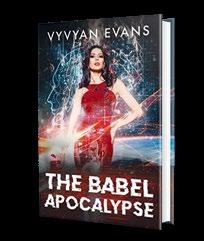


Copenhagen police detective and the target of a deepfake video that frames her for murder. “Lazarus” threatens to release the video unless the inspector follows his orders and kills multiple rapists and murderers who were insufficiently punished by Danish law. The moral conundrum and increasingly twisted murders lead to a showdown between Lazarus and Mars that involves opening old, traumatic wounds. “In Giles’ deft English translation, Krefeld’s tale is an intricate police procedural, taut with intrigue that explodes into terrifying violence, and a gritty depiction of a far-from-quaint Copenhagen characterized by cynical legal bureaucrats, grim concrete high-rises, and menacing street gangs,” raves our reviewer. “Choice Nordic noir featuring a pressurecooker scenario, gripping action, and nerve-wracking psychological tension.”
Chaya Schechner is the president of Kirkus Indie.
 Illustration by Eric Scott Anderson
CHAYA SCHECHNER
Illustration by Eric Scott Anderson
CHAYA SCHECHNER
KIRKUS REVIEWS 142 MAY 15, 2024
EDITOR’S PICK
The love between two teenage boys is threatened by the homophobia of a football-mad town in this plangent romance.
Hopes’ tale follows four friends growing up in an unnamed small town in the North Carolina mountains in the 1940s: gifted athlete Vince Silvano; oddball Tilden Roundtree; everykid narrator Arden Summers; and Glen Copland, a “sissified” St. Louis transplant who stargazes and collects local flora and fauna. The boys roam the sylvan landscape surrounding a 100-foot waterfall on the Wyona River, a gorgeous but treacherous watercourse that is said to kill one every generation. Vince and Glen covertly fall in love as they start Eddie
Rickenbacker High School, where Vince becomes the football team’s star quarterback. Unfortunately, the domineering football coach, who likes to toss around homophobic slurs, is Vince’s dad, and when Coach Silvano discovers the relationship, he quashes it by administering a beatdown to Vince. Tensions come to a head when Glen appears at homecoming dance and kisses Vince on the lips. Hopes’ yarn vividly portrays the fervent bond between young boys— camping out, bantering, double-daring each other into crazy stunts by the falls—with its occasional erotic undertow, and the way it fractures under the pressure of stereotypes and bigotry. His young

The Falls of the Wyona
Hopes, David Brendan | Red Hen Press
203 pp. | $10.61 paper
March 29, 2024 | 9781597098939
characters are full of vigor but also experience poignant, tongue-tied confusion over their warring impulses. Hopes’ prose is intense and evocative, infusing nightmarish scenes with a mordant lyricism: “Something that was less like water than everything else was bobbing on the near side of the river,
snagged on the roots of a clump of willow....The way the Wyona was treating her, it almost looked like she was alive, lifted up by the waters, then settled gently down.” The result is a gripping read with an undercurrent of elegiac yearning.
A darkly vibr ant coming-ofage novel, richly textured and full of passion.
These Titles Earned the Kirkus Star
147 Start. Scale. Exit. Repeat. By
153 Yellow
By
154 The
143 The
of the Wyona By David Brendan Hopes 155
MAY 15, 2024 143 KIRKUS REVIEWS INDIE
Colin C. Campbell
Birds
Karen Green
Sacrifice the Dead Will Make By
Kevin Hincker
Falls
The Malachi Covenant
By
Dee Kelly Jr.
Through Her Lens
Bacon, Melissa Clark | Atmosphere
Press (312 pp.) | $18.99 paper
April 2, 2024 | 9798891321182
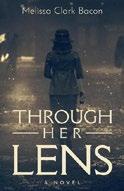
A photographic interpreter in World War II-era England uses her skills to serve her country while hoping for more for herself in Bacon’s debut novel.
It is 1943 at Royal Air Force Base Medmenham near Buckinghamshire, England, where a number of women are employed as photographic interpreters to identify threats from German-occupied areas on the continent. Millicent “Millie” Trayford had been stationed at Coastal Command at RAF Wick, where she identified immediate threats, but, due to her father’s intervention, she’s moved to RAF Medmenham, the Central Intelligence Unit headquarters. She isn’t happy about the transfer, assuming that she’ll be looking for minutiae when she would rather be taking and publishing photographs of wartime women in England. (“She wanted to capture women’s vitality with her camera before their contributions in the war effort were lost to history.”) She arrives at Medmenham, and soon there are problems, both personal and work-related: Her childhood governess, Nanna Clara, dies in a bombing; the Germans may have a secret weapons program at Peenemunde; and then there is her fiance, Elliot, a pilot, who goes missing while flying over France. Meanwhile, the Germans are rumored to be building superbombs that may even fly on their own, and Millie can only hope that the government will take action on the intelligence she and her colleagues gather before more civilians die. Bacon’s novel does a fine job of transporting the reader into a very specific part of wartime Britain’s intelligence-gathering efforts and stays laser focused on that aspect of the war. Weaving in personal stories, including the disappearing fiance, heightens the plausibility of an already well-researched and well-executed story. Millie’s creative spirit and can-do attitude
make her an engaging protagonist. Some sections of the book are dialogue-heavy, and the action can bounce from place to place too quickly, but, overall, the book is held together by its strong characters and narrative.
A unique story about women in WWII that succeeds in making historical events feel personal.
The River of Eternity
Balfour, Bruce | Scribbling
Gargoyle (291 pp.) | $15.99 paper
Jan. 10, 2024 | 9798218346584
Series: The Harem Conspiracy, 1
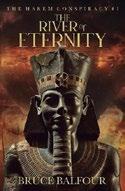
A teenager finds himself on the run when he’s framed for the murder of the pharaoh’s son in the first installment of this ancient Egyptian adventure series. Book 1 of The Harem Conspiracy begins in 1184 B.C.E. in the city of Pi-Ramesses. Ray’s father, Hapu, works as royal scribe to the children of the co-regent of the Egyptian Empire, Pharaoh Ramesses III, so Ray is taught alongside the pharaoh’s children, Amana, Bull, and Pen, and has become close friends with them. The royal house is thrown into chaos when Chief Meryey sends assassins to kill the pharaoh’s sons. After Amana is murdered, Ray and Hapu usher Bull to safety outside the palace walls, hoping to keep his identity secret until the threat is over. But soon Ray is framed for Amana’s murder, and the trio falls into the violent turmoil of the city. Meanwhile, various interwoven storylines unfold, including that of Khait, a noble’s daughter who recently joined the royal harem, and Itennu, a boy who’s forced to serve in the House of Death. While the action arrives a little late, Balfour captures ancient Egypt’s internecine politics without slowing the momentum. He also effectively details the land and people: “Lying awake in the darkness, the boy sensed a hint of moisture—the magic
of water borne on the air—and it worried him. He smelled the great river and the black Nile mud, heavy with the fragrance of jasmine and acacia blossoms.” Some may find the many characters and plot threads overwhelming, but it all connects seamlessly, leaving readers ready for the next installment.
Intricate historical fiction with lots of action, danger, and deceit.
Letters from Texas: 2021-2023
Bills, E.R. | Self (178 pp.) | $16.95 paper Jan. 22, 2024 | 9798218342722

A veteran Texas journalist and political commentator compiles his recent columns and editorials in this excoriating anthology.
“Texas is now a joke,” writes Bills, who laments that the Lone Star State has become “synonymous with shameless cretins, imbeciles, sexist morons, or chauvinist losers.” As a once-proud Texan, the author recalls that it was not so long ago that the state “used to be the exception” in the South, having elected a liberal Democratic governor (Ann Richards) and the nation’s first Black congresswoman from the South (Barbara Jordan). As long ago as 1925, Texas boasted the first state Supreme Court composed entirely of women. But the state that produced national treasures from Willie Nelson and Janis Joplin to Walter Cronkite and Dan Rather is now, per Bills, “a laughingstock,” best known for its reactionary politicians like Ted Cruz, John Cornyn, and Greg Abbott. A seasoned freelance journalist, the author has dedicated much of his recent writing career to speaking out against the direction his state has taken through editorials and columns published in the Fort Worth Weekly and other local periodicals. In this collection of 25 pieces, mostly written since 2021, he tackles Texas’ “despicable and dangerous” political climate, which, he observes, has
KIRKUS REVIEWS 144 MAY 15, 2024 INDIE
led the nation in policies that include government-mandated censorship of libraries, a statewide ban on abortion (even for victims of sexual assault), and a xenophobic immigration policy. As the author of multiple books on Texas history and politics, Bills is a keen observer of state government and supports his well-argued editorials with more than 50 research endnotes. Taken individually, each chapter is consistently thought provoking, providing a concise, effective, and alarming introduction to Texas politics—but the work could have used a more thoughtful structure. While loosely organized by theme, the chapters often jump timelines and topics. Bills’ engaging writing style blends accessibility with learned analysis, and his text is accompanied by full-color photographs, historical paintings, and other images. An appendix featuring the manifesto of El Paso mass shooter Patrick Crusius offers a frightening reflection on the link between rhetorical and physical violence. A compelling, if disjointed, survey of contemporary Texas politics.
Poetic People Power: Three Spoken Word Shows for Social Change
Bracco, Tara | Cornerstone Press (182 pp.) | $24.95 paper Feb. 15, 2024 | 9781960329233

A poet and activist who founded the nonprofit organization Poetic People Power puts poetry performance on the page in this collection of shows.
For Bracco, poetry is how people come to understand the stakes of what’s happening in the world around them. To celebrate the 20th anniversary of the organization she founded, she presents transcriptions of three of its collaborative spoken-word shows, grounded in three great threats to society: climate change, misogyny, and human rights abuses. In an introduction, she shares her own journey as an artist in 1990s New York
A rousing triptych of poetry as a weapon against apathy, ignorance, and inaction.
City, during which her work “didn’t fit neatly into literary or slam poetry,” but she was determined to continue creating. The result was an organization that, like poetry, eludes easy definition. These three works combine poetics, research, history, activism, and theatrical elements; two were produced on Zoom due to pandemic-related precautions. Each includes a collective opening scene with commissioned poets each writing their own works (sometimes collaboratively) on the show’s themes. While not all the poems are compulsively rereadable without the energy of performance, Bracco and her collaborators largely present works whose urgency translates well to the page. Bracco’s scene from “While We Were Sleeping,” about human trafficking, is a good example: “And I re-learn a truth that I already know: / women are always vulnerable. / And the line between safety and danger is so thin / like the slice of the knife mark he left on her neck, / but the damage is longlasting / like the crush of broken bones that ache / for years after.”
A poem by Karla Jackson-Brewer from the show “Can You Hear Me Now?” about her enslaved ancestors is similarly powerful: “She is compelled, / Driven by an urge / So primal and transgressive. / SHE WILL RISK / Slave patrols and whip / To find it.” Art and artists sound alarms on social issues that governments either don’t see or ignore, and this book shows how they might continue to make noise to help change the world.
A rousing triptych of poetry as a weapon against apathy, ignorance, and inaction.

Fortunate Son
Bridgeman, Andrew | Mission Point Press (338 pp.) | Sept. 24, 2024 9781961302549 | 9781961302556 paper
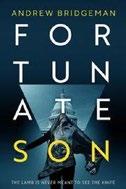
In Bridgeman’s novel, a young man learns a shocking truth about himself and is thrust into a deadly world of political intrigue and a conspiracy that reaches the highest levels of government. Ben Danvers grew up in rural Vermont with cold, overprotective parents, and now he and his girlfriend live together in Boston, where he struggles to make a name for himself at Cambridge Hill Holdings. Then federal investigators tell him that he was a kidnapping victim in his youth, and that he’s actually the son of one of the most powerful people in the world: Vice President–elect Kimberly Hancock, “a descendant of American royalty. Wealthy beyond measure.” Together with two FBI agents—one, a veteran who’s been working Ben’s case for years, and the other, a newly minted operative who’s determined to prove her worth—Ben attempts to learn who’s behind a deadly plot to bring the country to its knees. A mysterious cult has spent the last 20 years carefully orchestrating a terrible plan, led by a man known only as “Father.” Bridgeman has crafted a propulsive, brilliantly executed thriller that will keep readers guessing as the story moves briskly along. Although there are many twists, the narrative is tightly plotted throughout, and even the ancillary characters come across vividly. Bridgeman addresses issues of personal identity and the bonds of familial love in a novel that also includes shootouts and evil cabals, which sets this apart from
MAY 15, 2024 145 KIRKUS REVIEWS INDIE
For more Indie content, visit Kirkus online.
POETIC PEOPLE POWER
A highly engaging, team-oriented approach to management.
SMALLER IS BETTER
other political thrillers. Readers will come to care deeply about the players in this constantly shifting game, and that depth of feeling propels the reader forward to the story’s satisfying, shocking conclusion. Fans of both family dramas and high-octane thrillers are likely to find much to savor here.
An action-packed political thriller that delivers surprising plot turns and affecting characterization.
Smaller Is Better: Using Small Autonomous Teams To Drive the Future of Enterprise
Brim-DeForest, Brady | Micrometer Press (320 pp.) | $29.99 | $24.99 paper | March 12, 2024 | 9798989687305 | 9798989687305 paper
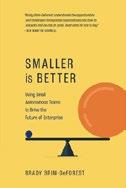
Brim-DeForest offers a new vision for organization at the team level in this business book. The author draws on 15 years of entrepreneurial experience to present his new strategy for solving a range of organizational challenges. At first glance, however, readers may feel that it seems deeply counterintuitive. Instead of dealing with a new problem by throwing lots of personnel at it, Brim-DeForest proposes just the opposite: using small, agile teams that are “self-healing and self-evolving.” These small groups, he says, can be scaled up to meet larger challenges as needed, but their tight cohesion is crucial: “Top-down control becomes unwieldy and slow, and eventually falls apart,” he writes. “In contrast, building a system out of small autonomous units is sustainable.” Brim-DeForest effectively tackles every possible objection such a
system might elicit, including concerns about transparency (noting the importance of embracing “real-time feedback”) and tendencies toward “information control and siloed decision-making” that are natural to all organizations. The key to his small-team vision, he notes, is immediacy; for things to work, everything from communication to decision-making must happen in real time, and the additional bureaucracy that larger groups bring to the process would be lethal. Throughout, Brim-DeForest is a vivid writer who effectively combines extensive experience with broad observations about the nature of entrepreneurship. Many of these insights are intriguing, as when he stresses the key i mportance of being “intellectually honest” with oneself and others about “why the organization exists. If…you can’t articulate a good answer, perhaps it’s time to rethink what the business is responsible for producing.” Moments such as these will have supervisors productively rethinking some of their common practices. A highly engaging, team-oriented approach to management.
The Shift: A Work of Fiction With a Sprinkling of Evolutionary Science
Buffington, Carolyn | Archway Publishing (174 pp.) | $16.99 paper July 17, 2023 | 9781665741965

In this futuristic novel, humans undergo an evolutionary transformation and become egglaying mammals, radically altering society.
It’s 2145, and Homo sapiens have been extinct for 50 years. In their place are Homo ovum, an extraordinary leap in evolution—hyperresilient, disease-resistant humans who hatch from eggs. Through the recorded lectures of Dr. Catherine Taylor, a university anthropology professor in Toronto, the events surrounding this change—referred to as “the Shift”—are explained in the context of evolutionary science and social upheaval over five generations. The first human hatchlings were born in 2020 in the shadow of Covid-19. The lectures are intercut with Taylor’s own notes as well as letters by Beth Lincoln, a single Ohio mother, to her soon-to-be-born daughter, Olivia. First-person prose passages from Beth’s daughter and grandson also document a rapidly changing world, with bigotry and fear forcing many American families to immigrate to Canada. There, they find greater acceptance than in the United States and can evade the social media and dishonest governments that have fostered an “Age of Misinformation.” The hatchlings’ “two females… born for every male” ratio begins to alter family dynamics, leading to the communal raising of children by groups of mothers—a move made even more necessary once second-generation male offspring become dangerously venomous. Buffington’s Homo ovum premise is inspired by the platypus—the odd, egg-laying mammal with “a bill that looks like it belongs to a duck”—offering an unexpected but clever imagining of what humanity’s future could be. The concise lectures explain the intricacies and history of evolutionary study in an approachable way while delivering a look at the last time Homo sapiens shared the planet with other hominids. The SF novel begins in an epistolary fashion but partially (and jarringly) abandons the conceit when it introduces Beth’s daughter and grandson. The narrative is quite dry, particularly the lectures, with inklings of Taylor’s personality hinted at in her notes but absent in her class. Admittedly, this bromidic subtlety has its uses, especially when it comes to the book’s social commentary. The story’s criticism of the poor Covid-19 response and the current “post-truth” landscape is
KIRKUS REVIEWS 146 MAY 15, 2024 INDIE
positively withering, and the draconian rules faced by hatchling mothers skillfully mirror the oppression of a post-Roe U.S.
This relevant and engaging SF tale delivers intriguing lessons while providing powerful social critiques.
Finding Hope: The MindBody Connection and the Importance of Being Seen and Heard
Bystrom, Jocelyn | Stone Tiger Books (367 pp.) | $9.95 paper Oct. 20, 2023 | 9798989250103
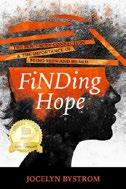
Bystrom tells the story of her seven-year battle against functional neurological disorder.
In this emotional work, the author, a Canadian mental health advocate and school counselor, takes readers through her excruciating struggle. In 2013, when she was in her late 40s, Bystrom was a seasoned, successful educator of gifted children. She began experiencing debilitating seizures and unpredictable bodily jerking that started in her lower back. She vividly describes one seizure, which came on suddenly in 2021 as the author and her husband, Dale, were strolling through a specialty gift shop on Vancouver Island: “My arms and legs thrashed. Each time one movement stopped, and I prayed it would end, another started. I was terrified. My head jerked back and forth…then my head crashed back into the glass countertop of the cashier’s desk.” These traumatizing experiences set Bystrom on a multiyear quest to find the sources of her illness—a journey that included many incorrect diagnoses and ineffective medicinal therapies. The answer, when it finally arrived, was that Bystrom was suffering the effects of a little-understood neuropsychological condition that interferes with the brain’s ability to direct the body’s movements. Because FND has been characterized as a response to childhood
trauma, Bystrom explored her early life and discovered that she’d internalized anxiety and rejection; her alcoholic father, she says, abandoned her when she was just 2 years old, leaving her to be cared for by her overworked and often distant mother. As a result, she says, she never learned how to process difficult emotions and instead stored them in a mind and body that ultimately broke down.
This book is divided into five parts, each covering a “season” in Bystrom’s long journey toward healing and hope. In the seasons of “Trauma” and “Reflection,” she effectively introduces readers to the terrible symptoms of her disease and begins to explore some of the emotional and psychological sources that help to explain their onset. The most difficult section to read, but perhaps the most important one, is “Waiting”; as she was unable to drive, work, or find answers about her condition, Bystrom reveals how family, faith, and a determination to remain hopeful sustained her, even during the very worst of times. The author’s prose is clear and honest throughout, and it bravely invites readers to experience her difficulties in detail, as well as her remarkable resilience. There are parts of the book that might have been omitted or condensed for the sake of a more direct, well-structured story; for example, chapters 18 and 19 could have been combined into one that more clearly and directly explored the dynamic between the author’s FND struggles and her deepening religious faith. That said, the disjointed and sometimes-halting narrative is a chief source of the work’s emotional power and feeling of authenticity. As Bystrom tells of waiting for signs of recovery, readers will feel her anxiety and frustration, and it’s difficult not to feel relief for her when her life starts to improve. An intimate memoir of illness, hope, and self-discovery.

Kirkus Star
Start. Scale. Exit. Repeat.: Serial Entrepreneurs’ Secrets Revealed!
Campbell, Colin C. | Forbes Books (472 pp.) $32.38 | Oct. 3, 2023 | 9781955884969
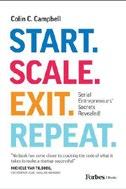
Campbell offers a guide to success for startup owners and entrepreneurs. The author, an entrepreneur who’s successfully started and exited a series of tech-oriented businesses, shares some of his secrets, breaking his process down into the four imperatives that provide his primer’s title. The book’s short chapters cover a variety of topics, including coming up with successful ideas, proving your concept, scaling quickly, knowing when to sell, and starting all over again. The author imparts plenty of firsthand knowledge, supplemented by input from experts from all walks of business life discussing both successes and failures. Some of these experts include Richard Hanbury, who created Sana Health following a near-fatal car accident; John Mullins, whose specialty is customer-funded companies; and Stacy Spikes, one of the co-founders of MoviePass. The chapters are peppered with pithy pullout quotes that actually seem helpful: “Banks aren’t the only organizations with money”; “The cheapest way to fund your business is by running it lean”; “Who you pitch to is as important as what you pitch.” This attention to detail, in addition to the reader-friendly organization of the book, helps to elevate this business guide above the many competing books in the genre. But what really distinguishes the work is Campbell’s expertise and his wonderful ability to write for his audience. The book is a breezy read—Campbell can be blunt, but he’s funny and engaging, too. His entertaining guide is filled with all sorts of useful tidbits and insights; unlike some how-to books, filled with ego-driven anecdotes and not much useful information, this is a must-read for those starting their first business as
MAY 15, 2024 147 KIRKUS REVIEWS INDIE
For more Indie content, visit Kirkus online.
An entertaining
assortment of stories that pay tribute to a bevy of endearing pups.
MADCAP DOGS
well as more seasoned professionals looking for a quick reminder of some of the keys to business success. Useful info and a readable structure make for a top-notch how-to for business owners.
Max in the Capital of Spies: A Max Fredericks Story
Capone Jr., Steve | Self (268 pp.)
$19.99 | $14.99 paper | March 8, 2024 9798989391929 | 9798989391905 paper
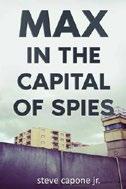
An American teen discovers that having unpredictable time travel as a superpower isn’t all it’s cracked up to be in this clever YA thriller.
One moment, Max Fredericks is standing in Volkspark in Berlin in 2021, searching for his tutor, Brady. The next, Max finds himself in East Berlin during the Cold War in 1965…where he’s in over his head. All he has to go on is a message that Brady sent to him, decades in the future: “Volkspark West. 10:15, where wolf and girl meet.” Part of this message soon makes sense when he sees a girl being forced into a van. After a moment of frozen indecision, he decides he’ll help the girl by mounting a rescue mission. He reaches the logical conclusion that the girl had been abducted by the Stasi, the East German secret police. So, armed only with the research he’d done before his trip, Max marches straight to Stasi headquarters, which he’d recently toured with Brady in 2021. His brilliant plan is to volunteer to be a double agent for East Germany in exchange for allowing himself and the girl, nicknamed Elsa, to leave after he
completes one mission. This being the height of Cold War paranoia, however, little goes the way that Max hopes. The strength of Capone’s work is the thorough research that informs his depiction of 1960s East Berlin and the authenticity it adds to his narrative; he’s set a high bar for historical backdrops in future volumes in this series. Any book with a fantastical element such as time travel requires a healthy suspension of disbelief—Capone’s debut novel requires more than most. Are readers to believe that a temporally displaced 17-year-old American can outfox the entire communist security apparatus largely by himself, with a little help from his allies? Hopefully, Max’s next time-leaping adventure will be slightly more realistic. A neophyte time traveler survives largely on pluck and bluff in this fun but improbable escapade.
Madcap Dogs: Revealing Their True Glory
Chandler, Ron | Self (176 pp.) | $10.99 paper | Jan. 24, 2024 | 9798877311398

Chandler’s YA collection of 14 short stories depicts the interactions between humans and dogs. Although most of the stories collected here have human narrators, the opener, “Ain’t No Fence High Enough,” is narrated by a beautiful young greyhound, Freebie, who escapes from a cruel, abusive owner. Readers meet Freebie as he’s running what will be his last race. As he struggles to move up the line of racing hounds, he feels the pain and exertion: “Now my feet hurt all the
time and my head feels lighter than a butterfly. Maybe my trainer is doping me by putting stuff in my food or in the water I drink.” After he finishes in fourth place, he faces an even more dire fate; so begins an adventure in which the clever greyhound has his chance to shine. Next up is “For Want of a Wag,” a tale about a 15-year-old girl, Wanda, who’s training her sheepdog-collie mix, Ruffian, for an agility competition. During the lead-up to the event, Wanda applies for a summer job with an abrasive manager, Mr. Quibble, who rejects her application because she lacks work experience. But at the agility competition, it’s Wanda who teaches Mr. Quibble a lesson in compassion, both in his relationship to his dog and in his treatment of humans. Several stories later, Freebie narrates a sequel to the opening entry (“Bark Is a 4-Letter Word”), this time recounting two love stories, one between two humans and the other between their respective pups. He and the kind owner who adopted him in the opening story are walking down the street when Freebie meets Peaches, a labradoodle, who immediately steals his heart, inspiring him to stand up to an aggressive Rottweiler in the dog park to show Peaches that he’s not a wimp—but relationship issues between the humans may compromise the canines’ romance. The collection highlights the antics of a wide variety of pooches—playful toy dogs, hunting dogs, and one little Boston terrier who has identity issues. A courageous Dalmatian firehouse dog narrates the anthology’s finale, “Perils of the Flame,” recounting a life-threatening adventure that makes him a town hero.
Chandler’s prose is pleasantly conversational, light on linguistic complexity, and easily accessible for the early range of YA readers. Through a mixture of adventure, humor, and a touch of pathos (as in the case of Harlequin, a depressed 150-pound Great Dane who left home believing his family no longer wanted him), the dogs will win over readers completely; they’re the innocent, albeit frequently rambunctious, conveyers of important lessons in love, loyalty, and compassion. In more than one story, they’re also detectives and lifesavers. In others, their behavior exposes the human frailties and insecurities hiding behind pompous exteriors. “Clandestine
KIRKUS REVIEWS 148 MAY 15, 2024 INDIE
Caper” is entirely about the individual humans on a mission to rescue dogs from a testing laboratory, and although readers don’t get to know the canines directly, the piece shines a bright light on the issue of unethical treatment of laboratory dogs. With intermittent tense moments that keep the pages turning, the stories are upbeat and, happily, do not require an accompanying box of tissues. An entertaining assortment of stories that pay tribute to a bevy of endearing pups.
Night and Its Longings
Cioffari, Philip | Livingston Press (234 pp.) | $18.95 paper March 26, 2024 | 9781604893748

A man searches for his ex-lover after she mysteriously disappears in Cioffari’s mystery novel. In New York City in 1995, a man shows up on mystery writer Jake Garrett’s doorstep. He is Norm Davison, the husband of Jake’s ex-lover, Vera. Vera has disappeared, and Davison thinks Jake can help solve the puzzle. Vera was the great love of Jake’s life, so he agrees to help find her. The clues point in many different directions: Vera’s 9-year-old son died recently, and she fell apart after his death, but she seemed better recently; a perusal of Vera’s journals indicates she was looking to move across the country. Jake talks to Vera’s friends and a police contact in search of more information and attempts to identify what Vera referred to in her journals as the “Blue Flower” (this novel’s Rosebud). There’s some evidence to suggest that Vera used, or at least came into contact with, an illicit drug. Things start to go south as Jake is set up, threatened, and assaulted in the course of his search, which seems to confirm that Vera didn’t simply walk away from her life and that something more sinister is going on. So where is Vera? Nowhere near where Jake
expects, and no one who might know where she is proves trustworthy. The narrative is both fast-paced and contemplative; Jake spends a lot of time mulling over what things mean (“She’s a distant memory. A stranger. Who was I kidding? She was the dead center of my sorrow”) and replays conversations he had with Vera when they were together in his mind. A lot of the novel takes place at night, and the story has a dreamlike quality. Jake constantly questions whether he’s experiencing something real or dreaming—sometimes to a degree that distracts from the central mystery. This is also a very New York novel, in a great way; Jake’s search takes him all over the city as he continues to encounter dead ends and red herrings, keeping readers on their toes.
A tightly wound missing person mystery.
Rodica’s Red Scarf
Clarkson, Kim | Illus. by Heather Leander | WestBow Press (38 pp.)
$28.99 | $14.99 paper | Dec. 29, 2023
9798385013623 | 9798385013609 paper
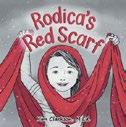
A scarf given as a gift offers a far greater sense of caring and connection than the giver ever imagined in Clarkson’s debut picture book.
In Florida, a knitter named Jo finishes a long red scarf. Even though she labors on it with love, she feels that it’s a humble gift. Preparing her offering, she tosses chocolate kisses in along with the scarf, wraps the box beautifully, and places a bright golden bow on top. After a month of travel, Jo’s box, along with a number of other gifts she’s collected, arrives in Romania. A young girl named Rodica receives Jo’s package. She’s excited to have something beautiful; with her family, she places the bow on a shelf of the house and carefully unwraps the present. The scarf, which Jo had found so humble, becomes an object of great significance for the family. The children wrap it around their hands when they sleep in a shared bed; they
swaddle a sick baby in it as he recovers. The scarf acts as a flag, saving Rodica’s father’s life when a mine collapses, and as a banner to scare away birds from the collective fields. Finally, it becomes Rodica’s pillow, always reminding her of the love someone shared from across the world. (“To this very day, when Rodica lays her head upon the red scarf she thanks God for the someone, somewhere, who made the scarf that showed they cared.”) The story memorably demonstrates how valuable a small-seeming thing might be to the person who receives it. Young readers are likely to have questions about Rodica’s impoverished living conditions, and the book’s opening note offers some context about the communist regime of Romania in the 1980s. By using mainly black-andwhite ink, with only a few colors as accents, Leander’s illustrations emphasize the importance of the shiny bow and the red scarf as bright spots in an otherwise bleak landscape. Some images are repeated with only small details changed, demarcating shifts in the story and the scarf’s importance very effectively. The tale celebrates an attitude of gratitude that children might do well to emulate.
A strong story about how small acts can affect others in a big way.
Conquer Your Fear of Water: A Revolutionary Way To Learn To Swim Without Ever Feeling Afraid
Dash, Melon | Brooklyn Writers Press (346 pp.) | $21.98 paper April 8, 2022 | 9781734097306

Anyone can feel confident swimming in deep water, according to this soulful beginner swimming course. Dash, a swimming coach and founder of the Miracle Swimming School for Adults, addresses grown-ups who would love to swim but feel a primal dread of the water; her guide aims to enable phobic
MAY 15, 2024 149 KIRKUS REVIEWS INDIE
A claustrophobic, tense tale of destructive desire.
THE HANDYMAN
readers to serenely breathe and move about in the pool’s deep end. Many of the book’s 100 steps are focused on psychological preparation; Dash suggests that readers sign a swimming-goals contract with themselves, for example, and write a confessional letter to water itself. (“Write your thoughts, positive or negative, about shallow water, deep water, the drain, whatever. Write until you can write no more.”) The author bases her teachings on a somewhat mystical concept of self-control, a practice of “purposely and habitually keeping yourself, as a spirit, completely in your body”; swimmers in this “1st Circle” will be calm and confident in the pool, while those in the “5th Circle” lose control of their body, panic, and may drown. Much of Dash’s instruction is more down-to-earth: She introduces rudimentary skills in a pressure-free, self-paced manner that allows learners to edge into the shallow end, acclimate while clinging to walls, and build slowly up to the big step of submerging their faces. More advanced lessons cover front floats and back floats, arm motions and hand orientations, and frolics like underwater somersaults and handstands. Dash’s philosophizing can feel abstruse and out of place in a swimming primer: “Your body is energy, your thoughts are energy, sound and light are energy, information is energy, emotion is energy. Your chair is energy. Energy does only two things: it expands and contracts. Everything in the universe expands and contracts.” Fortunately, her swimming instruction itself is much more cogent—detailed, lucid, and eminently practical for helping newbies overcome fundamental but often overlooked barriers. Swimming programs often ignore students’ struggles with basic aquatic competency, and Dash’s book ably fills that gap in a fun and appealing way.
An insightful, warmly reassuring how-to for novice swimmers.
The Handyman
Deering, Maura K. | She Writes Press (280 pp.) | $17.95 paper Sept. 26, 2023 | 9781647425074
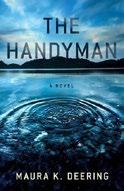
A crew team infatuation turns into a deadly, yearslong obsession in Deering’s latest thriller. Brenna Riley and Dennis Griffin both had controlling fathers, and both end up on the Stanford crew team. Brenna is a coxswain, in charge of steering the boat and commanding the rowers. Dennis is a stroke—a lead rower—and a man known for his intensity and ice-blue eyes. Brenna is drawn to Dennis but also a little afraid of him. After the two hook up following a meet in San Diego, Brenna decides that’s all she needs from him. Dennis, however, continues to harbor feelings that increasingly border on obsession. After graduation, Brenna marries another teammate, while Dennis— unmoored when he fails to make the Olympic rowing team—quits the sport and turns his attention on his old crush. An unplanned visit to Brenna’s new house leads to a second sexual encounter, one in which Brenna’s consent isn’t given. She gives birth to a daughter, Sadie, unsure if the father is Dennis or her husband. Meanwhile, Dennis marries a waitress who looks just like Brenna and takes a job as a handyman for Brenna’s wealthy father. It seems that Dennis may be hellbent on either possessing Brenna or destroying her life, even if it means resorting to murder.
Deering’s understated prose captures both Dennis’s methodical madness and the horror of the other characters as they come to recognize it. Here Brenna finds mementos Dennis has kept in a locked briefcase: “Brenna struggled to control her shaking hand and get the key into the lock. She peered inside and saw an odd collection of items: a tangle of dark hair, a lighter, two framed photos.…She examined the photos and saw that they were from her wedding and the San Diego Crew Classic.” Though some aspects of the novel strain credulity, Deering’s command of the creepiness will keep readers engrossed. A claustrophobic, tense tale of destructive desire.
Morning on the Farm
Ehlenberger, Sabrina & Shalie Miller Illus. by Michelle Carlos | Warren Publishing (24 pp.) | $10.99 paper May 24, 2022 | 9781957723297

A farmyard awakens to the lyrics of an old lullaby in this picture-book retelling of a classic Irish ballad.
One morning, a farm’s animals rise from slumber: First, songbirds sing “Charee, charee, charee!”; next, a rooster crows. Ducks and turkeys quack and gobble, watching a bald eagle snatch a koi from a pond. A farmer wakes next to milk cows: “K-lang, k-lang, k-lang! / The farmer moo-ves the cows along.” The pigs wait for their slop and call “Soo-ey!” In the farmhouse, a mother sings the book’s lullaby to soothe her infant child. Although much of the book feels set in an earlier era, hints of modern technology subtly appear throughout; the final image shows modern children running off to school. Sheet music with the lyrics of the title song’s first stanza bring the book to a close. Ehlenberger and Miller capture the timeless feel of the song in their rhymes, emphasizing the sounds of the birds and animals in a larger typeface, so young readers can chime in during repetition. Carlos’ beautifully
KIRKUS REVIEWS 150 MAY 15, 2024 INDIE
illustrated animals capture the joy of early morning, while the landscapes and plants add a sense of texture. The inclusion of large turkeys and a bald eagle place the Irish tune in the Americas, although the farmer wears an Irish tweed hat.
A sweet book that shows its song’s continued relevance.
Healing Wisdom for Pet Loss: An Animal Lover’s Guide to Grief
Farage-Smith, Anne Marie | She Writes Press (224 pp.) | $17.95 paper June 4, 2024 | 9781647426767

A debut guide focuses on healing after the loss of a beloved pet. Despite the fact that tens of millions of Americans own at least one pet, the reaction of a great many people to the loss of a furry friend is one of dismissal: “It was only a dog” or “Just get another one.” In her book, Farage-Smith expresses gentle frustration with such condescension. “Our society needs to recognize and honor this type of loss,” she writes, “because it can be so devastating and it affects so many people.” The author—an educator, mental health counselor, and founder of the Rochester Center for Pet Grief and Loss—describes the myriad faces of this kind of loss and outlines strategies and mindsets that may help readers get through it. She goes over the long history of the human-pet bond, recounting the many documented physical and psychological benefits of the relationship. Then she moves to the bulk of her book and its strongest sections, in which she dissects different kinds of grief. They range from the “anticipatory” kind that can arise when people are caring for an older or terminally ill pet to the “ambiguous” or “disenfranchised” type, when, for instance, an owner is forced to part ways with an animal companion and must experience grief without death. The
classic stages of that grief are likewise examined, and throughout the guide, Farage-Smith deftly employs the warm, compassionate prose tone that readers enduring this type of loss will most appreciate. Among other things, she strongly advocates journaling to work out the intense feelings involved, but she always positions herself as the audience’s biggest champion. “The process of forgiving yourself can begin by accepting what happened, learning and growing from the experience, and allowing yourself to move forward,” she writes. “Forgiveness is a choice.” Readers who have experienced the trauma of pet loss will deeply appreciate the valuable wisdom in these pages.
A compassionate, practical, and useful series of approaches for dealing with pet loss.
Finding the Grain
Fifer, Linda | Atmosphere Press (316 pp.) | $20.00 paper Dec. 11, 2023 | 9798891321274
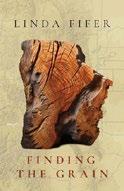
In Fifer’s novel, a veteran of the Afghanistan War embarks on the next chapter in her life while recovering from the death of her husband. Izzy Stark, a former Army soldier, has relocated to the sleepy Colorado town of Whistle Canyon, where her husband, Dave, spent idyllic summer weeks as a child with his uncle. She and Dave were to begin new lives there, but just weeks before he was due to return from Afghanistan, he was killed in a roadside bomb blast. Now Izzy is adrift, suffering the deep psychological scars of combat and overwhelmed by heartache: “The sunsets were reminders that Dave was not coming back. The sunrises brought a fleck of hope that he was. Nothing quite fit. What she wanted slipped through the chilly holes in her.” Meanwhile, Izzy is distraught over the absence of Dave’s wedding ring, which was never
returned to her, and is shocked to find his late uncle’s house in disrepair. Izzy, sensing her late husband’s presence there, vows to restore it in his honor. During trips to the hardware store, she meets a cast of warmhearted townsfolk, including furniture-making shop teacher Ben McCully, who suggests his students help her construct a new roof. Izzy soon learns that Ben is also widowed, and a tight bond of friendship develops. Izzy also finds solace in Bix, Dave’s bomb-sniffing dog, whom she receives through an Army program. While improving the house, Izzy slowly rebuilds herself—and her future. But when an old Army friend arrives with boxes of Dave’s belongings and troubling secrets, Izzy is forced to question everything she once believed about her former life. While readers will be moved by the author’s touching prose, and by the aching humanity Fifer has woven into her skillfully crafted characters, some may wish for deeper subtext in the generally straightforward dialogue. Overall, the novel is an intimate and compassionate examination of the complexities of war, marriage, and loss, and it serves as a touching reminder that one can find one’s home—and one’s heart—in the unlikeliest places.
A beautiful, fragile, and raw story of mourning.
Red Season
Genard, Gary | Cedar & Maitland Press (208 pp.) | $17.99 paper March 12, 2024 | 9781736555644
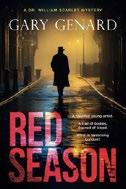
In Genard’s debut thriller, a psychic medical examiner in 19th-century London dives into cases of missing youths and murder. Dr. William Scarlet puts his expertise to work as an assistant chief surgeon for Scotland Yard. Only a select few know of another of his skills—he experiences psychometric visions that he triggers by touching
MAY 15, 2024 151 KIRKUS REVIEWS INDIE
people or an object they’ve handled. He and his friend Django Pierce-Jones, a medium of Romani descent, belong to the newly formed Society for Supernatural and Psychic Research. They catch their very first case after a string of children’s disappearances stumps the authorities. They’ve only just begun to investigate (soliciting spiritual assistance via a seance) when another case falls into the Society’s collective laps: Elizabeth Wilson and her buddingartist fiance, Ambrose Reed, have been made to suffer, both in their relationship and in their physical bodies, and the potential culprit is none other than Reed’s late first wife. (“Do you think it’s possible, Julius, for someone to exert an influence from beyond the grave?”) Genard effectively grounds this mystery in its real-life environment, name-checking such familiar locations as Notting Hill and Hyde Park. His narrative delivers indelible set pieces, from Scarlet’s bizarre, unsettling dream to a particularly chilling autopsy. This book, intended as a series opener, focuses on Scarlet and Django; most of the other Society members share a single scene. The two friends easily carry the story as they blend their paranormal abilities with more traditional sleuthing, including the 19th-century version of a background check. While their novel methods of investigation net relatively few clues and culminate in a revelation that won’t surprise many readers, that certainly doesn’t dampen the polished characterizations of the romantically conflicted Reed, the unorthodox gumshoes, and one character who grows progressively creepier as the story continues. A top-notch cast and a sublimely rendered historical setting elevate this supernatural mystery.
Communicate With Courage: Taking Risks To Overcome the Four Hidden Challenges
Gladieux, Michelle D. | Berrett-Koehler Publishers (176 pp.) | $16.26 paper
Nov. 1, 2022 | 9781523003129

Consultant, coach, and speaker Gladieux offers a series of exercises and concepts designed to improve communication skills.
The author writes in the opening pages of this brief book that she intends it to be a “bravery manual”—one that will instruct readers on how to embrace risk in a wide array of circumstances and turn it to their advantage. She draws on her decades of professional experience as a communications specialist and an executive coach as she puts forward the concept of “brave communication.” This approach involves confronting what she calls the four “hidden challenges” that one encounters in personal and professional dialogues, which include “Hiding From Risk,” “Defining To Be Right,” “Rationalizing the Negative,” and “Settling for ‘Good Enough.’” She expands on the nature of each idea in dedicated chapters. She also explores what she calls “Pro Moves,” or ways “to send or receive messages more deftly than the average bear.” Such moves include such practical tips as “Don’t wait for someone else to celebrate you— reward yourself” as you strive to meet new communication challenges. Each chapter includes an “Exercise” that’s designed to assist readers in implementing a specific type of risk-taking communication; one suggests that readers “ask a few

For more Indie content, visit Kirkus online.
open-ended questions to someone you perceive as different from you….This exercise requires courage to admit that you’ve got a limited perspective on many things in life.”
This combination of straight talk and personal challenges runs through the whole of Gladieux’s book. She not only champions aspects of direct communication but also practices them in the text; she frequently presents hard lessons she’s learned while facing her own limitations before launching into discussions of how readers may overcome the same obstacles. Readers are also likely to find her blunt assessments of the importance of her subject to be appealing throughout: “I’ve never stood at a memorial service and heard anyone fondly recall how the departed was great at going along to get along and managed to never make any waves,” she notes at one point. She’s refreshingly plainspoken about the inevitably uncomfortable elements of any important conversation, whether one is speaking with a colleague or with a family member, and she consistently peppers her broad discussions with small nuggets of practical advice to help readers find value in difficult talks. Her tips include recommendations to avoid using the phrases “you always” or “you never,” which are inherently confrontational and frequently inaccurate, and to “ask others for changes in behavior, not changes in their often long-held beliefs.” Gladieux skillfully works in her own stories of coaching clients, and she also offers inspiration from historical figures: “To call forth courage,” she writes at one such point, “I often think of how aviation pioneer Amelia Earhart framed it: ‘Decide whether or not the goal is worth the risks involved. If it is, stop worrying.’” Readers who’ve worried about tough dialogues of any kind will find many moments of useful wisdom here.
A straightforward and compassionate guide to engaging in more effective conversation.
COMMUNICATE WITH COURAGE
KIRKUS REVIEWS 152 MAY 15, 2024 INDIE
A straightforward and compassionate guide to engaging in more effective conversation.
The Ghost in the Garden
Goldenberg, Alisse Lee | Crimson Dragon Publishing (196 pp.) | $14.99 paper March 18, 2024 | 9781944644451
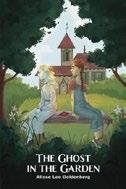
In Lee’s middle-grade ghost story, a young girl is threatened by a dangerous spirit. When Sophie moves during summer vacation from her beloved big-city Calgary in Canada’s Alberta province to small-town Stratford in Ontario, she dreads the “social doom” of starting sixth grade in a school where she will be both the new kid and the daughter of the new guidance counselor, her dad. Yet she can’t help but like the 19th-century house her parents bought, with its intriguing, overgrown garden and a turret bedroom she’s claimed for her own. But who is Tabitha, the girl in the garden, whose hands are so cold and who disappears with ninja stealth when anyone but Sophie is near? And why does the closed door to Sophie’s bedroom closet open at night to a darkness that “felt like its own living, breathing entity,” plunging Sophie into waking nightmares? A finger, “old and gnarled with age,” brushing her cheek is only her first disturbing contact with a malevolent spirit. An atmosphere of escalating unease ramps up the chills in this portrayal of an 11-year-old girl in ghostly danger. Suspense and scares are expertly balanced with Sophie’s empathy for Tabitha and her well-drawn camaraderie with Fitz, a boy her age who becomes a supportive friend. Less successful is the depiction of Sophie’s parents’ belated, casual, even obtuse reactions to unsettling occurrences. (Oblivious when Fritz installs a sturdy lock on the closet door, Sophie’s science-minded dad insists that a trapped possum must have caused the dramatic damage that follows.) In the end, with help from Fitz, a history teacher who “believes all sorts of strange things,” and a
performance of Hamlet, Sophie pieces together what is happening and risks her life to confront the threatening spirit. Cryptic mentions of a mysterious gate in town and the 100-year-old ruins of a mill may signal more adventures for Sophie and Fitz to come.
A resourceful heroine shines in a shivery treat for young fans of paranormal fiction.
Kirkus Star
Yellow Birds
Green, Karen | re:books (170 pp.) | $22.99 paper
March 5, 2024 | 9781998206148
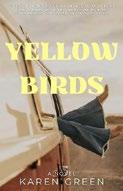
A young Canadian woman following a touring rock band in the mid-1990s finds acceptance, love, heartache, and, ultimately, herself in Green’s novel.
Kait is one of the self-proclaimed Yellow Birds, fans who track their favorite band, Open Road, from city to city. (New to the Birds and their hippie lifestyle, she proudly spells her newly chosen name with an i.) Kait initially follows Open Road with friends, but they go home after a few days, and she continues on with some newly met Birds on the band’s West Coast tour, a thousand miles from her home. One night in Eugene, Oregon, while smoking a communal joint, she meets the “spectacularly hot” Horizon Evans. They become a couple, and she loves sitting in “the girlfriend seat” next to him in his car. “Every new discovery we made about each other seemed like one note following another, building towards a melody that became the prettiest song I ever heard,” she observes. They share their secrets—how Kait got the long scar on her arm, the fact that her mom is a hoarder, the story of Horizon’s last girlfriend’s descent into drug use—but a secret they learn together is life altering for them both. Green expertly captures the mood and spirit of a traveling community who “relied on itself, and the people
within the community, for everything.”
Fans of Taylor Jenkins Reid’s Daisy Jones & the Six will eagerly devour this account of love, sex, emotional intimacy, and music. Green’s pacing is good, and her descriptions are vivid. But it’s her insights that can be truly delicious, such as when she describes the perfect spot for a person to place their hand on another’s back: “In the small of your back—when a hand is there, it means there is affection, familiarity. You can judge a relationship by noticing the very simple act of where one person’s hand rests on another person’s back.”
A long, strange trip, beautifully told.
Kill Well
Guenette, David R. | CMTI Publishing (383 pp.) $16.99 paper | Aug. 8, 2023 | 9798988505501 Series: The Steep Climes Quartet, 1

Murder is another dire effect of climate change in Guenette’s labyrinthine thriller. This first installment of the author’s Steep Climes series envisions a near future in which catastrophic heat, droughts, and floods are fraying society, hobbling the economy, and nurturing deadly conspiracies. The novel opens with California climate activist Cyn Wainwright on her way to a meeting to persuade an investment group not to fund an oil pipeline. She witnesses her boss and lover, Joe, get shot to death by a man who looks like he’s wearing a San Bernardino County sheriff’s deputy uniform. Surmising that she was meant to be murdered as well, and fearing that all the cops are corrupt, Cyn flees east by Greyhound bus to Las Vegas, which is overshadowed by smoke from massive wildfires, and then to Chicago, which is suffering blackouts during a searing heat wave. She finally boards a Boston-bound train, where she is menaced by a squirrelly, gun-toting creep whom she dubs “Rat Face.” Cyn is rescued by attractive college graduate Jimmy Caine. Jimmy and Cyn take shelter with Jimmy’s dad, Davin, a
MAY 15, 2024 153 KIRKUS REVIEWS INDIE
digital-publishing consultant and wannabe sculptor living in a farmhouse in the Berkshire Mountains of Massachusetts, where he spends much time bemoaning the rising cost of living stemming from climate change, including heavy rains that damaged his Airbnb unit. Omnipresent weather upheavals give Guenette’s yarn a haunting, apocalyptic air, but the long-winded discussions about climate change (“fossil fuel interests have far too long been pushing for delays, and then there’s the needlessly slow progress of some of the biggest renewable energy projects”) sometimes bog the narrative down. Fortunately, the novel’s thriller elements are first-rate, featuring deliciously unsavory lowlifes and intricate procedural details written in punchy prose. (“The client wants it to look like the target killed herself, so he’ll have to remove the silencer after he shoots her nice and up close, rub the end of the barrel on her shooting hand for the nitrates trace, leave the gun.”) Even global-warming deniers will enjoy the resulting page-turner.
Despite overdone soapboxing, vivid characters and hard-boiled writing make this an entertaining suspenser.
Kirkus Star
The Sacrifice the Dead Will Make: The Book of Taste
Hincker, Kevin | Self (324 pp.) | $13.91 paper | Aug. 14, 2023 | 9798987630198
Series: The History of Light, 4
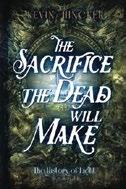
In the fourth and penultimate installment of Hincker’s History of Light urban fantasy saga, an endearing, mentally unstable artist confronts the end of the world.
Living in Skysill Beach—a tourist trap/ artists’ colony on the Southern California coast—is becoming increasingly problematic for former painter Asher Gale, who has a drinking problem, experiences strange seizures, and sees
ghosts wherever he goes. As bizarre crimes plague the town—burglaries, assaults, murders—a gang of Brazilian thugs are searching for Gale, the police have identified him as a possible suspect, and his love interest, Caroline, is nowhere to be found. Gale knows that something very bad is going to happen within a matter of months—and it’s all somehow related to Aeternus, a mythical eternal ghost, who apparently wants to lift a curse and remake the world. Gale, who can exist in the physical world (“flesh me”) or the spiritual plane (“ghost me”), is slowly putting together the pieces of Aeternus’ byzantine plot, but when a series of earthquakes devastates the area, he realizes—too late—that the end of time has begun. Fans of this impressively unique series will rejoice as this new installment takes the storyline into overdrive by radically increasing the pacing, action sequences, and bombshell plot twists. Revelations abound as Hincker reveals deep insights in Gale’s parents’ backstories, Caroline’s past, and the mythology surrounding the Undying Land, a lost world “shared equally by people and ghosts.” Brilliant worldbuilding and insightful character development enhance this fresh take on urban fantasy. Hincker’s style is fluid, focused, and powered by richly descriptive writing that fully immerses readers in the action: “My mouth felt like the inside of a blood sandwich.”
Asher’s relationship with Caroline aptly describes this wildly original narrative: “violent, magnetic, orgasmic.”
Propulsive action, an unforgettable lead, and all-consuming storytelling.
Tiger Cate
Jackson, B.E. | Self (374 pp.) | $13.95 paper Dec. 23, 2023 | 9798988298014
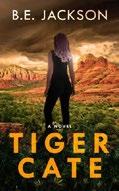
In Jackson’s novel, a struggling artist, upon learning her estranged sister is missing, returns to her childhood home and uncovers long-buried secrets.
In 2019, 35-year-old Cate
Finley has a toughness that’s led her friend Levi Saaga to nickname her “Tiger Cate.” She needs a wild cat’s strength because her life presents significant challenges. She lives in a 1978 camper truck, which she calls “Max,” on the streets of Los Angeles. She paints murals on the sides of buildings; it’s sometimes dangerous work that results in skimpy paychecks. Cate still grieves her parents, who died in a plane crash, and she left the Arizona horse ranch of her childhood on bad terms with her 50-year-old sister, Margaret. Cate’s son was taken away by his wealthy father, a physically abusive man. The one bright spot is her friend Levi, an apparently unhoused IT technician working to bring his mom to L.A. from Samoa. When Cate receives mysterious texts about her sister’s disappearance, she journeys back home to Arizona, where the ranch her sister ran is now controlled by Estelle Parker, a stranger claiming to be a cousin. The newcomer has a mysterious hold over the ranch’s employees and reveals a plan to sell the land to developers. Jackson keeps excitement levels high right from the start; in the opening pages, Cate dangles from scaffolding 100 feet above the ground before the story flashes back. The steady drip of revelations about Margaret, Cate’s parents, Estelle, Levi, and others makes for enough material to power an entire soap opera season. However, Jackson effectively keeps the story from being melodramatic with fast pacing and well-developed characters. The author strategically spaces out surprises throughout the book and balances them with quieter scenes of interiority, such as Cate painting. The characters are mostly flawed but likable, and even the worst villains are given context for their actions. A jolting but thoughtful drama.

For more Indie content, visit Kirkus online.
KIRKUS REVIEWS 154 MAY 15, 2024 INDIE
A riveting story with compelling characters—catnip for thriller fans.
THE MALACHI COVENANT
The Malachi Covenant
Kelly Jr., Dee | Forefront Books (432 pp.)
$26.00 | April 23, 2024 | 9781637632550
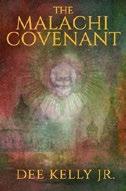
A stolen religious relic drives the action in Kelly’s globetrotting thriller. Biblical archaeologist Maggie Shepherd leads a team in Bari, Italy, to extract a religious icon depicting St. Nicholas that the pope hopes to give to the head of the Eastern Orthodox Church in Moscow. But the relic is purloined after its extraction by a man named Malachi Popov for the Russian mob, and soon after that, it’s stolen again. This leads to the unlikely pairing of Shepherd and Popov, who, after some soul-searching and observing what he believes to be the power of the relic, is determined to set things right. The story takes them to Moscow, the Vatican, and elsewhere around Italy as they work to unravel the secrets of the relic itself, determine who took it (and why), and try to find it in time for the pope’s visit to Moscow. Along the way, Shepherd and Popov must contend with the highest echelons of the Catholic Church and Russian mob to recover the relic while coming to terms with their own personal and religious issues. (Shepherd believes their partnership is preordained, as readers learn when Popov disappears and she searches for him: “She believed God had brought the two of them together to find answers, and they needed one another to finish their work.”) The text extends to more than 400 pages, but the narrative moves swiftly, a testament to
Kelly’s storytelling abilities. The author excels at creating compelling personalities, not only for the main characters such as Shepherd and Popov, but also for the colorful supporting characters—no one seems superfluous. The standout is Shepherd, who is flawed, fascinating, and ultimately heroic; she is certainly worthy of further literary adventures. Reminiscent of Dan Brown’s work but with a tone and momentum all its own, Kelly’s yarn will delight those looking for an exciting read.
A riveting story with compelling characters—catnip for thriller fans.
A Place To Pause: A Lowestoft Chronicle Anthology
Litchfield, Nicholas | Lowestoft Chronicle Press (250 pp.) | $17.95 paper March 30, 2024 | 9781732332836
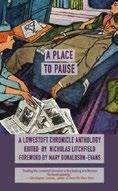
Editor Litchfield presents a collection of work from the literary magazine Lowestoft Chronicle, loosely centered on “humorous writing with an emphasis on travel.”
The latest in a series presents 32 pieces with settings that range from Africa to Asia to North America, with many stops along the way. The collection is evenly split between poetry, fiction, and creative nonfiction, with three interviews with authors added for background. Outside of the table of contents, the book makes no effort to distinguish when a piece is fiction or not, although with the poems this is generally self-evident, as with Mark Jacobs’ quasi-dystopian story “After the Meltdown, On the Hunt” or the slight surrealism of Mary Donaldson-Evans’
“Bulkhead Seat.” (Both authors receive in-depth Lowestoft Chronicle interviews.) In other cases, readers may find themselves having difficulty suspending disbelief, as when traveling along the knife’s edge between absurdity and danger in Jeff Alphin’s nonfiction piece “Family Circus,” about a bizarre lottery-commercial shoot. Still, with all the blurring of lines, this collection delivers a certain uniformity in tone; some readers might have preferred an earthier, less erudite approach to the material. Still, despite the stated preference for humorous writing, readers will find that not every tale falls cleanly into that category. For example, interview subject Robert Wexelblatt’s fiction piece “Lost City” leaves little room for laughter. The story, which starts as a chronicle of former college buddies seeking a “vacation adventure to take us away from our humdrum lives,” involves a trip along a minor trade route in Central Asia; along the way, the story takes an intense detour into a haunting chapter of regional history. Similarly, the authors of stories such as “Singapura” use tales of human foibles and flaws to venture into shadowy, if not pitch-dark, places. Creative variations on a theme that often makes for vibrant reading.
Sapiens Reinvented: Saving the Species From a Deadly Evolutionary Flaw
Loehr, Jim | Kipcart Studio (172 pp.)
$29.28 | $16.95 paper | Dec. 1, 2023 9781944927158 | 9781944927134 paper

A psychologist offers a new vision for humanity’s future by exploring the scientific foundations of our violent past. While the “daily barrage of disheartening news” may seem like a 21st-century phenomenon, Loehr emphasizes its continuity within humanity’s long history of violence and hate. In this exposé of “the darker aspects of human nature,” he describes how war, genocide, prejudice, and corruption are
Kirkus Star
MAY 15, 2024 155 KIRKUS REVIEWS INDIE
embedded in the fundamental psychology of Homo sapiens. Claiming that the book’s exploration of the human mind will “shake the very core of your beliefs,” the author begins with the central evolutionary “flaw” of the human brain: its coded prioritization of self-preservation and the perpetuation of its progeny. While these concepts, ingrained in human DNA, have led to our dominance of the planet, they’ve also fostered hostility among humans as the species self-divided along emerging tribal and social identities. The book’s second part explores the consequences of these psychological traits, convincingly tracing them to humanity’s long history of war, genocide, and political corruption. The third part emphasizes the “Tug-ofWar Between Altruism and Inhumanity,” noting humanity’s paradoxical “boundless capacity for goodness” and our simultaneous propensity toward violence. A particularly compelling chapter in this section explores the evolutionary history of morality. Loehr posits that, far from being an objective reality (as many religions claim), morality—when approached psychologically—is revealed to be a fundamentally malleable and subjective concept. As such, the brain often serves as humanity’s worst “enabler” by providing internal rationales that justify horrid acts of violence. The book’s fourth part shifts the focus from a pessimistic assessment of humans to propose ways that we can use modern neuroscience and psychology to create a “New Paradigm for Change.” Just as countless feral animal species have been domesticated in ways that reduce their natural instincts toward aggression, the author states, so too can humans “self-domesticate” and suppress their inborn tendencies. The book also includes a 20-week training program designed for individuals, teachers, coaches, and other vested parties to harness their knowledge of evolutionary biology and psychology to create a better future.
The author of 19 books (and the co-author of the 2005 national bestseller The Power of Full Engagement) and the co-founder of the Human Performance Institute, Loehr does a solid job of balancing his scientific overview with practical steps readers can take to apply the book’s content to their own lives. The main text is accompanied by a wealth of
reflective questions designed for individual meditation or group discussion. The author draws upon a wealth of scholarly sources (the book features over 100 references) in crafting this well-researched, interdisciplinary work. The book’s impressive research is balanced by an engaging narrative that welcomes nonspecialists with jargon-free analysis. This emphasis on accessibility is reflected in the work’s efficiency (the book comes in at just under 165 total pages) and in its inclusion of ample charts, photographs, AI-generated images, and other visual elements. While cynical readers may remain skeptical of humanity’s ability to evolve, given our tarnished history, the book nevertheless makes a poignant call for the “urgency to act and instigate change on a global scale.”
A well-researched, absorbing exploration of the darkest corners of the human mind.
Speaking for the Earth
Meier, John | Meier Publishing (111 pp.) | July 4, 2022

A republication of an early environmentalist tract, written for the first Earth Day in 1970.
In his introduction, financier and consultant Meier lays out his bona fides as “assistant to one of the world’s greatest and most conscientious industrialists, Howard Hughes.” Through his work, Meier encountered numerous instances of environmental degradation and—inspired by earlier whistleblowers and polemicists, such as Rachel Carson and Seymour Hersh—decided to document his findings. Many of the material will be familiar to readers acquainted with environmental writings from the period; the book includes cries against the use of DDT and dismay over the rise of smog in major cities; pollution is described as a toxic menace, with Lake Erie receiving particular attention as a site “littered with dead fish and rotting refuse, and the dark waters contain lethal doses of industrial poisons and noxious bacteria.”
Meier similarly describes the “great rivers” of the United States as “open sewers” for industrial waste. Although some sections are only interesting from a historical perspective, many remain upsettingly relevant, including those that address the need to eliminate coal mining and coal usage, the byproducts of nuclear reactors, and the growing power of lobbyists who obstruct real legislative change. Particularly prescient is the tract’s then-early call for efficient electric vehicles and electric-powered mass transit systems. Although the language sometimes aims for shock value (“The automobile is America’s leading menace. It disfigures the landscape. It contaminates the air. It kills people, plants and animals”), each chapter concludes with thoughtful, researched solutions, and some readers may despair at how few of them have been undertaken. Reflecting on how society addressed environmental challenges more than a half century ago is also engaging and instructive. The book’s enduring relevance points to the continued importance of its message, and the author’s urgently articulated desire to act will still register with new readers. A historical document that remains a powerful call to action.
You’re Gone
Morton, J.S. | Dystopic Publishing (282 pp.) $12.62 paper | Nov. 9, 2022 | 9781399940894
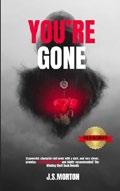
In Morton’s new thriller, a self-proclaimed “exceptional” murderer, who’s on break from his profession following the death of his spouse, decides it’s time to get back to work.
The story begins eight months after British serial killer Arthur Norman’s wife of 12 years, Melissa, died. When his wife was alive, Arthur killed almost 100 people—all deserving of death, he explains. Although Melissa didn’t take part in the killings, she understood what her husband was up to. She was “a razor-sharp lawyer,” Arthur’s narration notes. “She’d
KIRKUS REVIEWS 156 MAY 15, 2024 INDIE
put many a dark soul away, and when she couldn’t, she helped her husband get rid of the rest.” Now an obscenely rich 35-yearold widower (“Melissa left me a lot, like, a lot, a lot”), Arthur feels adrift, not up to doing anything—even committing murder. To work up his appetite for killing, he targets Jarrod Walker, a neighborhood cat-killer. Jarrod dismembers felines in his house, and Arthur decides to do the same to him. Midway through his murderous mission, Jarrod’s girlfriend comes home and starts screaming; Arthur has barely finished subduing her before his best friend Abdul calls, offering a dinner invitation. Arthur then juggles a double murder and dinner plans, turning a grisly scene somewhat comic; indeed, a dark sense of humor permeates the book. At another point, Arthur has sex with Ophelia Christos, one of Melissa’s former clients. With Ophelia, Arthur feels peace, not his usual “white-hot, violent rage”; then he learns something about Melissa’s death that storms through him “like a tornado.” One can easily make comparisons between Arthur and infamous serial killer Ted Bundy; the character also resembles the title figure of the Showtime series Dexter in key ways. Aside from a section showcasing Arthur’s excessive self-pity at the beginning, the book has good pacing, and its worthy ending leaves open the possibility of a sequel. The book even almost succeeds in generating a feeling of pity for Arthur, thanks to his sweet memories of his late wife, and his sense of humor effectively lightens the load of his foul moods and gruesome activities.
A bloody good tale of grief and murder.
Sailing to Noon
Rogers, Hoyt | Spuyten Duyvil Publishing (414 pp.) | $22.00 paper Dec. 7, 2023 | 9781959556589

A tropical island hosts a plethora of colorful characters in this first installment of Rogers’ Caribbean Trilogy. Set in the lush fictional Caribbean island of Canuba in the
early 1980s, a time when “ethnic, appearance, and gender sensitivity had not even reached today’s low standard,” the novel introduces Chiara Trigona, an outspoken yet bookish semiretired journalist. Considered lovely by the local islanders (with her “pink epidermis and ‘good hair’”), Chiara is originally from Sicily and is an ex–New Yorker. She is taken with the island’s rich colonial history, the bronze statue of Sir Francis Drake in the center of town, and the spacious house and circular belvedere tower she rents. Infrequent writing jags whisk her away from the island, populated by Canubans who speak in a “springy, expressive” hybrid of Spanish, pidgin English, and French and are a polite if quirky community of artists, families, recurring tourists, and mavericks. The Canubans’ island is a sensual wonderland where “time is elastic” and the streets are filled with historical monuments and peopled by kooky locals. Complicating matters for Chiara is the turbulent love-hate dynamic she shares with Amado, a young, hunky, insatiably amorous man who, despite being married to Reina, keeps Chiara as his secondary lover. (The arrogant, womanizing Amado also unapologetically courts a coterie of girlfriends on the side.) Though Amado, Chiara, and Reina casually intermingle, Reina becomes furious when she finds out about his other affairs, and violent fights ensue, attracting the attention of Amado’s brother-in-law, Sigfrido, who’s a cop. Chiara’s hyperactive friend, Lamia; her spiritual housekeeper, Luz Divina; local Vodou priestess Diana; and Catulo, another of Chiara’s part-time, pansexual lovers, also populate Rogers’ imaginative, overstuffed saga. Amado’s confession of a love affair outside of Chiara’s and Reina’s orbit escalates the novel’s climax into a frenzy of suspicion, disastrous melodrama, and sorcerous revenge.
The author confides that the inspiration for his novel was drawn from notebooks he’d received from a Sicilian journalist who was preparing to permanently withdraw and disappear into “an unnamed country in Asia” in 2016. The sparsely plotted story he concocted from
this starting point derives its greatest appeal from the characters and their gritty dialect as well as the amount of intricate detail Rogers stuffs into these pages. The author excels at depictions of the lush, atmospheric island features, Chiara’s sexual conquests, and her daily dress-code decision-making process. Rogers is also masterful at building and elaborating upon a community of salty islanders, suspicious wives, lusty lovers, and recreational acquaintances all set in melodramatic motion or caught in moments of erotic impulsivity. The narrative benefits greatly from multiple narrators who offer vibrant perspectives on the misadventures and mishaps surrounding these tropical misfits—though at times, the flashy pageantry of Rogers’ vigorous and frequently rambling prose does become wearying. By the time the rollicking conclusion arrives, it’s evident there are many more tales to tell of this island; Canuba becomes a character in and of itself. Rogers employs satire, sex, and drama in wondrous ways.
A shaggy, oddly engrossing Caribbean epic powered by a vivacious cast of frenetic islanders.
Mori
Seagard, Michael | Peter Bay Publishing (588 pp.) | $17.99 paper | March 8, 2024 9798989927913 | Series: The Lost Ones, 1
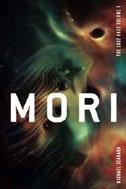
Seagard presents a genre-blending cosmic thriller about a self-destructive man who makes strange discoveries in a sun-dappled, modern-day Los Angeles. When readers first encounter Miles “Mori” Morhart, naked and drinking profusely by a pool in a small California backyard, they already know that, in a month’s time, Mori will be missing and presumed dead. Not only that: He’ll also be the main suspect in the unsolved disappearances of four adults in L.A. between the ages of 25 and 38. Mori doesn’t know any of this yet, though; he came to the West Coast from Austin,
MAY 15, 2024 157 KIRKUS REVIEWS INDIE
A memorable, enticing account of conflicting lovers.
WE, ADULTS
Texas, to do little more than drink “creamy chardonnay” and lots of gin and vodka—and, of course, to smoke such copious amounts of cannabis that he even raises eyebrows at the local dispensary. Before long, the situation becomes clearer as readers learn of Mori’s daughter, whose messages he ignores; his ex-wife, whom he thinks he’s seeing in random bars; and his binge drinking—all symptoms of a life left behind. Put simply, Mori has come to California to drink himself to death, and he’s successfully pursuing this goal until a random voice starts speaking in his head, demanding that he “commune” with him—something Mori is unwilling to do until Lili, the attractive and enigmatic owner of the aforementioned dispensary, offers him a special off-menu preroll that she says could change his life. After just a hit or two, Mori finds himself more open to communing with the voice, which describes itself as an “esotericist” and part of a group who “specialize in spiritual and metaphysical methods.” The voice is investigating the disappearance of a young woman and her daughter, and it believes Mori can help. But readers know that whatever Mori’s about to do could lead to his death—and Lili will be at the center of it all.
This first volume of Seagard’s planned series bites off quite a lot, but never more than it can chew. The protagonist’s self-deprecation and sense of bewilderment—related in real time, carrying readers along with him—make the work feel breezy and approachable, but these character features also allow Seagard to tell a story with some depth. The story provides readers with laughs and suspense in equal measure, while presenting a narrative that tackles alcohol abuse and the state of California in ways that are recognizable but also deftly avoid cliches. Certain picadilloes in the prose soon become grating due to repetition—most notably, the author’s insistence on
beginning many passages of Mori’s narration with the command, “Picture me.” But these moments are intermittent enough that they don’t overwhelm the sense of fun in these pages. Fans of SF and fantasy will find some welcome and familiar elements here, although readers who prefer the most complex and amped-up versions of either genre may find this book’s version a bit unfulfilling. The main emphasis in this novel is on storytelling and characterization, however, both of which unfold in an appealing way. An inventive, humorous adventure into the cosmically esoteric with a flawed narrator whom readers will root for.
We, Adults
Stenson, Peter | Regal House Publishing (298 pp.) | $20.94 paper March 26, 2024 | 9781646034277
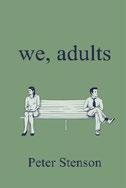
Stenson’s characterdriven novel features a disastrous love triangle. Elliot Svendson is 29 and works at a Talbots store in her hometown of Roseville, Minnesota. She lives with her parents and her 3-year-old son, Jacob. This is not where Elliot wants to be—it’s where she has ended up after catching her husband, college professor Devon Hester, cheating on her with one of his students. A skateboarding teen named Madison “Maddie” Johnson enters the picture. When Elliot first lays eyes on Maddie, she is smitten. Despite some initial reservations about the age gap, the two hit it off, and no public space is exempt from their sexual exploits. Maddie even bonds with young Jacob. Then, Devon shows up in Minnesota unannounced and makes the brash move of taking Jacob to a water park
without Elliot’s permission. Devon is arrested for the act, though all charges wind up being dropped. He’s not the only one who will spend time in jail: After he informs Maddie’s mother about Maddie’s relationship with an adult woman, the wheels of outrage begin turning. The narrative offers different perspectives from different characters. The story begins with Elliot as the protagonist, followed by excerpts from Devon’s memoir, followed by a screenplay written by Maddie, and finally concluding with college admission essays from a much older Jacob. The shifting angles keep the story fresh with new developments always in store; for instance, while Devon may initially appear to be an “insecure man who slunk through life as if eternally misunderstood,” he later becomes much more multifaceted, and even likable. Maddie’s screenplay proves to be more drawn-out than the other material. When Maddie’s parents say things like “Proud of you” after he graduates high school, it’s dull fare. Though such scenes build to later excitement, they make for a slow boil. A memorable, enticing account of conflicting lovers—even if some portions are needlessly prolonged.
Stumbling Stones
Suchman, Bonnie | Black Rose Writing (286 pp.) | $21.95 paper May 9, 2024 | 9781685134105
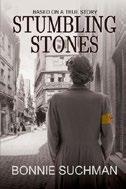
A missing piece of family history is memorialized in Suchman’s historical novel, a tribute to the lives lost during the Holocaust. The book opens with a nonfiction prologue: In 2018, the author and her husband, Bruce, missed their connecting flight through Frankfurt to Washington, D.C. With 12 hours to kill, they explored the city. Bruce’s father, Curtis, fled the region at 17 to escape the Nazis; the couple found a plaque (a stolpersteine, known in English as a stumbling stone) dedicated to Emma and Selma Heppenheimer, Bruce’s great-grandmother and great-aunt. But missing from the stone was the name of
KIRKUS REVIEWS 158 MAY 15, 2024 INDIE
another great aunt: Alice. It is here that Suchman moves into the novel proper, using her extensive research into Alice’s life to fictionalize her story. Beginning in 1920 and ending during World War II, Suchman’s narrative covers more than two decades as she imagines how this Jewish woman endured her experiences as Nazi ideology and politics took hold of Germany and controlled and suppressed so many aspects of her life. Readers first meet Alice in Nuremberg on the eve of her wedding to Ludwig Adler. A graduate of the Nuremberg Arts and Crafts School with dreams of opening her own fashion studio, Alice begins an apprenticeship in a handbag factory, and it is here that her first true experiences with antisemitism begin. Suchman writes of Alice’s experiences in a powerful way; readers see a young woman come of age and find her place in the world, unable to find firm footing because of the events taking place around her. Short, emphatic statements, such as Alice’s reaction to discovering the identity of a co-worker leaving derogatory notes for her (“surely, he couldn’t hate her if he actually knew her”), emphasize the horrific dehumanization of ordinary people just for being Jewish. Extremely readable with close attention paid to both wider historical and intimate family details, Suchman’s tale serves as a monument in words.
A somber and important novel highlighting the experiences of German Jewish women during the Holocaust.
You Can Do Hard Things
Sutton, Dana | Illus. by Nicholas Donovan Mueller | FriesenPress (28 pp.)
$21.99 | $10.99 paper | Feb. 1, 2024
9781039185296 | 9781039185289 paper
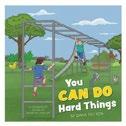
In Sutton’s debut picture book, a mother advises her children on how to face various difficulties.
“Lift me higher, Mama. / No, baby girl, you don’t need my help. / But it’s hard, Mama. / Yes, but you CAN DO hard things.” This exchange sums up the premise of this story of a parent who listens to her children’s problems and offers the support
they need to find their own way. The fears grow more complex as the children age, with elementary school friend disagreements, high school exams, young-adult dating, and uncertainties of expectant parenthood. On each occasion, a message is repeated in distinctive yellow text: “You CAN DO hard things.” The story ends with the poignant realization that one day children will face the loss of a parent. Sutton writes in a straightforward style, expounding on the mother’s responses in a way that suggests that the book is aimed more at parents than young children. Mueller’s full-color illustrations effectively portray characters’ emotion and back the unfolding story. A particularly beautiful snowy scene perfectly captures the notion of parents watching over their children. The main characters are depicted with pale skin, and background figures have a range of skin tones.
A heartfelt picture book that will stay with readers through the years.
Tsarina Scholar Woodsman Thief
Swanson, Cidney | Self (412 pp.) $17.95 paper | Jan. 27, 2024 | 9798876619655

This fairy-tale-like story follows a pair of down-ontheir-luck siblings as they try to outsmart a villainous duke.
In this book set in the fantasy world of Talisfarne (which sometimes resembles a bygone Russia), Katrin and her younger brother, Cyril, live by themselves on a small island. They were orphaned after their mother died of an illness and their father was murdered by marauders who broke the government’s peace treaty not long after. Magic, or “magia,” abounds—alongside plenty of enchanted creatures like fey and even sirens: “Her silver tail [splashed] a shower of dazzling brightness so that Cyril felt he’d been sprinkled with the shards of fallen stars.” After losing their house (and everything in it) in a contest, Cyril makes a deal with Ilya, the contest’s winner: Deliver a mysterious package to Ilya’s
father, and Ilya will return the property to Katrin. This seemingly simple task leads to wild twists and turns. Cyril winds up in jail, and Katrin discovers the power behind her exceptionally beautiful singing voice. Along the way, readers meet a colorful cast, including the Princess Astrid, Diogenes the woodsman, and an evil duke. Stuffed with traditional fairy-tale references, such as clever disguises and an old woman with mysterious gifts, the novel tackles multiple storylines and characters. Swanson ably juggles everything and everyone, delivering both an intriguing plot and lyrical prose that may remind some readers of Erin Morgenstern’s The Starless Sea, from 2019. (“Cyril huffed and grumbled and shrugged into his cloak. His gait looked stiffer than usual as he departed the cottage for tutors or prayers or whatever it was he did these days between sun-up and midnight.”) The author conjures a vivid world where her characters discover themselves in endlessly surprising ways, melding ancient folklore with politics and enchantment. A charming tale brimming with magic, beauty, action, and memorable characters.
Hazardous Lies
Wallace, Stephen J. | River Grove Books (384 pp.) | $19.50 paper March 22, 2024 | 9781632997937
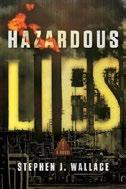
A government inspector faces down a corporate coverup in Wallace’s debut thriller. Former mechanical engineer Jon Barrett is still reeling from a deadly accident that cost him his job—an accident that his bosses pinned on him. Luckily, he’s found work with a new industrial safety program for the Department of the Interior, investigating the same sorts of accidents as the one that still haunts his memory. When an explosion occurs at the Chemtrifuge Chemicals plant in Charleston, West Virginia, Jon is dispatched to figure out what went wrong. His mission is narrowly constrained: He
MAY 15, 2024 159 KIRKUS REVIEWS INDIE
must show that he’s doing his job in order to keep the program funded, but he can’t do anything that will rile any power players. He arrives at the plant just as the employees are attempting to squash all information about the source of the explosion—and they are not at all pleased to have someone from Washington poking around. Workers are dead, however, and one man—a senator’s son—is missing, meaning this isn’t the kind of case that can be swept under the rug. As the media and environmentalists swarm, Jon finds himself in a bind: Allowing the problem to go unaddressed could lead to danger at other plants, increasing the risk of more accidents like the one he can’t stop thinking about. But exposing the truth could cost him his job…and maybe even his life. Wallace offers rich details about the inner workings of a chemical plant and the many personalities that exist within its orbit, which keeps even the more technical material from feeling dry. Here he describes Cain Quinn, a senior adviser at Chemtrifuge and one of Jon’s primary antagonists: “It was not about the money, he had plenty of that. And it was not just about winning—it was about destroying. He did not want Chemtrifuge to simply exist alongside other competitors.…He wanted to destroy all the company’s competitors, and everyone who had anything to do with them.” Readers will not want to put this one down.
An immersive and timely industrial-accident thriller.
For Love of the Broken Body: A Spiritual Memoir
Walsh, Julia | Monkfish Book
Publishing (256 pp.) | $22.99 paper March 26, 2024 | 9781958972274

A creative, involving introduction to the power of community care.
KINDNESS ROCKS
In this memoir, a young woman’s journey to join a Franciscan community includes spiritual introspection and physical healing from a catastrophic fall.
Julia Walsh felt a spiritual call from a very young age as one of four children
raised Catholic while living on a farm in Iowa. While attending Iowa’s Loras College, a Catholic liberal arts school, she tried to reconcile her attraction to men with her desire to become a nun. During this time, she connected with the Franciscan Sisters of Perpetual Adoration in La Crosse, Wisconsin. She continued to struggle with her competing desires during a year spent in the Jesuit Volunteer Corps, living simply in an intentional community with five other women in Sacramento, serving the poor and praying together. At 24, she moved into the sisterhood’s house in La Crosse as part of a trial period. Meditation and reflection during a silent retreat solidified her desire to become a Franciscan sister, and she became a novice. During a brief visit to her childhood farm, an accidental fall off a 20-foot cliff broke many bones in her face, requiring extensive reconstructive surgery: “No matter how I heal, I’m pretty sure that from now on, I will always feel broken.” She continued her canonical year and joyfully joined the FSPA as her spiritual home. Throughout this remembrance, Walsh effectively shares details of her spiritual journey and her grueling physical rehabilitation. Along the way, she ably dispels some “nun-ish stereotypes,” often informed by Hollywood depictions in the films The Sound of Music and Sister Act : “None of these realities, I am learning, are actually true.” The memoir also effectively shows how a spirited young woman, sporting a tattoo that symbolizes how life among the sisters changed her, found fulfillment in choosing a life in a religious community: “The roots, the depth, the way that this form of religious life means I’m now in a beautiful web of connection, tradition. I’m tangled, I’m caught. I’m stuck. And I’m actually glad.”
A modern Catholic nun insightfully details coming to a life of wholehearted service, prayer, and community.
Kindness Rocks
Webster, Sheryl | Illus. by Robert García Yeehoo Press (40 pp.) | $18.99 | March 5, 2024 | 9781953458636

Johnny Heart the lion falls on hard times after a brief stint as a rock star—and discovers something else that beats the limelight. Fat Cat (a skinny cheetah) sells talented lion singer Johnny on a life of fame and fortune, but “as his shows got bigger, everyone seemed so much further away.” He tours an animal-filled world (though the Statue of Liberty is still human) and sings in the spotlight each night, but Johnny is overworked and underappreciated. His voice gives out, and Fat Cat unceremoniously drops him from the label. Busky Soul the Bear, carrying a handkerchief knapsack, welcomes Johnny to a circle of animal friends who have hurt their paws or been bullied by wolves (a missed opportunity to present wolves in a positive light). A smiling Mary Monkey, a volunteer, offers food. Johnny brightens. He realizes he can make others happy in different ways. He becomes a volunteer as well, presumably because volunteers have helped house, feed, and cheer him. His voice returns, and Fat Cat wants to make money from his singing again, but instead Johnny gives benefit concerts at a treehouse shelter. Webster’s text provides a happy-ending fable of homelessness and mutual aid for young children and shows that even talented, valuable people may experience housing insecurity. García’s digital illustrations in orange and blue tones are economical, warm, and dynamic, with rounded shapes and shadowed silhouettes providing a visual pop. A creative, involving introduction to the power of community care.
KIRKUS REVIEWS 160 MAY 15, 2024 INDIE
Best Indie Books of May

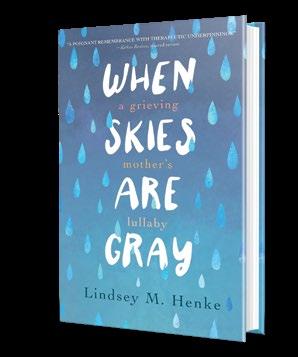

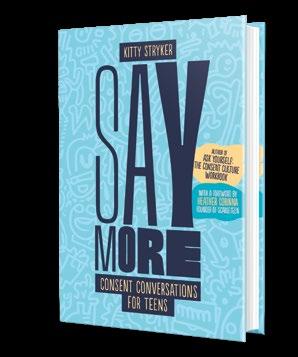



BOOKLIST // INDIE
2 3 4 5 6 1 Am I Too Old To Save the Planet? By Lawrence MacDonald An energetic and upbeat action plan to help boomers address climate change issues. 2 The Airline Transition Manual By Richard Swindell, Jolanda Witvliet & Andrew Ross A readable and comprehensive guide to flying high as an airline pilot. 3 When Skies Are Gray By Lindsey
Henke A poignant remembrance with therapeutic underpinnings. 4 Say More By Kitty Stryker An engaging, inclusive, and informative guide to a crucial topic. 5 Falcon’s Favor By Dana Fraedrich A fun-filled romantic steampunk story that returning readers will enjoy. 6 Inflamed By Anne E. Belden & Paul Gullixson A harrowing saga that pits corporate pusillanimity against dogged courage under the most difficult circumstances. For more book lists, visit Kirkus online. MAY 15, 2024 161 KIRKUS REVIEWS
M.
Diverse Books for Diverse Readers




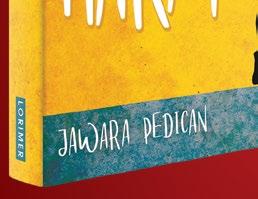


“…does a wonderful job of normalizing opening up and using counseling services, especially for boys and young men who often feel that they have to bottle up their emotions. A sincere, inspiring look at dealing with and overcoming self-doubt...”
— Kirkus Reviews
“A potent message about the mental toll of elite sports and the value of playing for love of the game will resonate with teens. Recommended for high school libraries.”
— School Library Journal
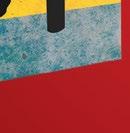
“A laugh-out-loud hi-lo gay romantic comedy… Highly recommended for hi-lo readers who loved Heartstopper.”
— * starred review, School Library Journal
“A sweet queer love story unfolds on a train… cute banter between the boys will keep readers engaged as the sparks fly… An adorable romance with strong coming-ofage elements.”
— Kirkus Reviews

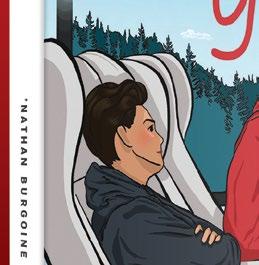
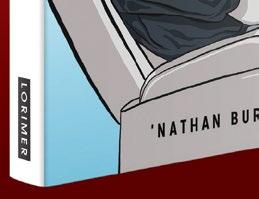



The
Paperback 978-1-4594-1715-1
$14.99 Stuck
Paperback 978-1-4594-1720-5 | $14.99 Made possible with the support of Ontario Creates Distributed by Published by
Hoop and the Harm
|
With You





































































 Liane Moriarty
Liane Moriarty




































































 ERIC LIEBETRAU
ERIC LIEBETRAU










































































































































































































 Kirkus Star
Kirkus Star





























































































 By Samuel Miller
By Samuel Miller
































 Illustration by Eric Scott Anderson
CHAYA SCHECHNER
Illustration by Eric Scott Anderson
CHAYA SCHECHNER


























































